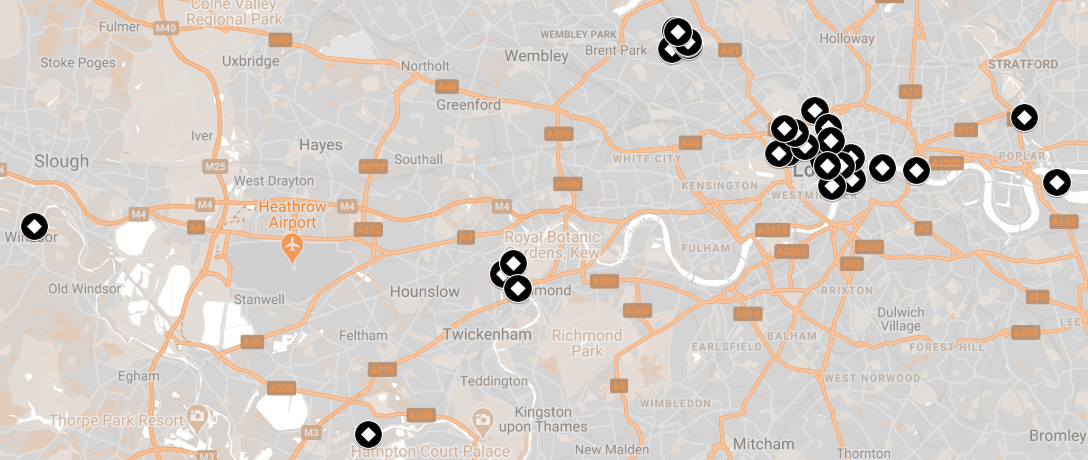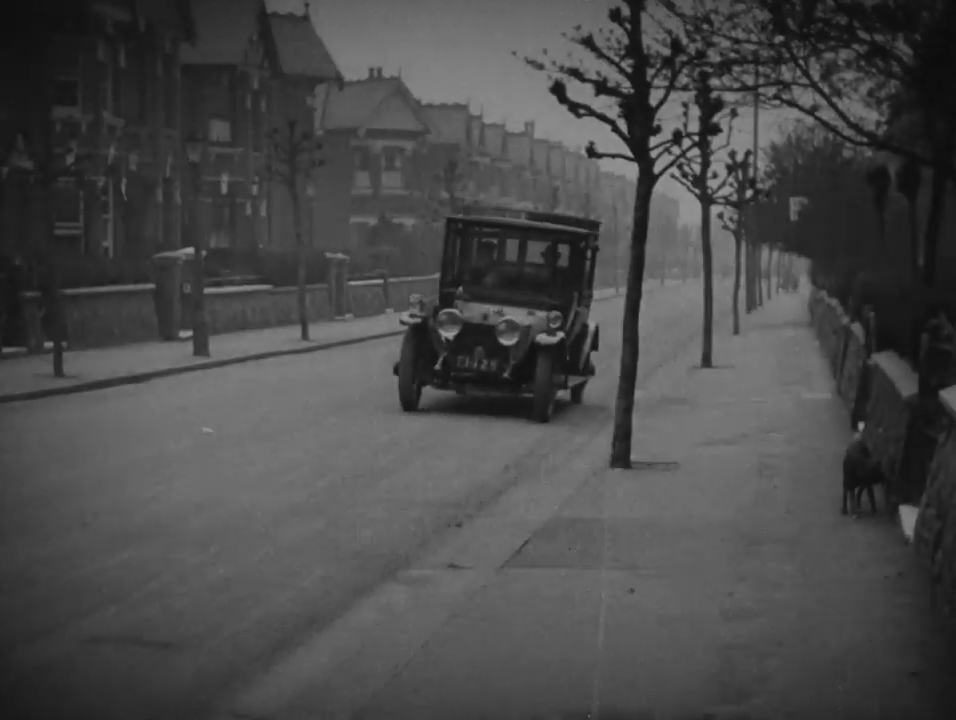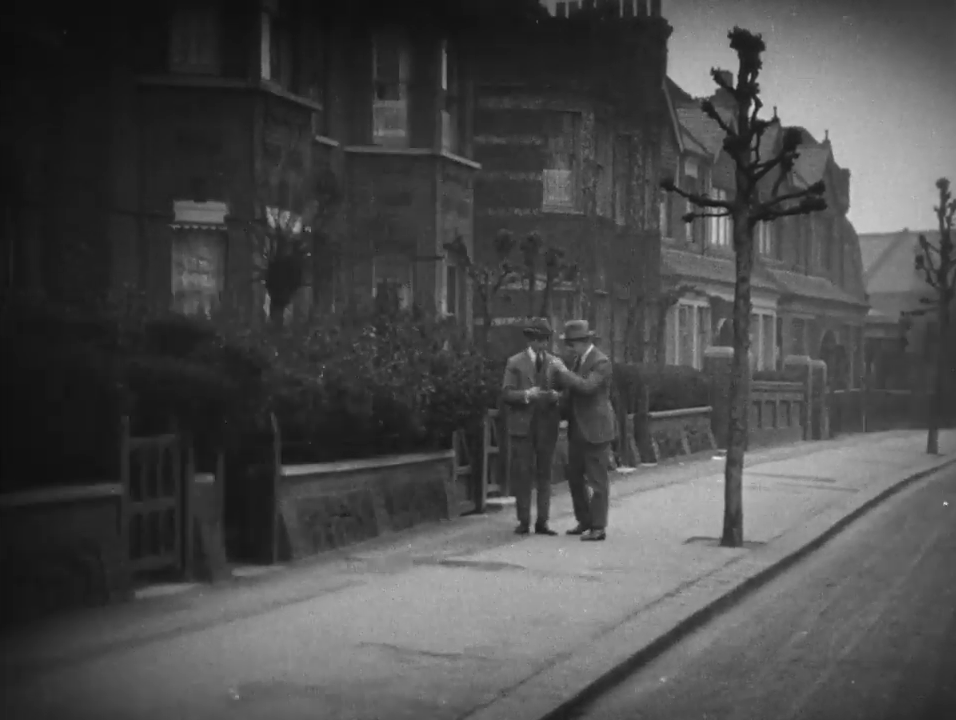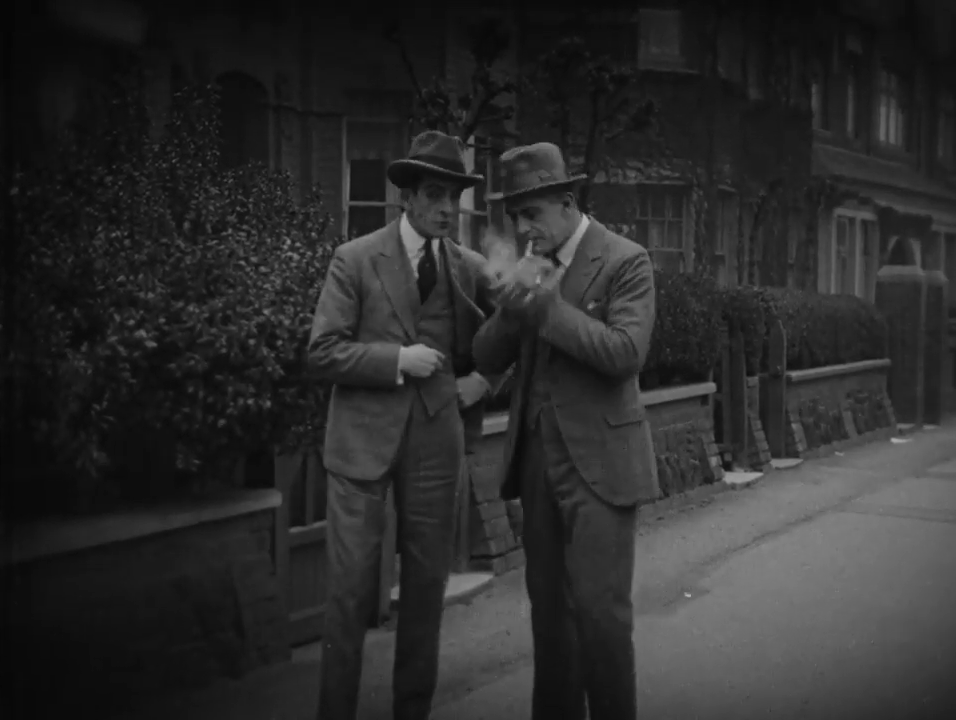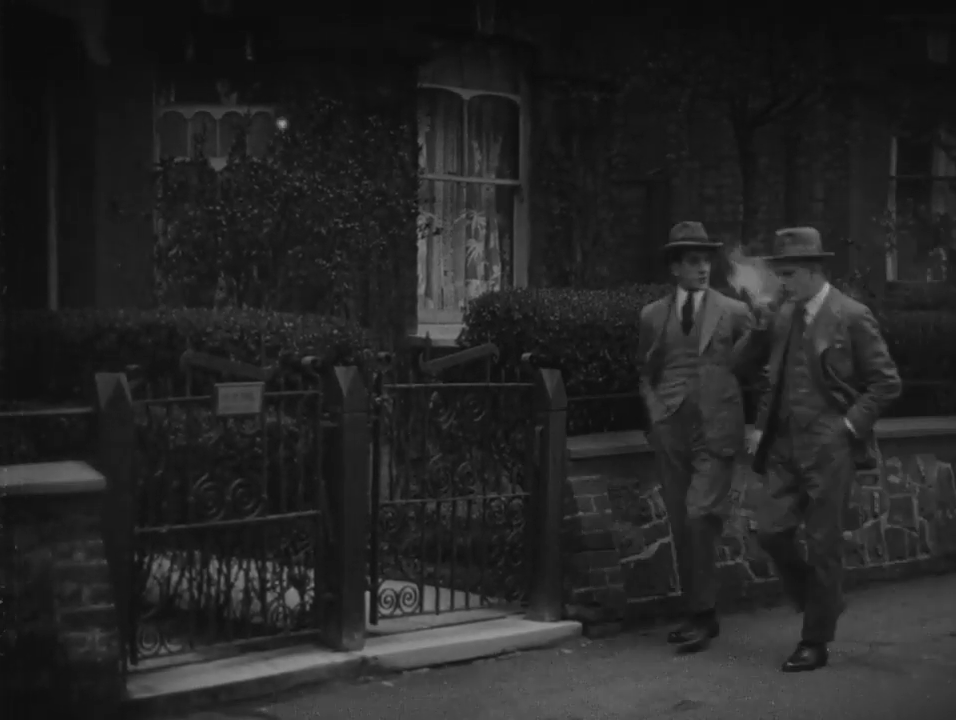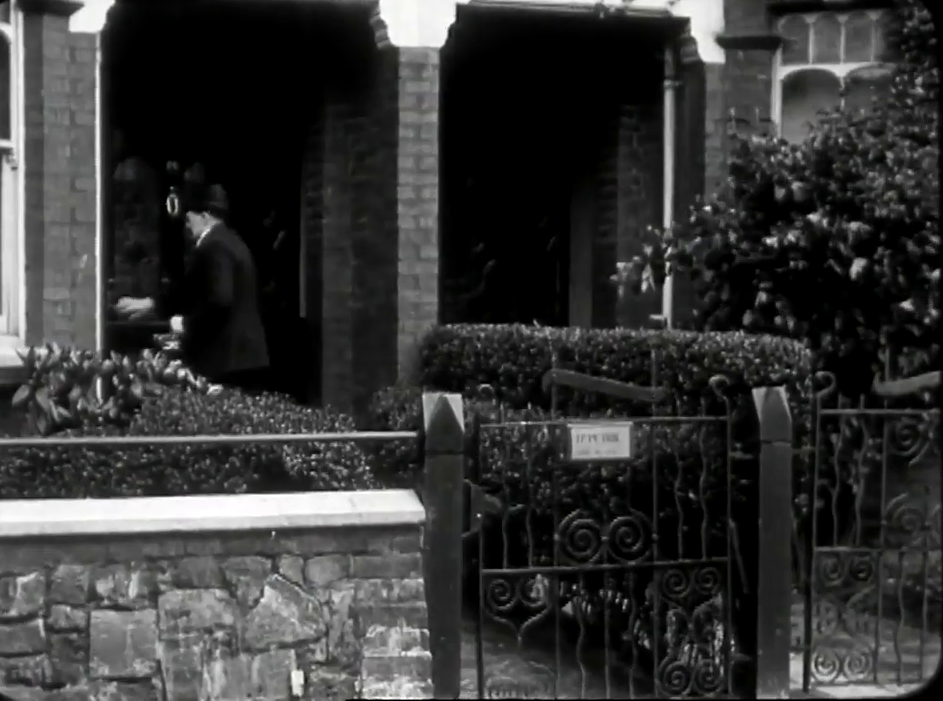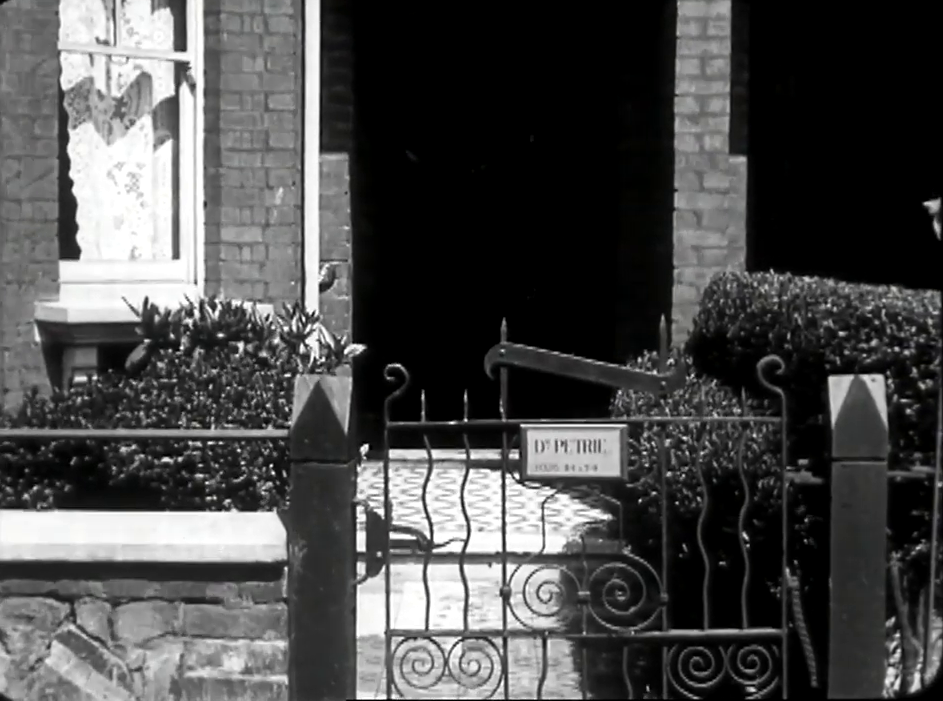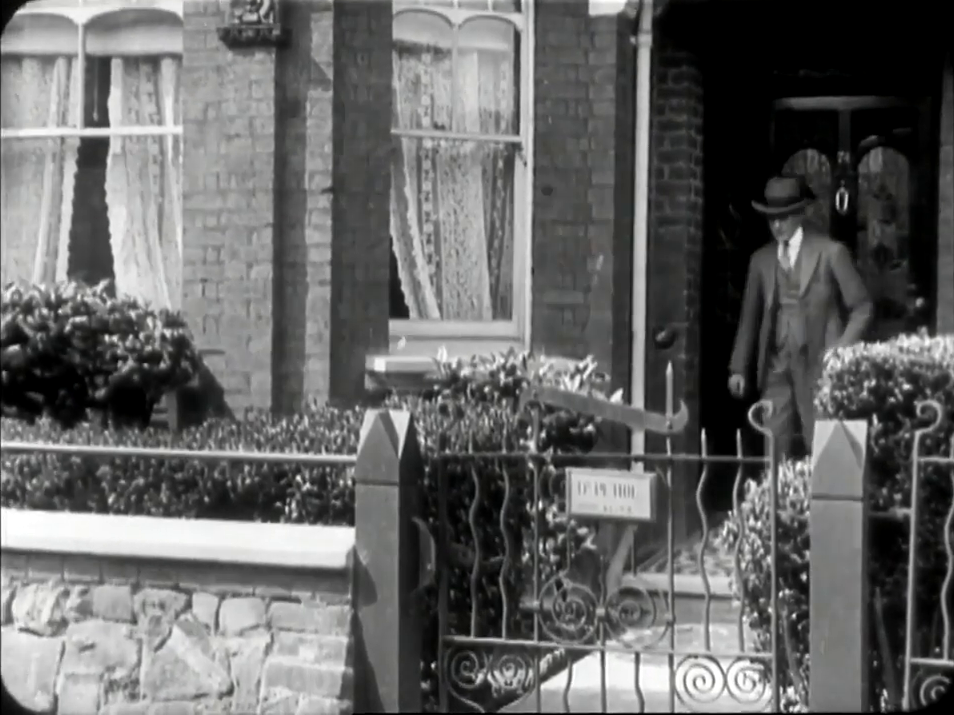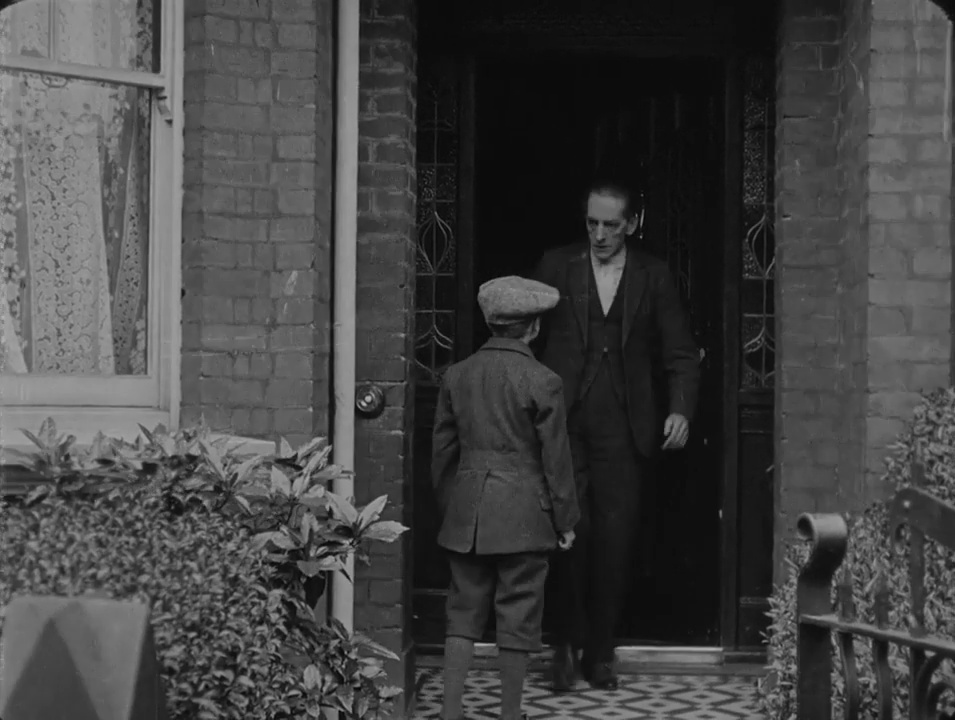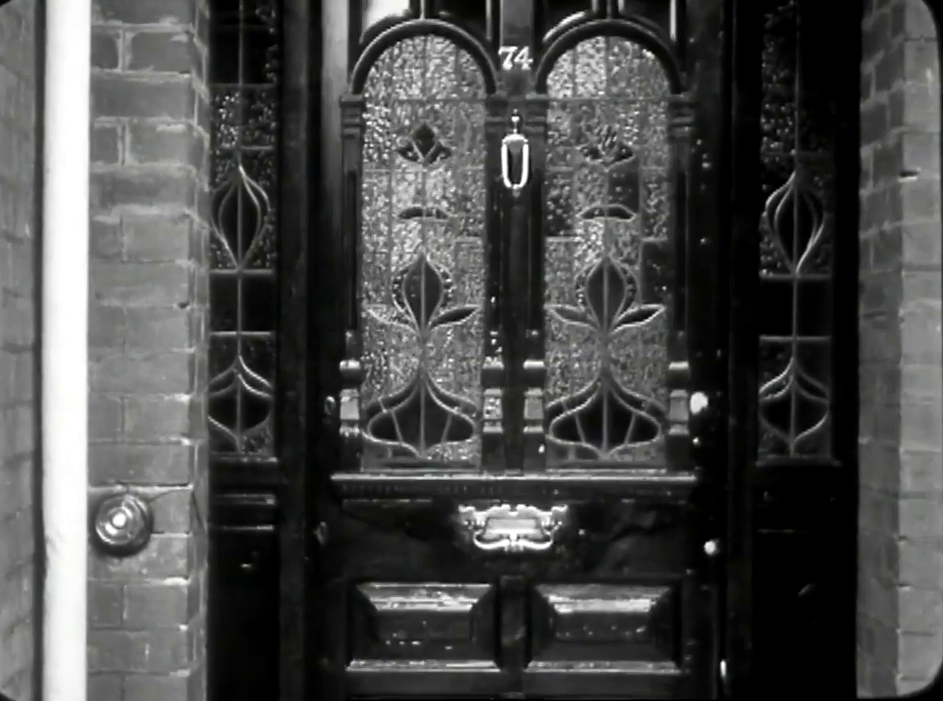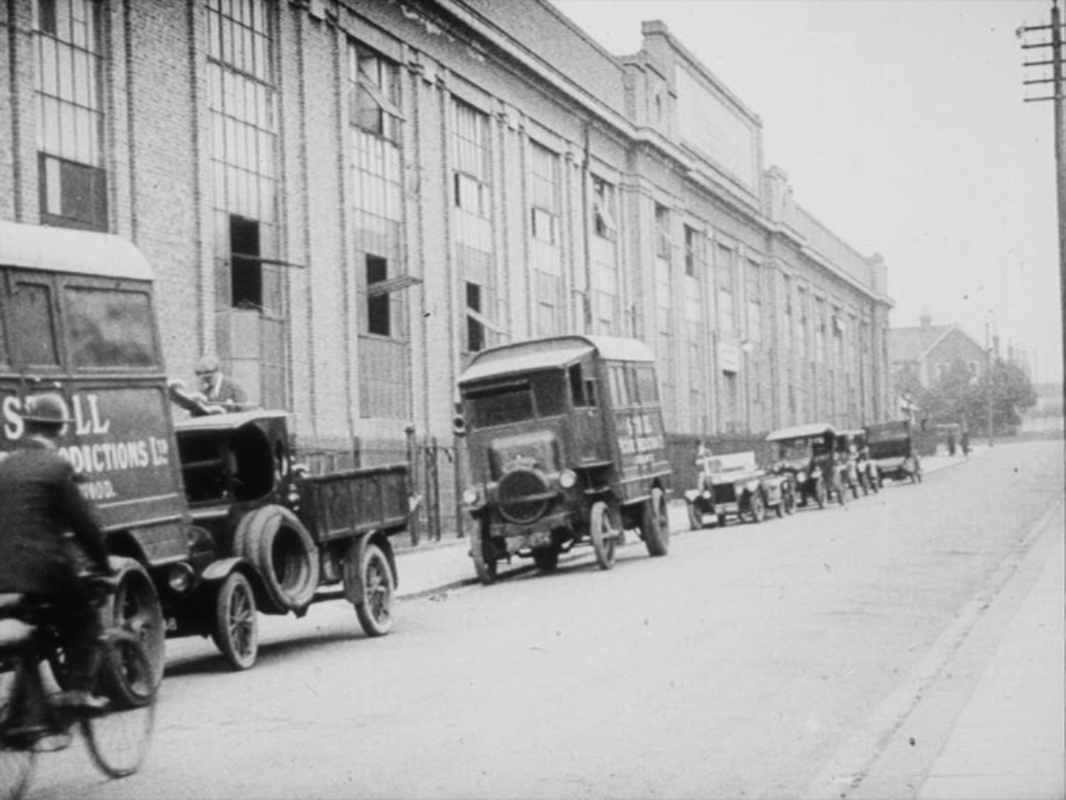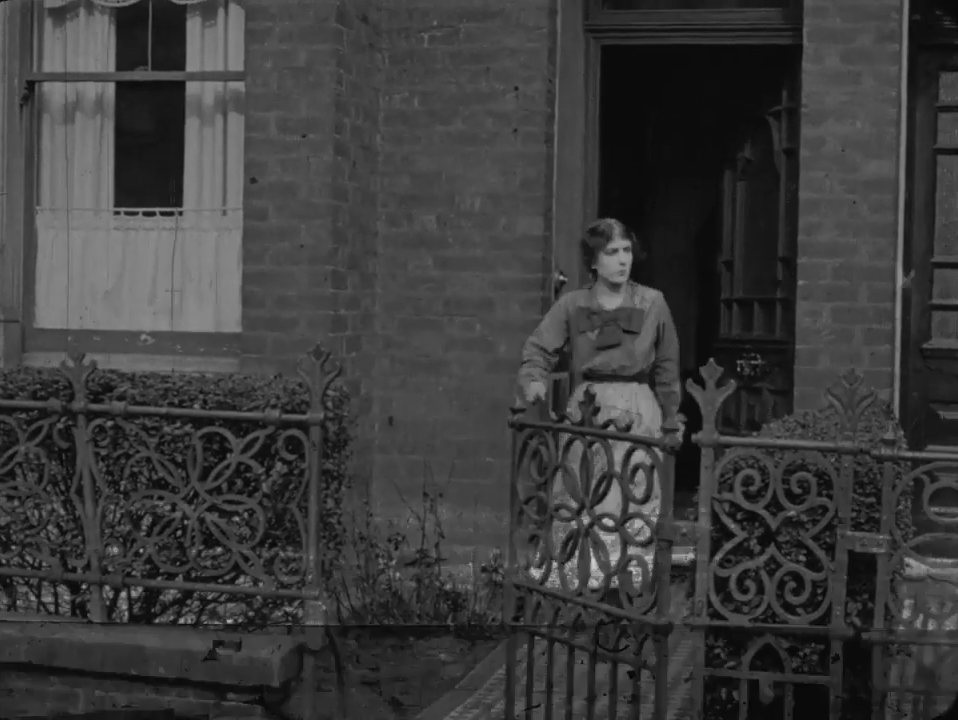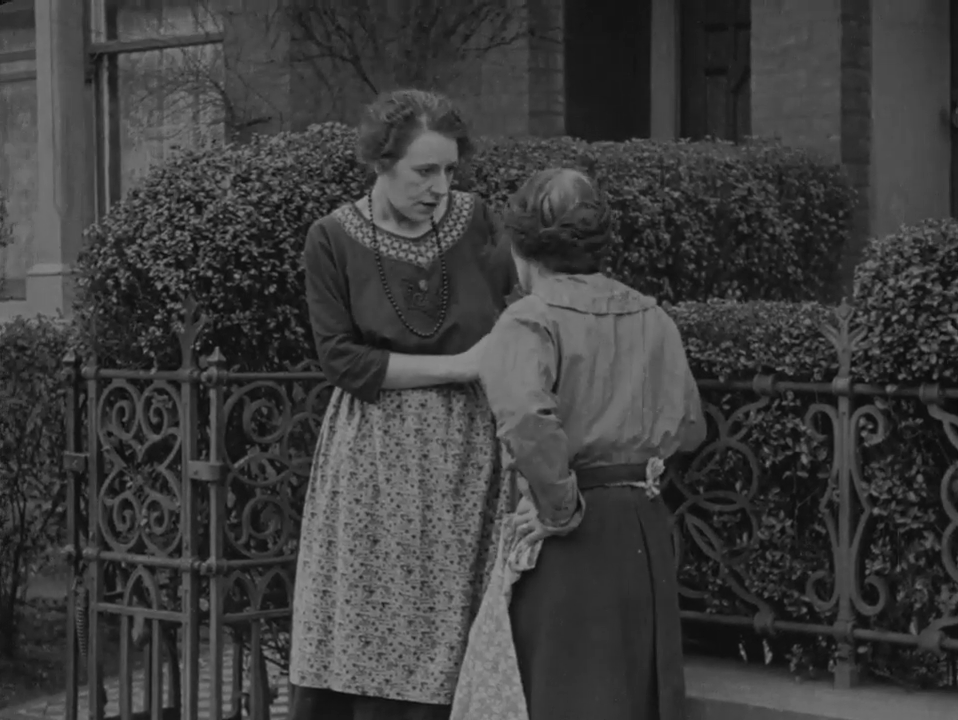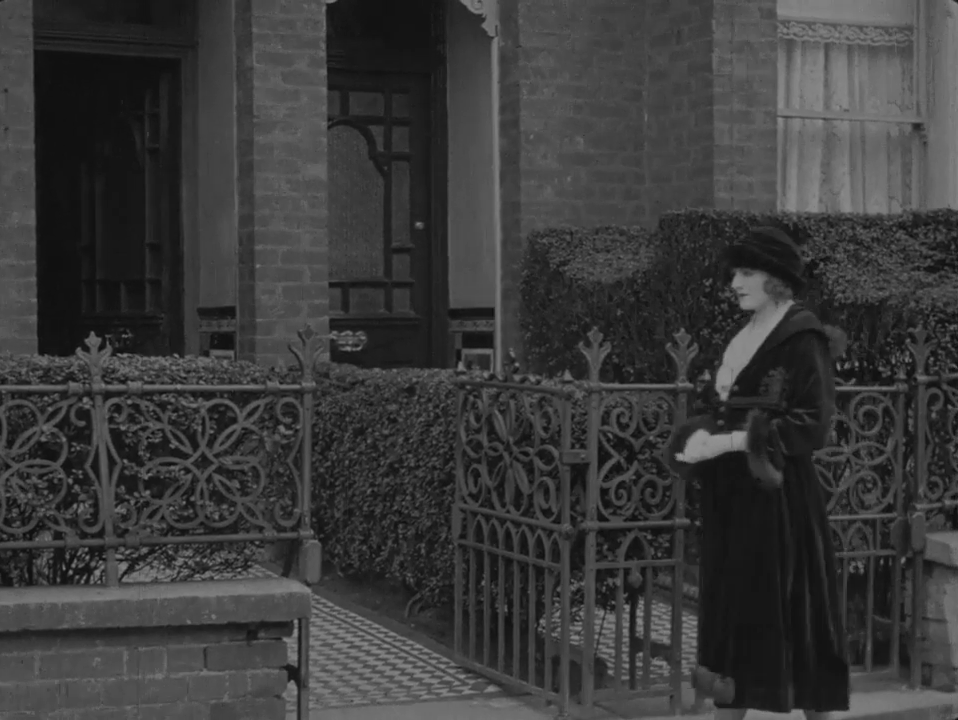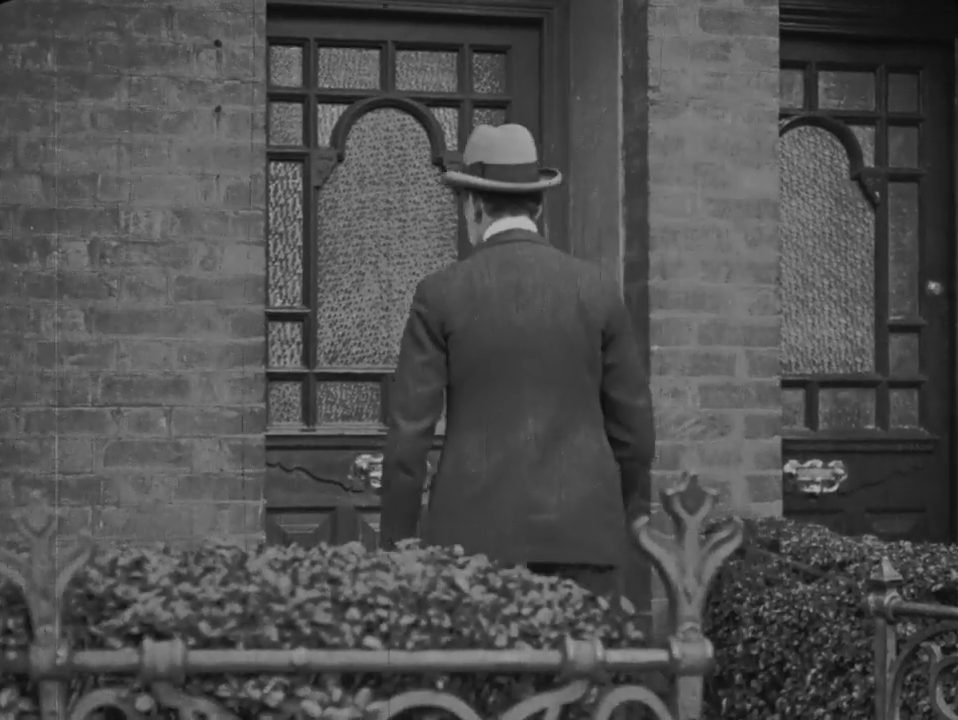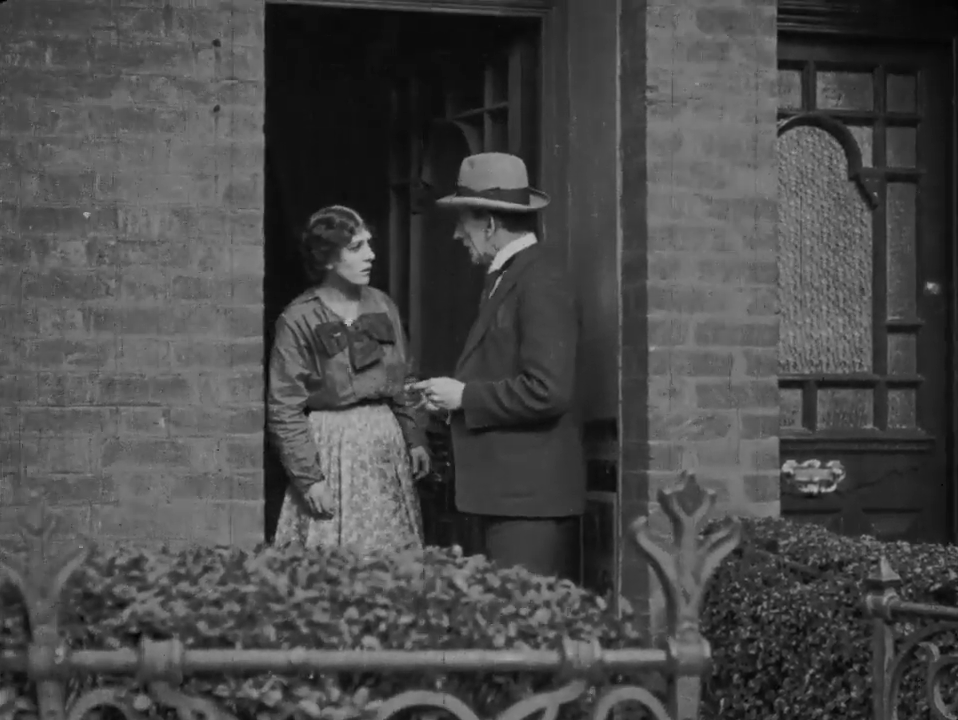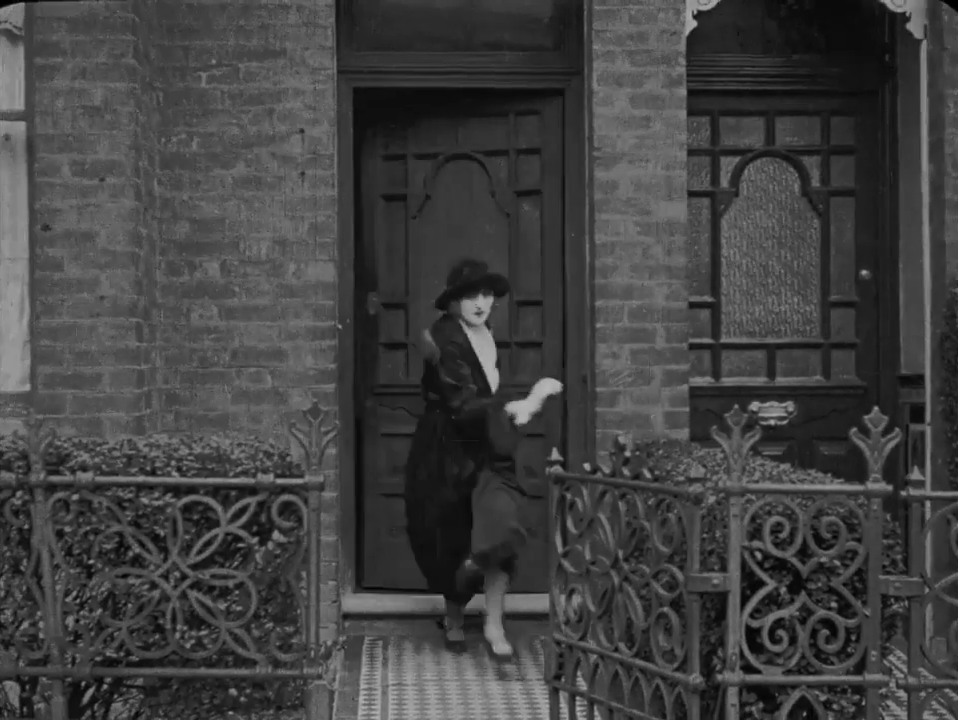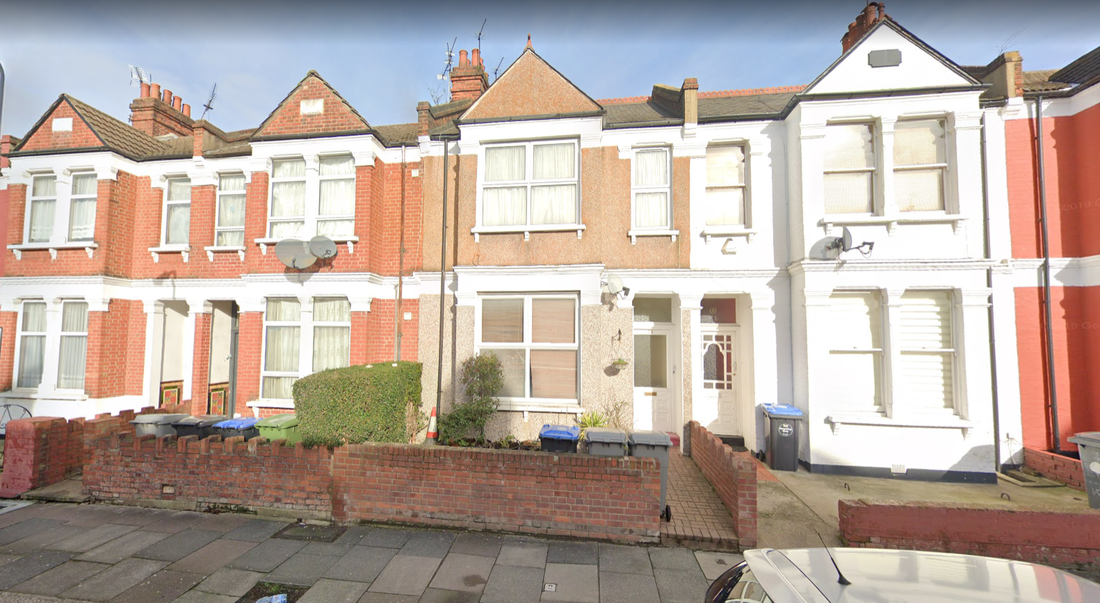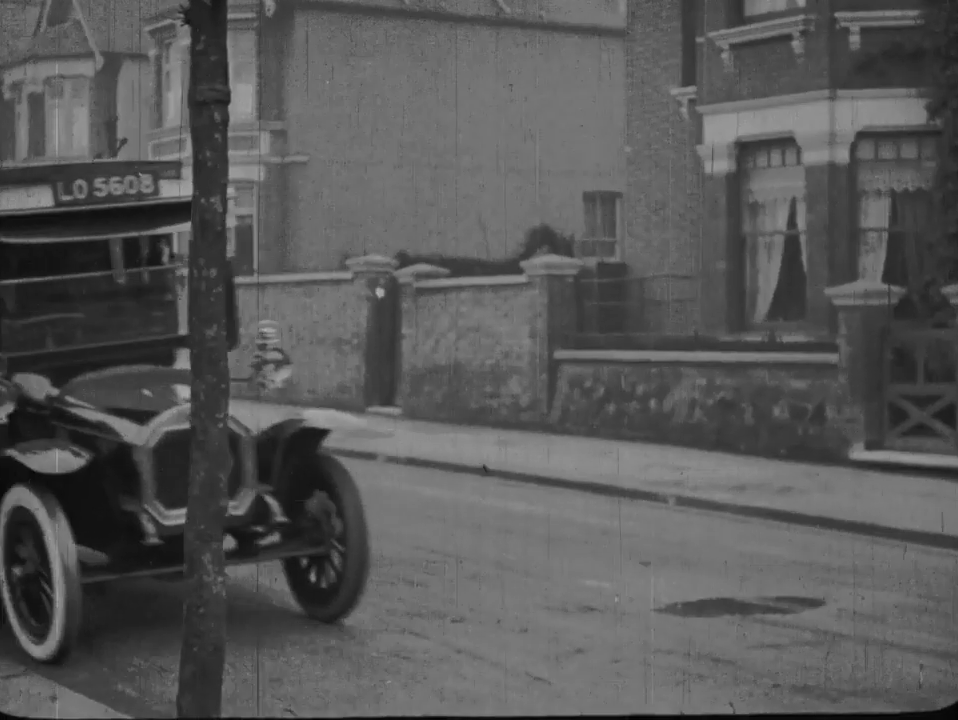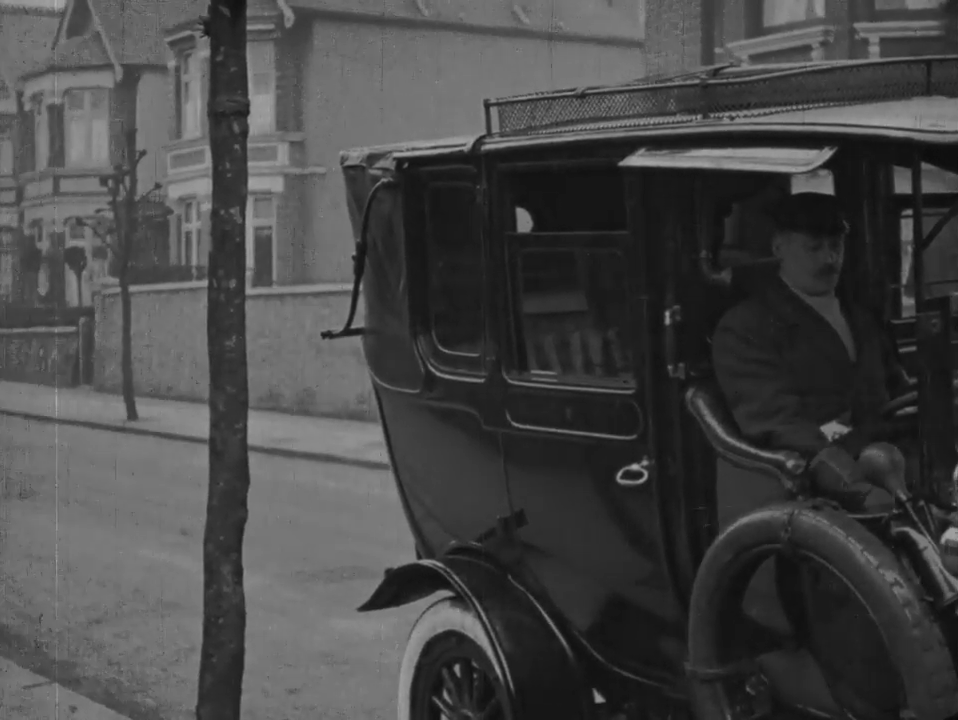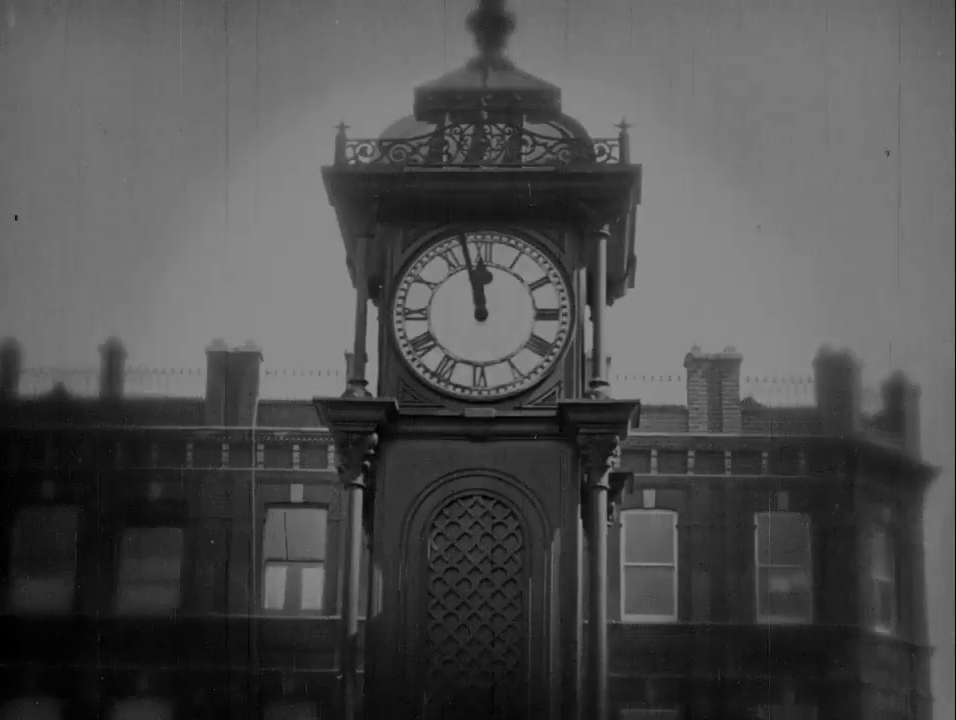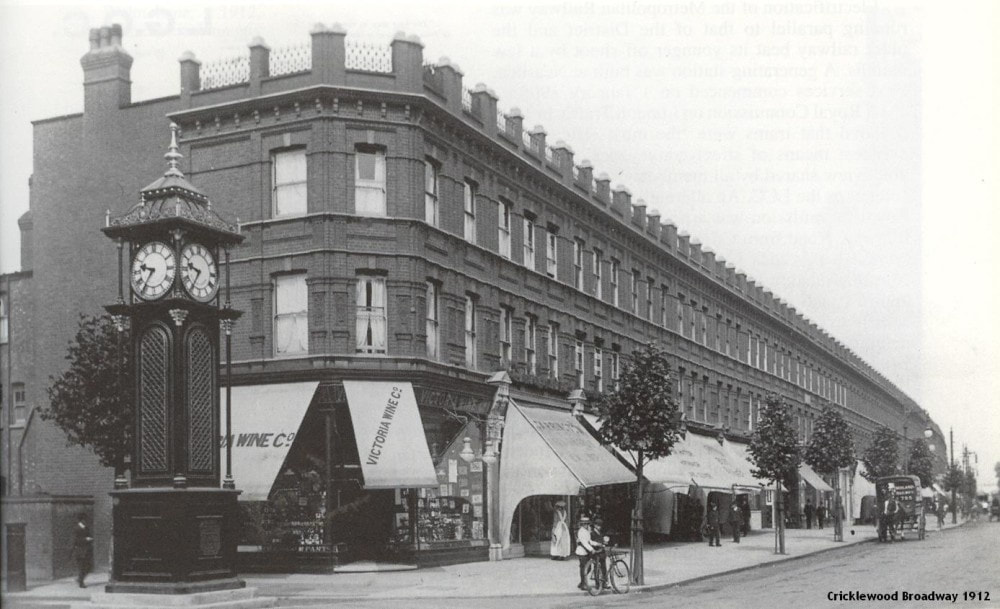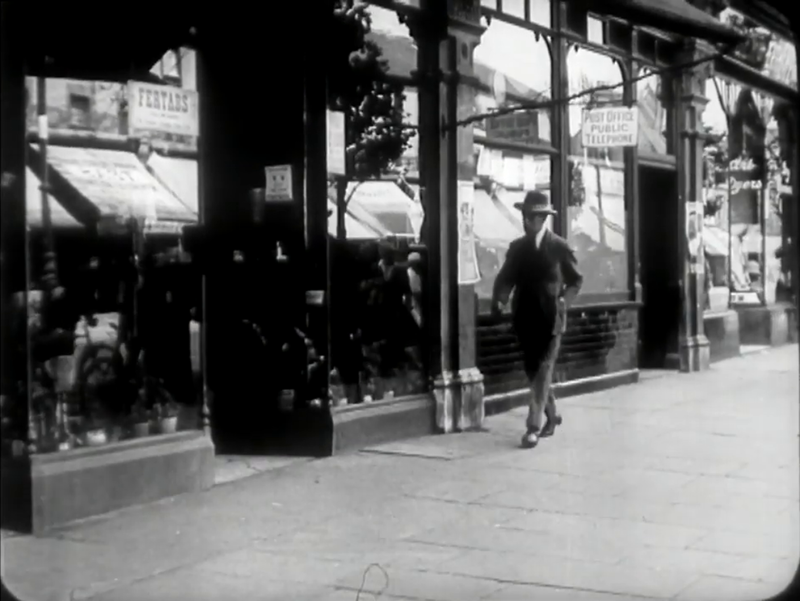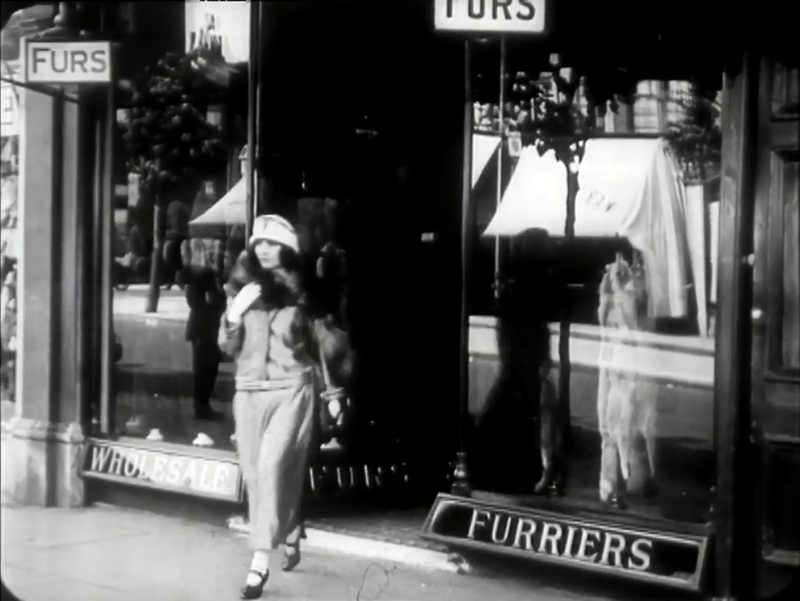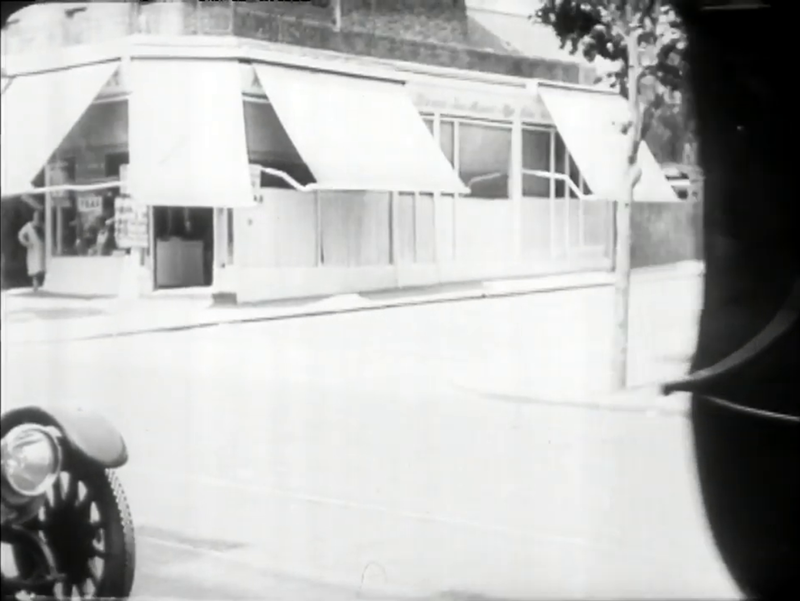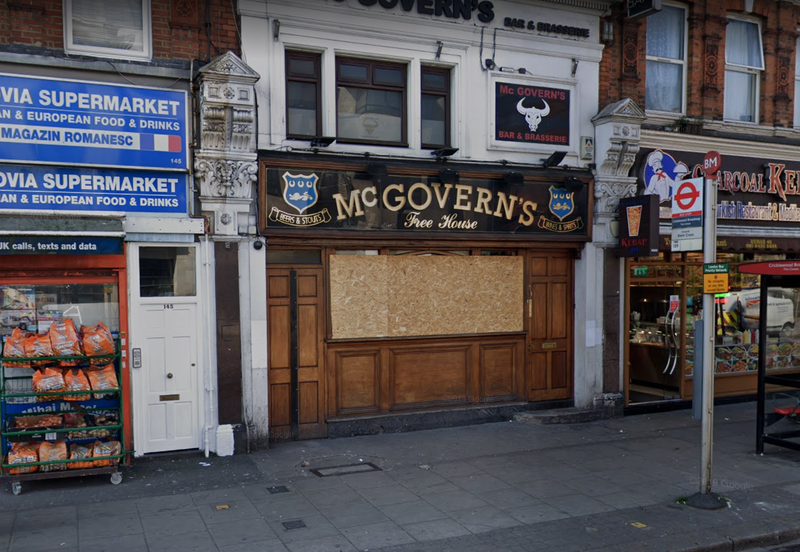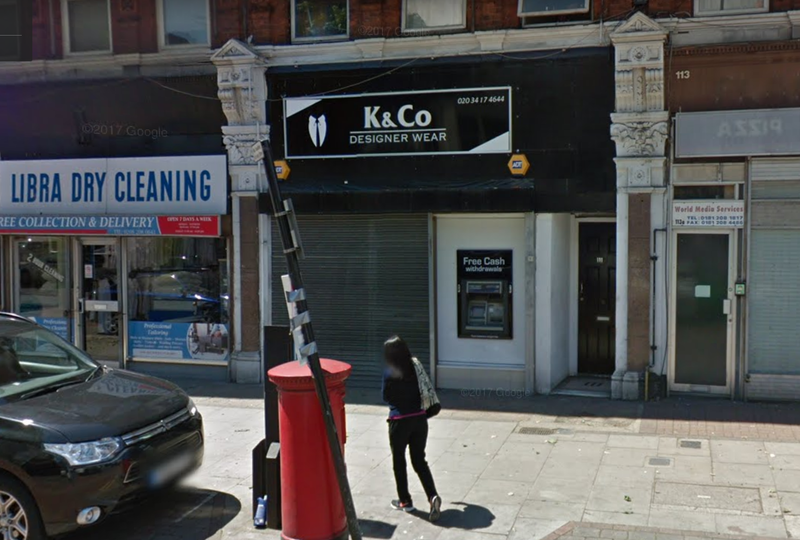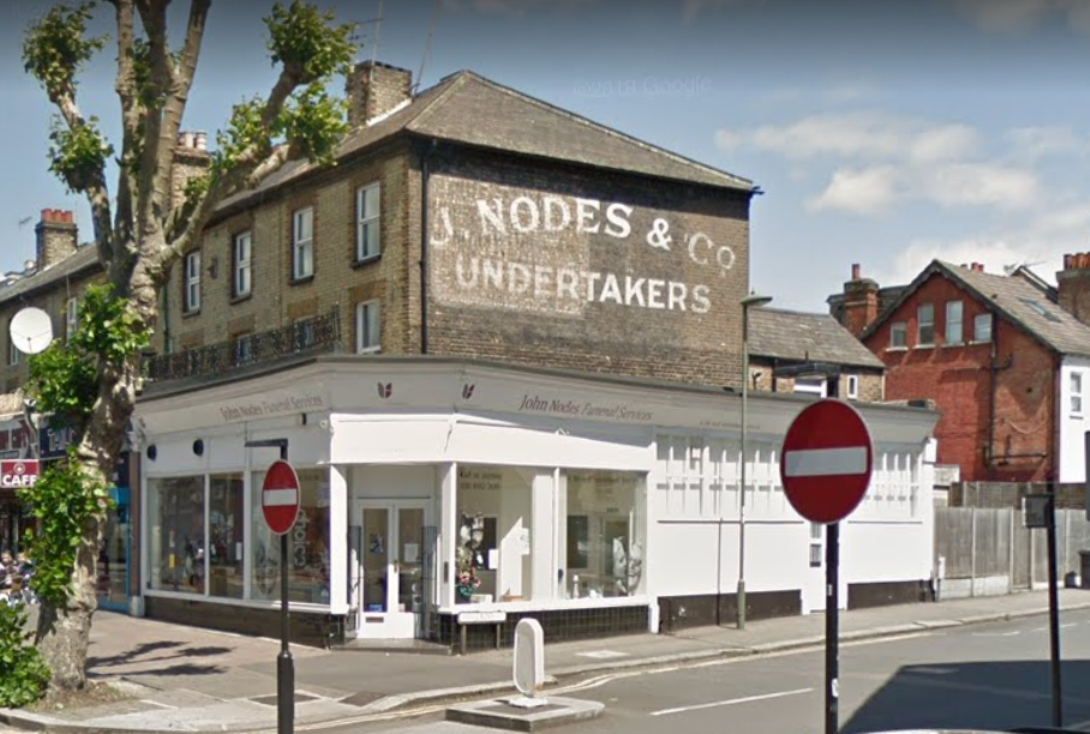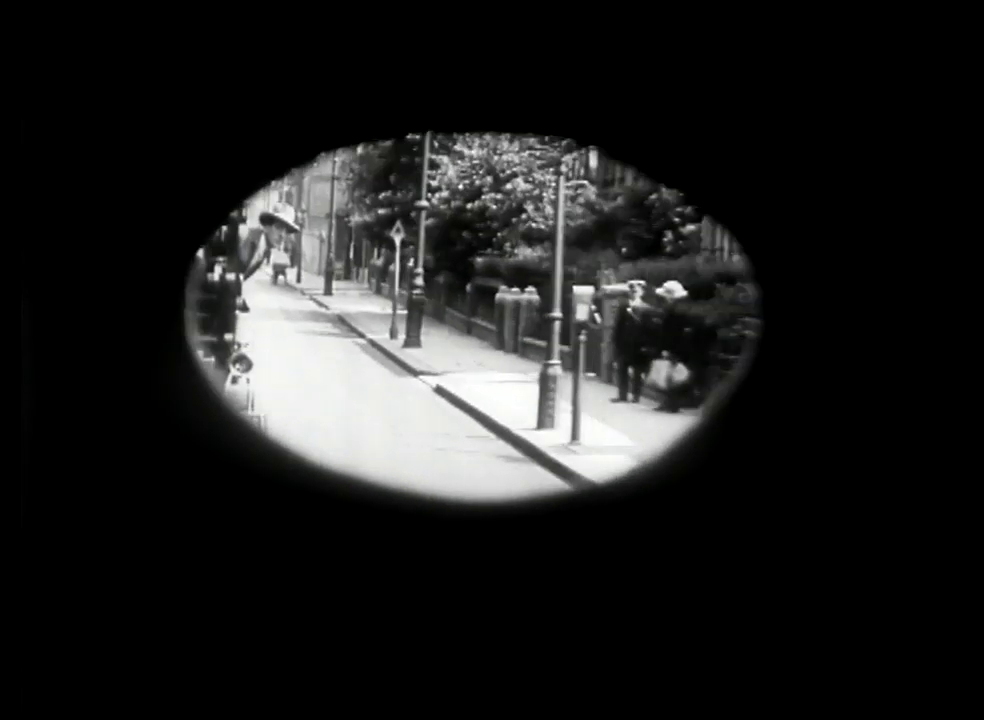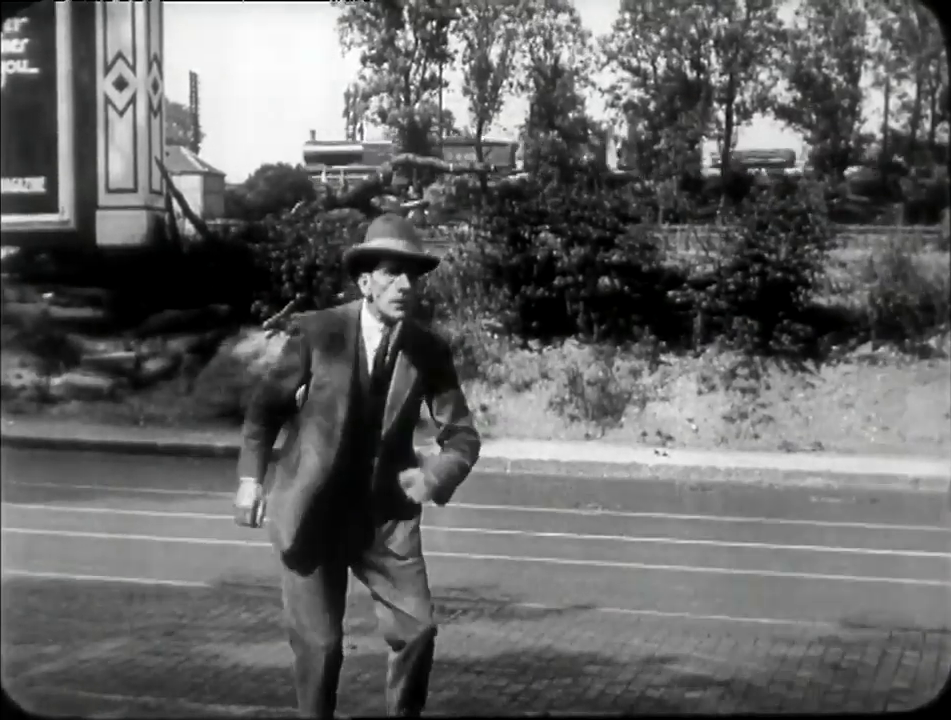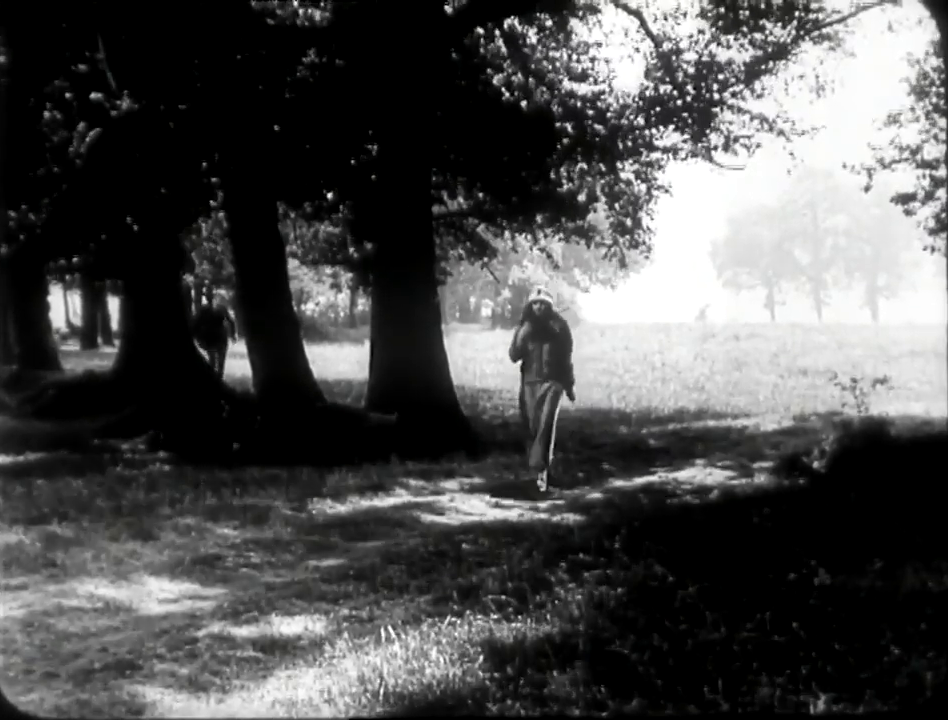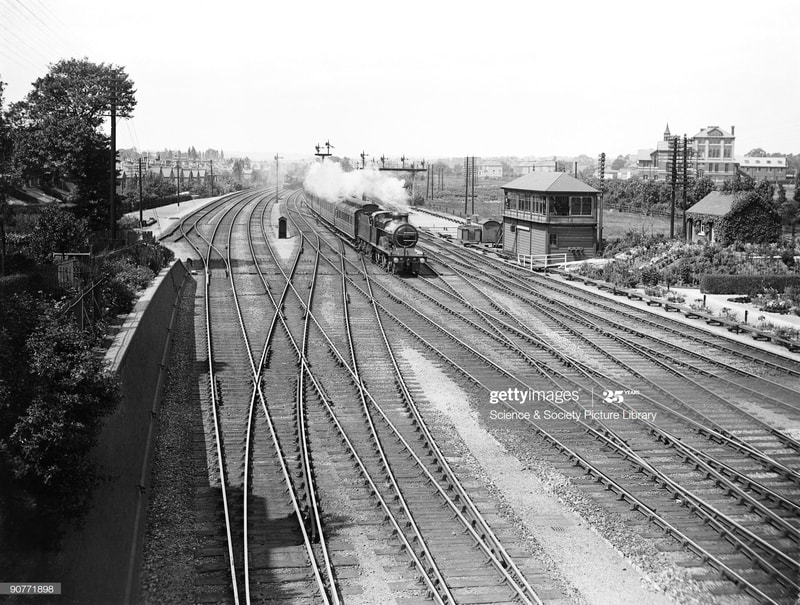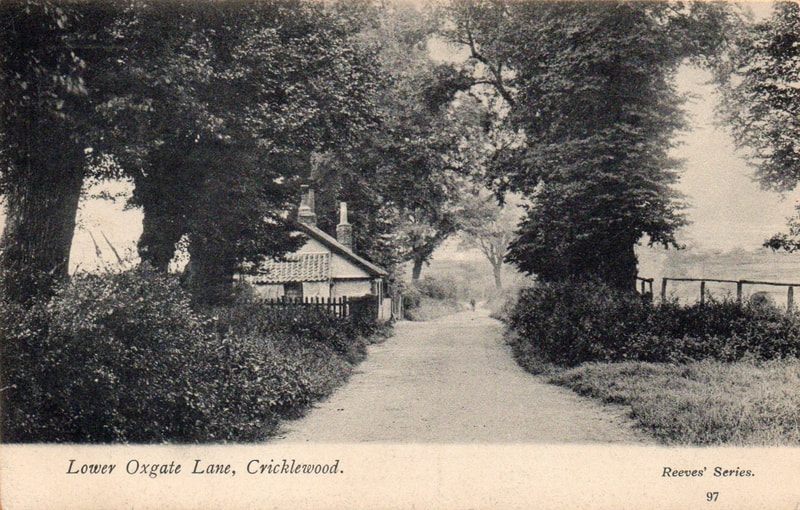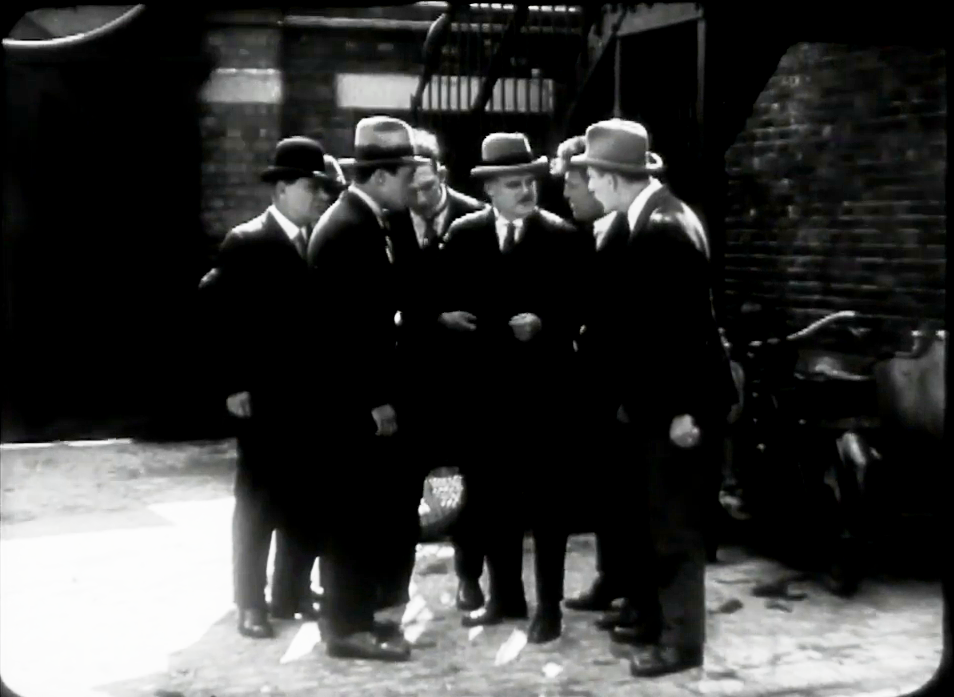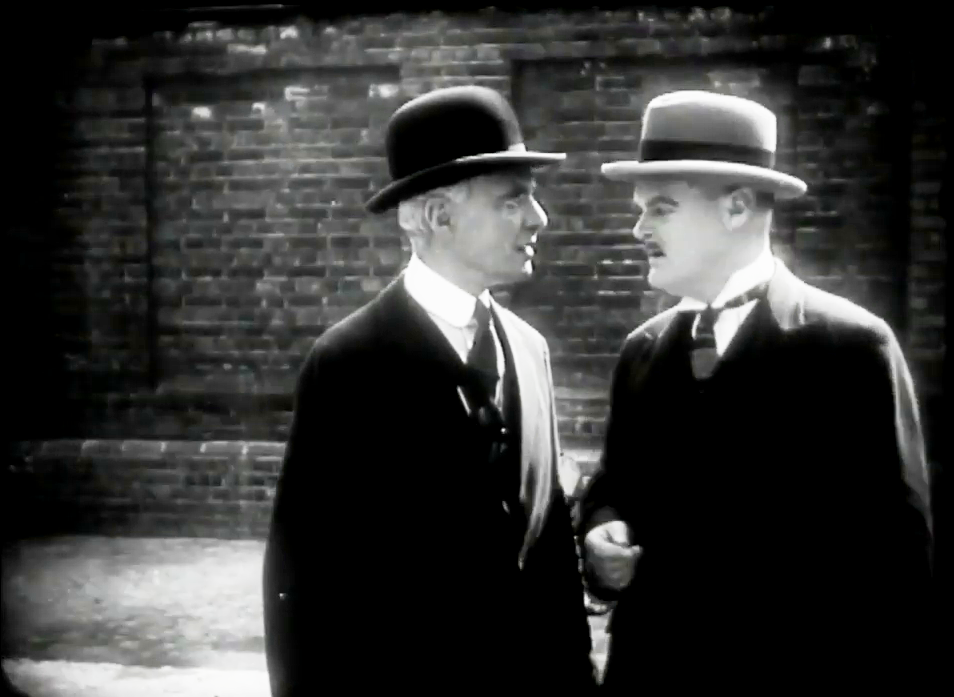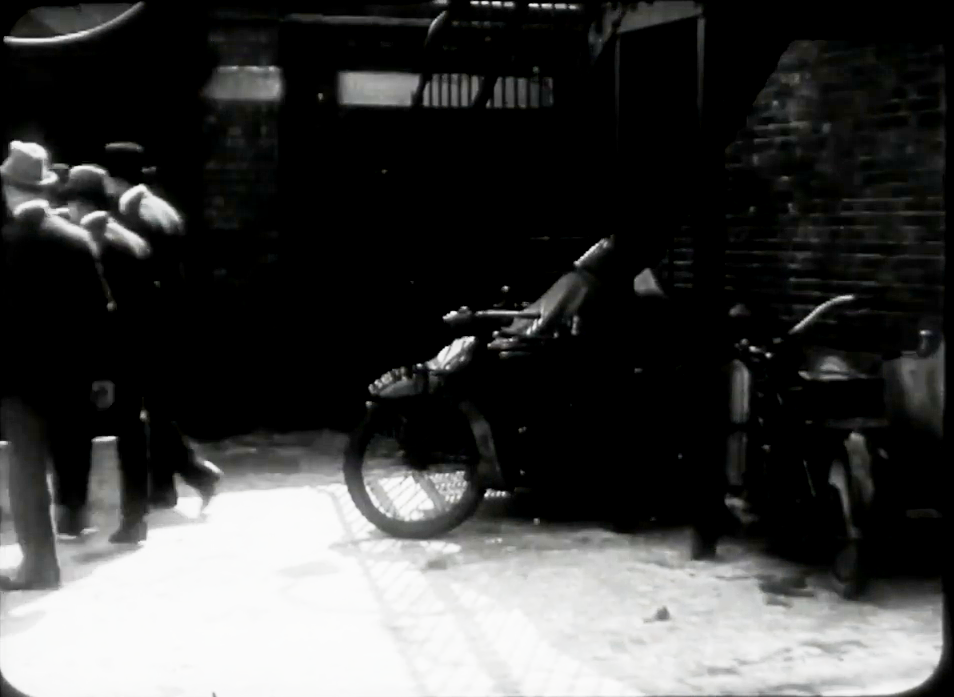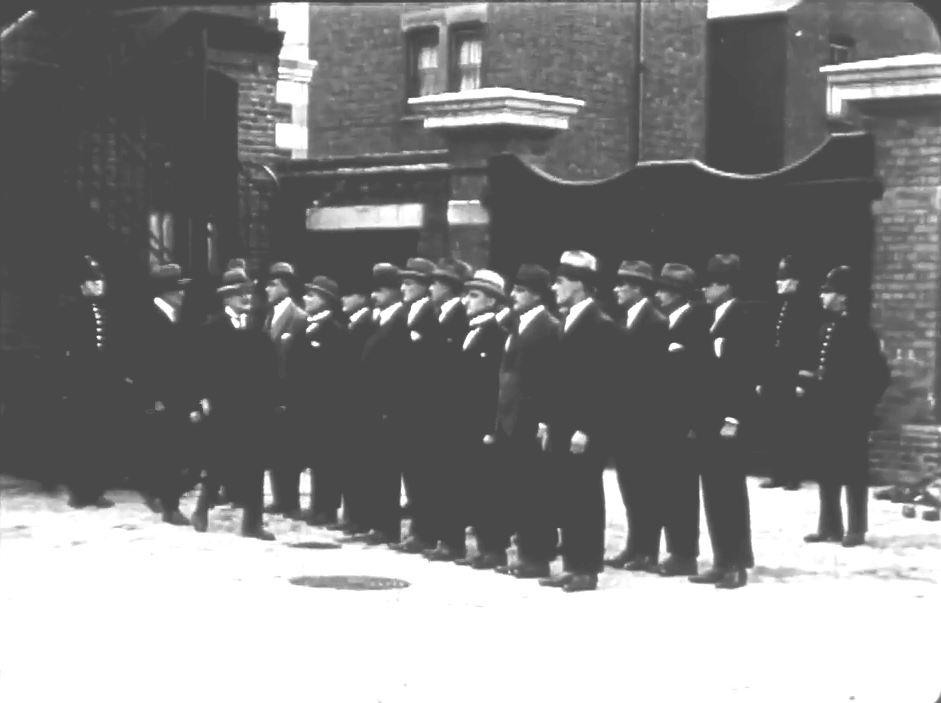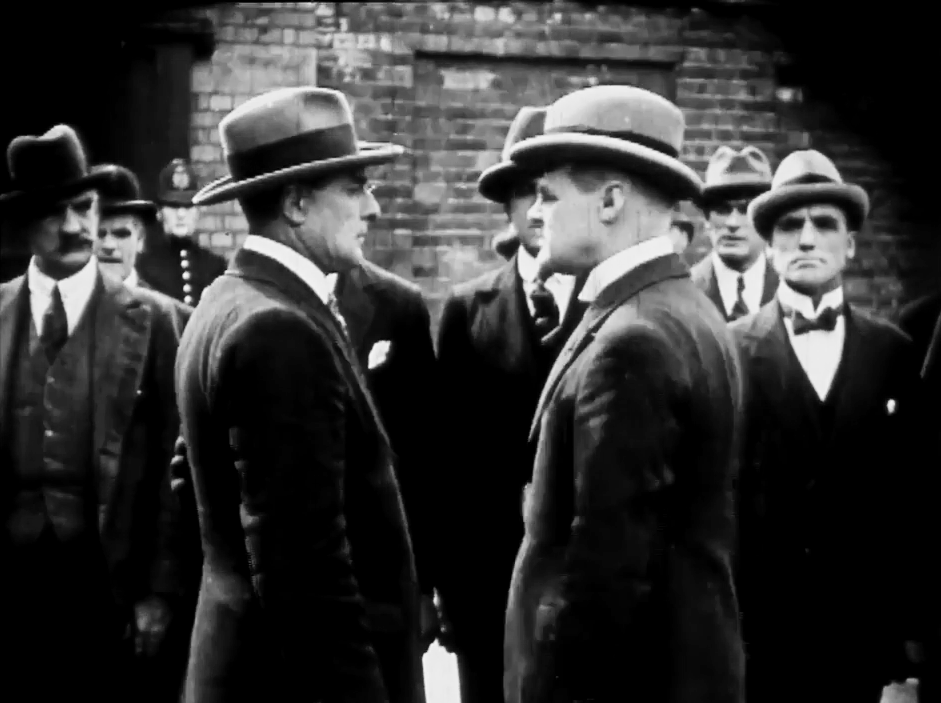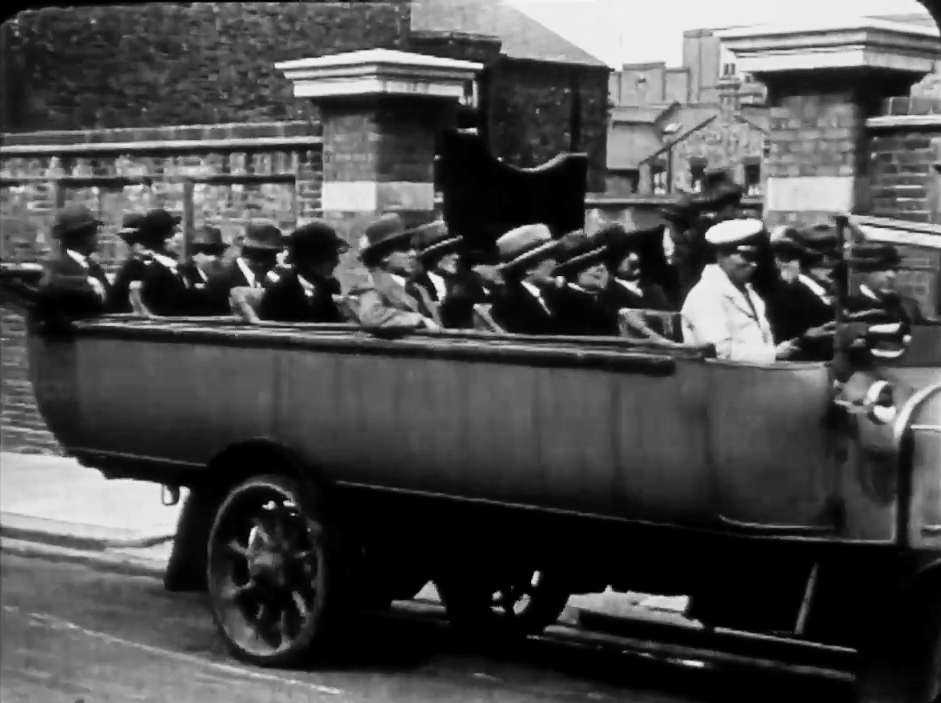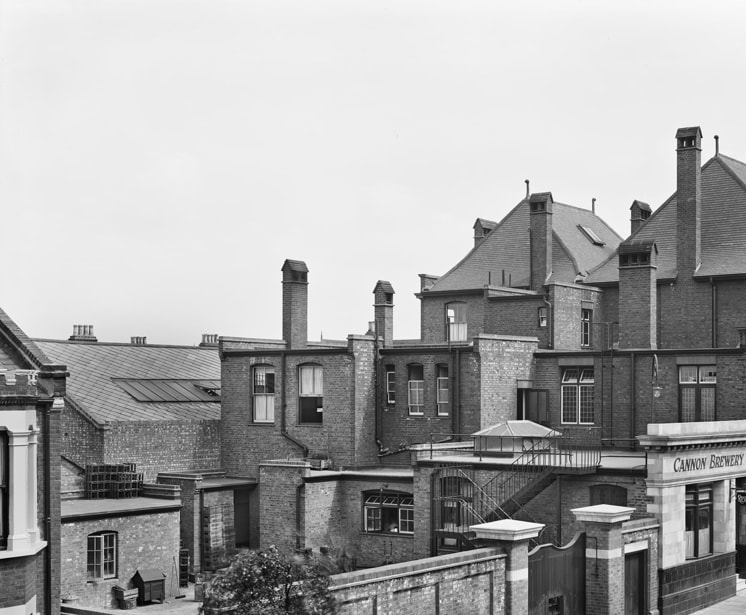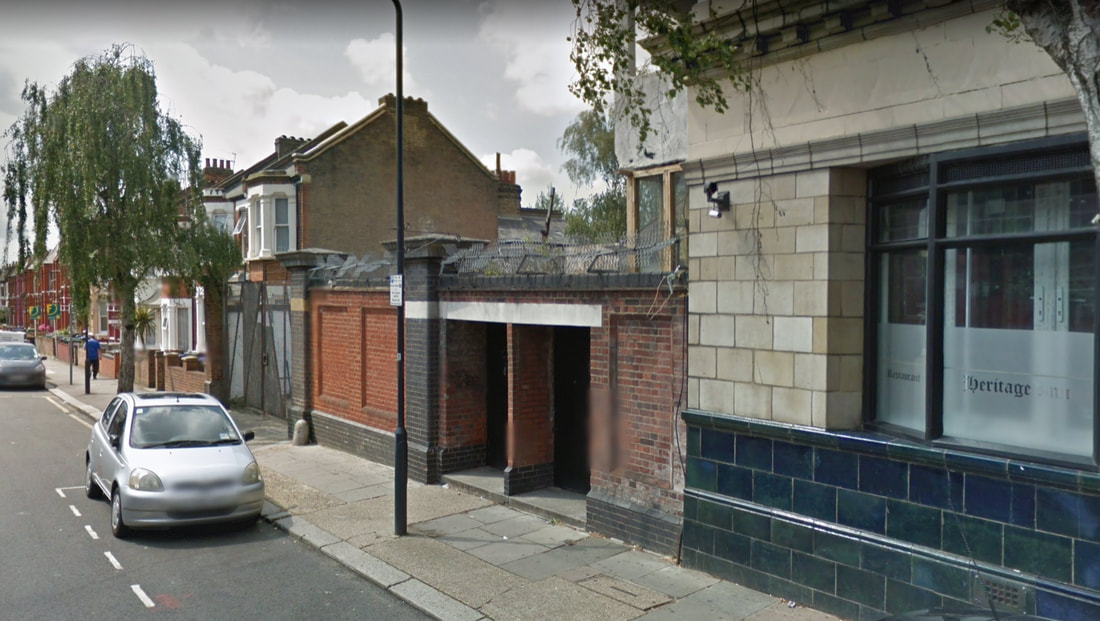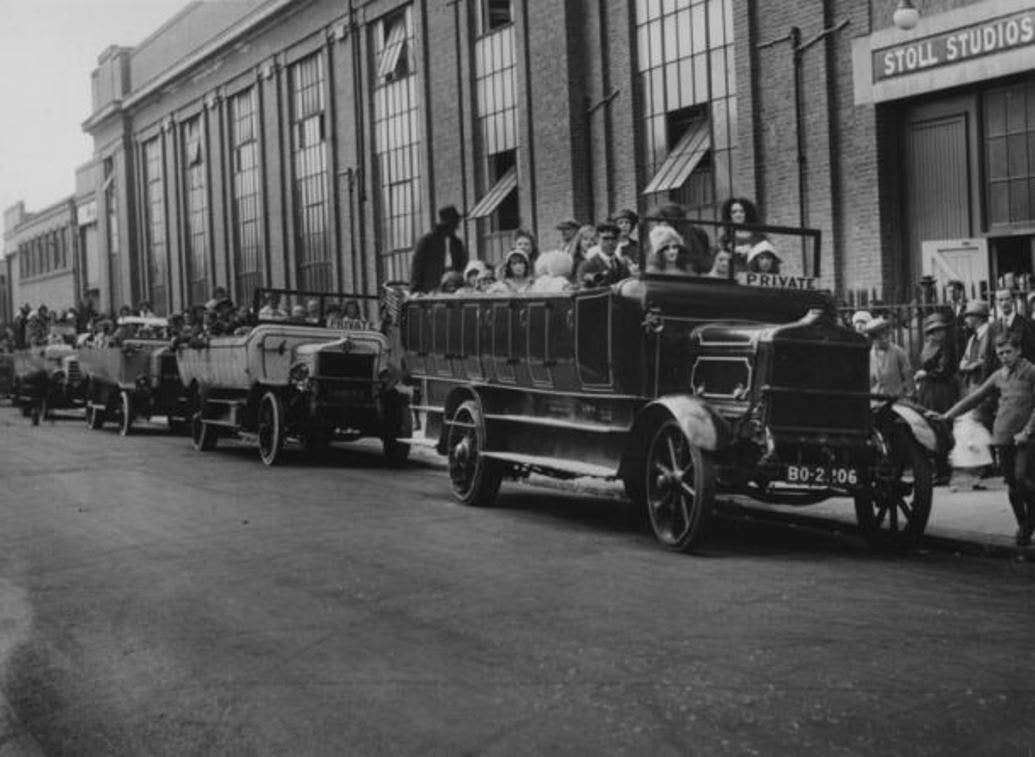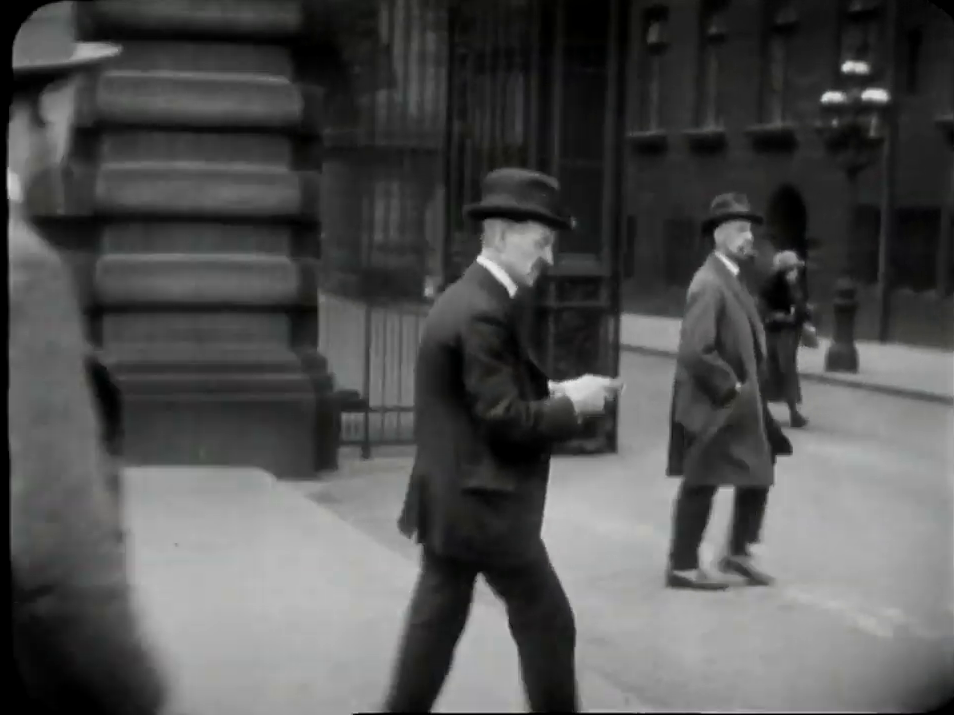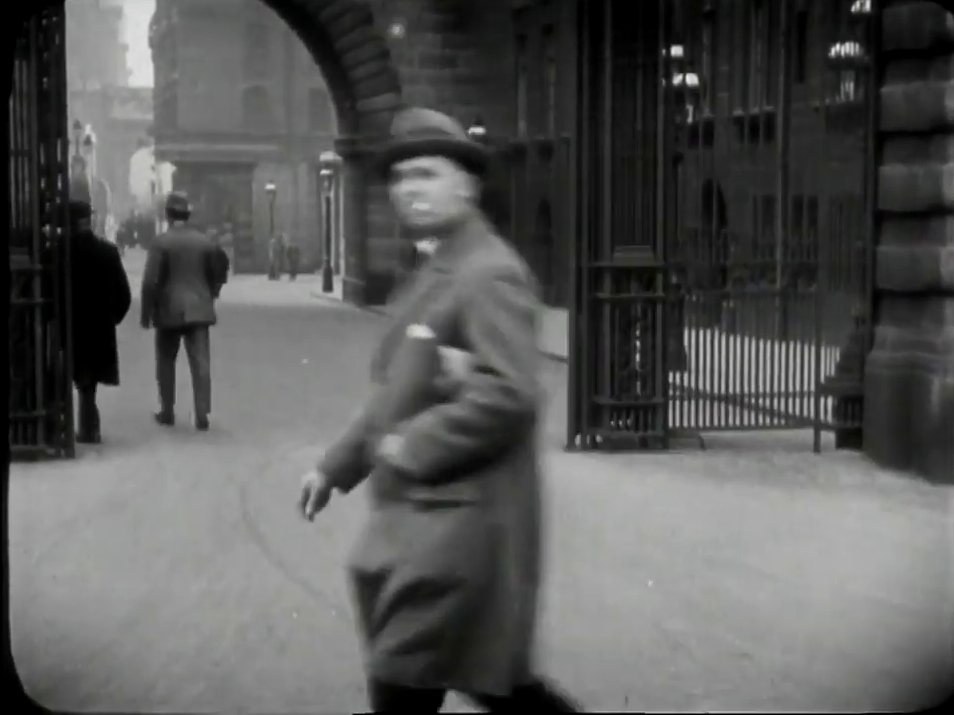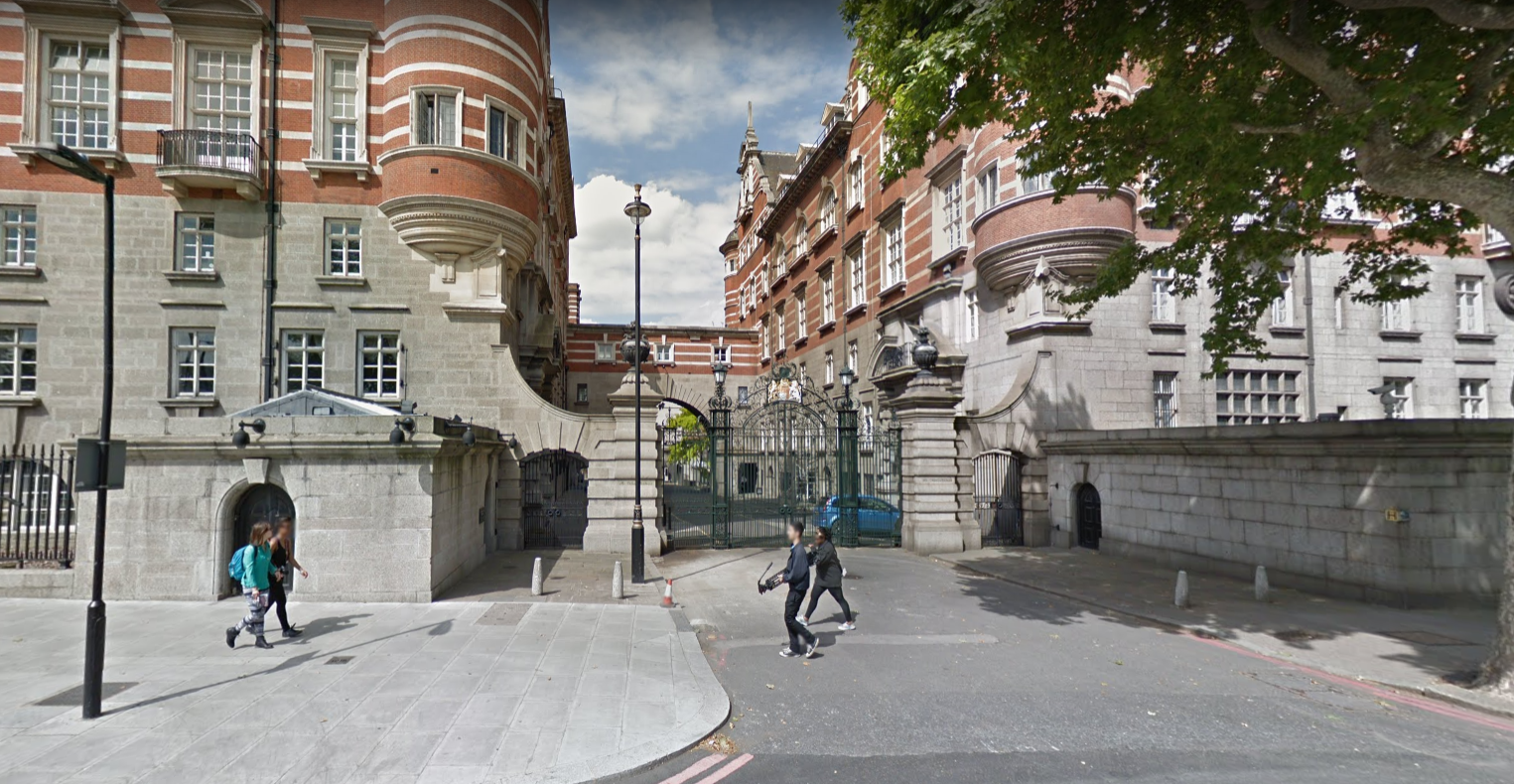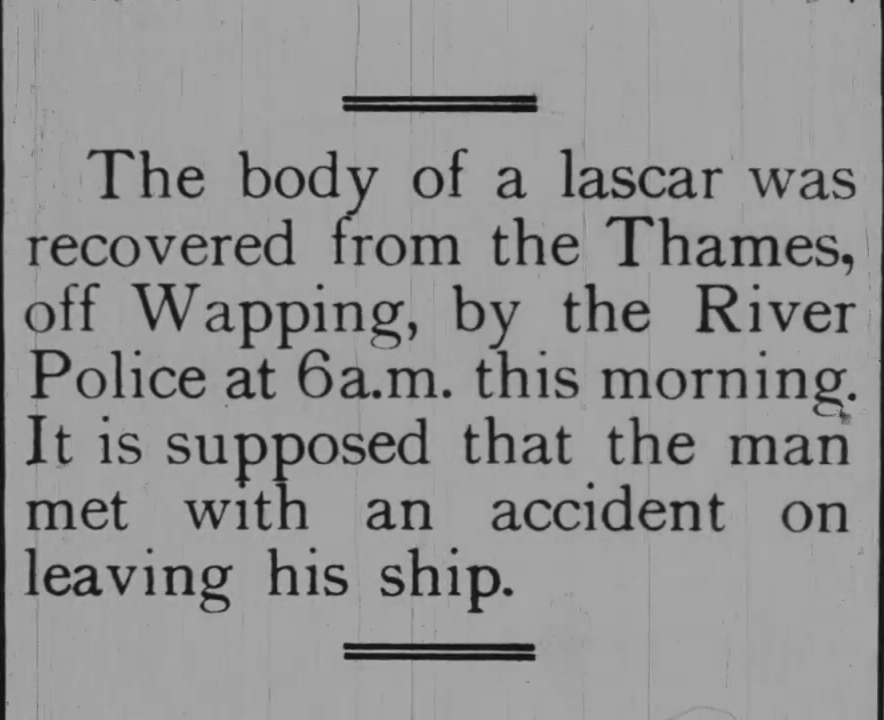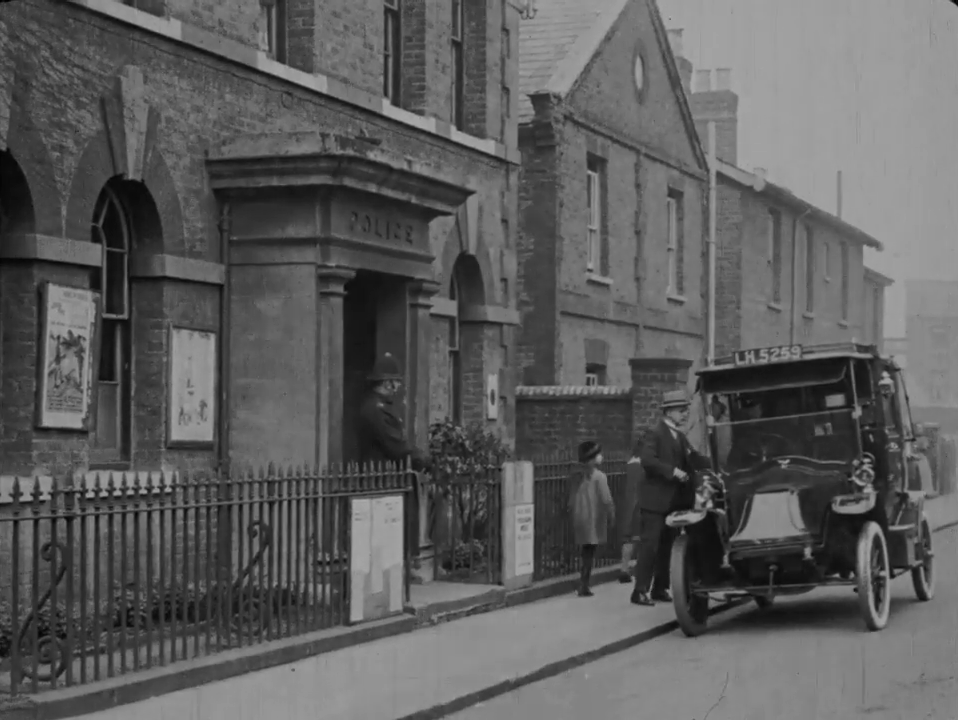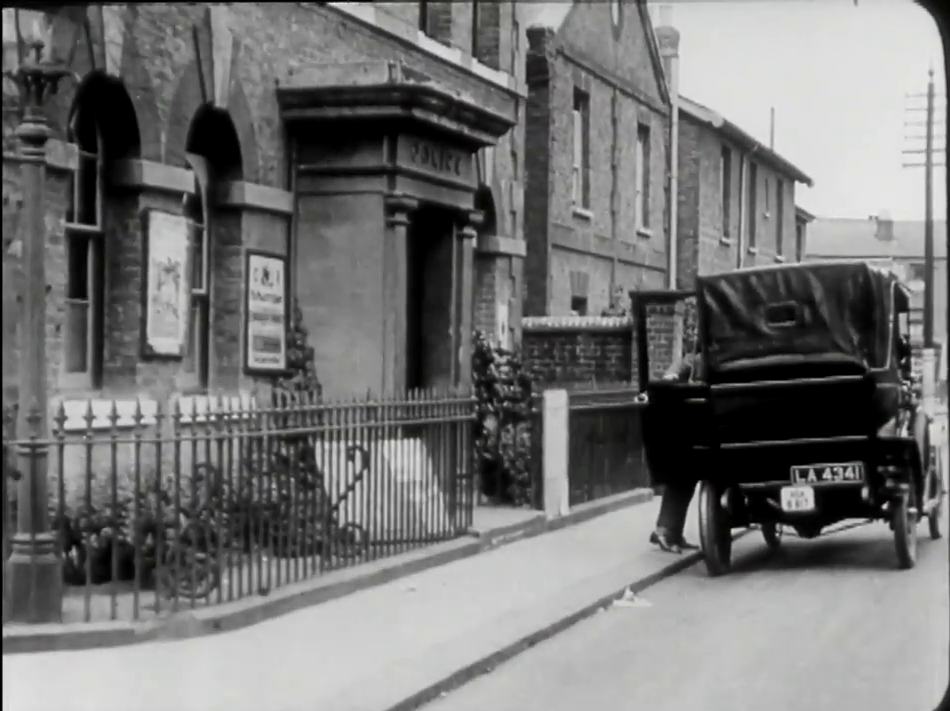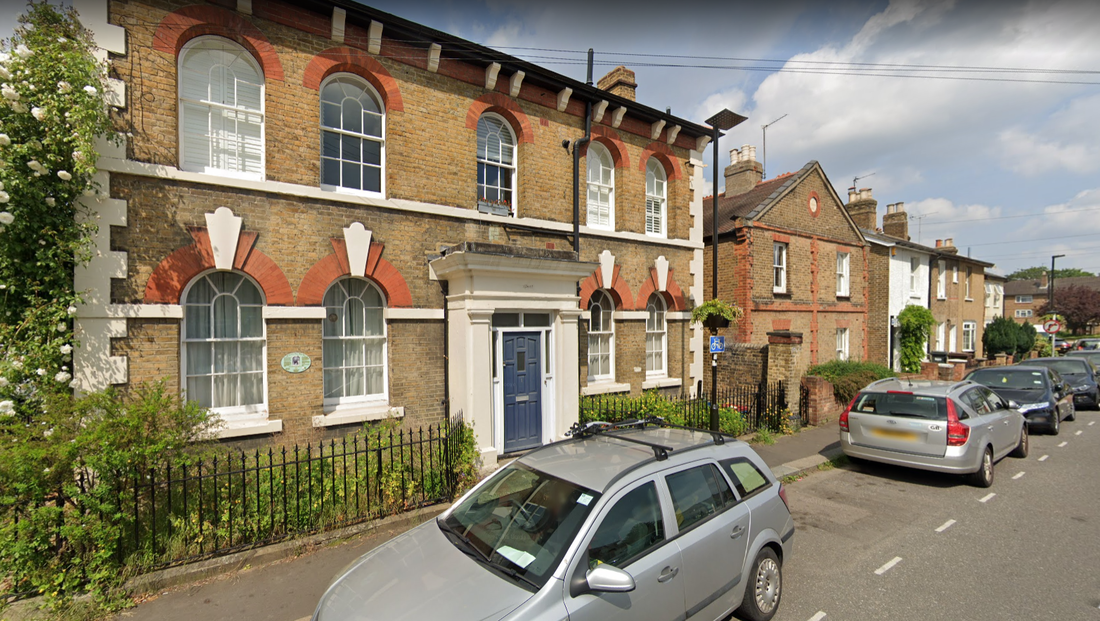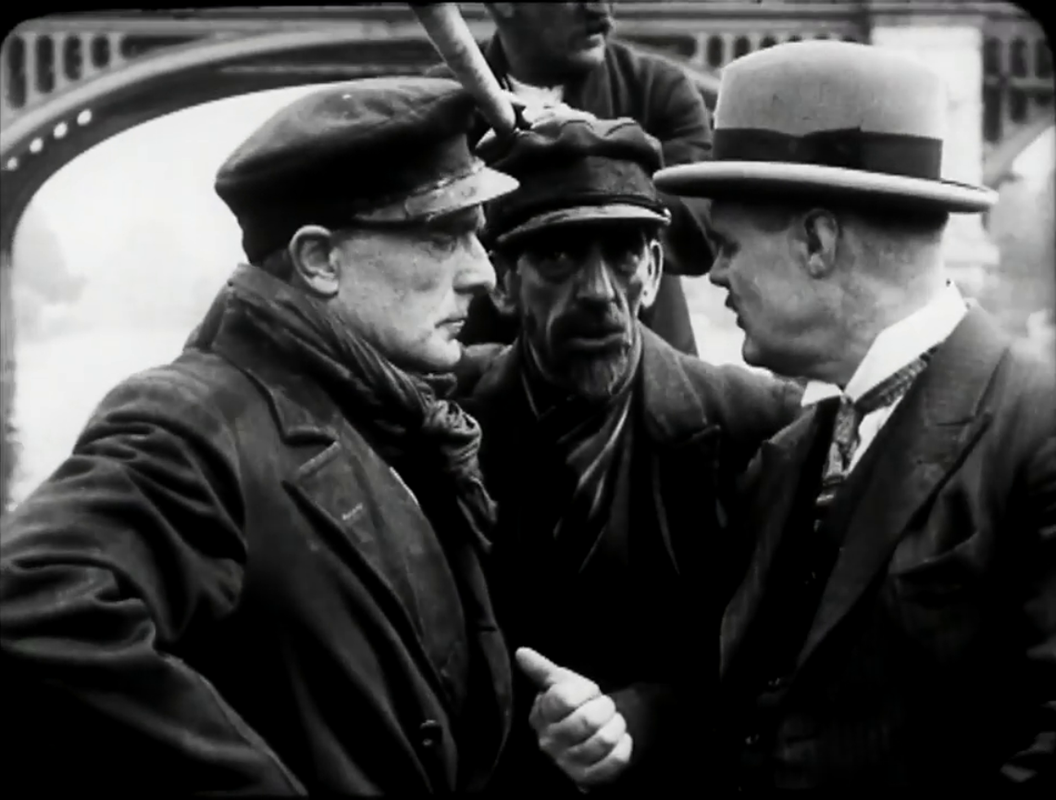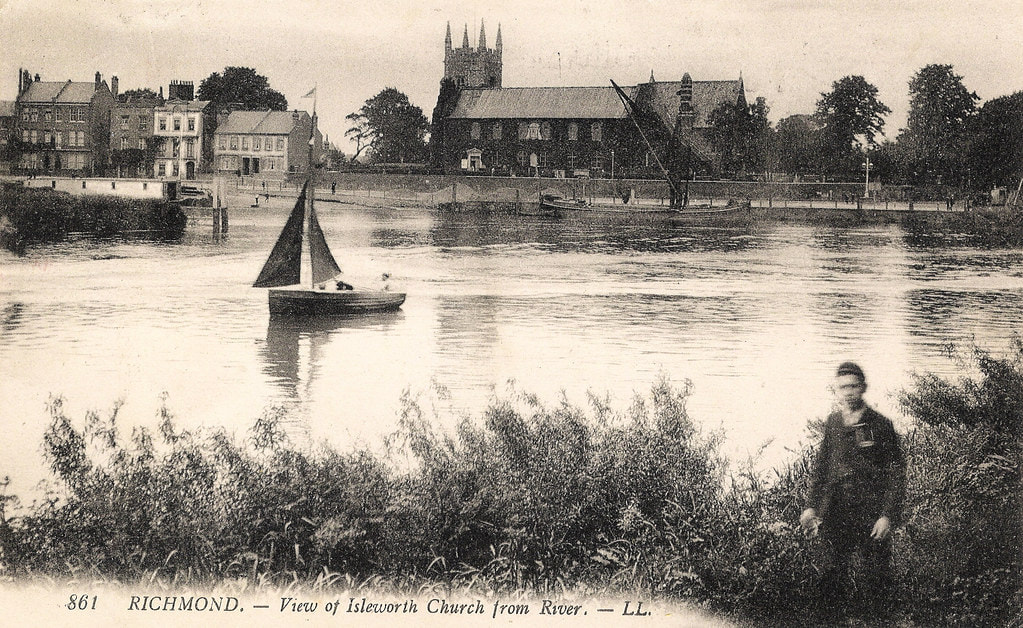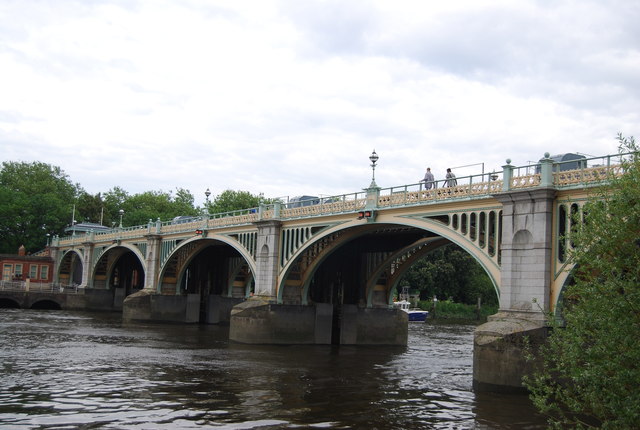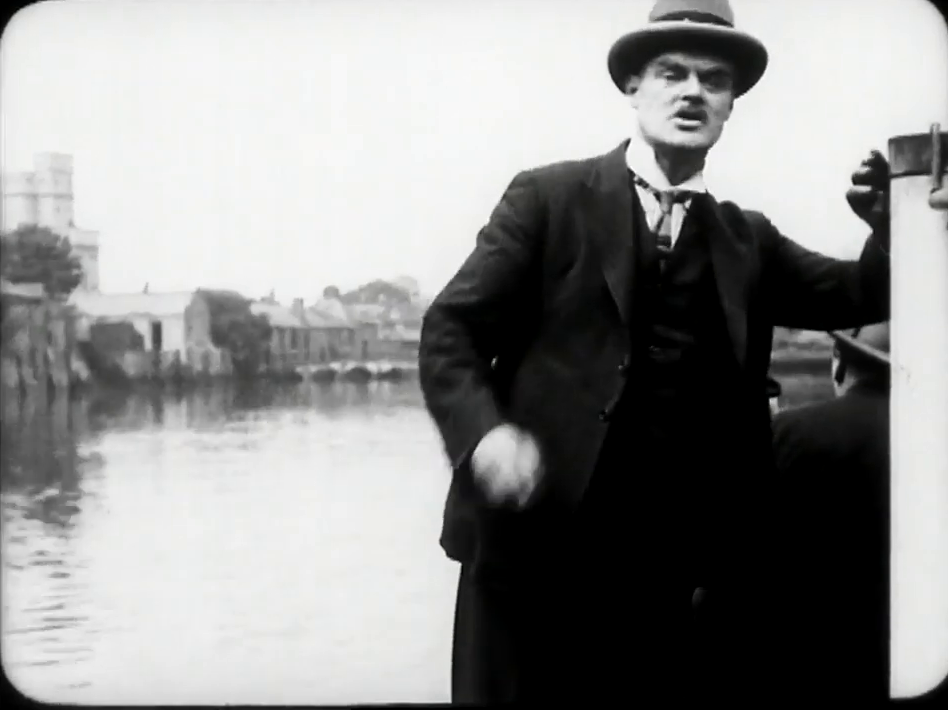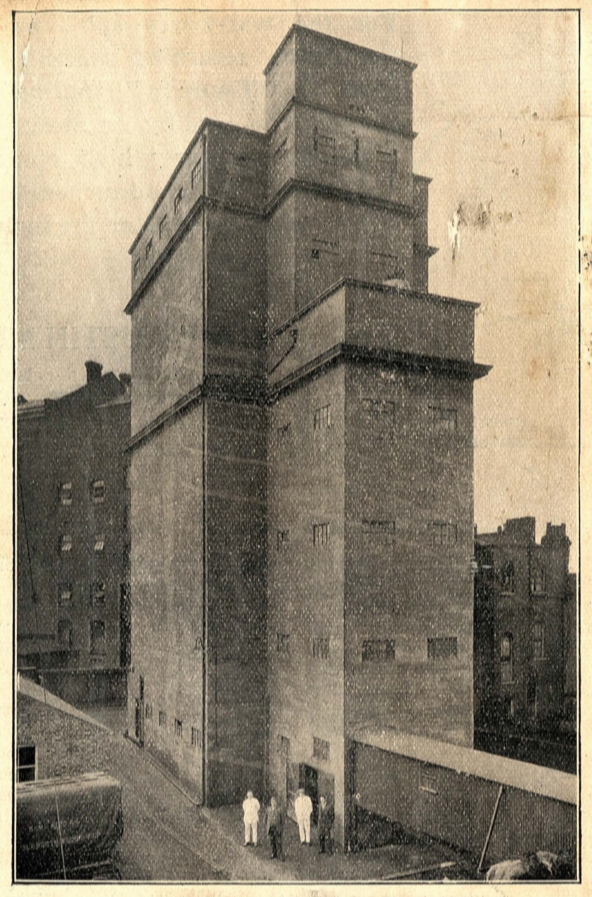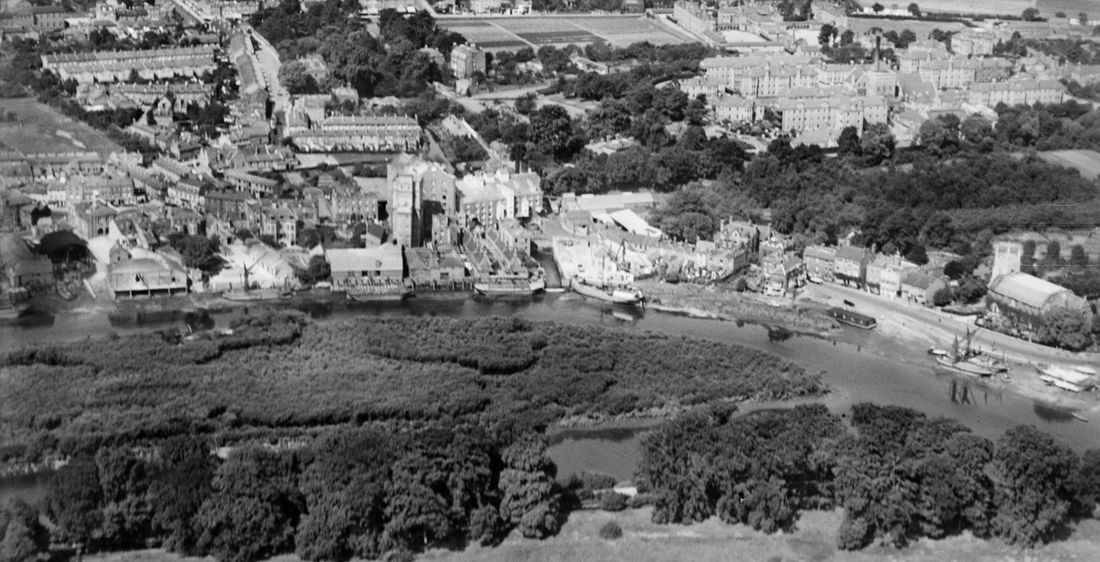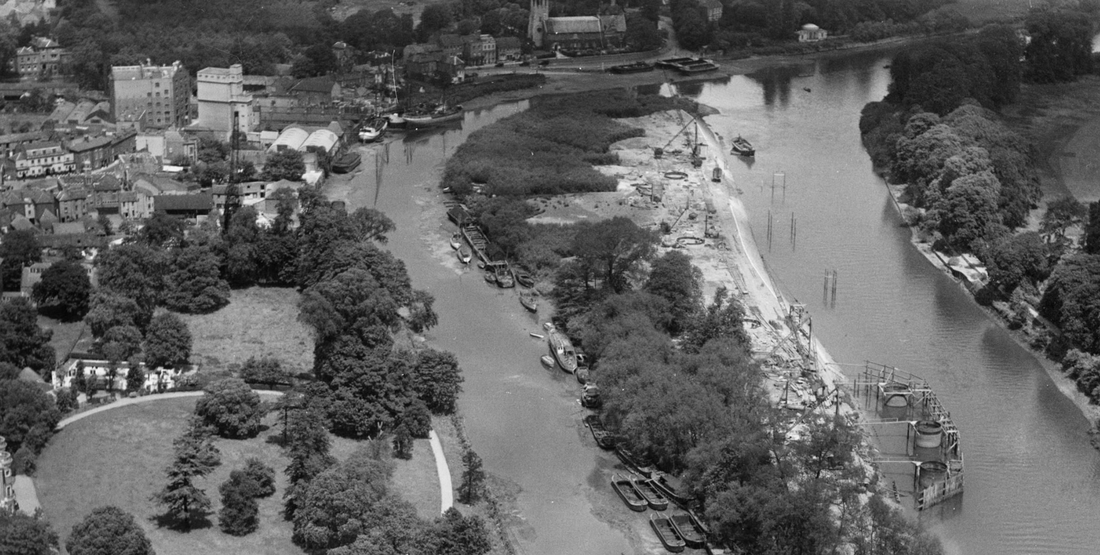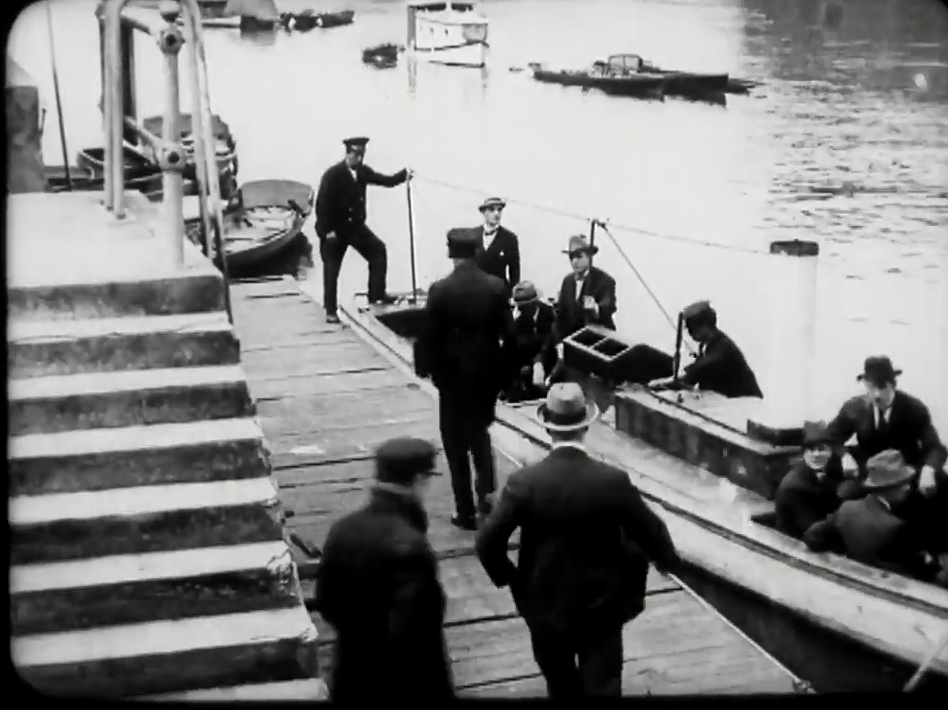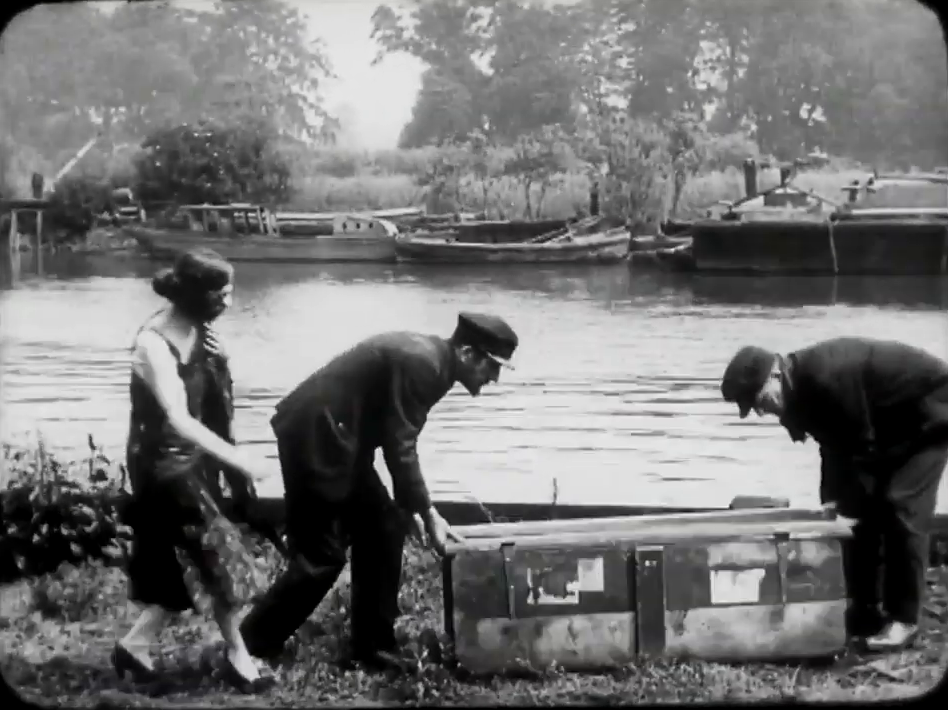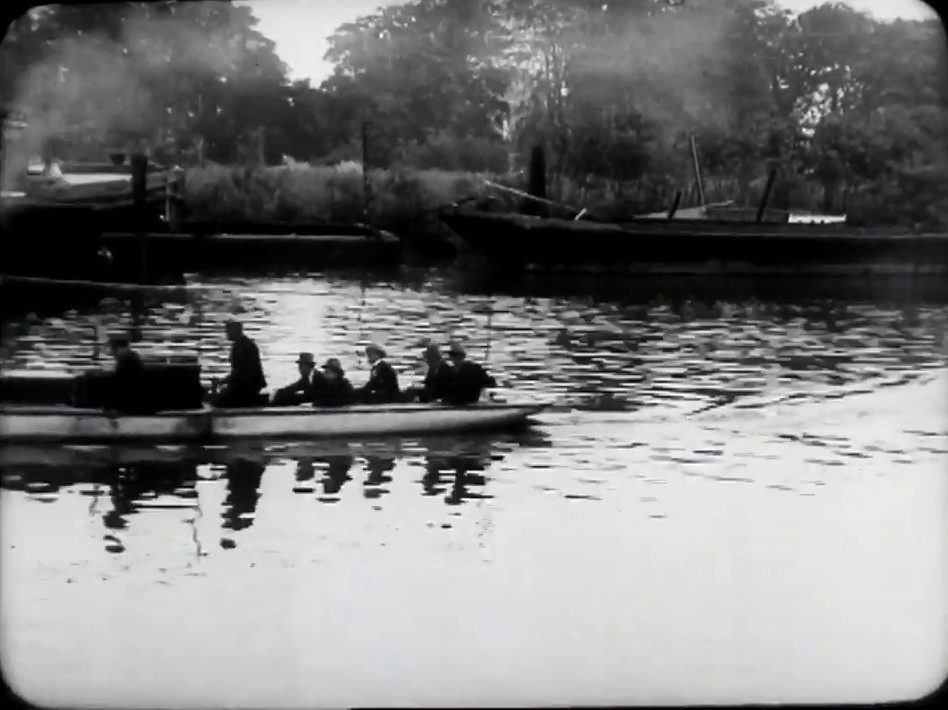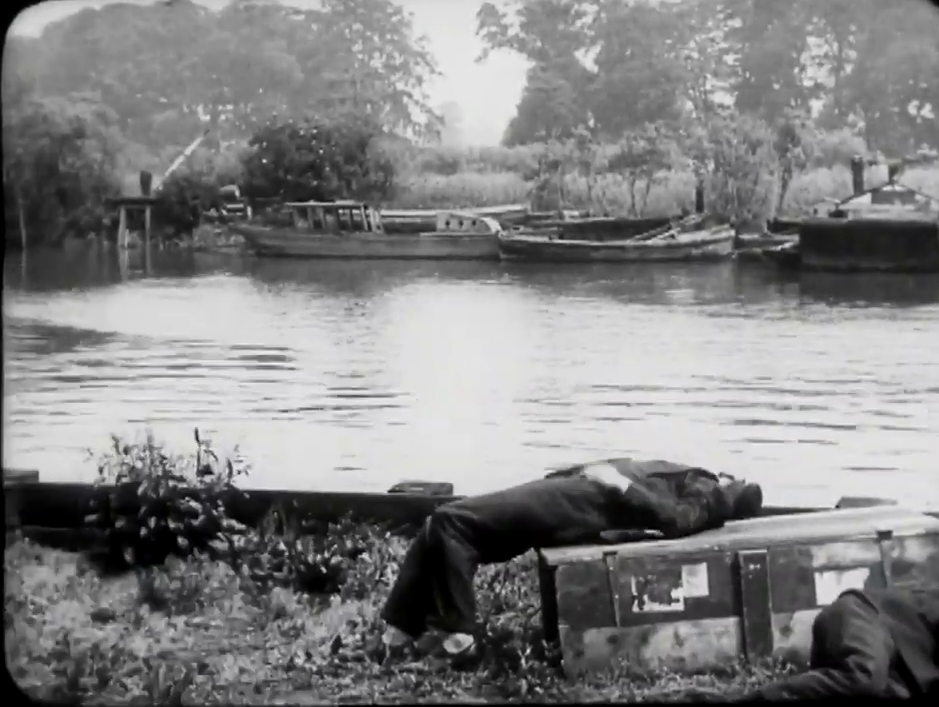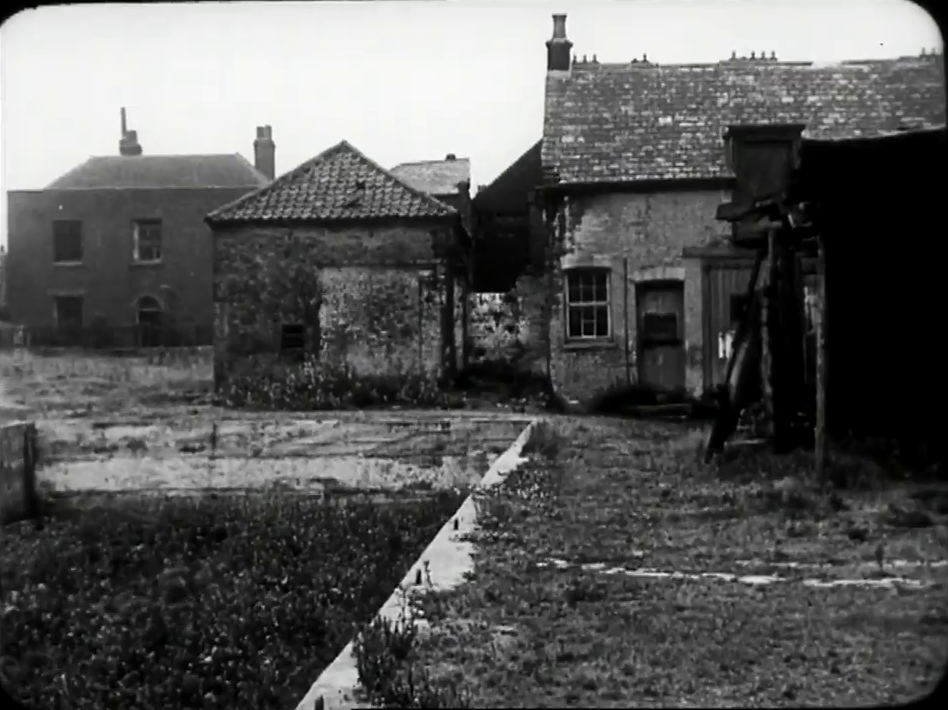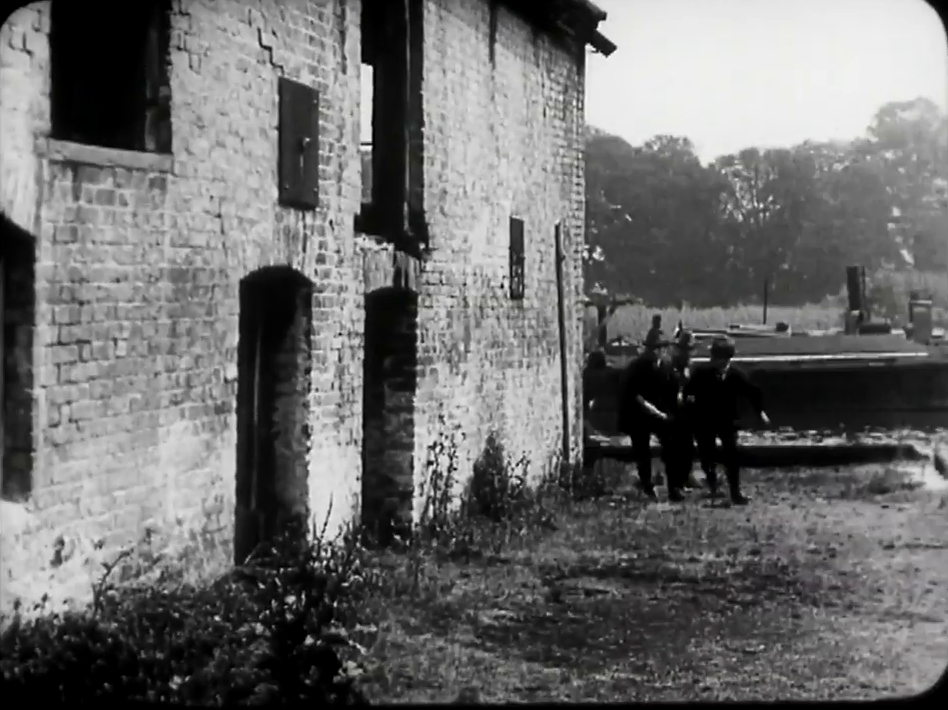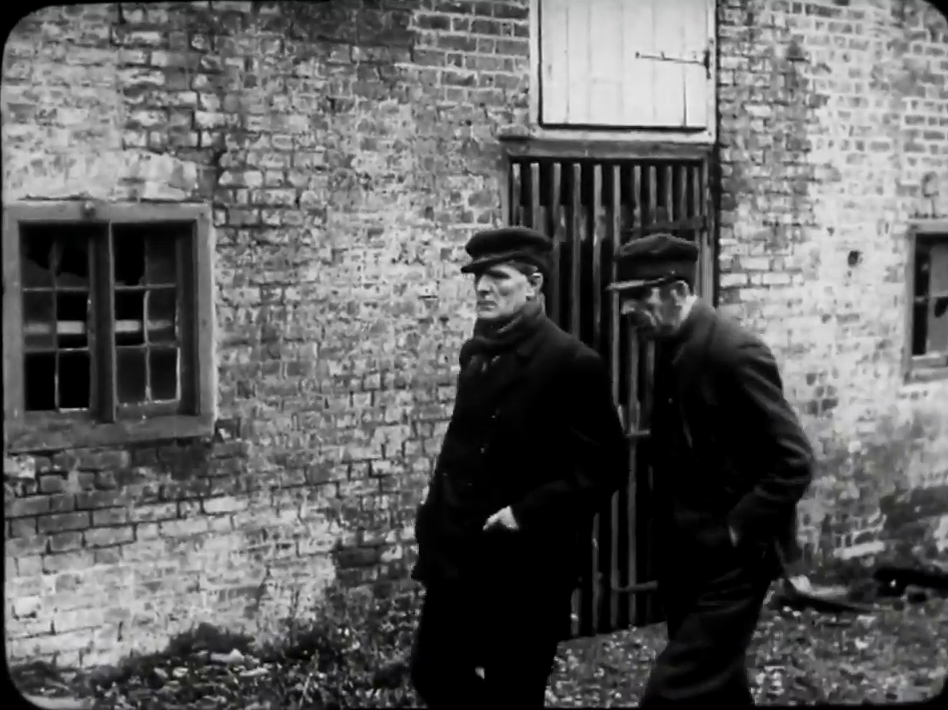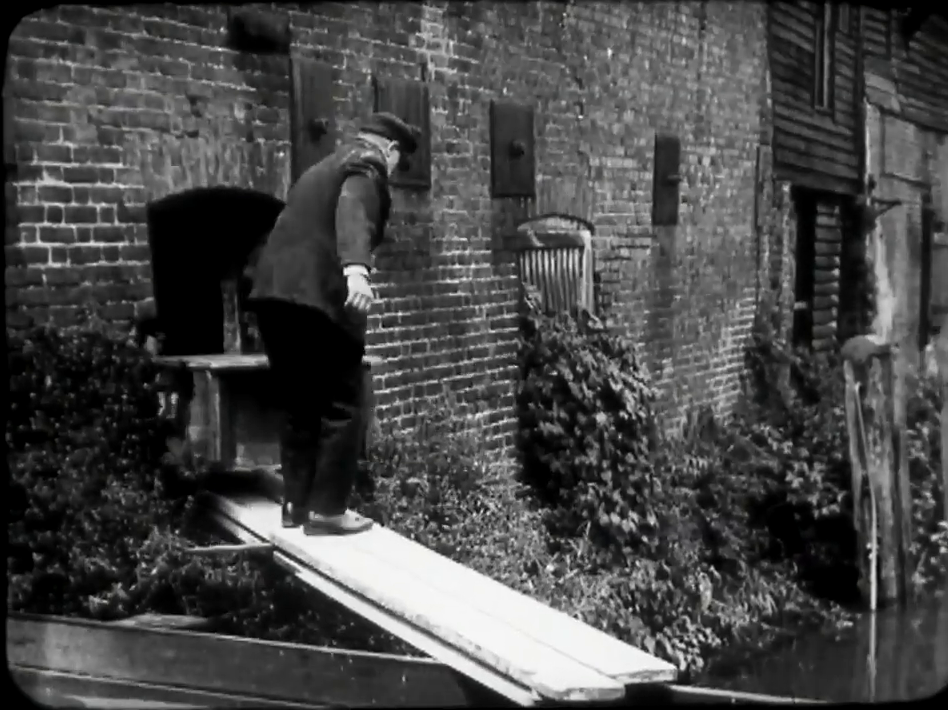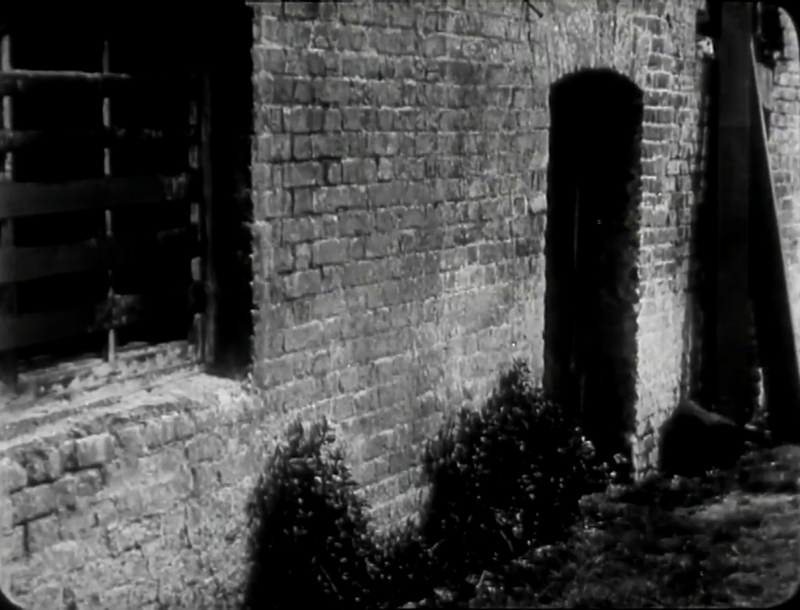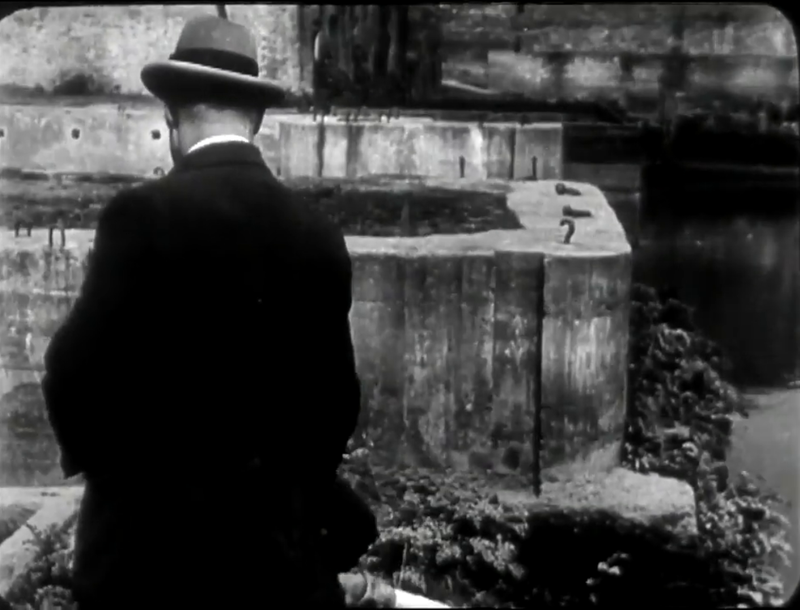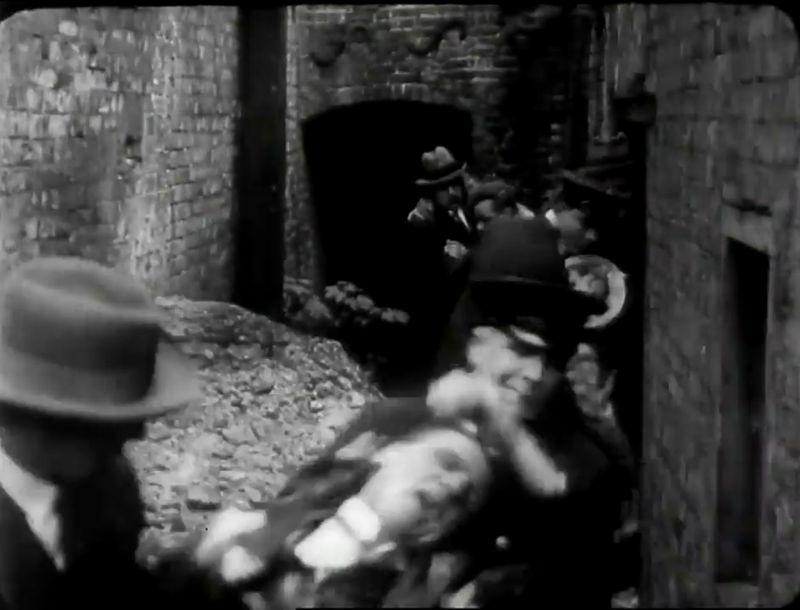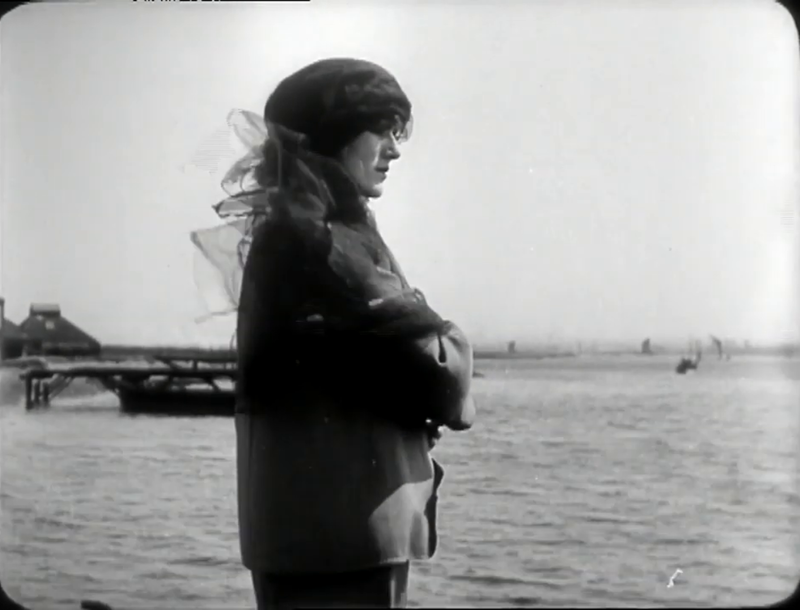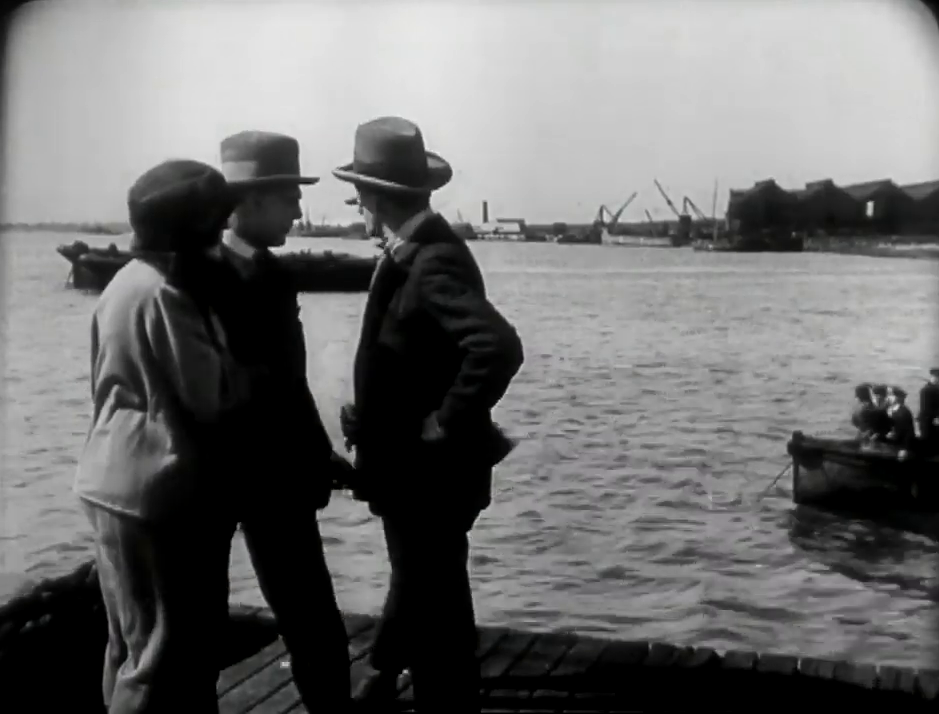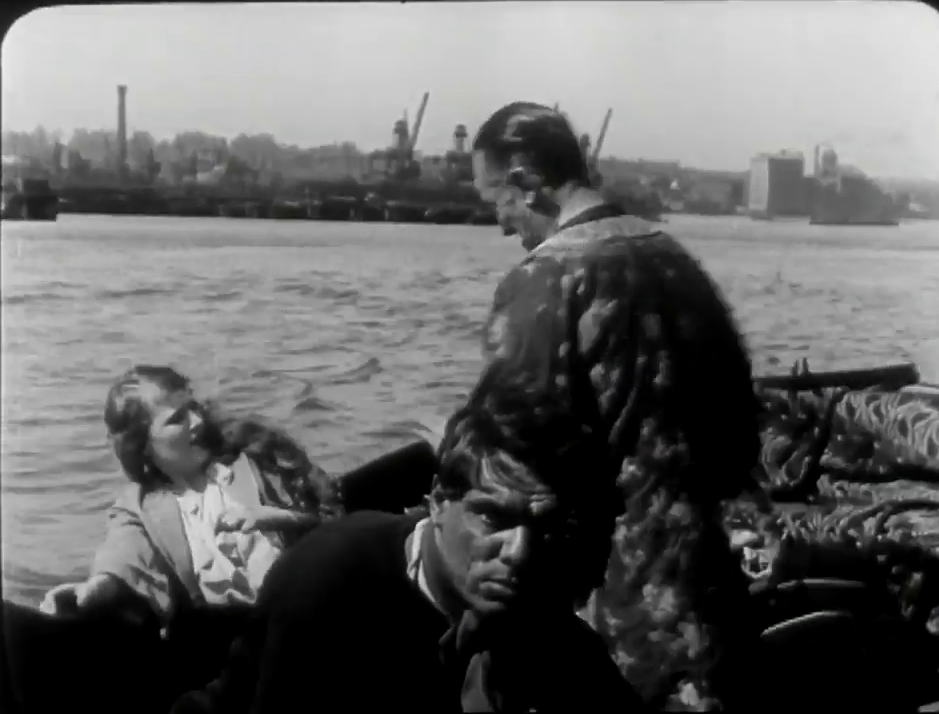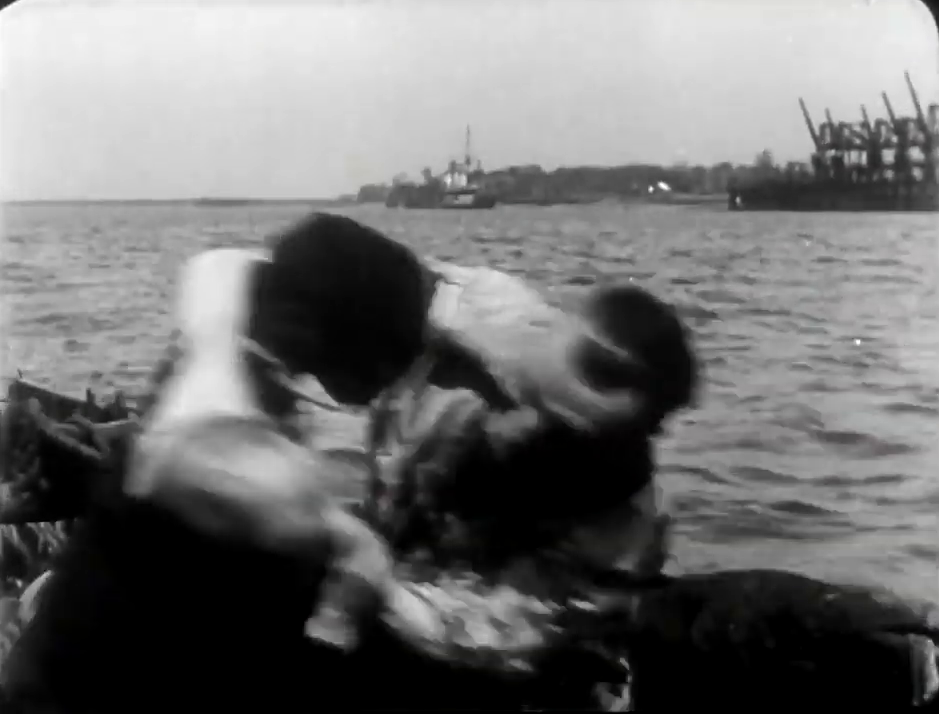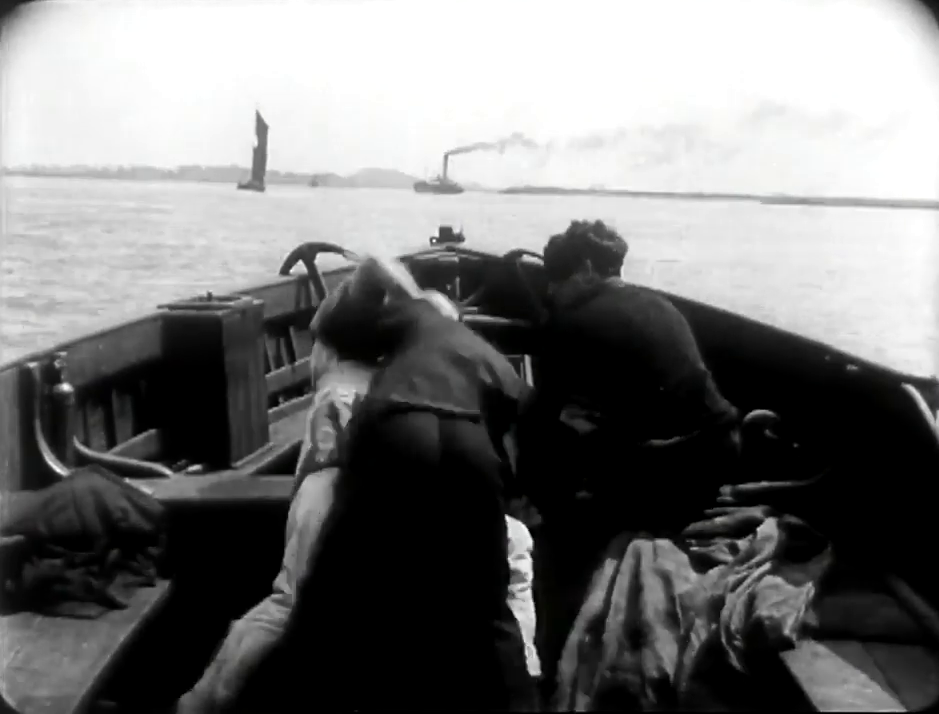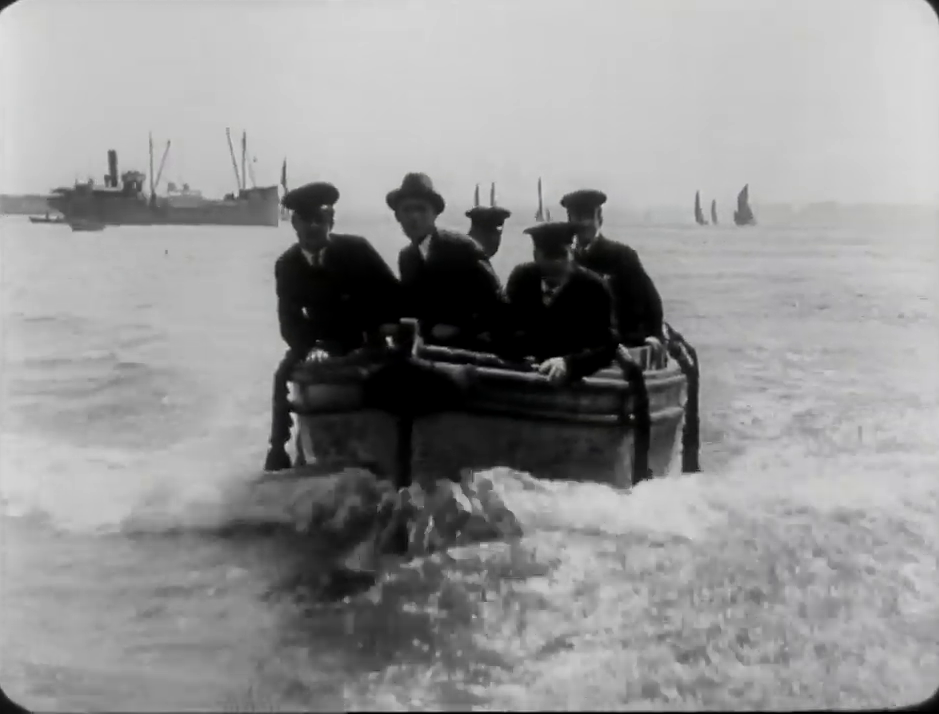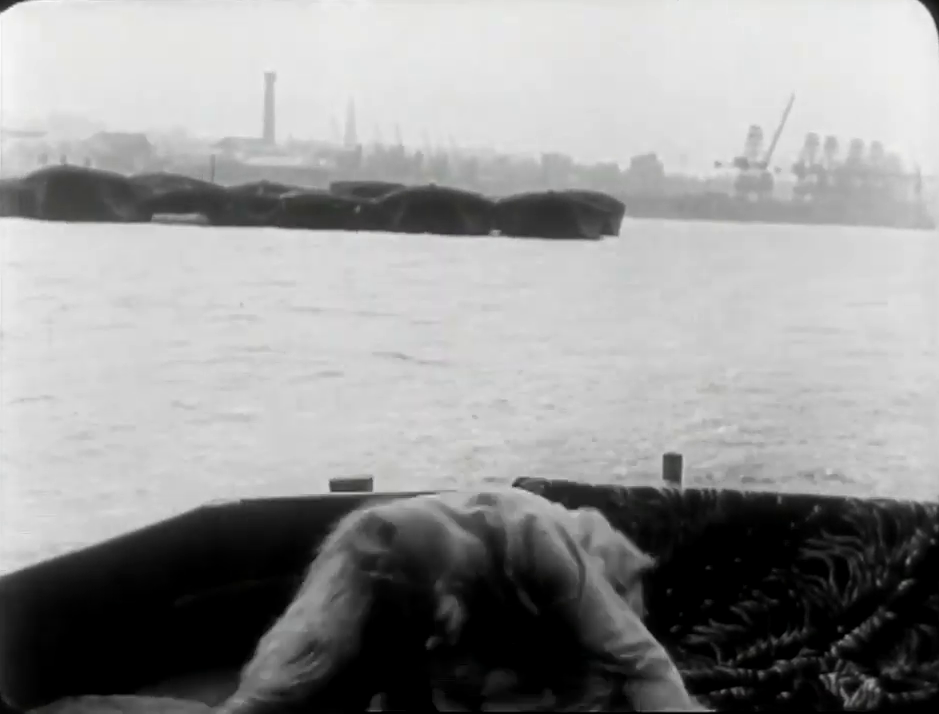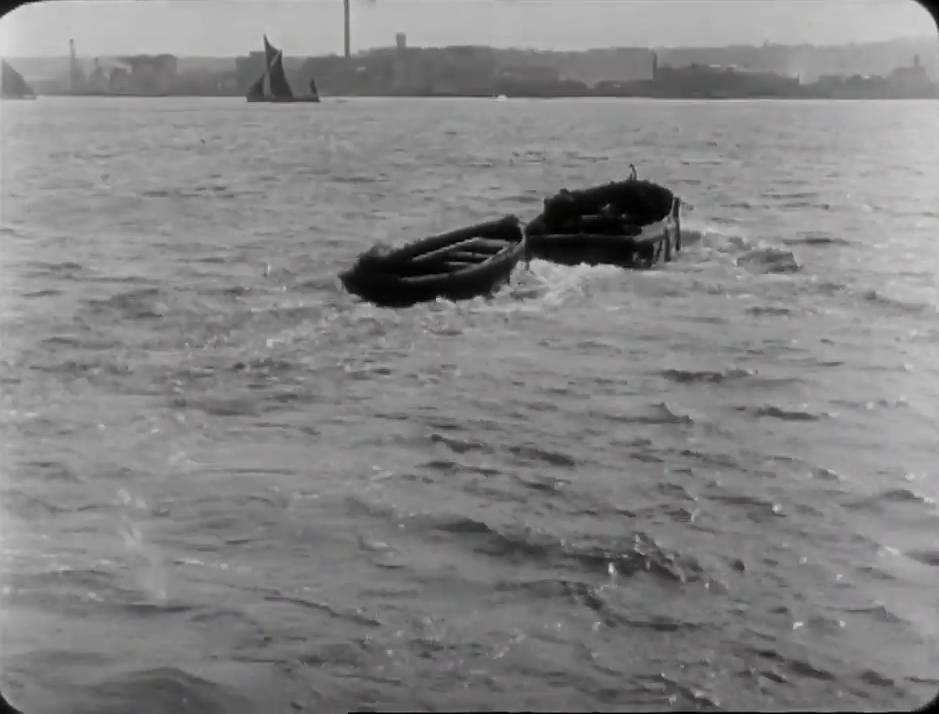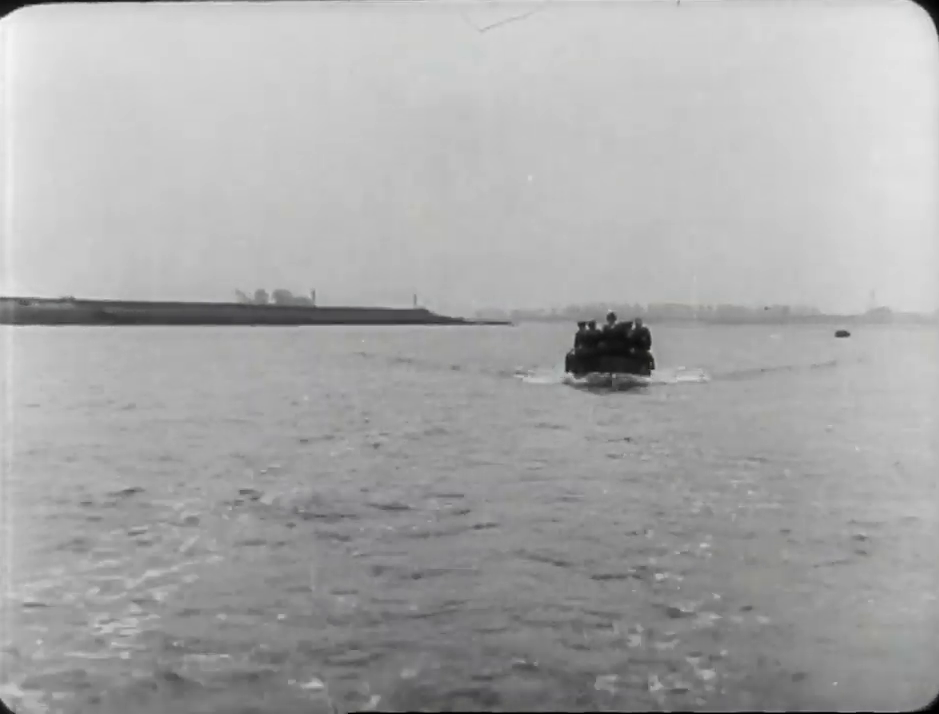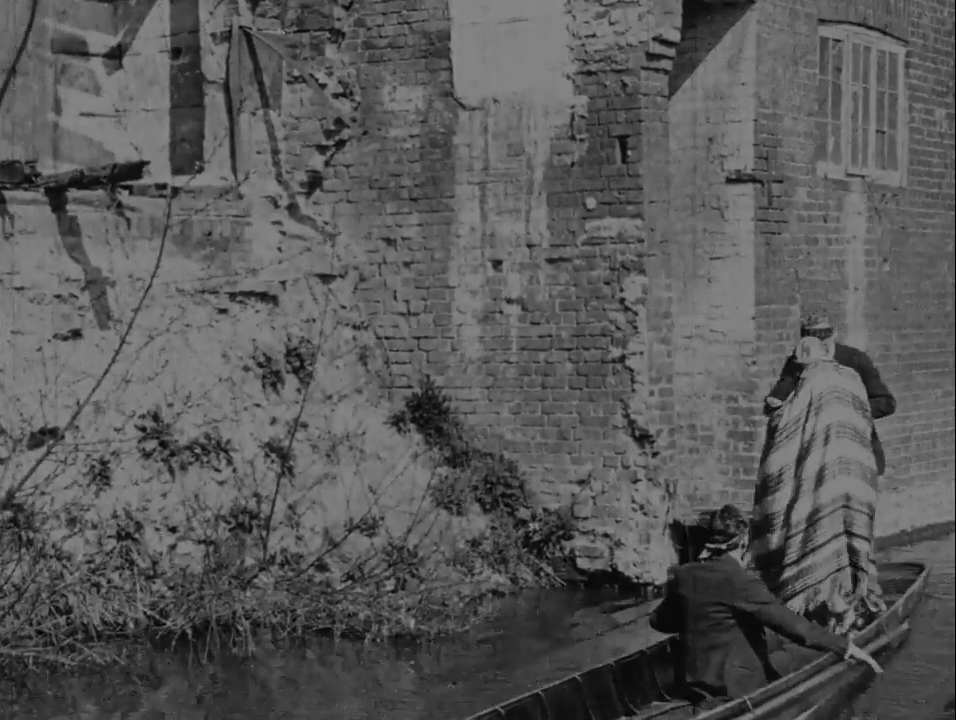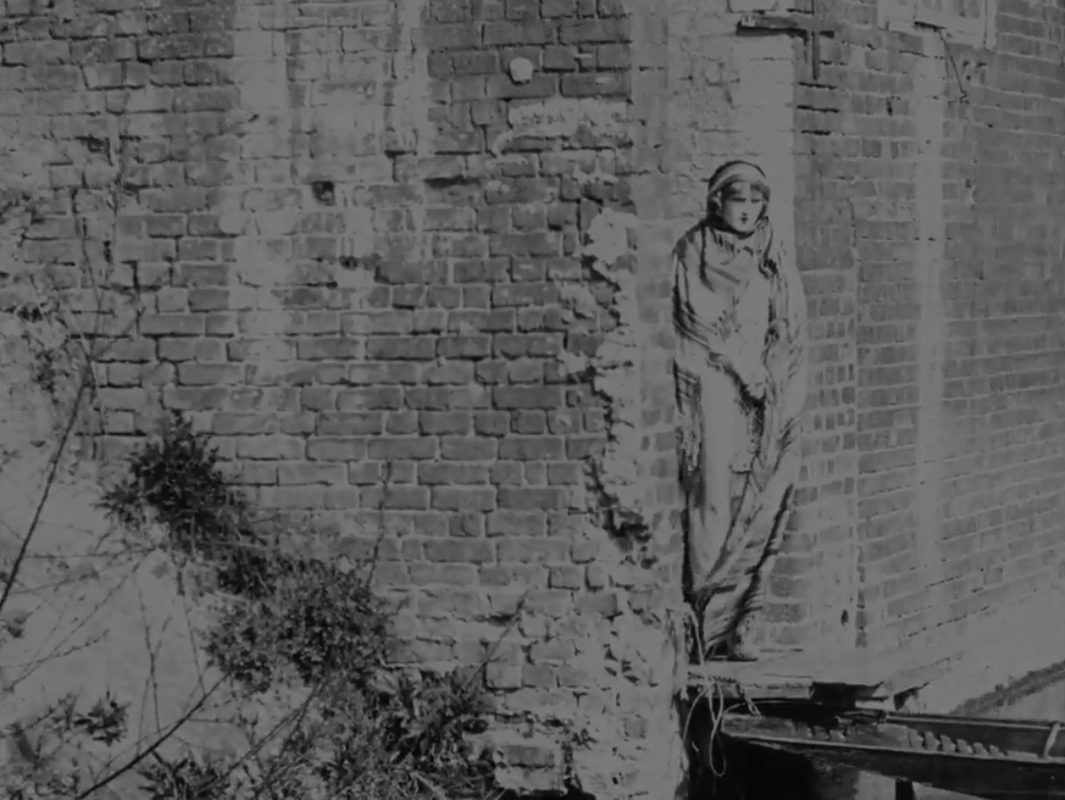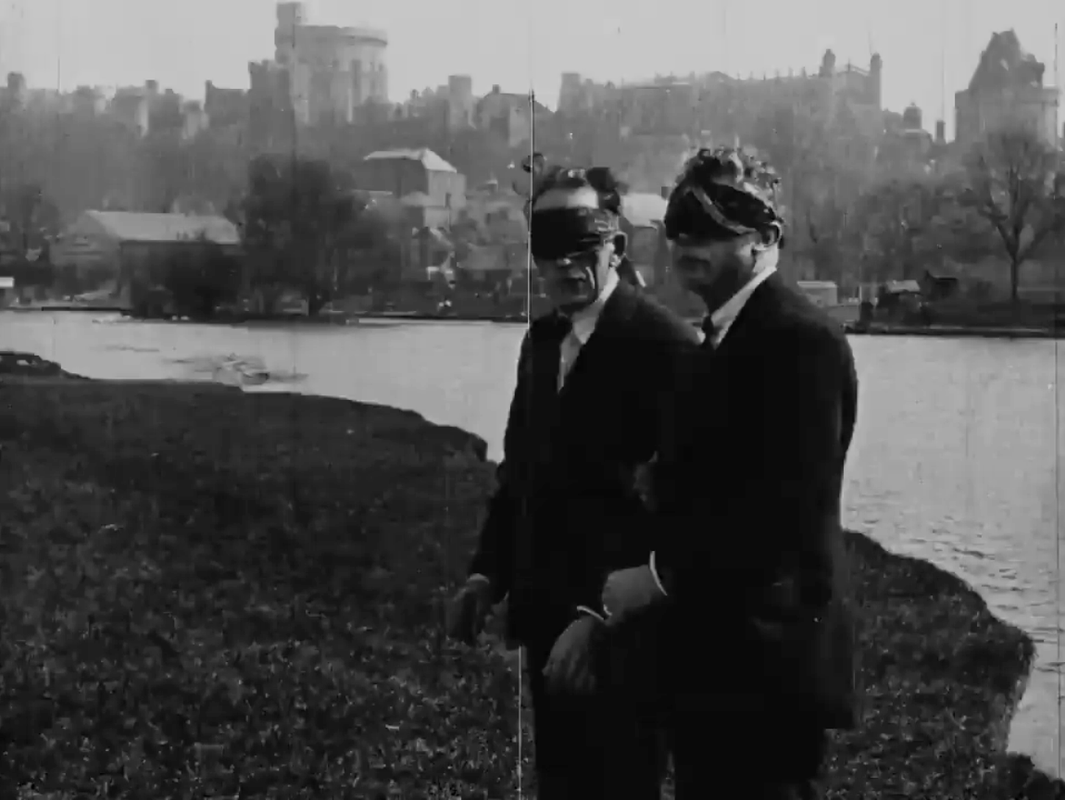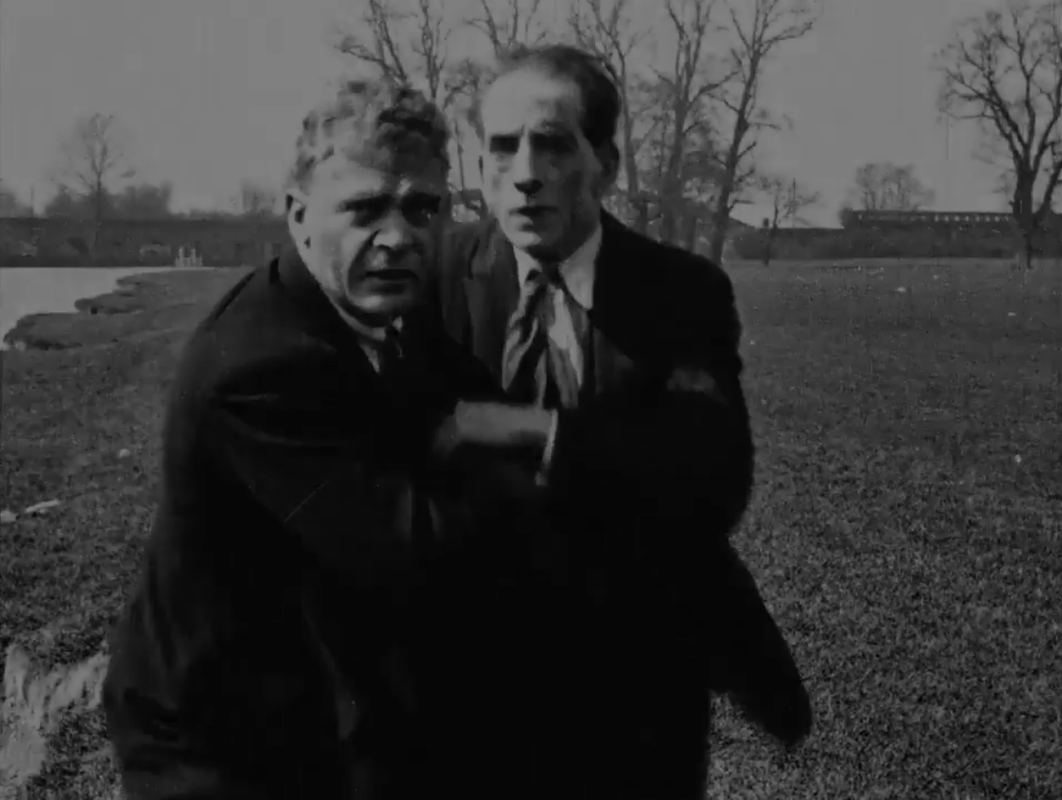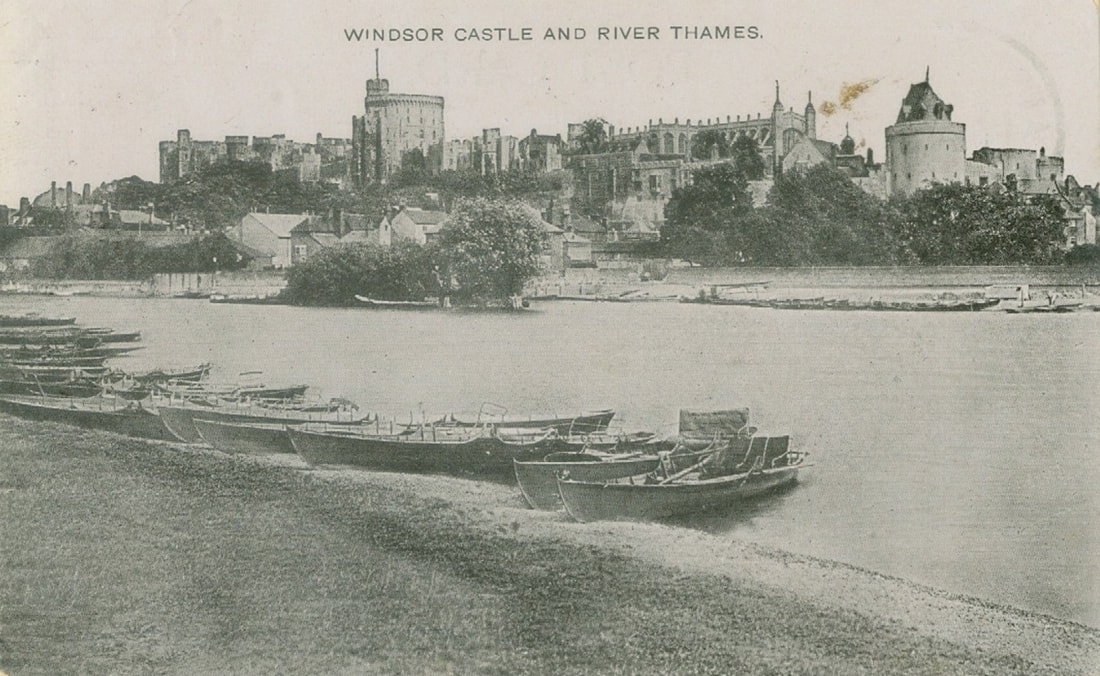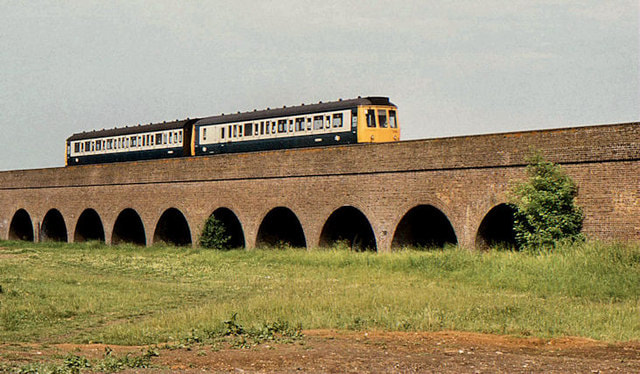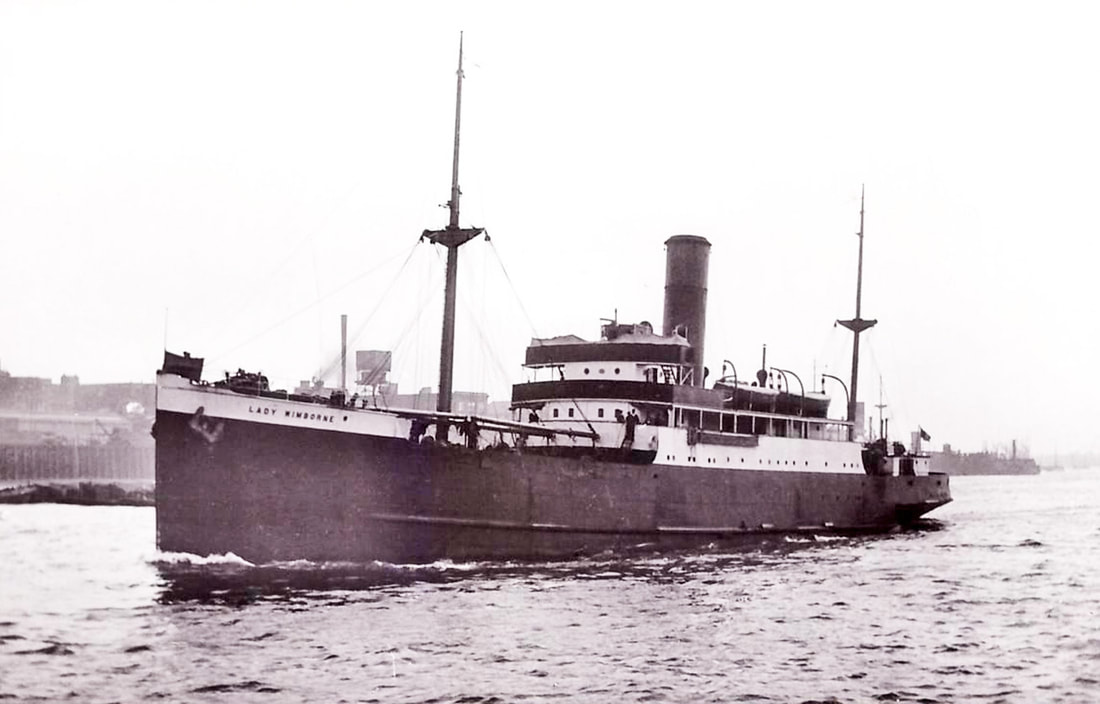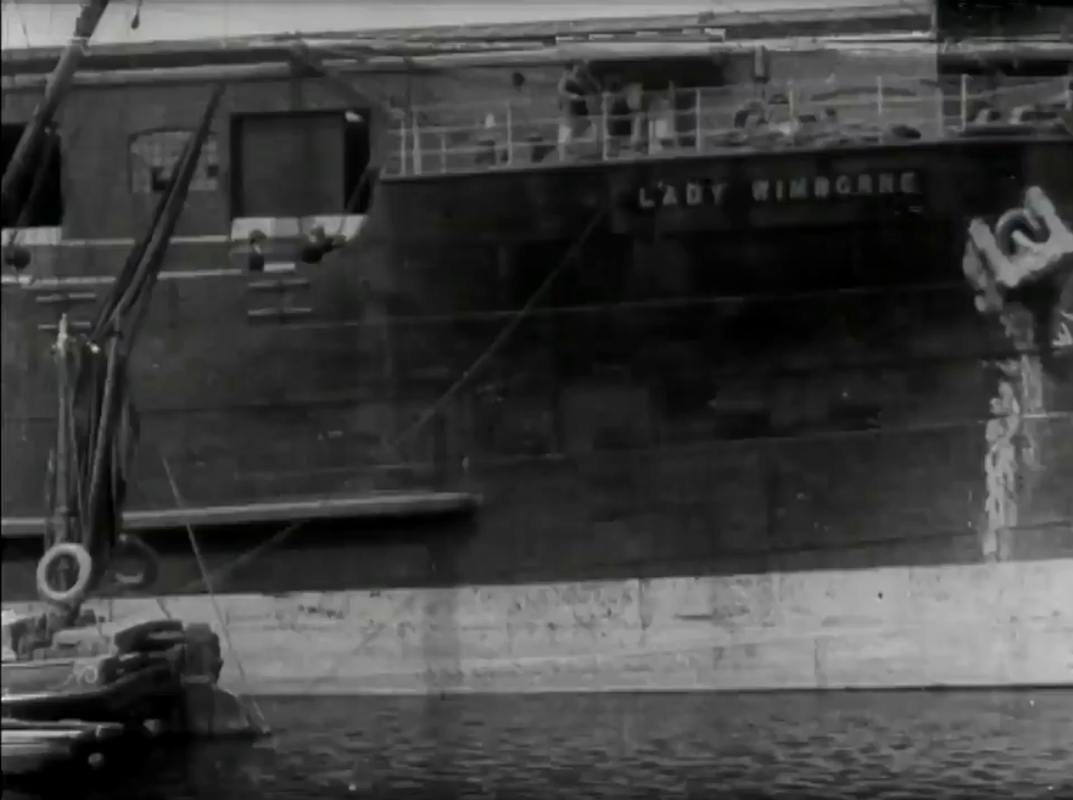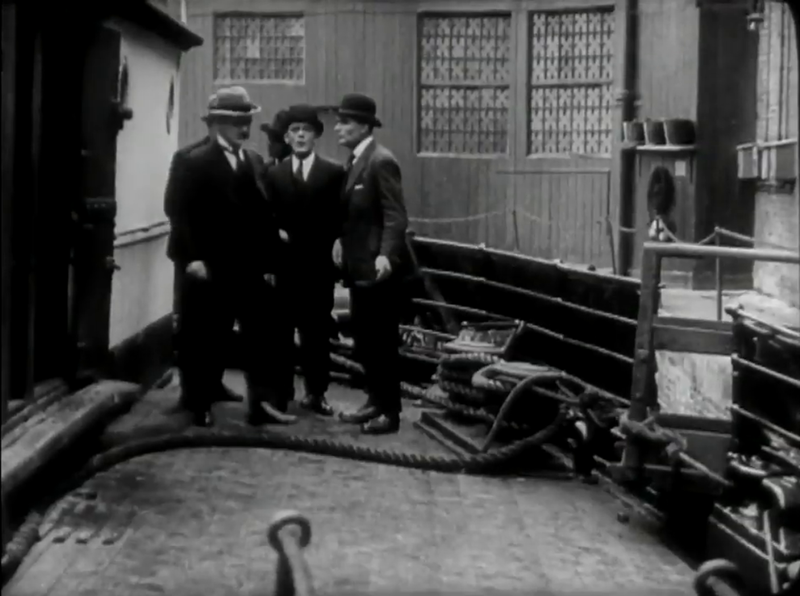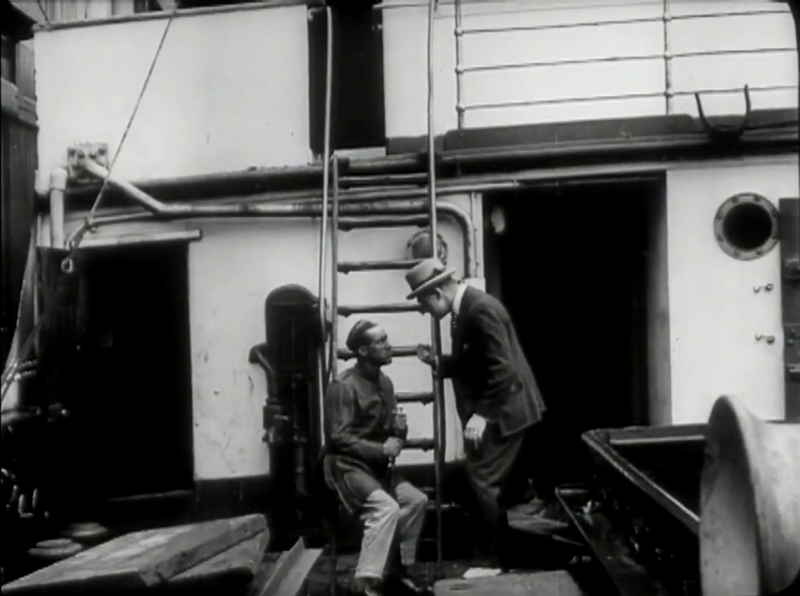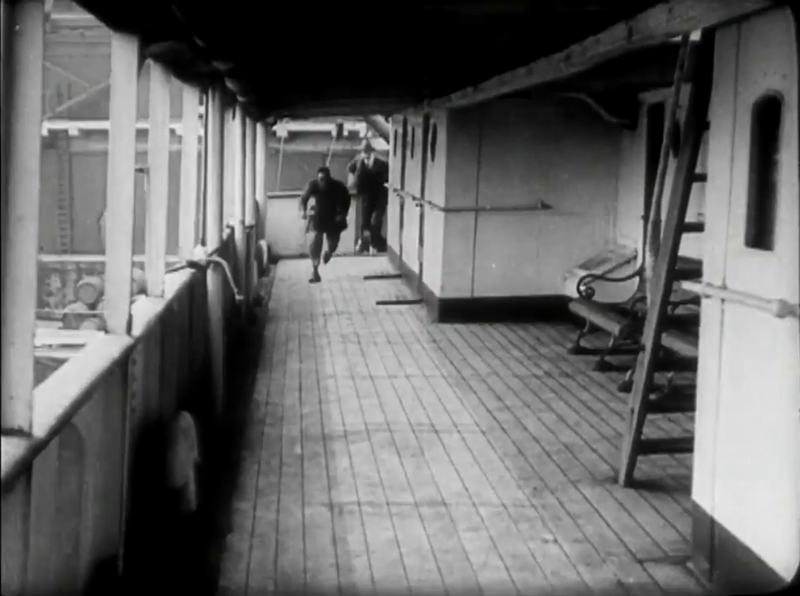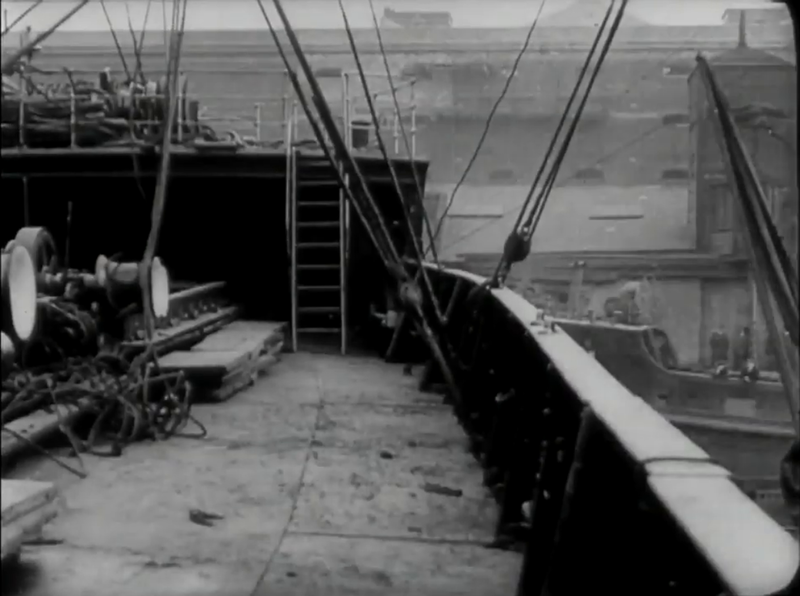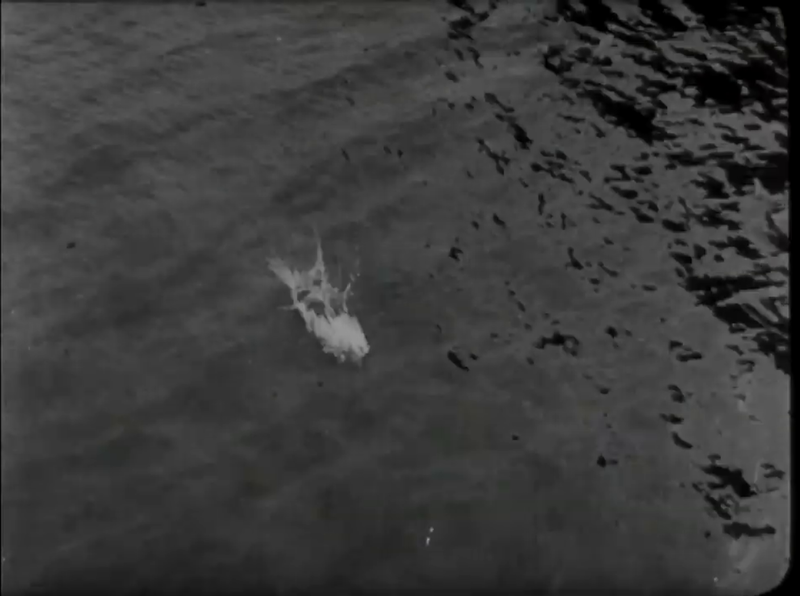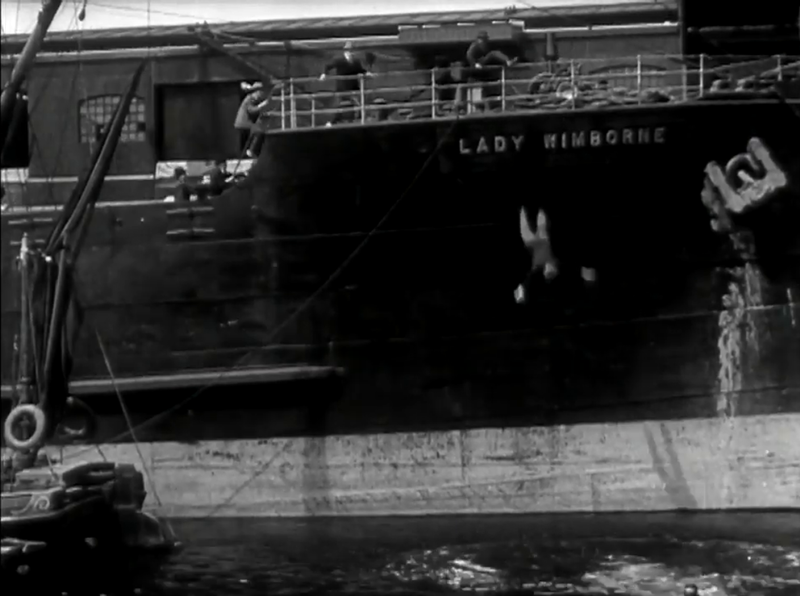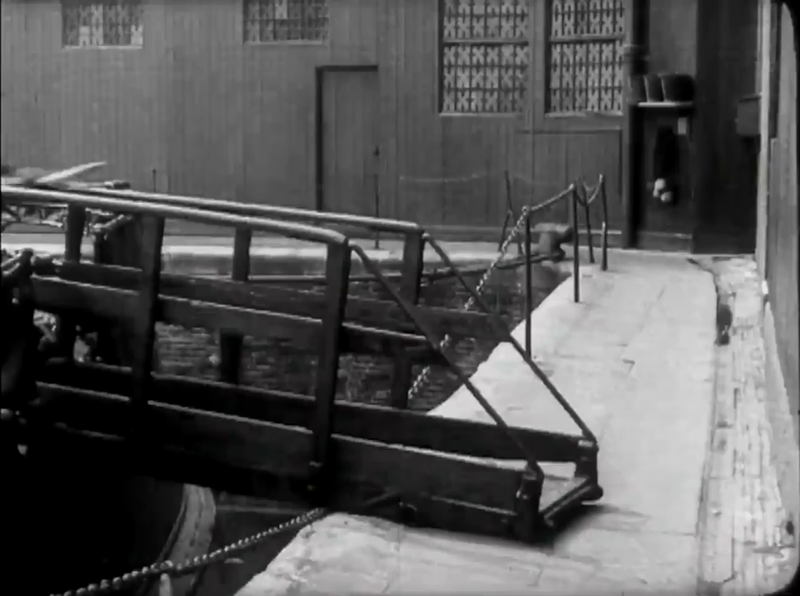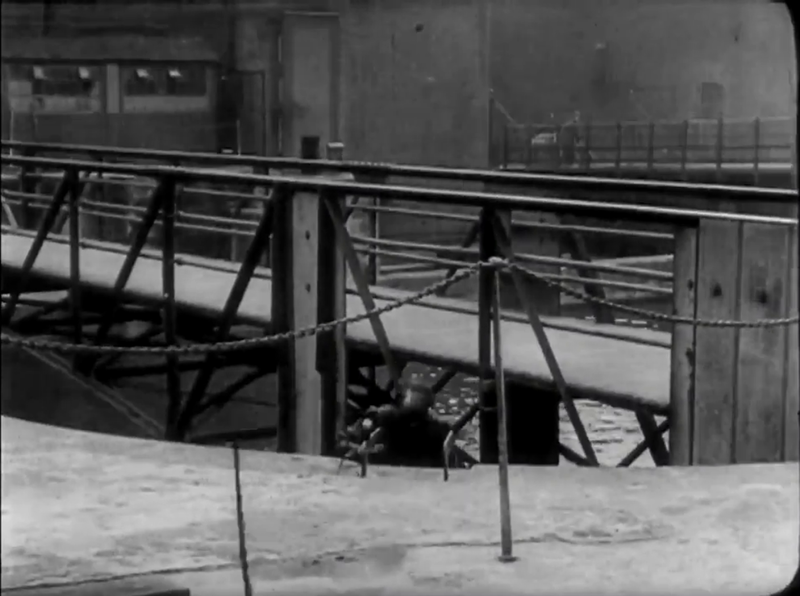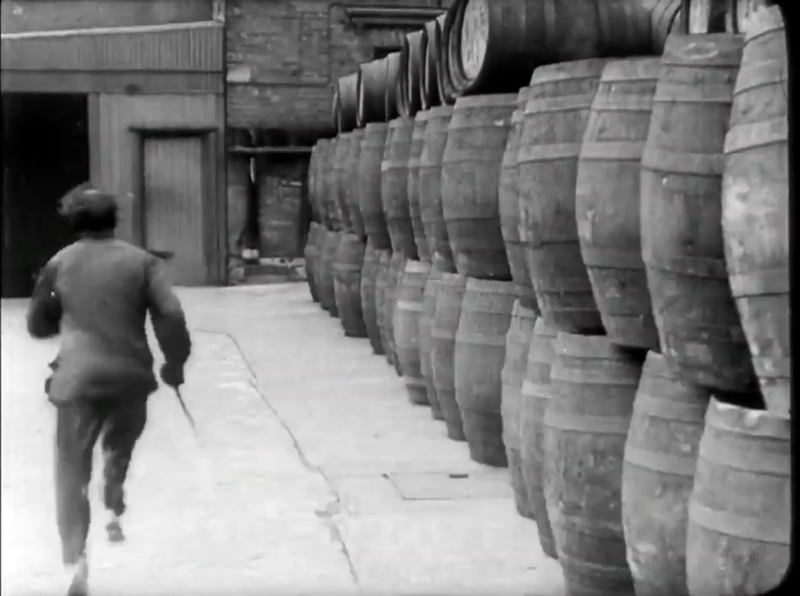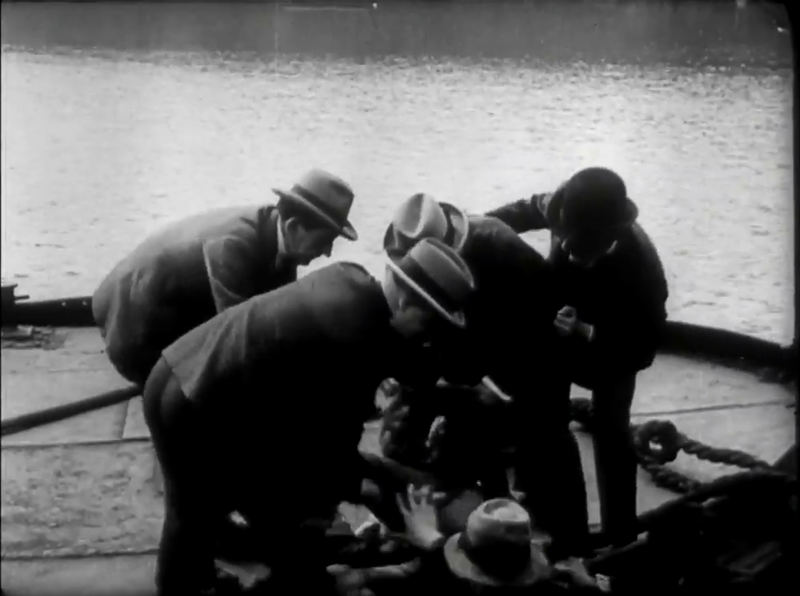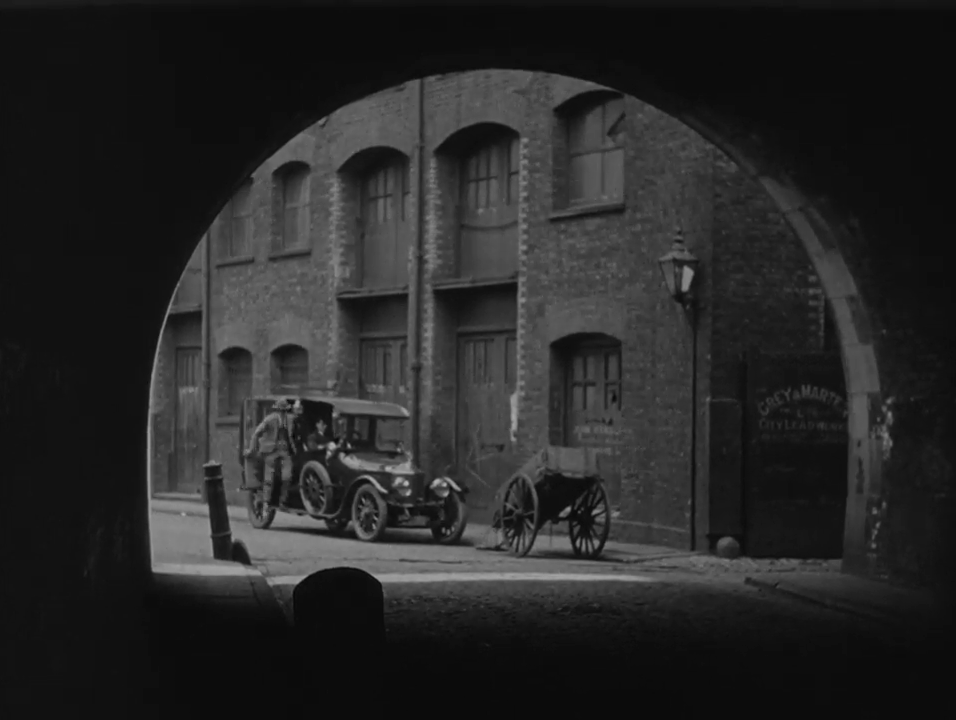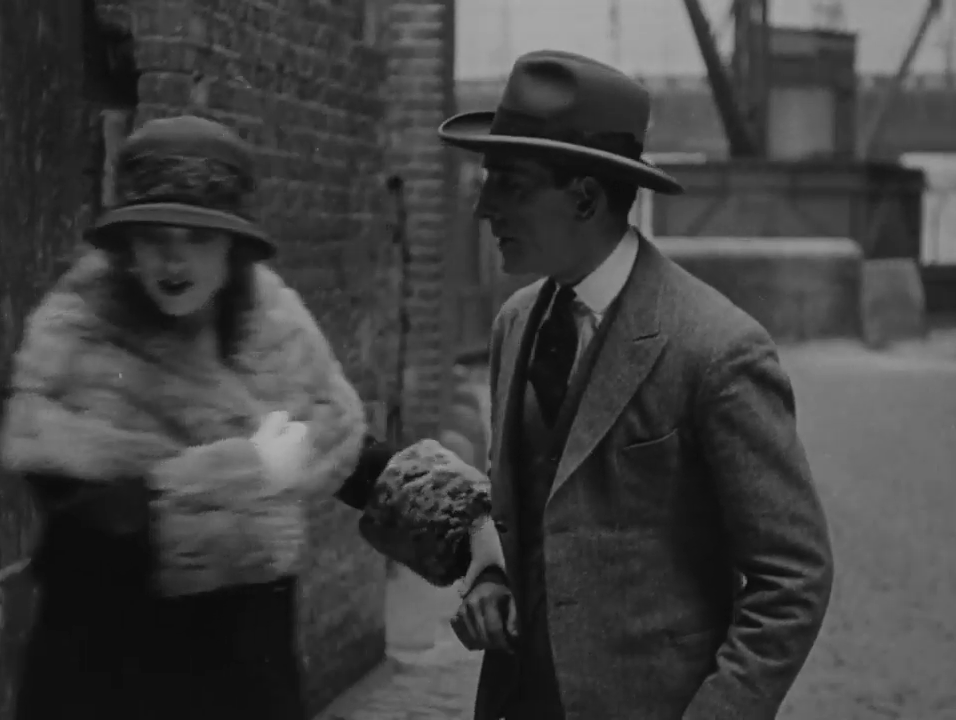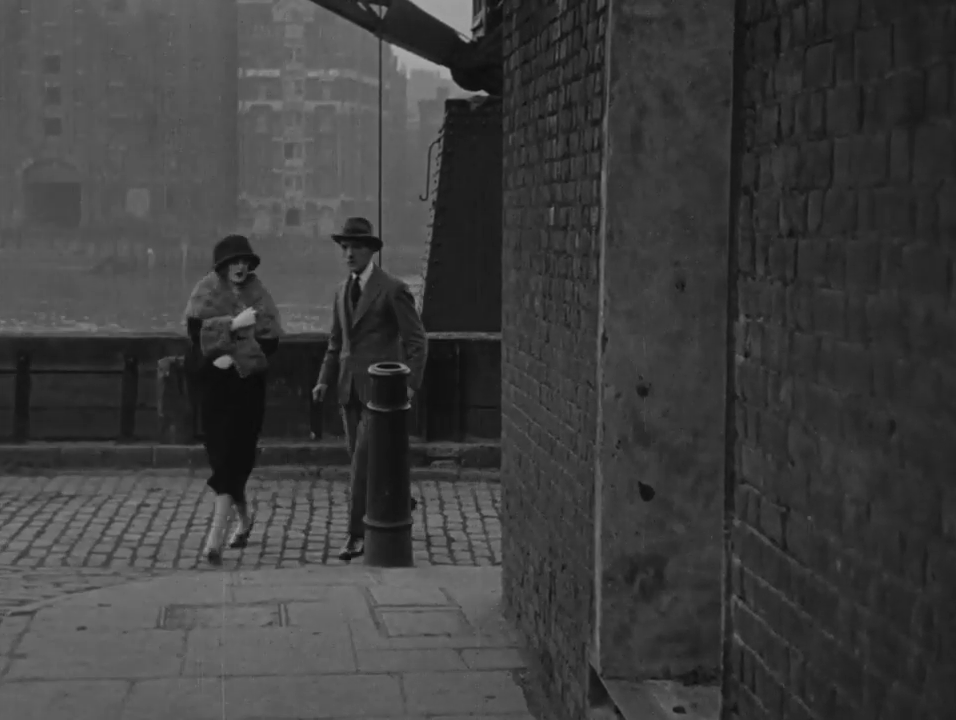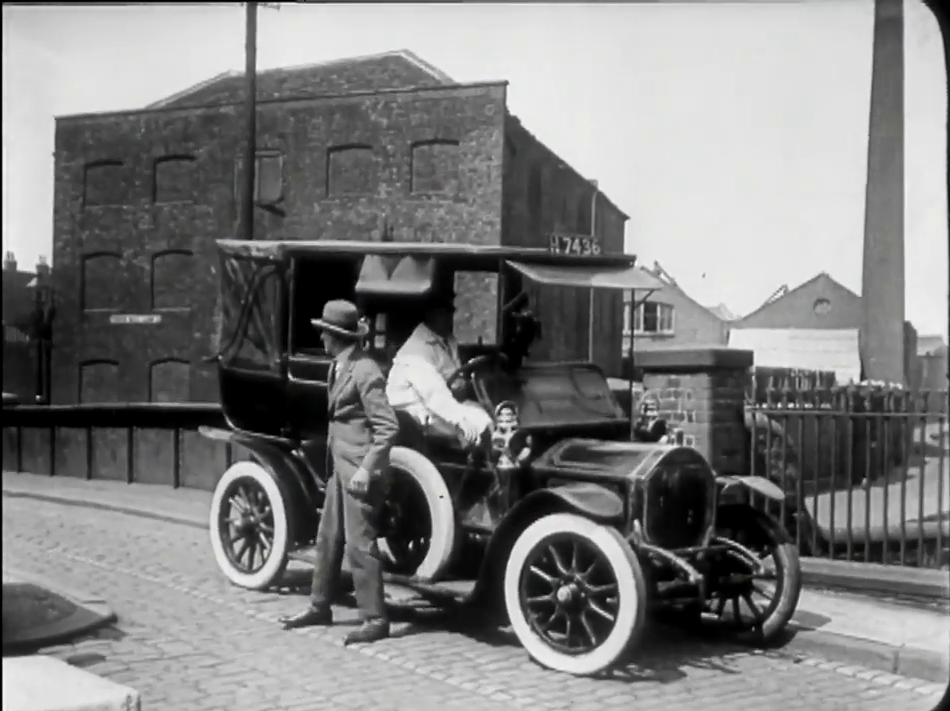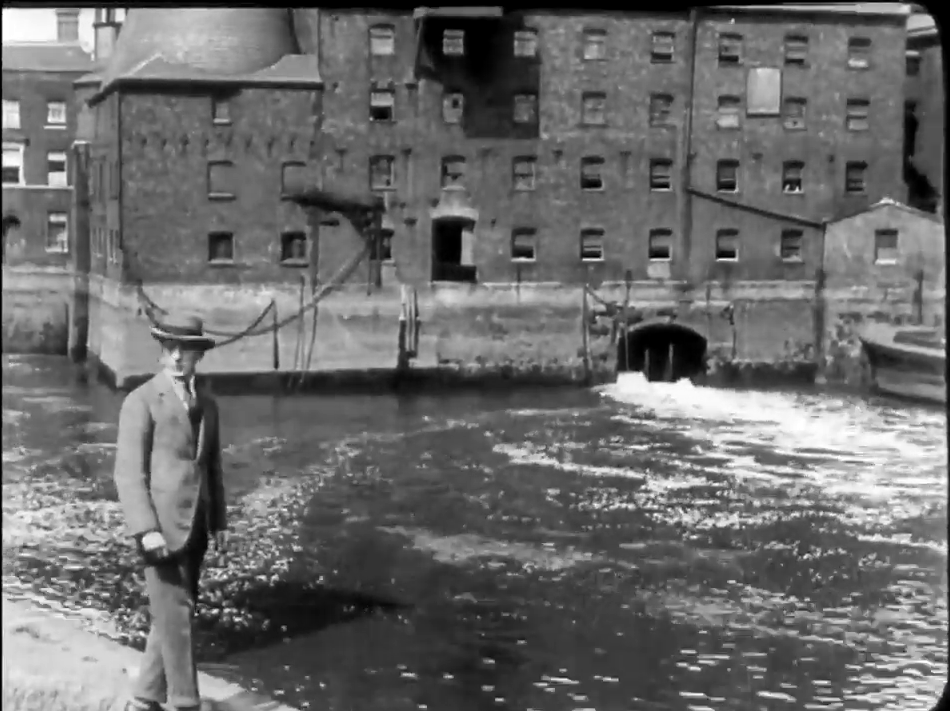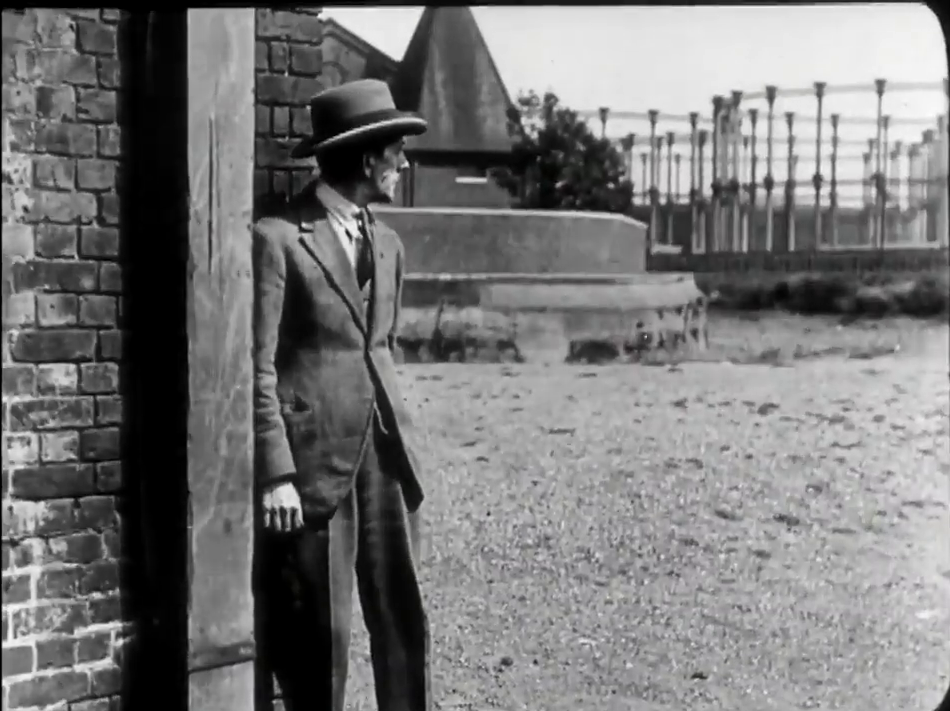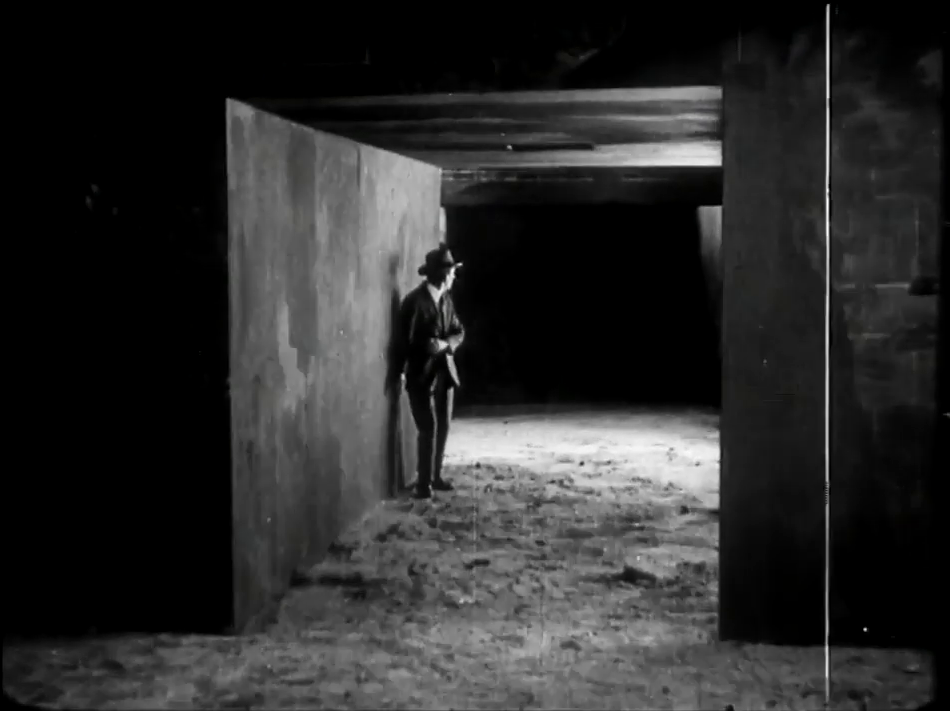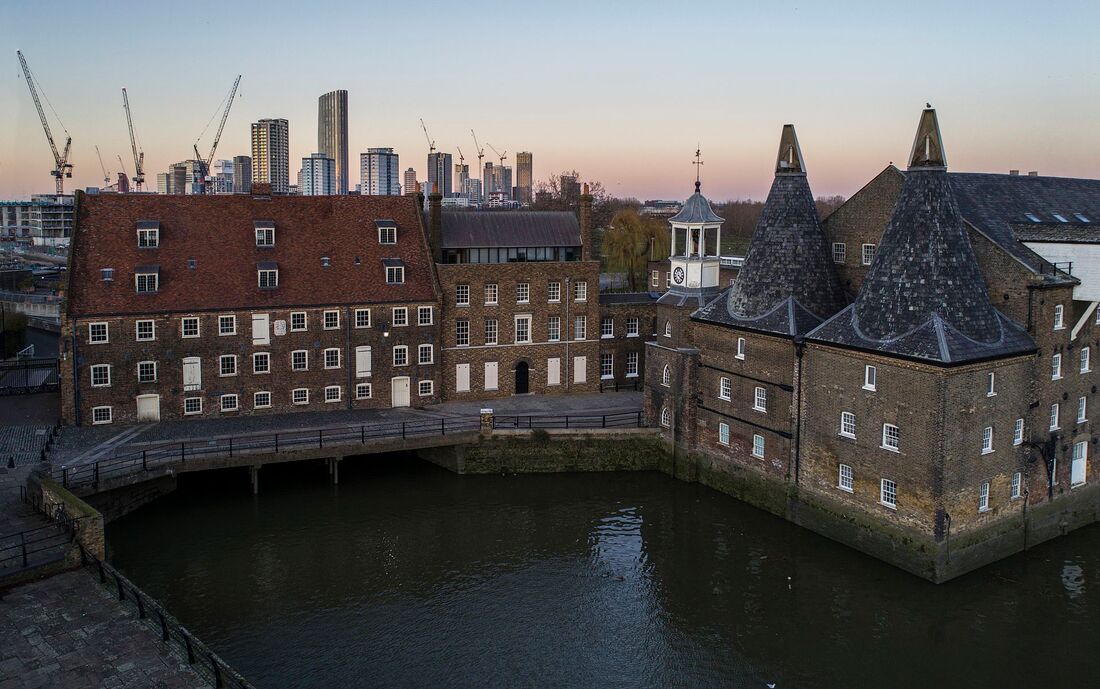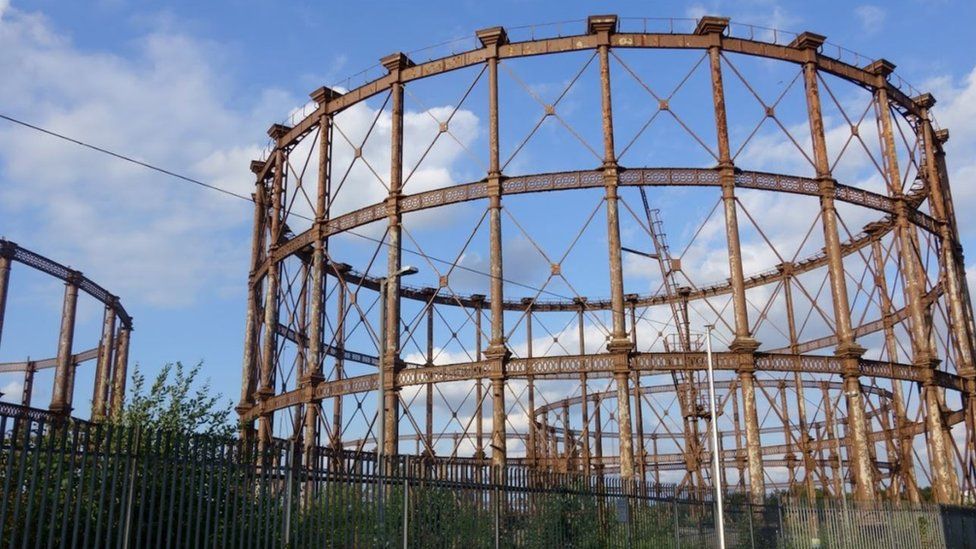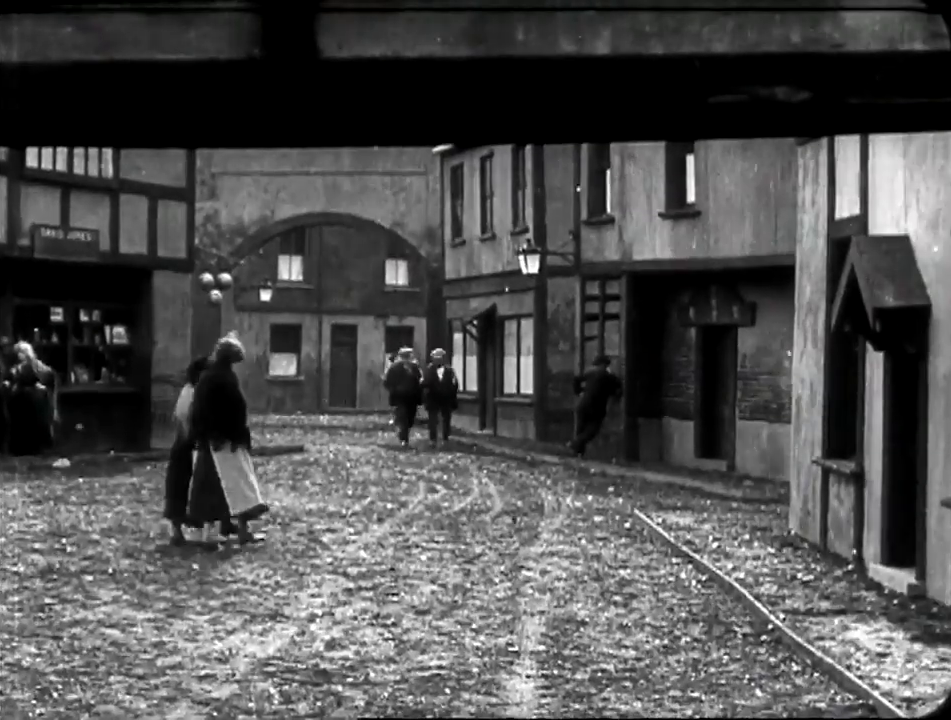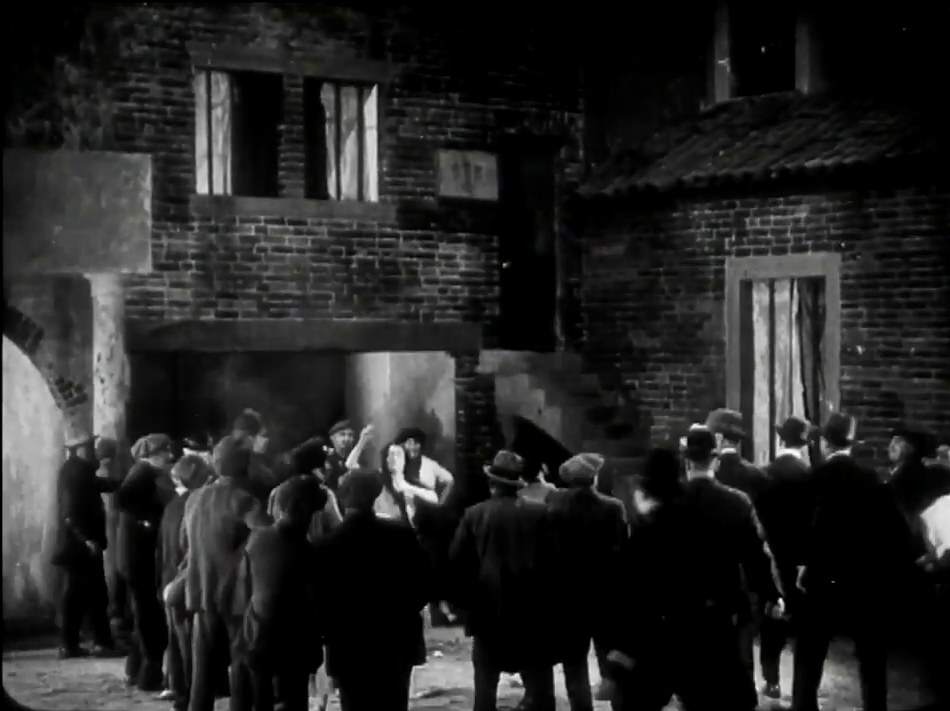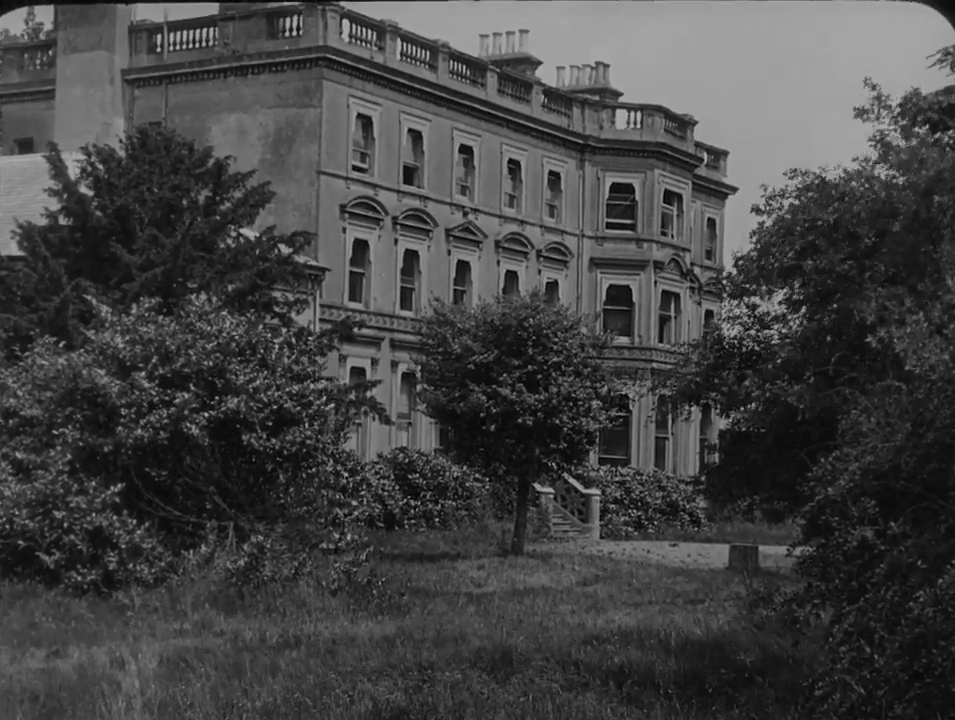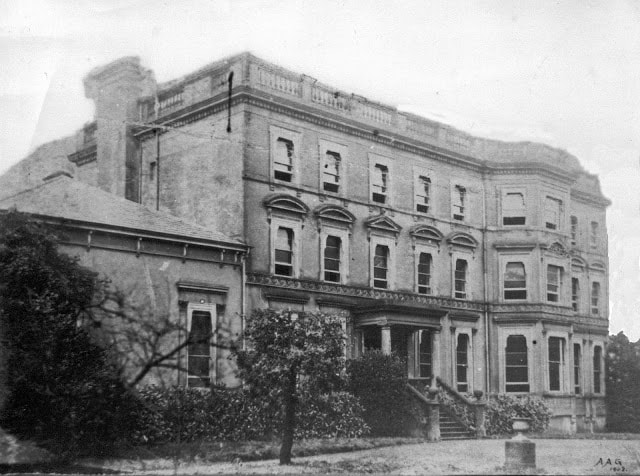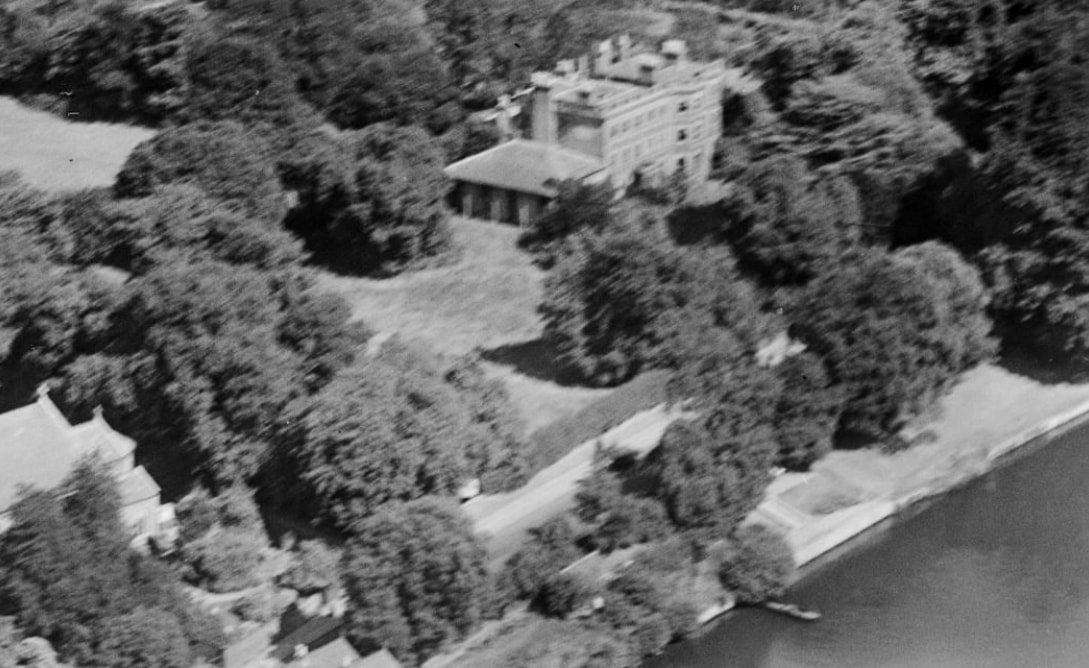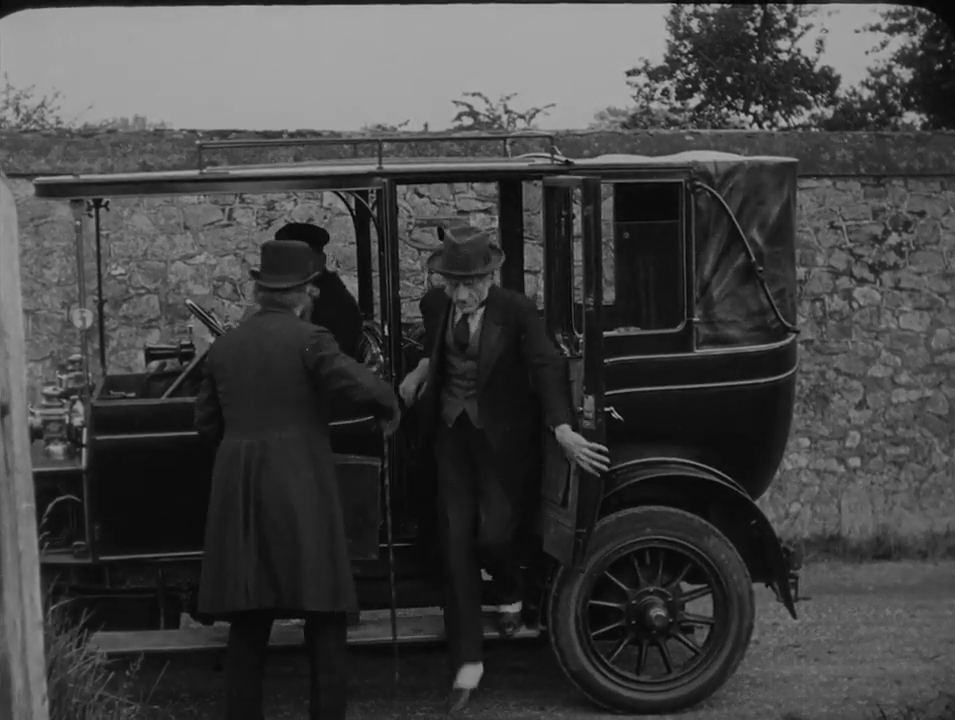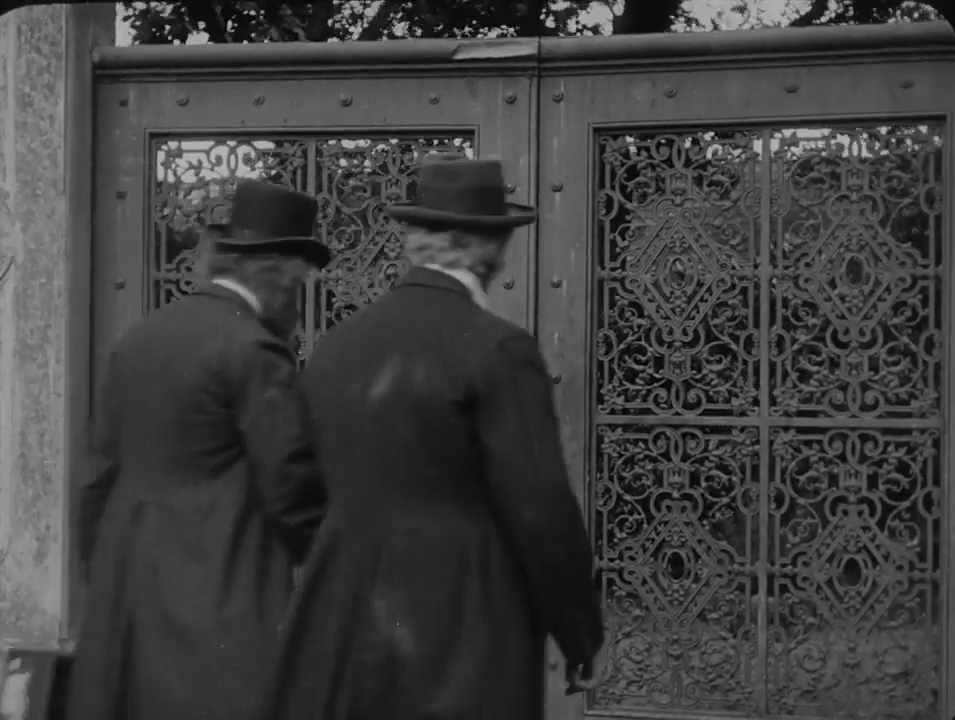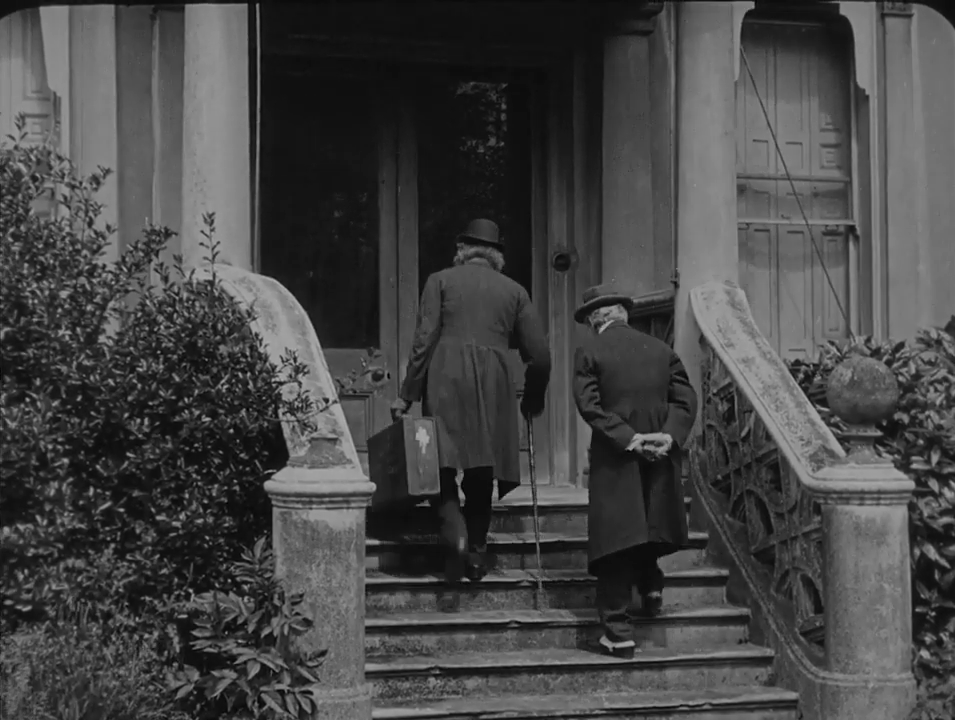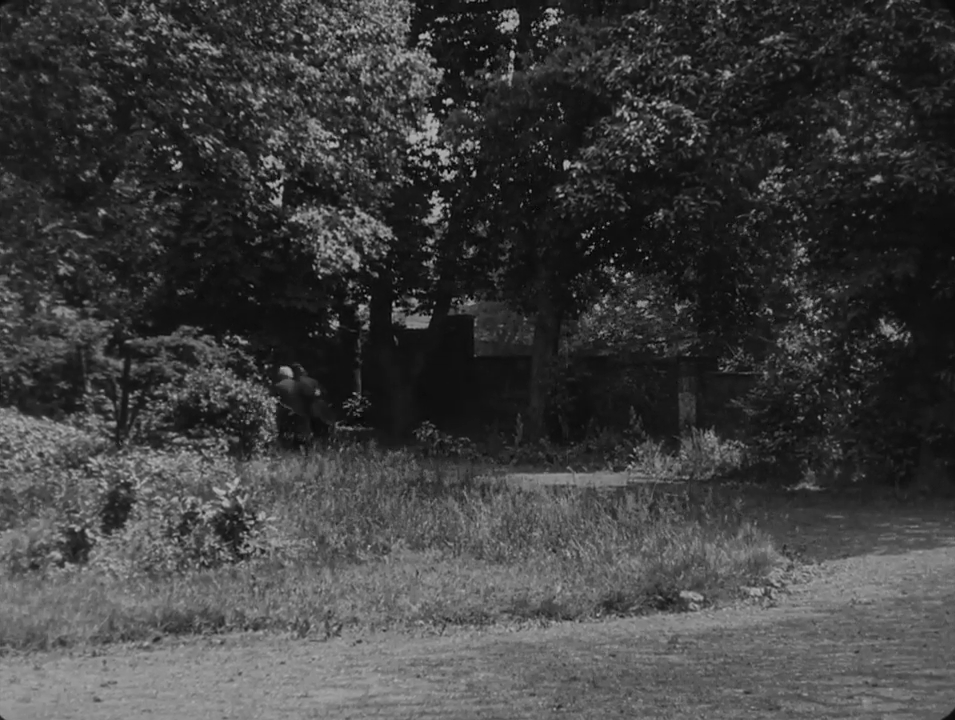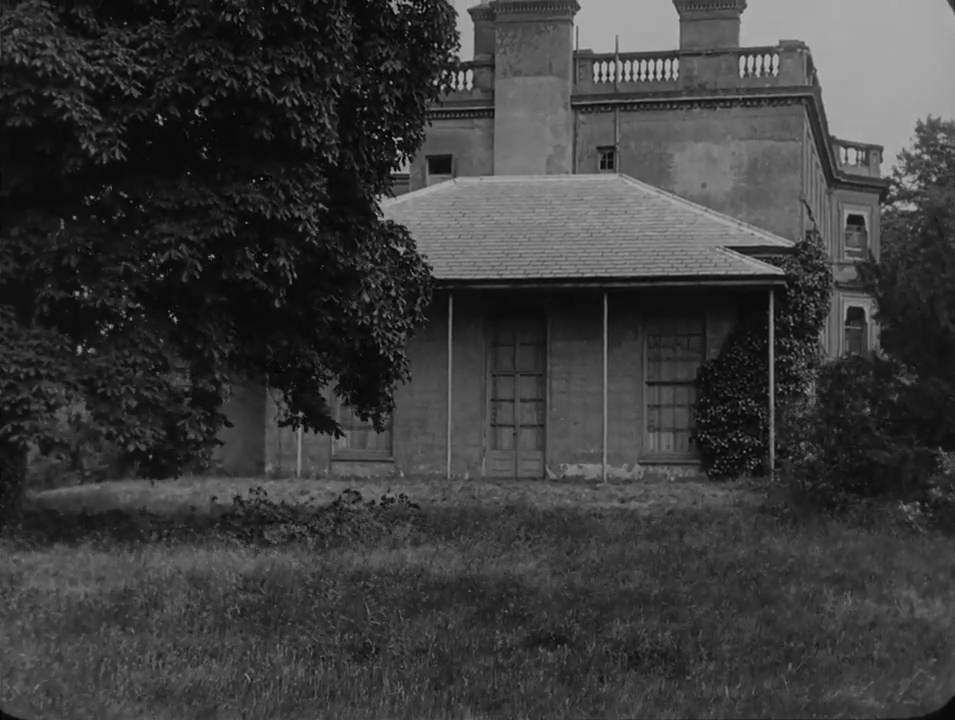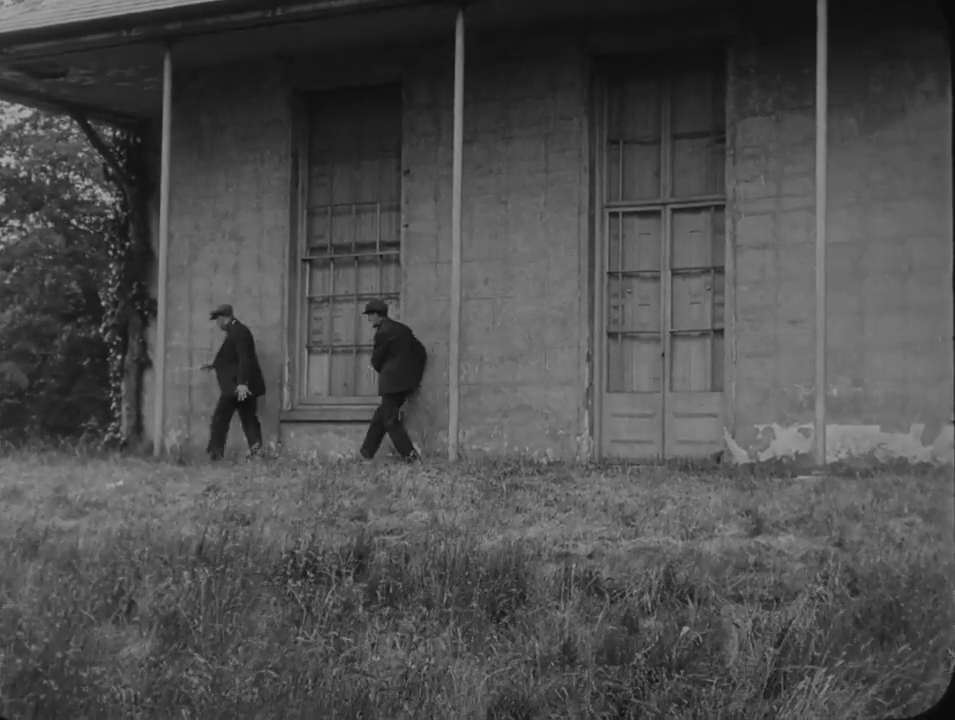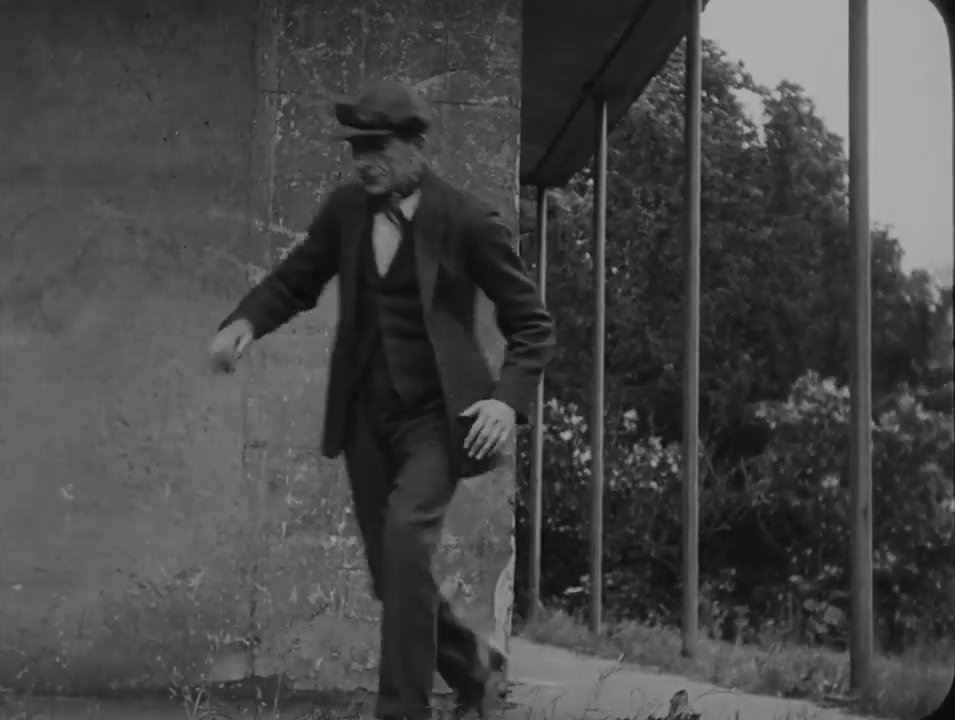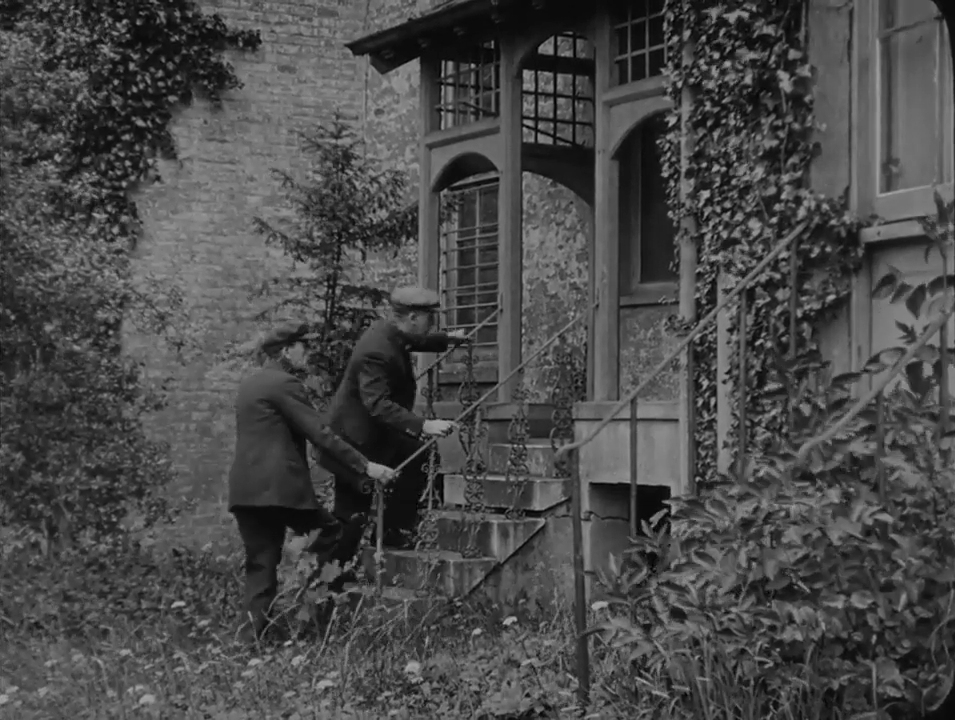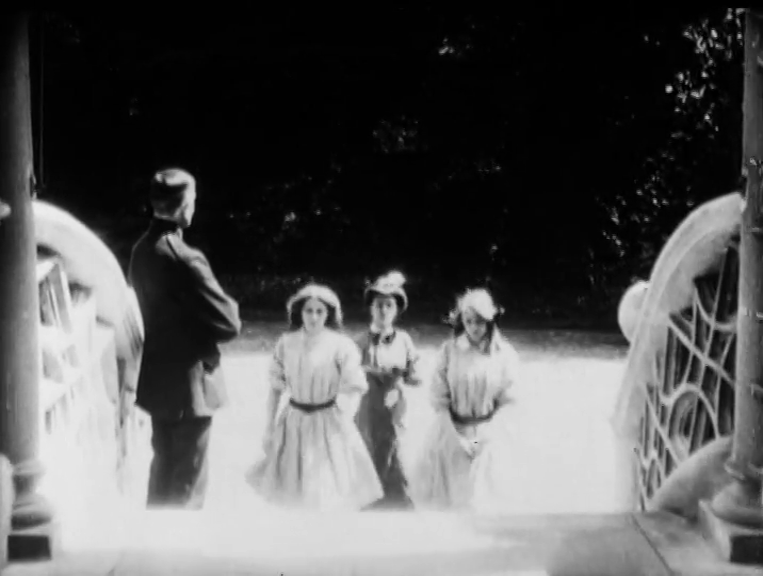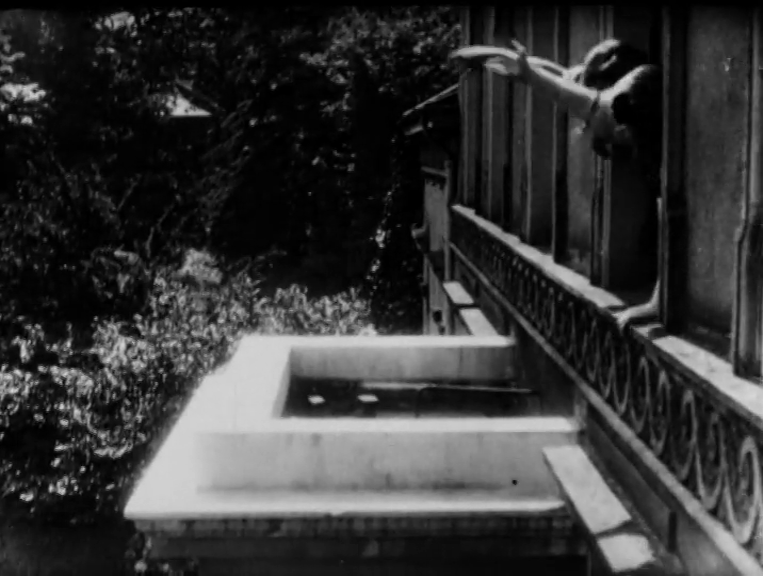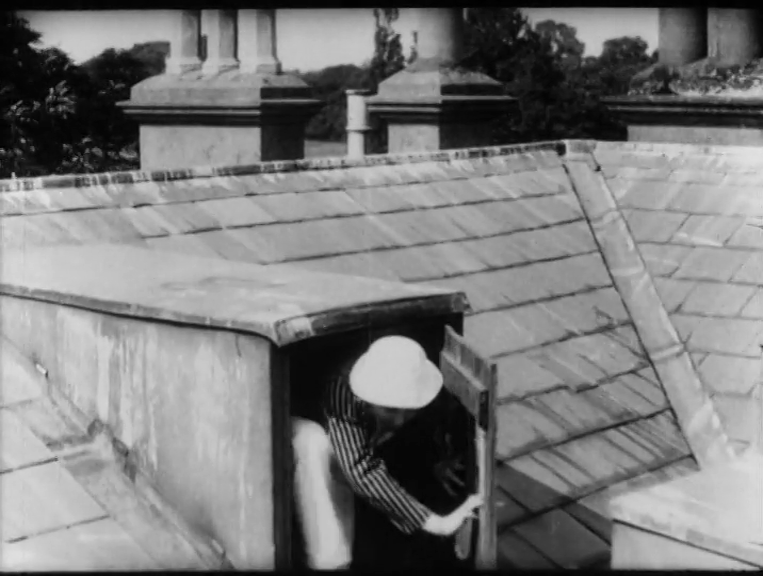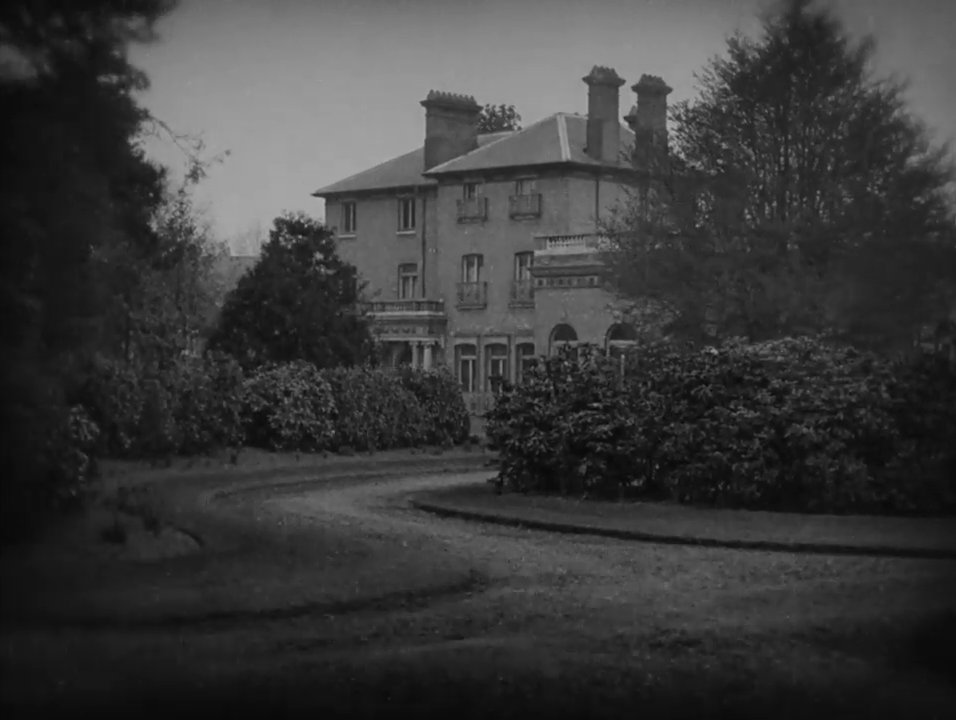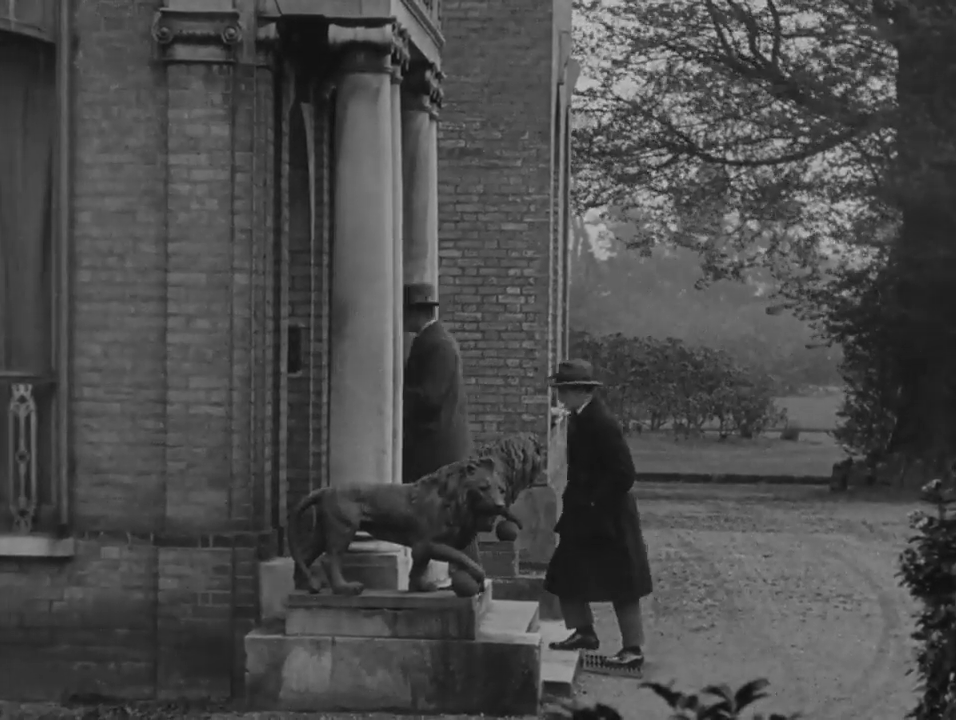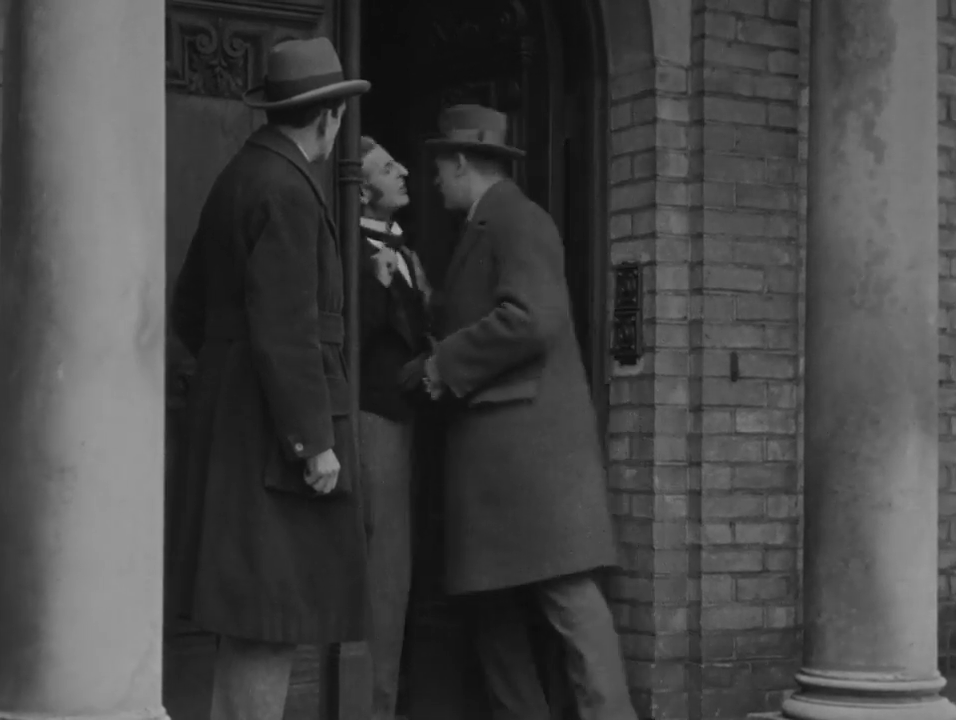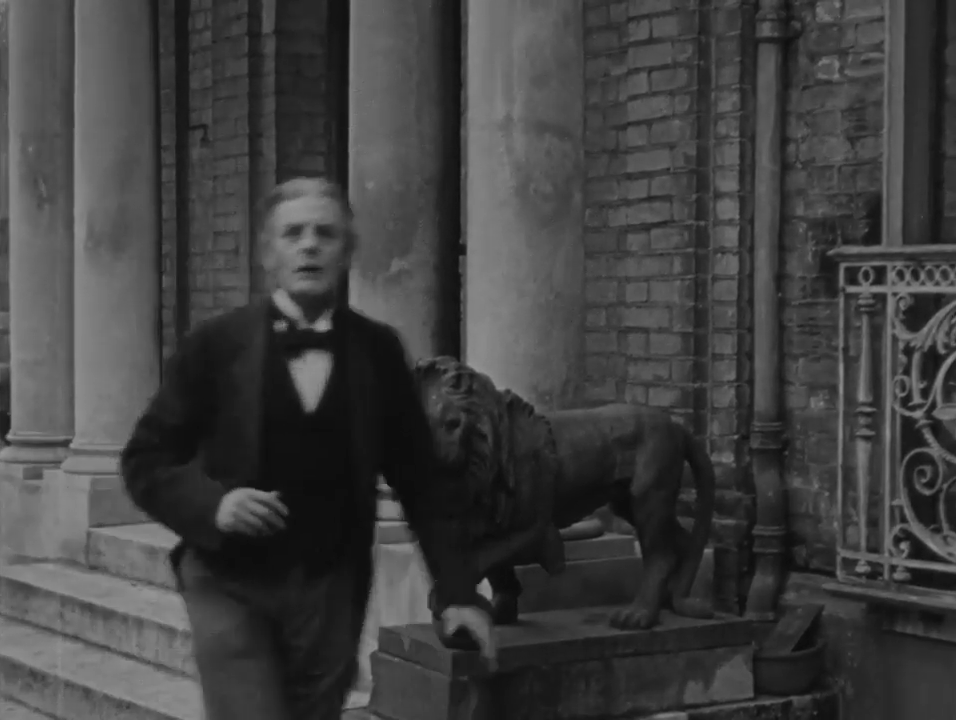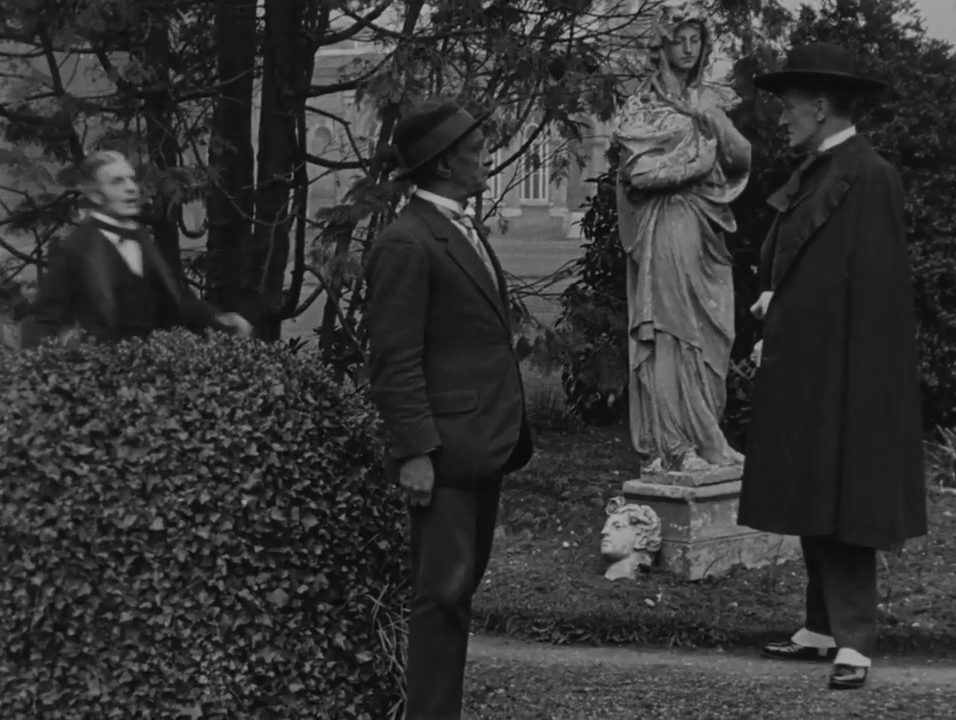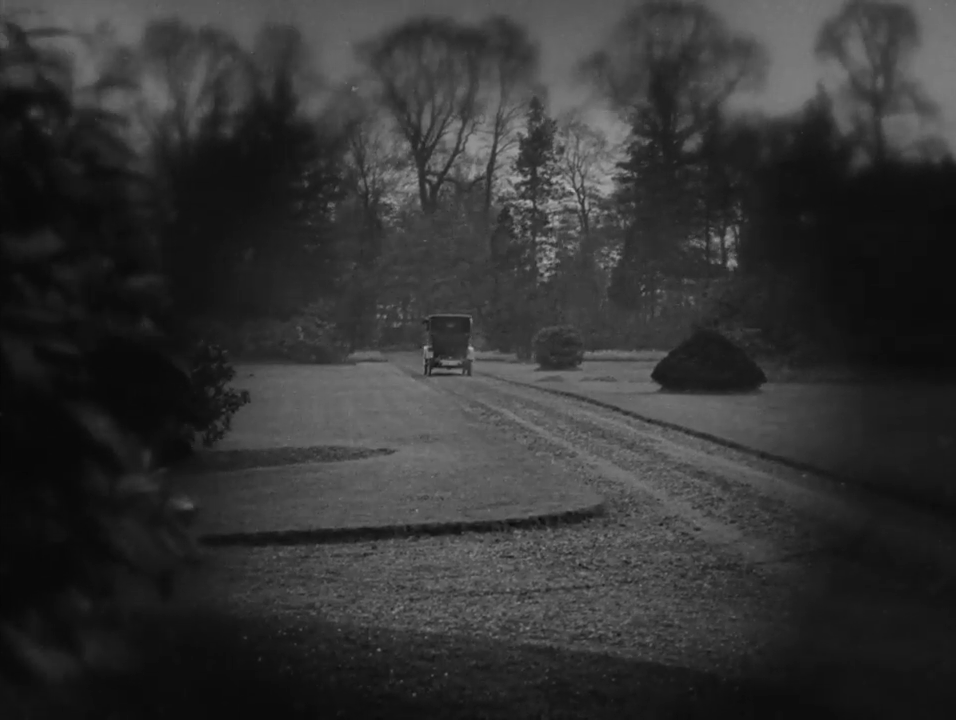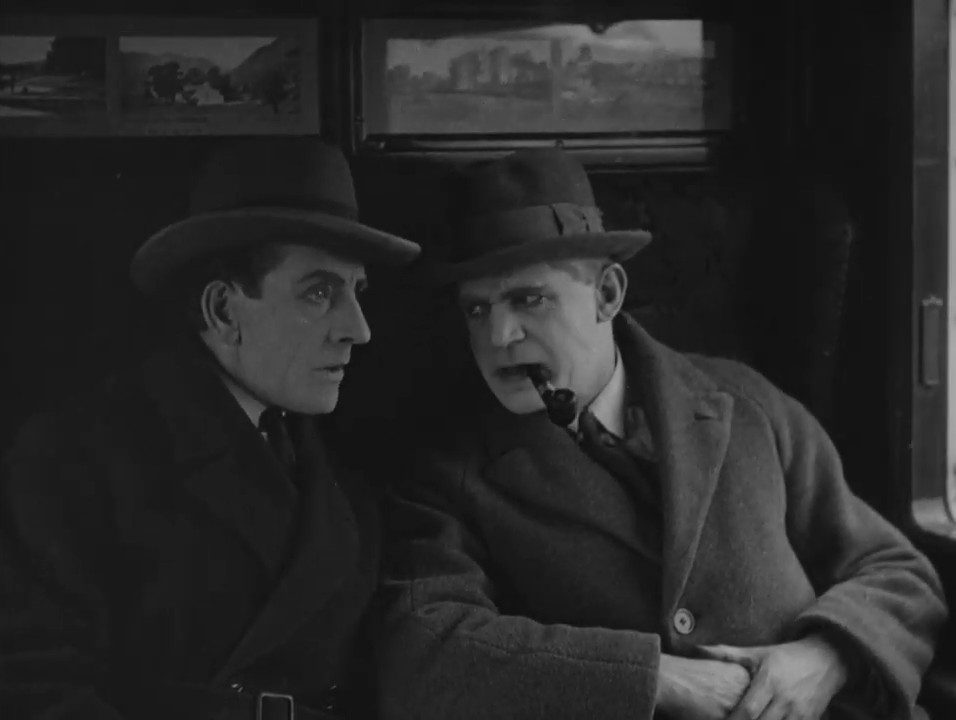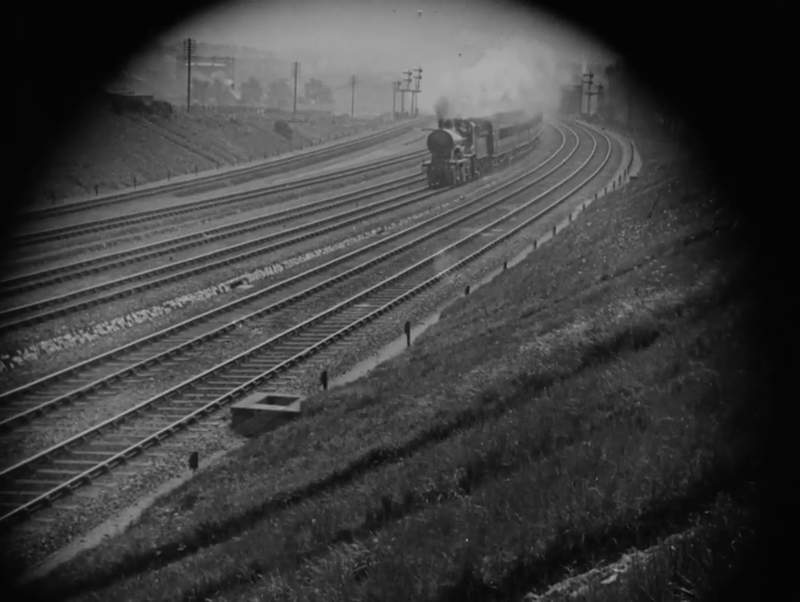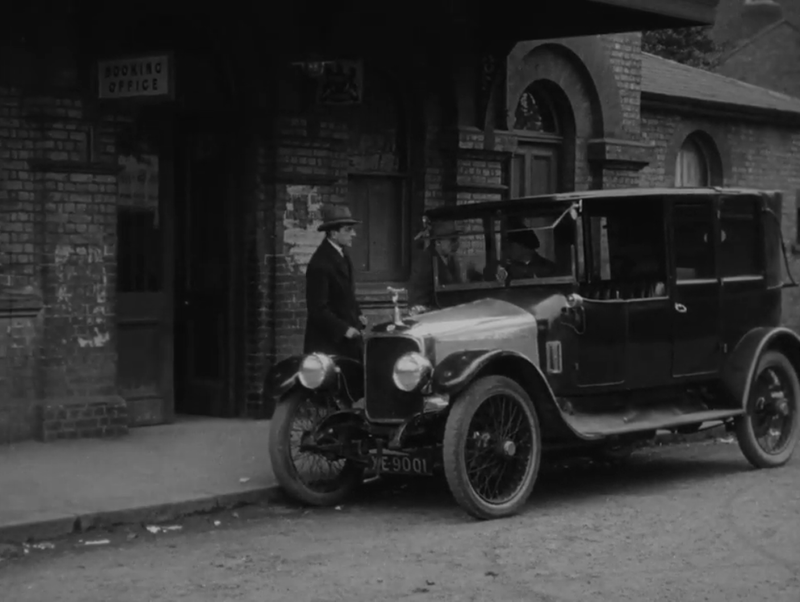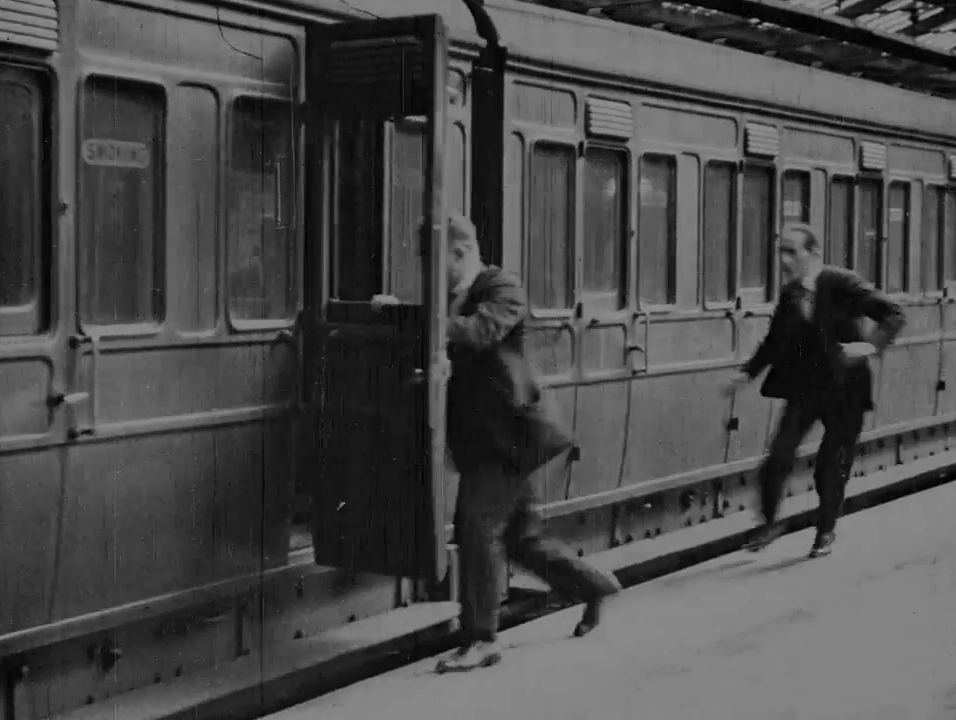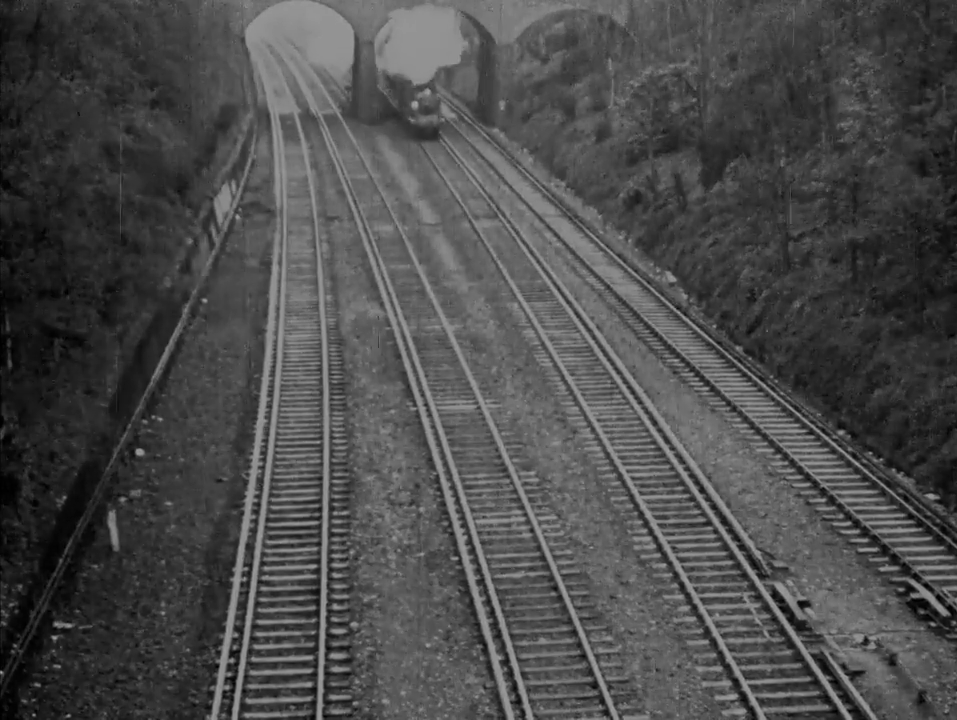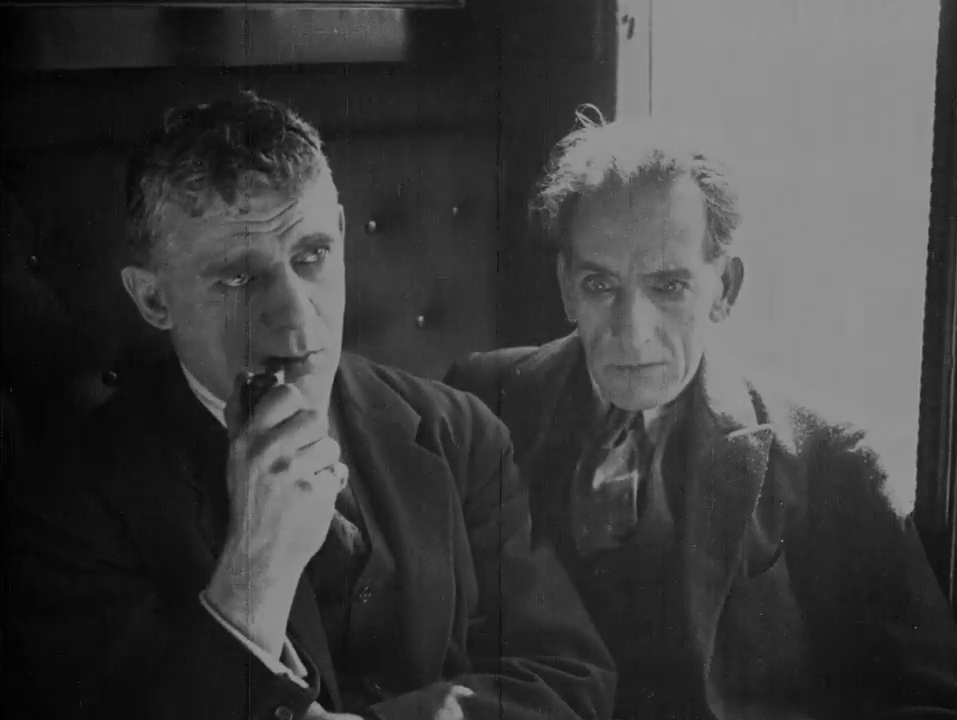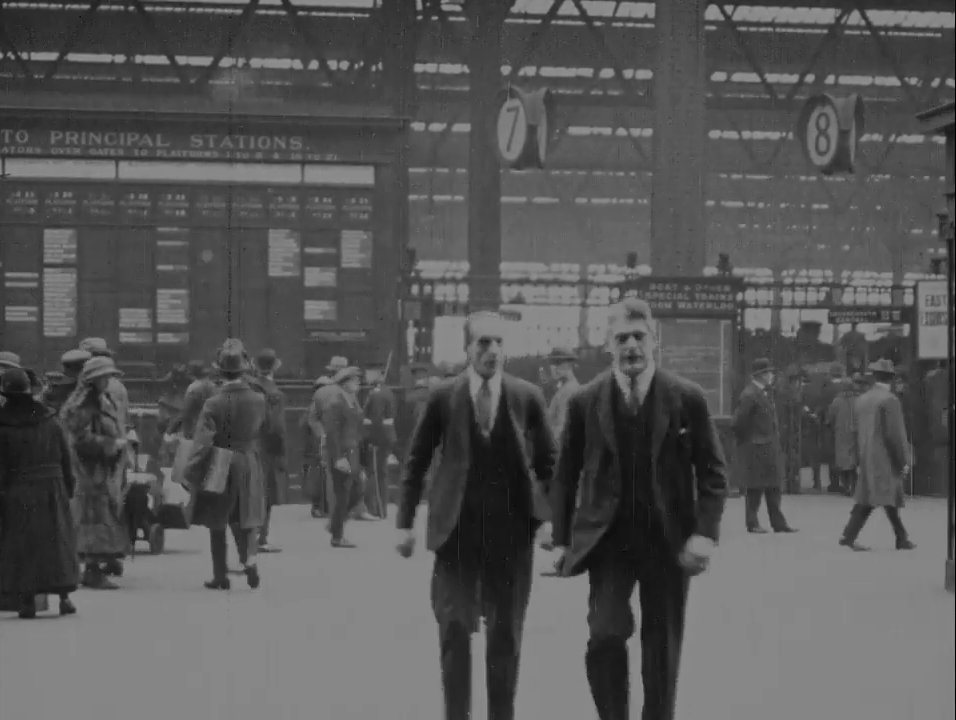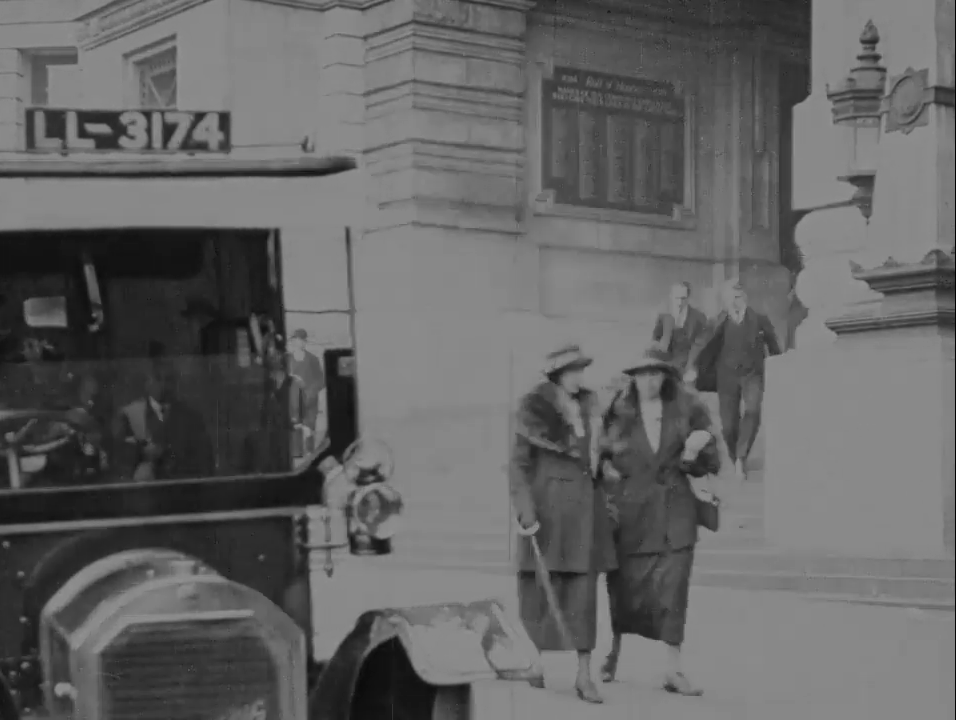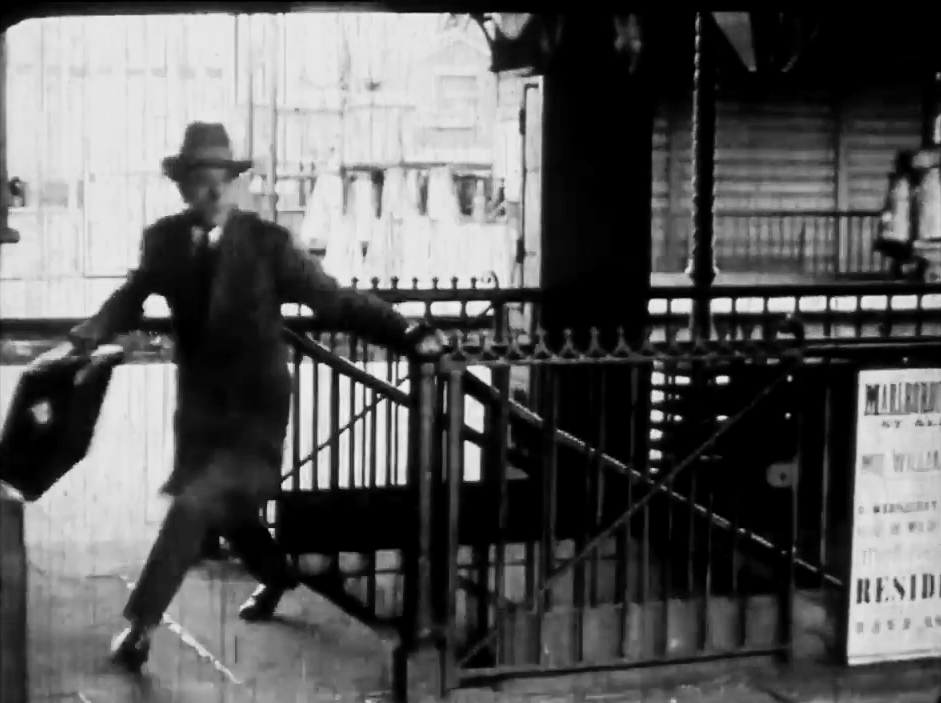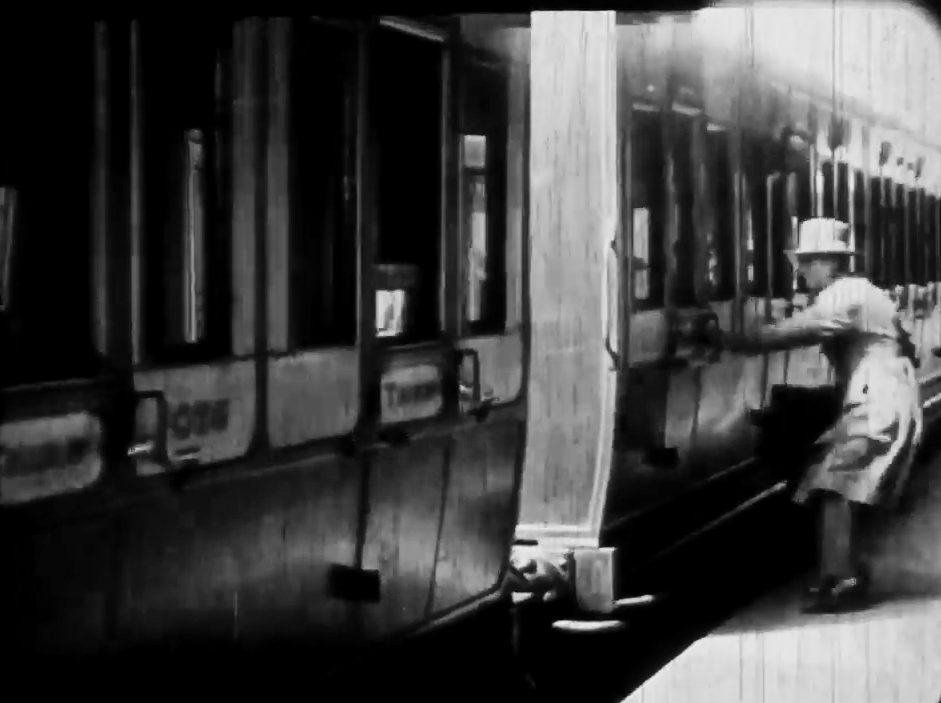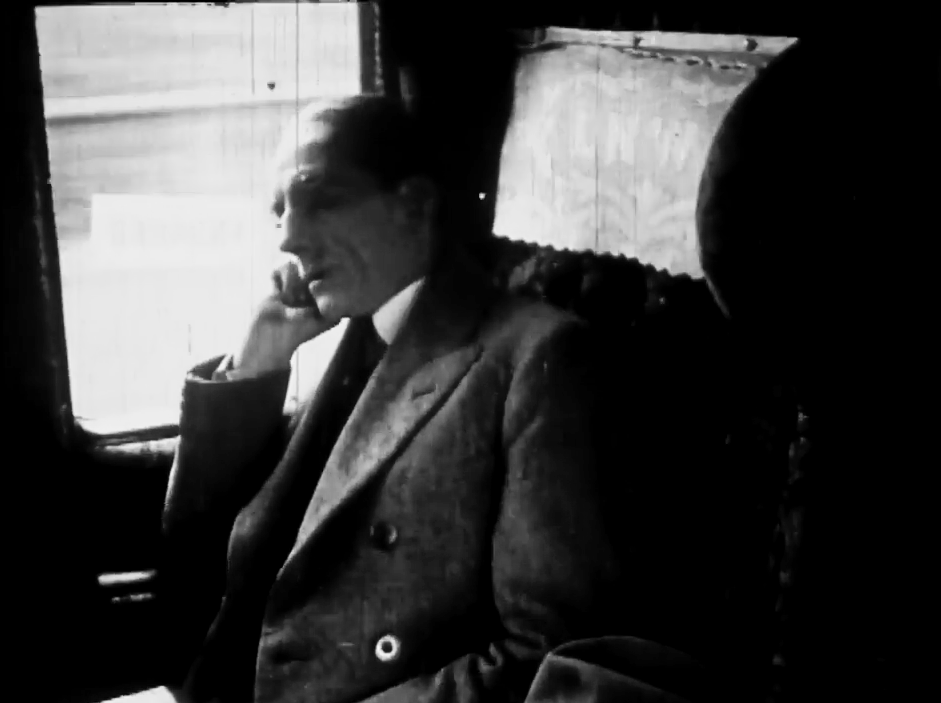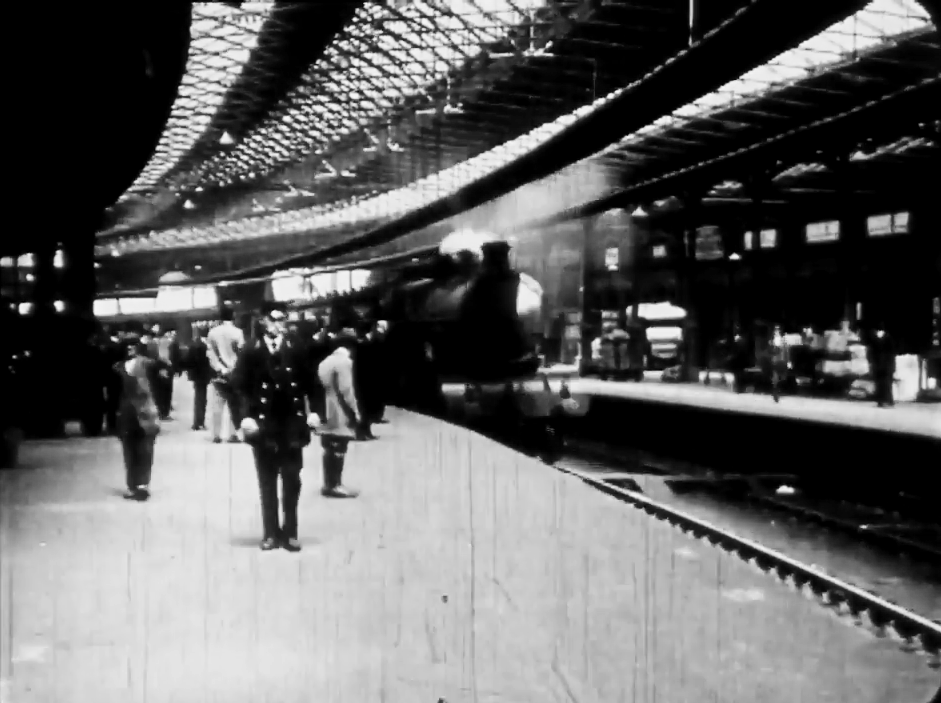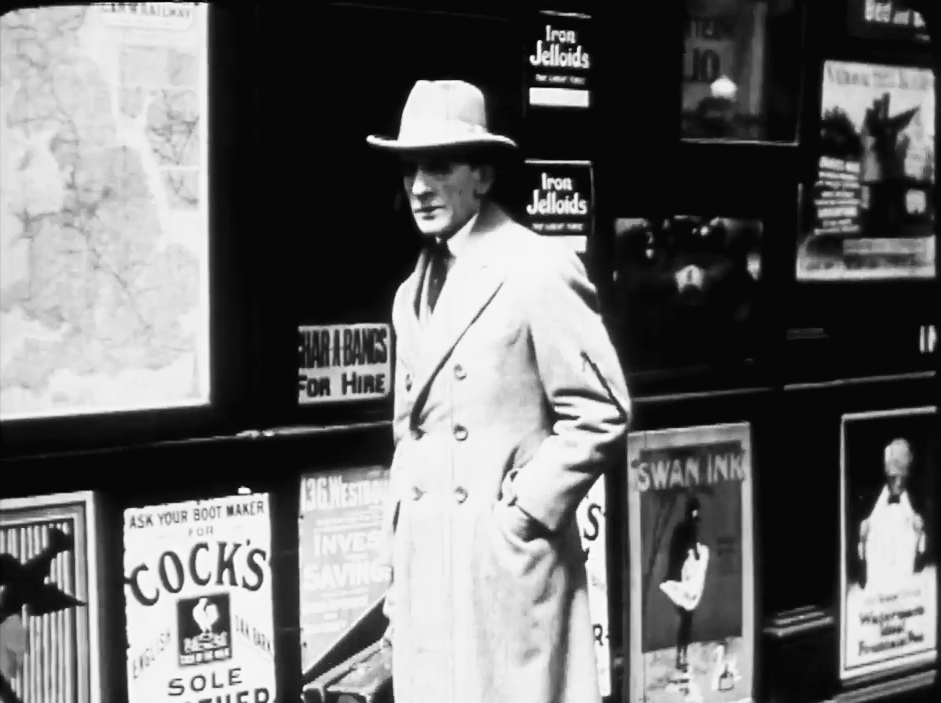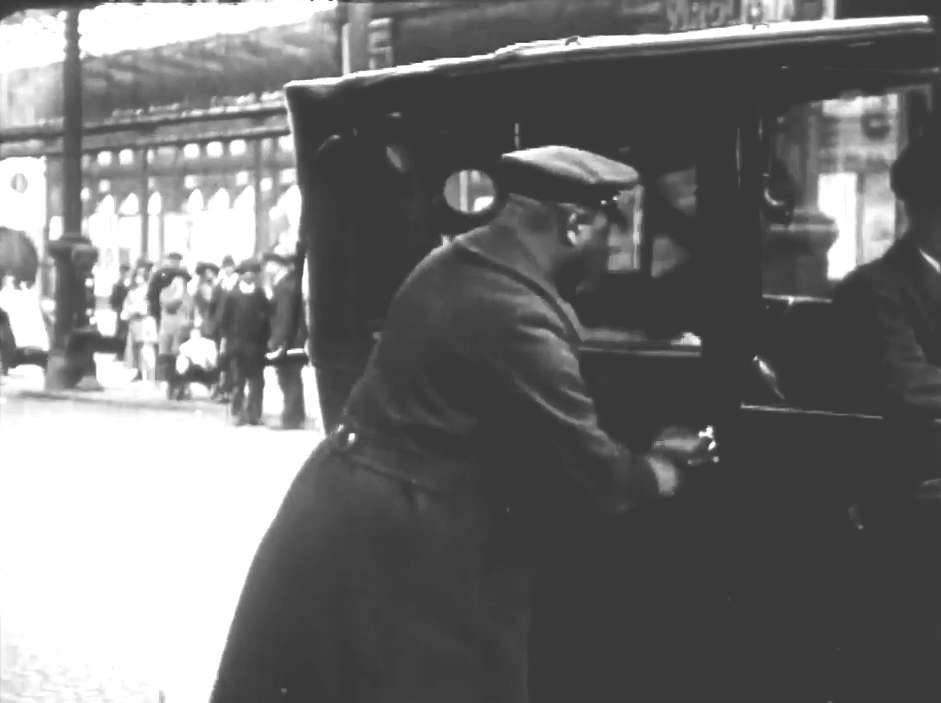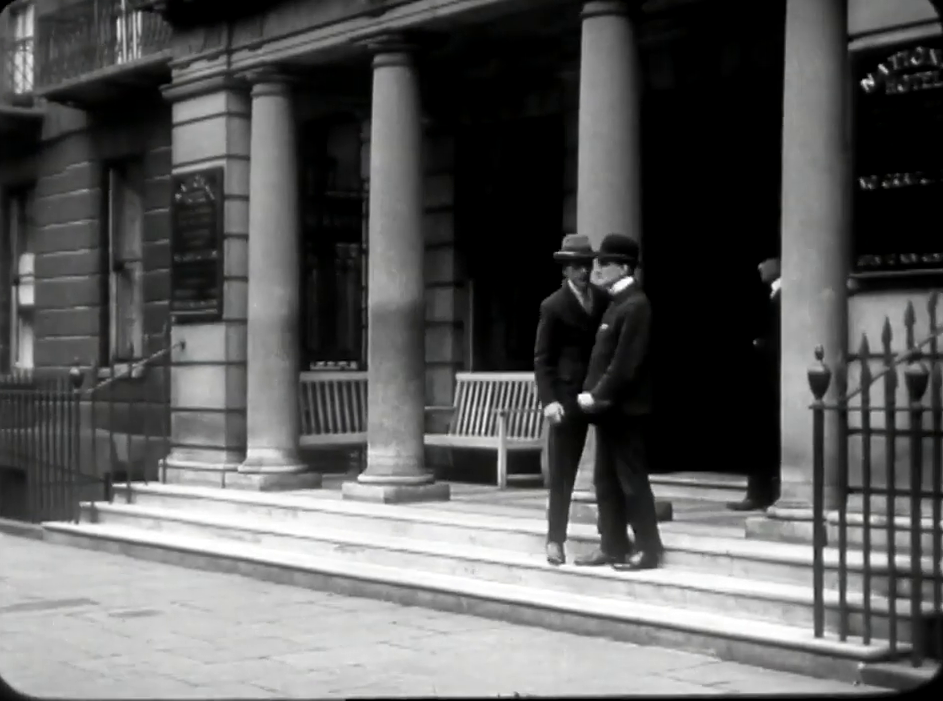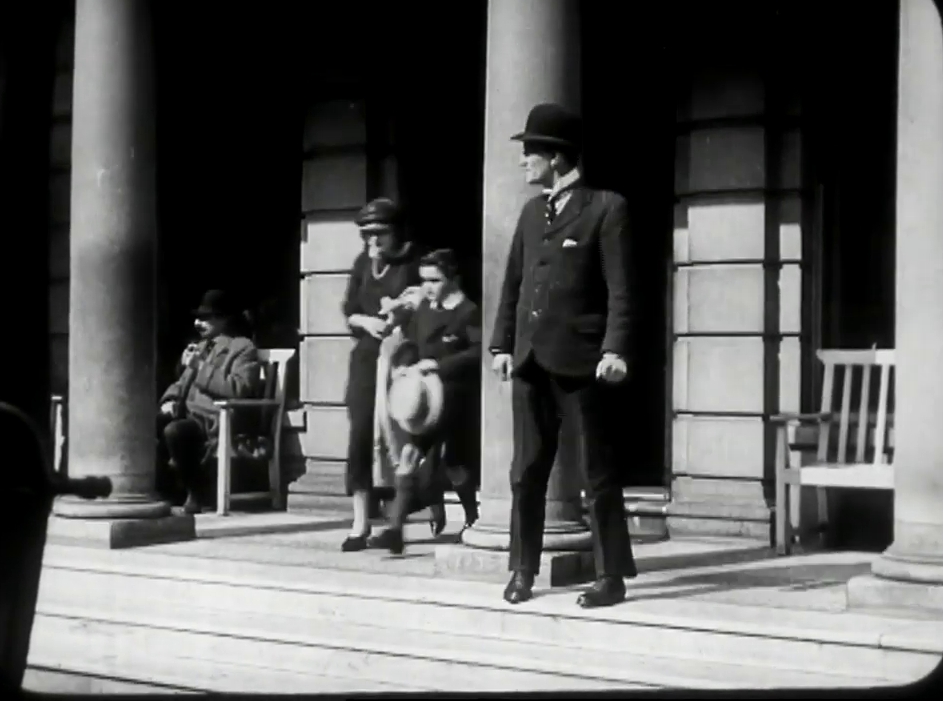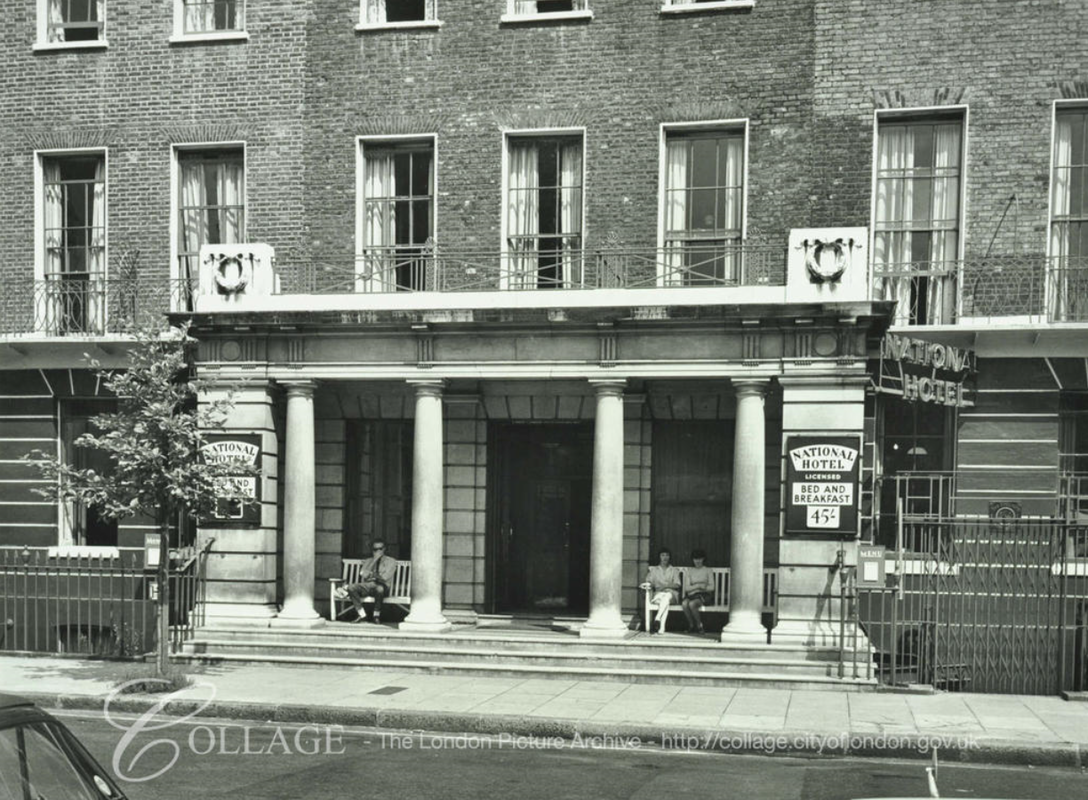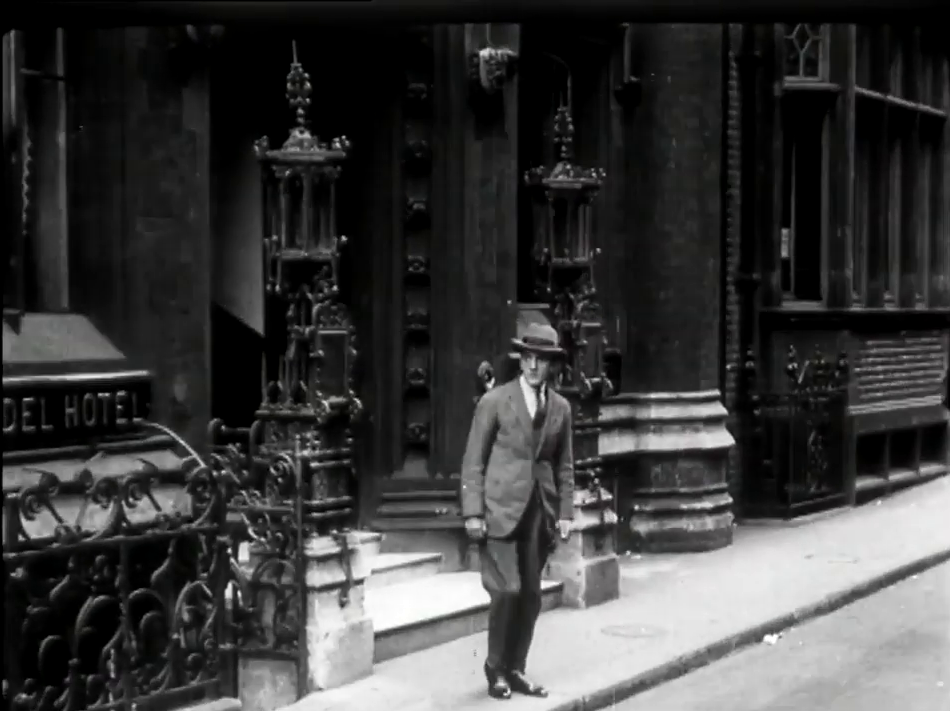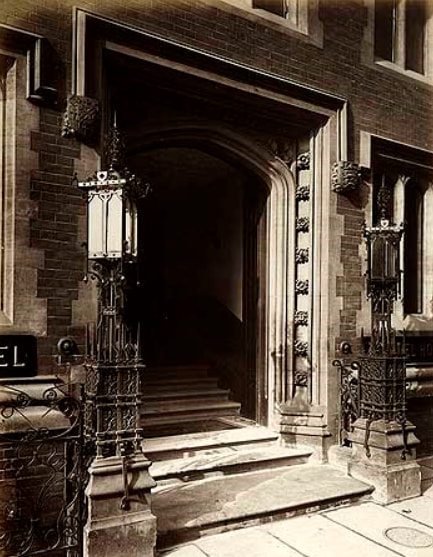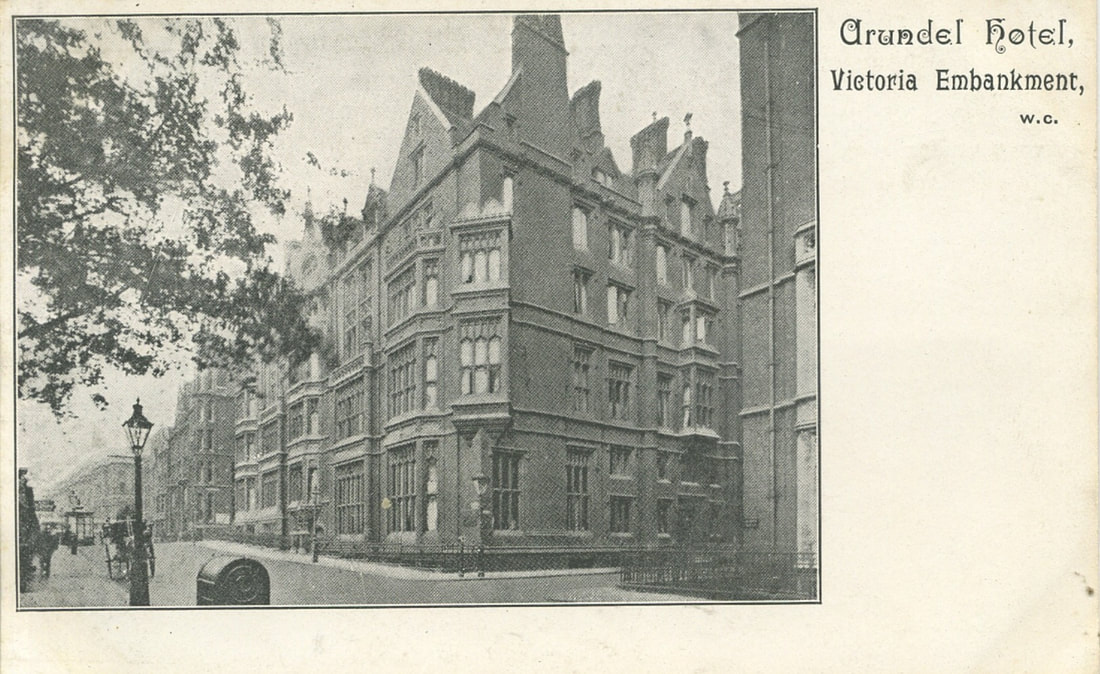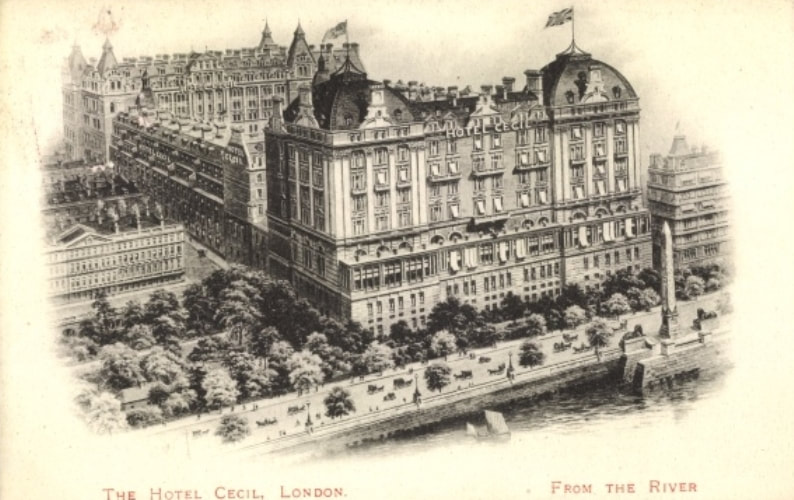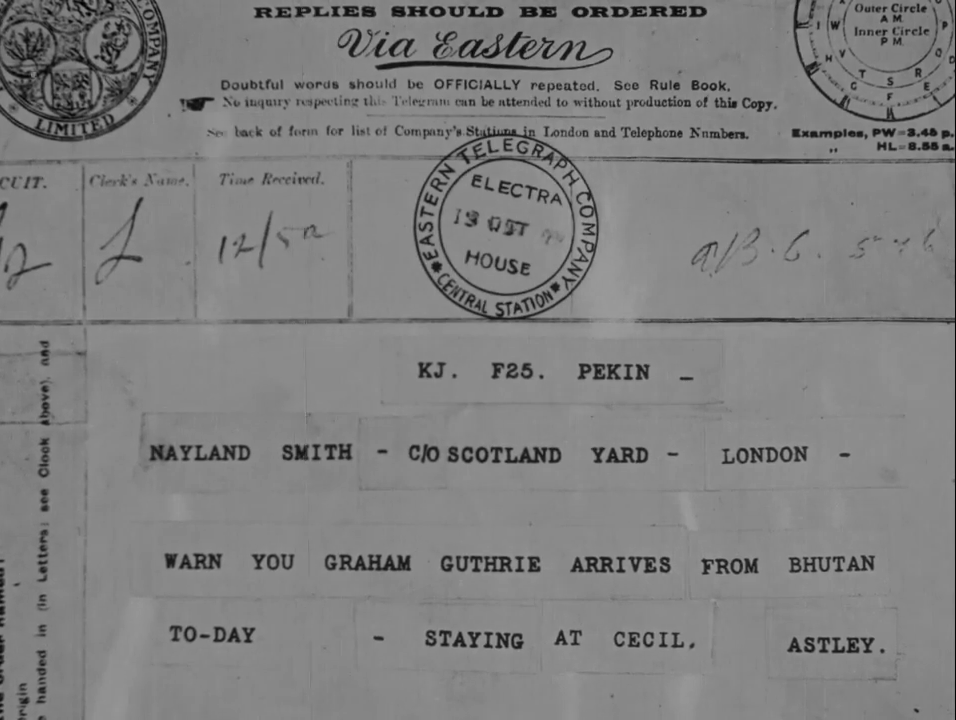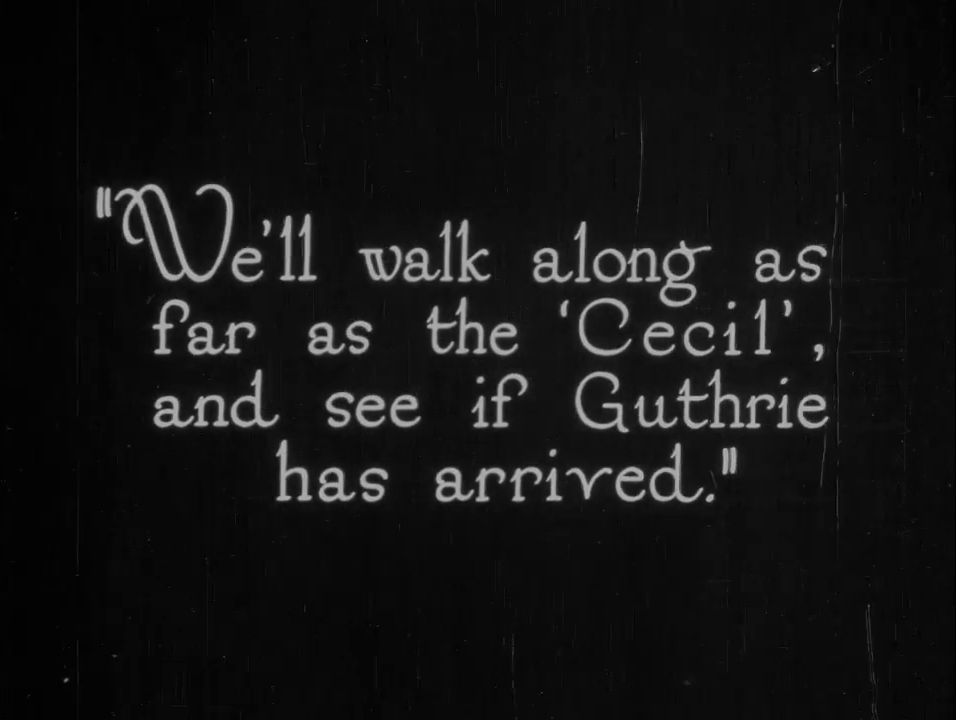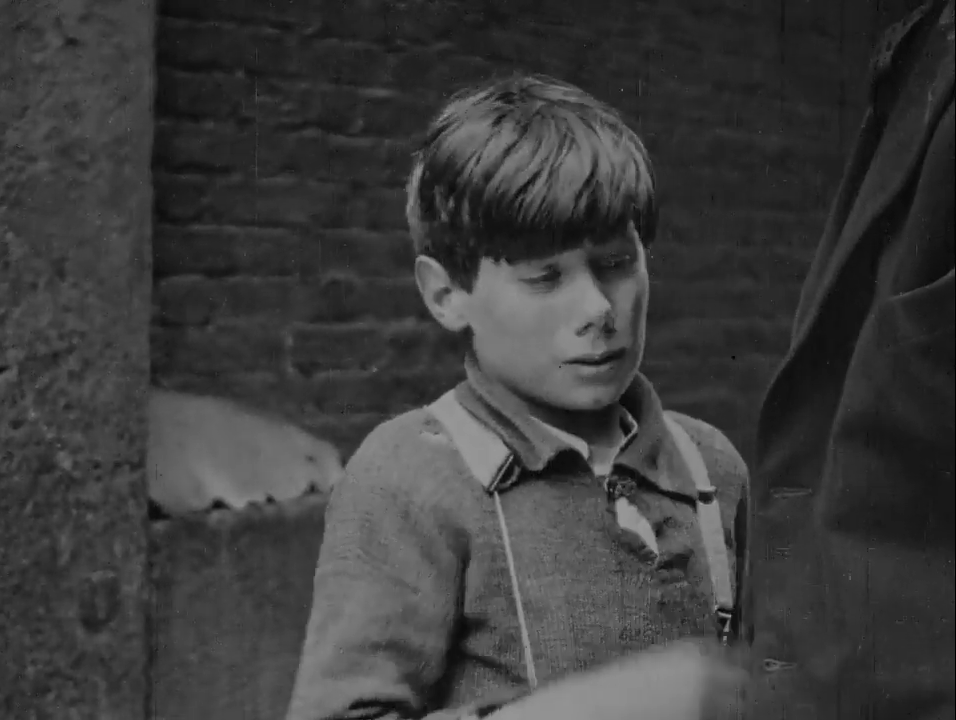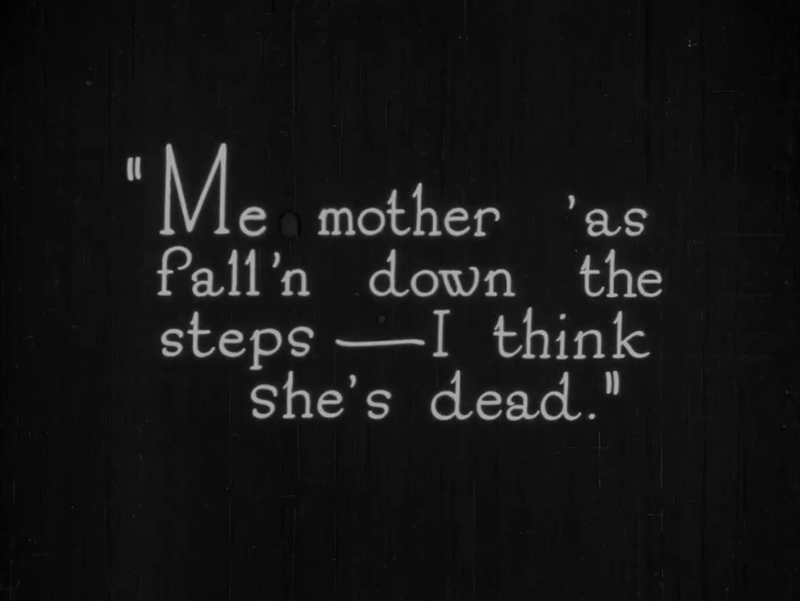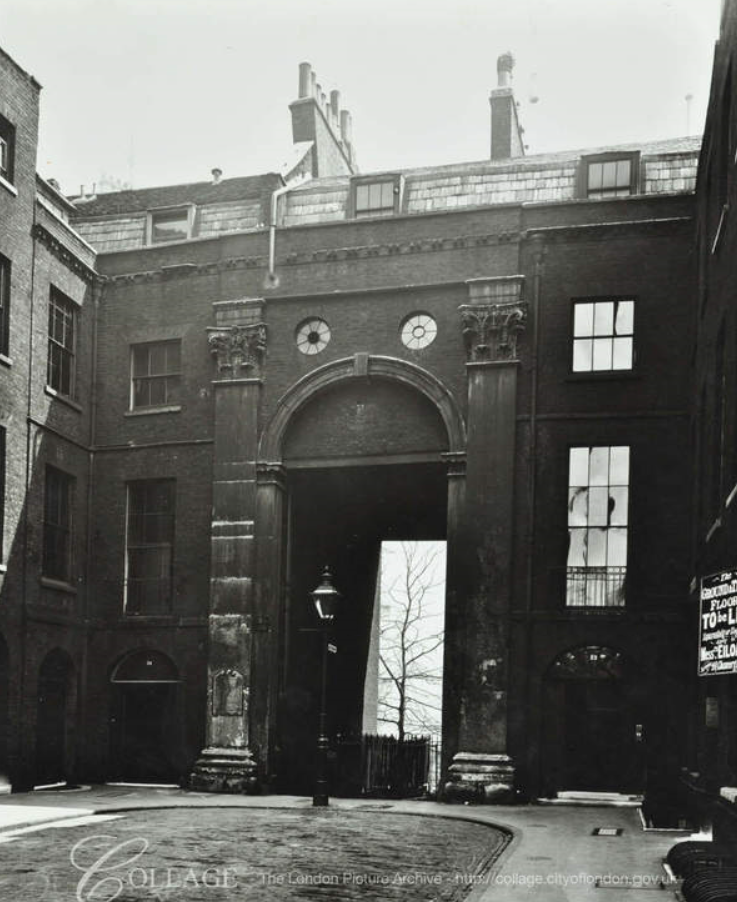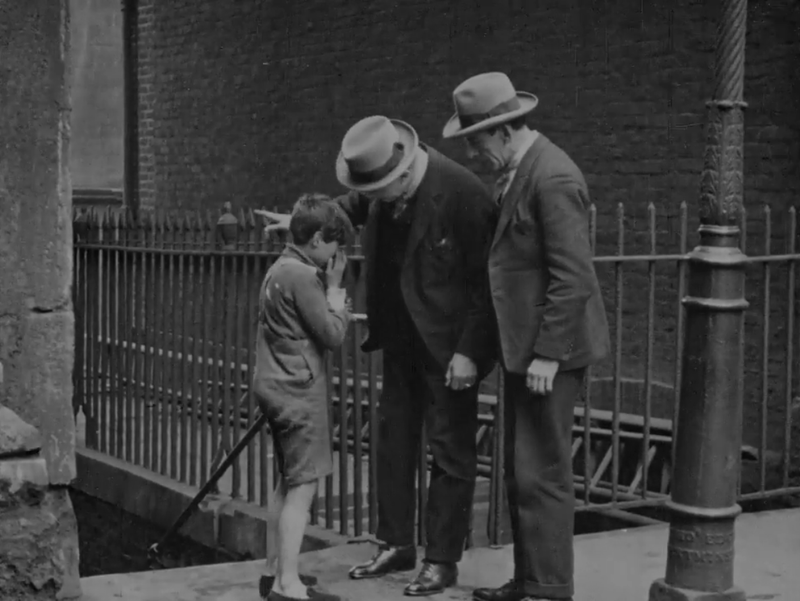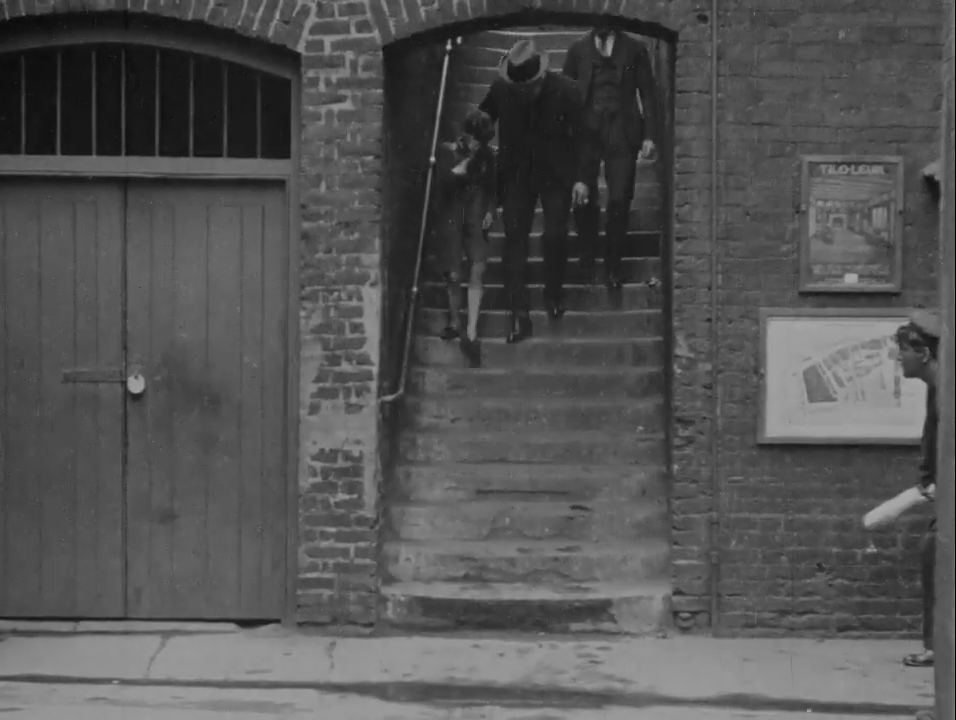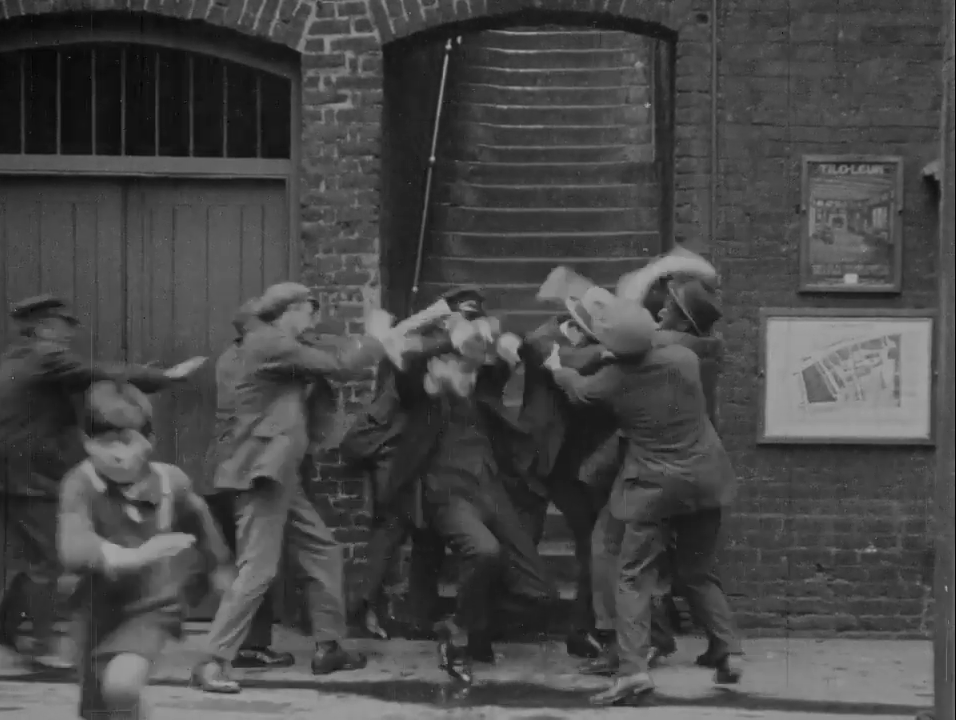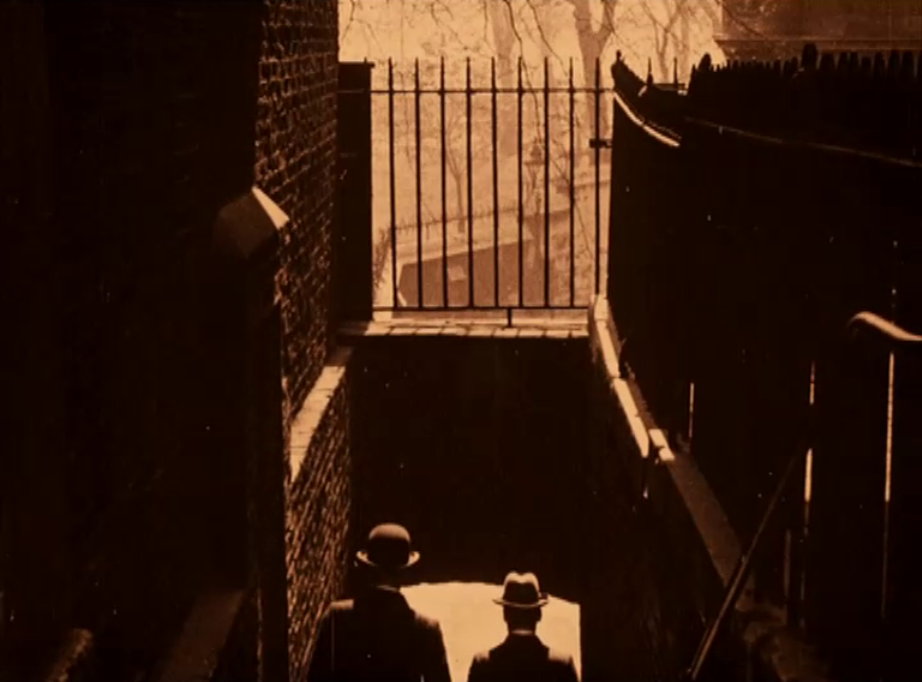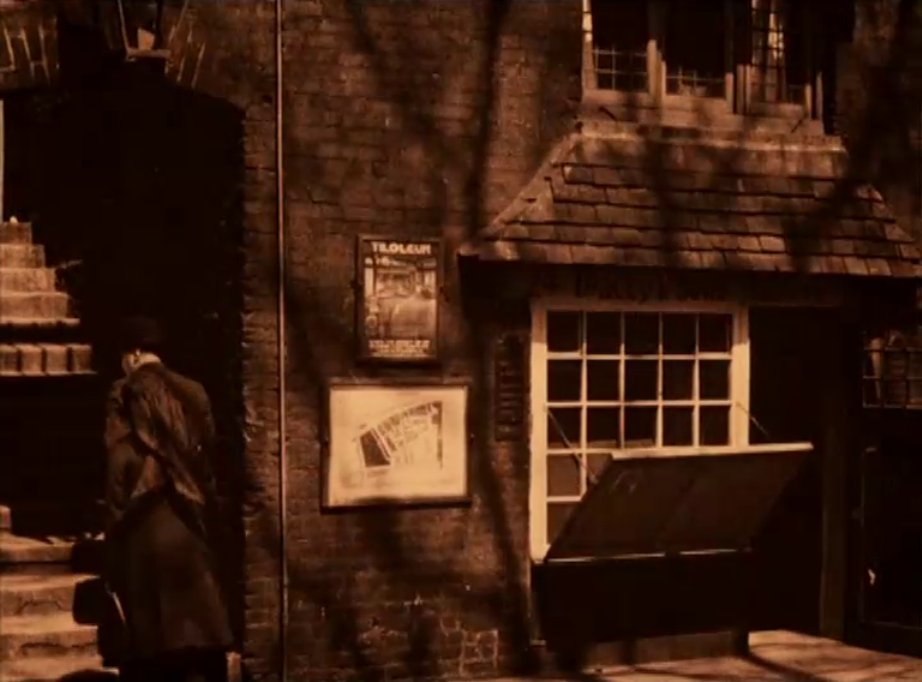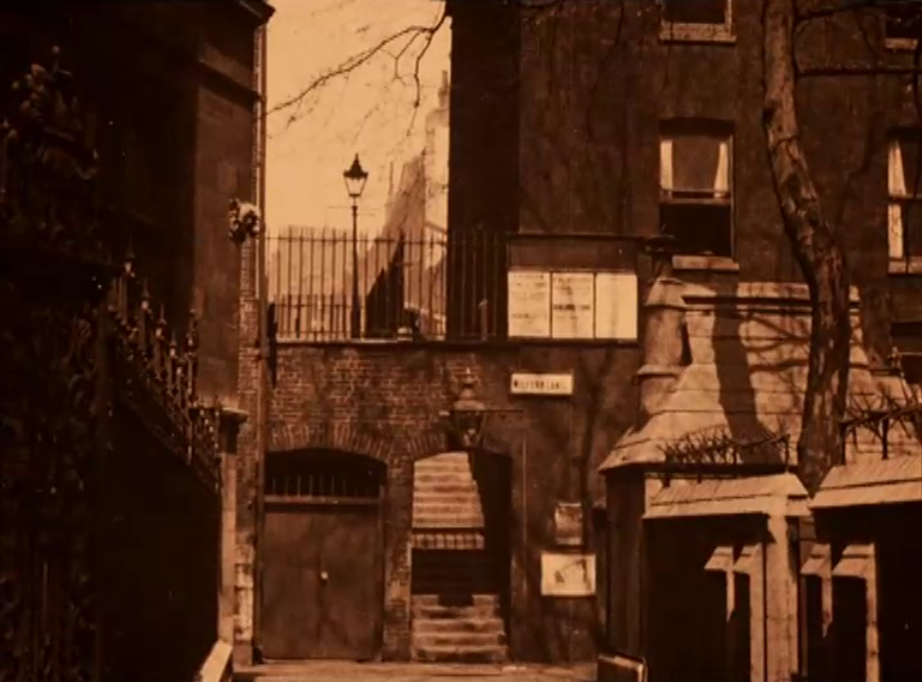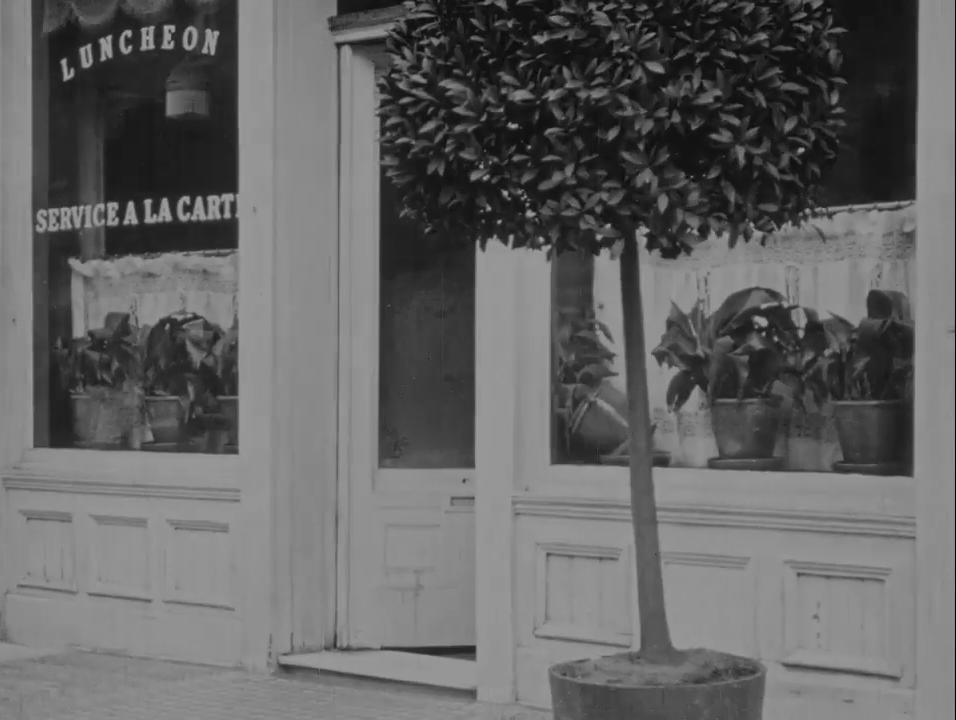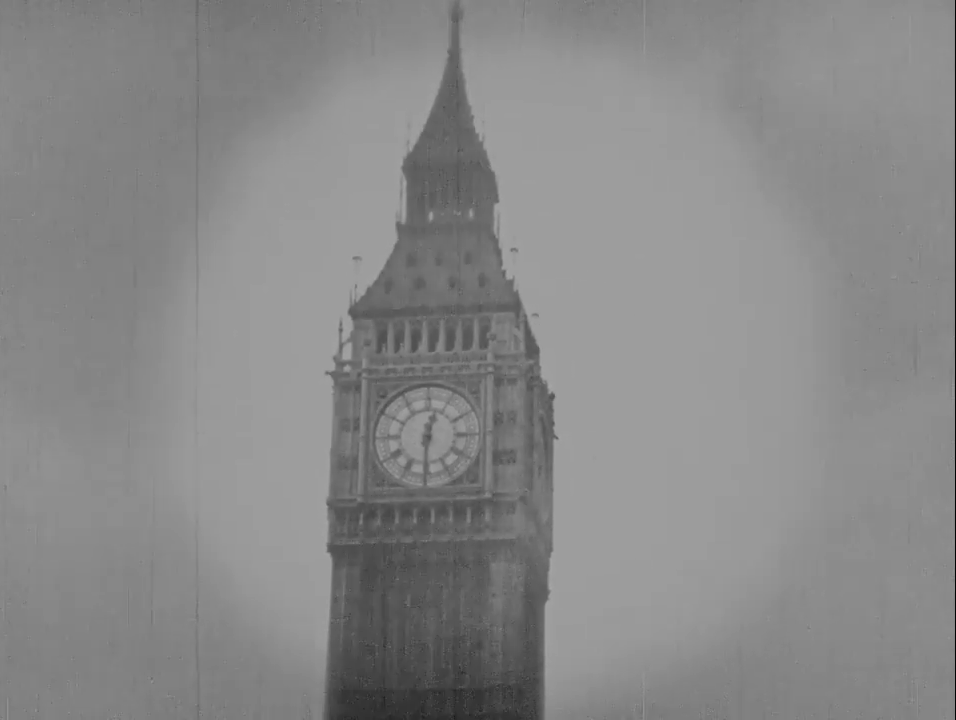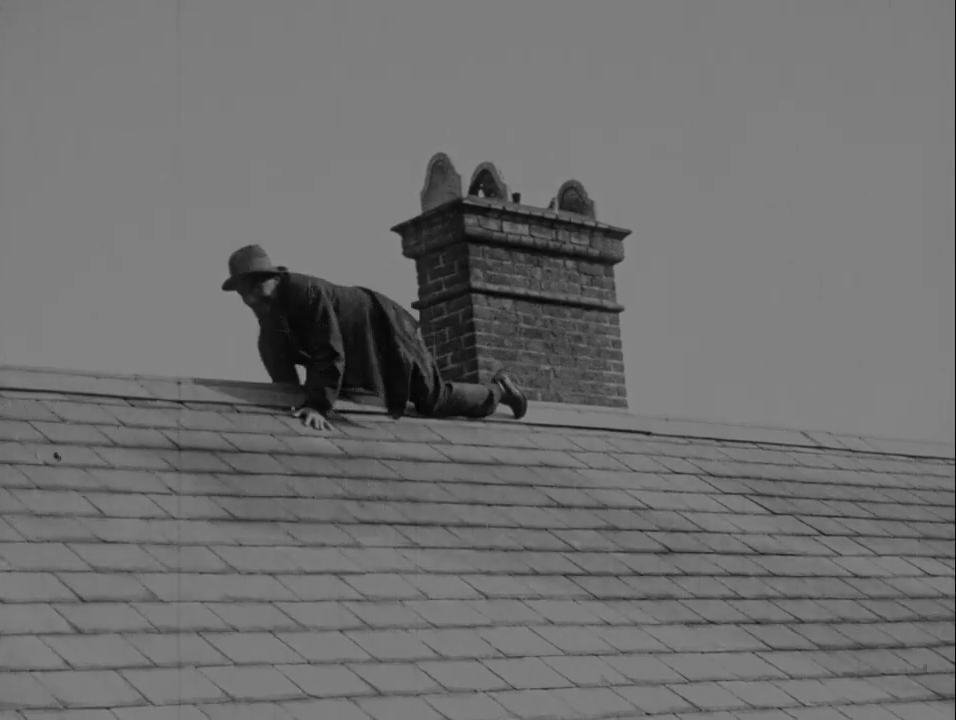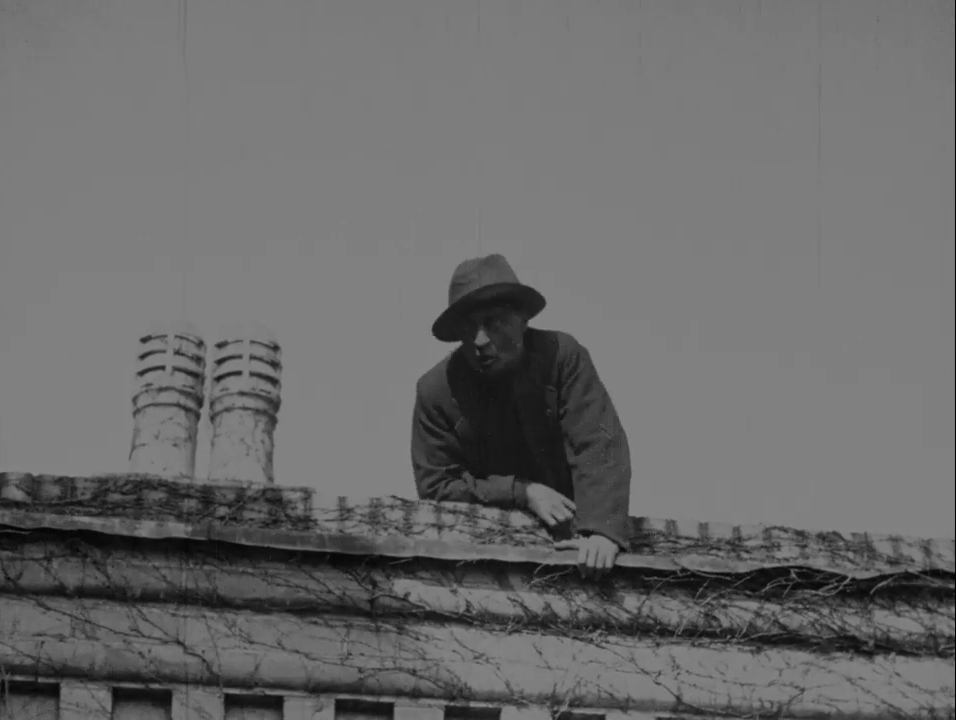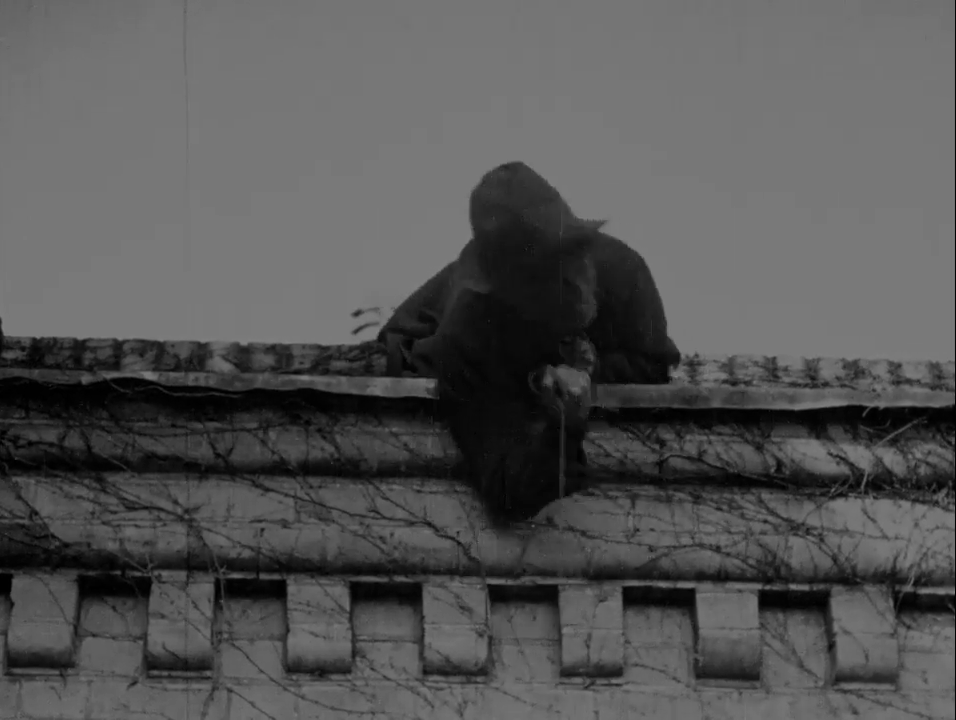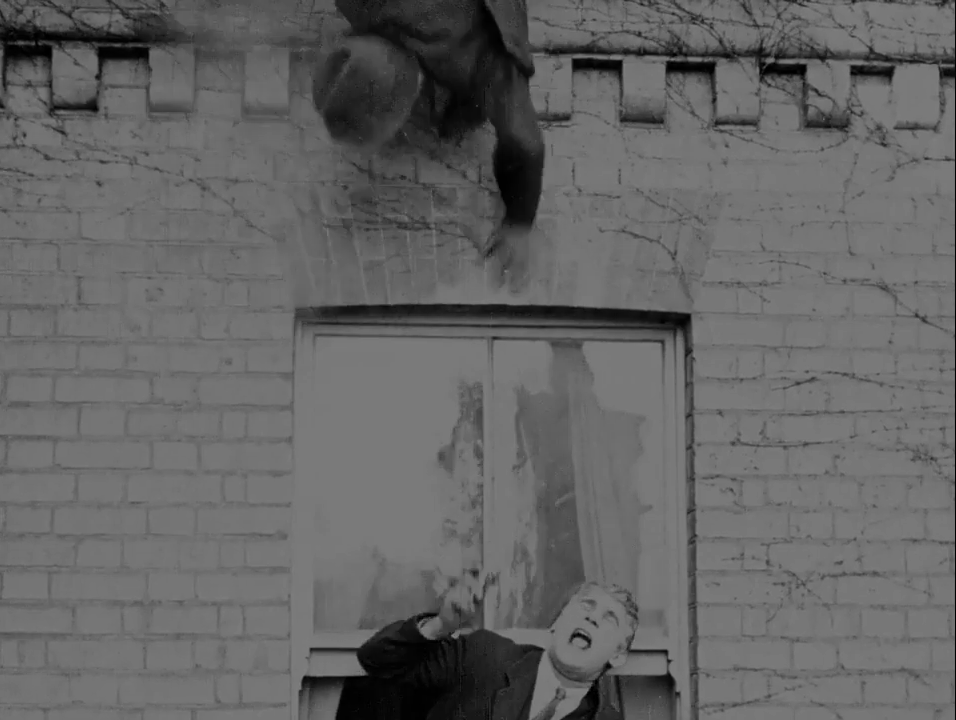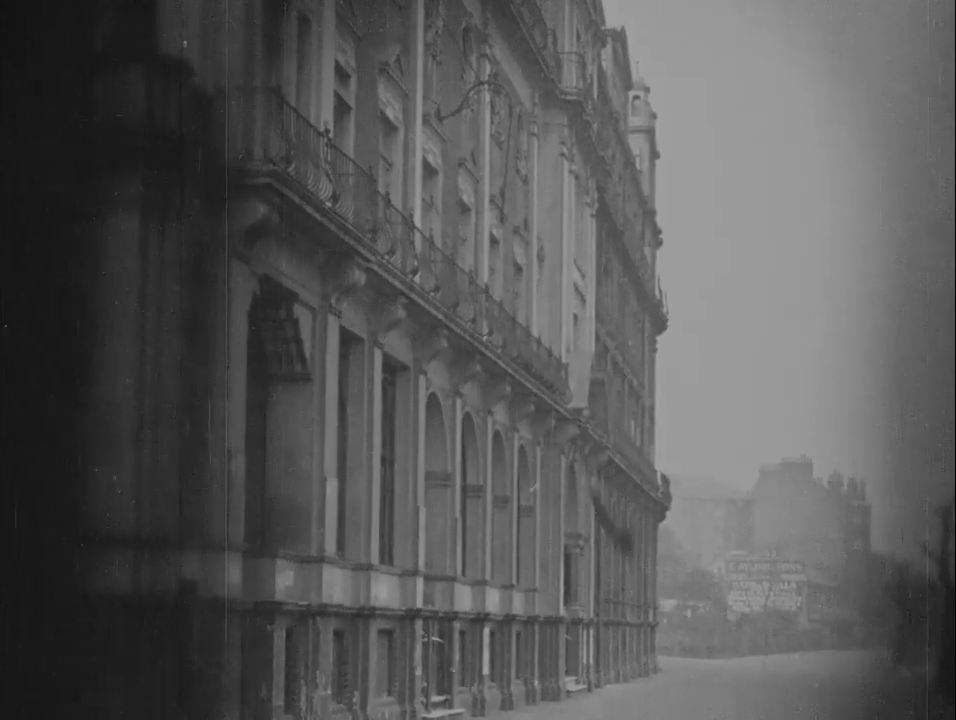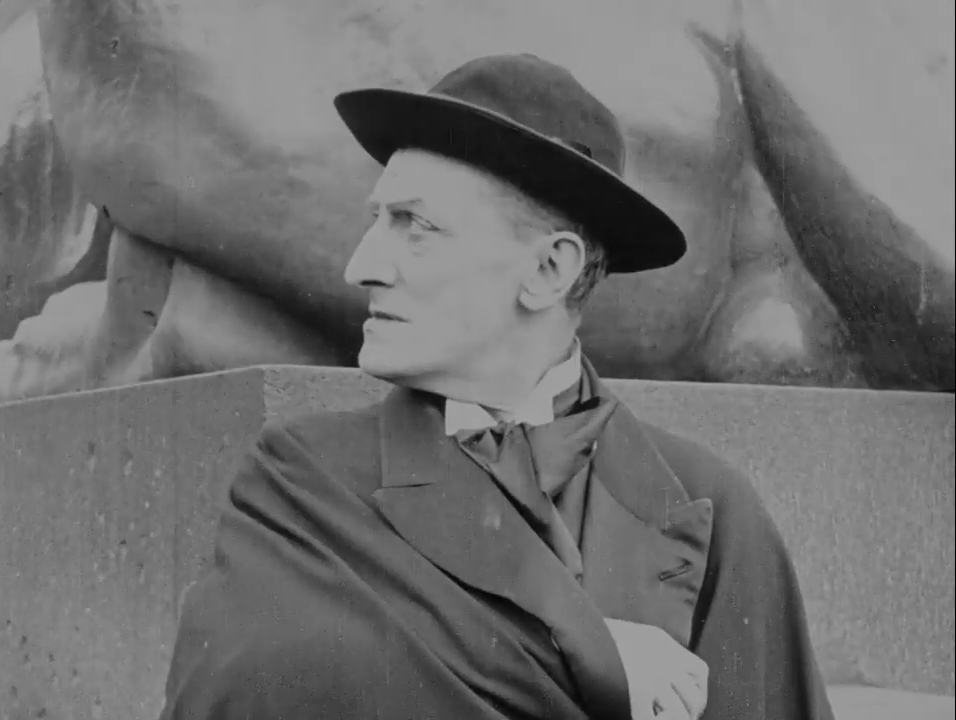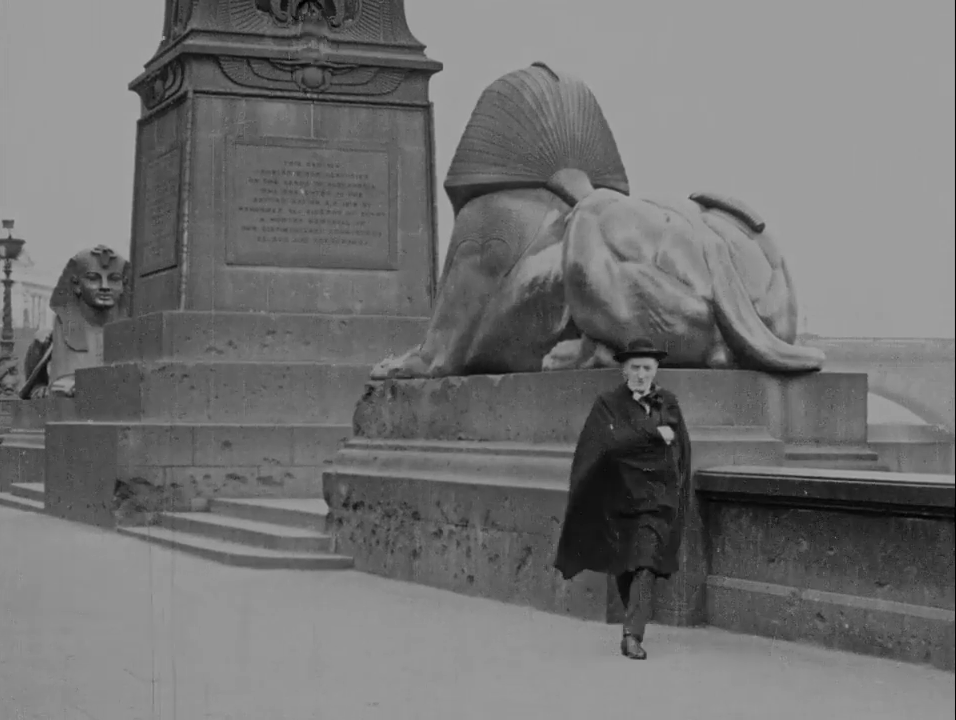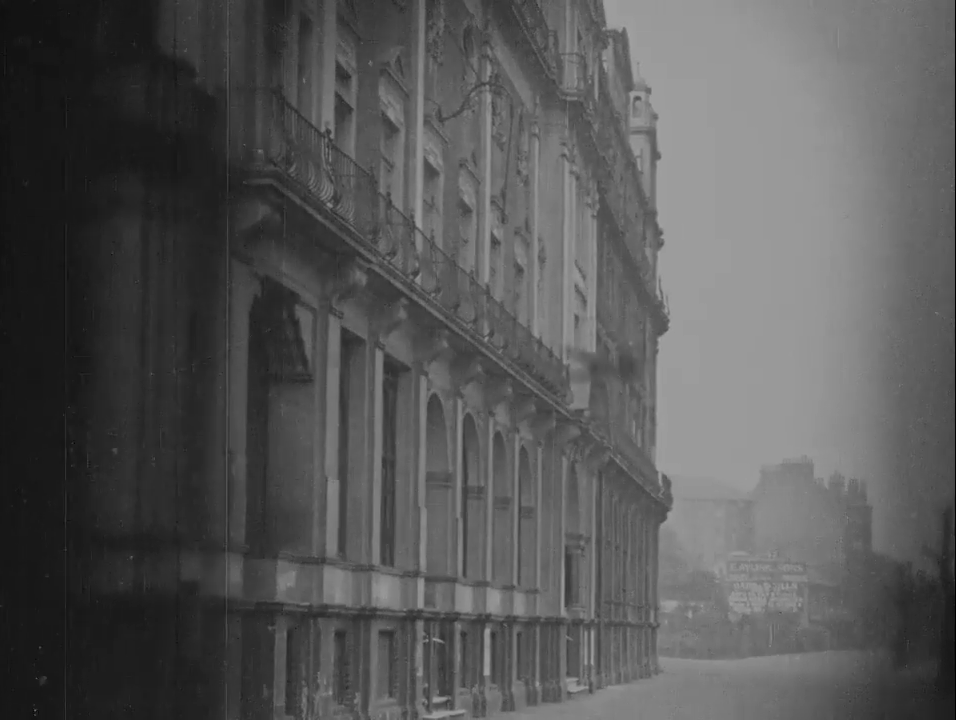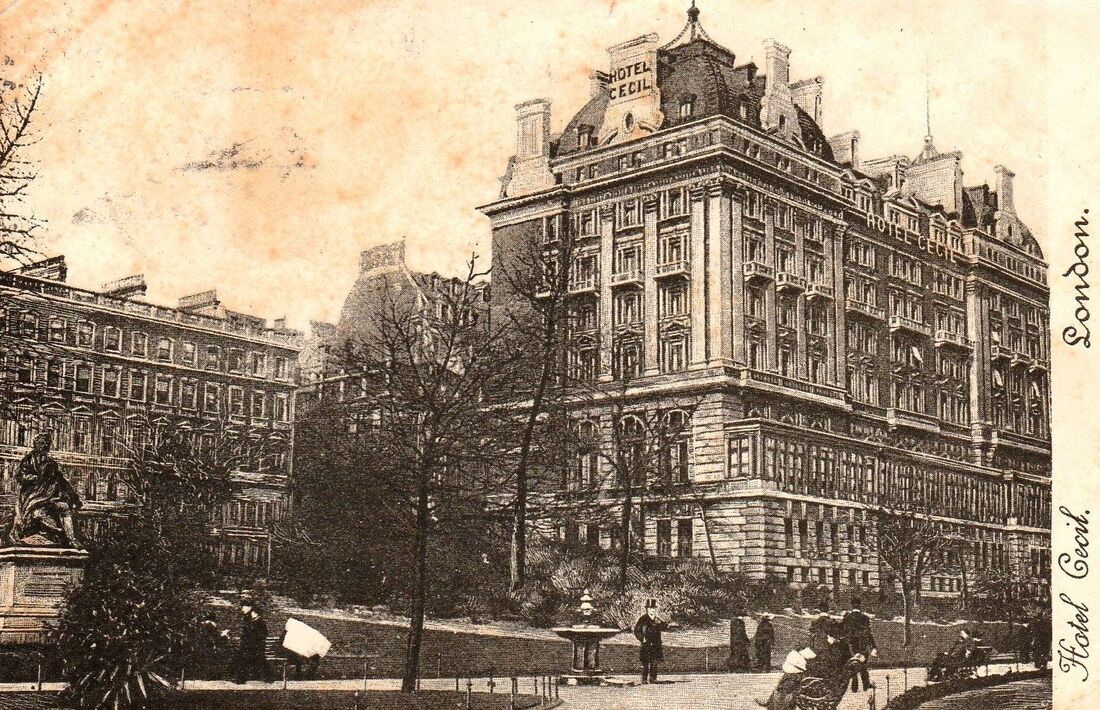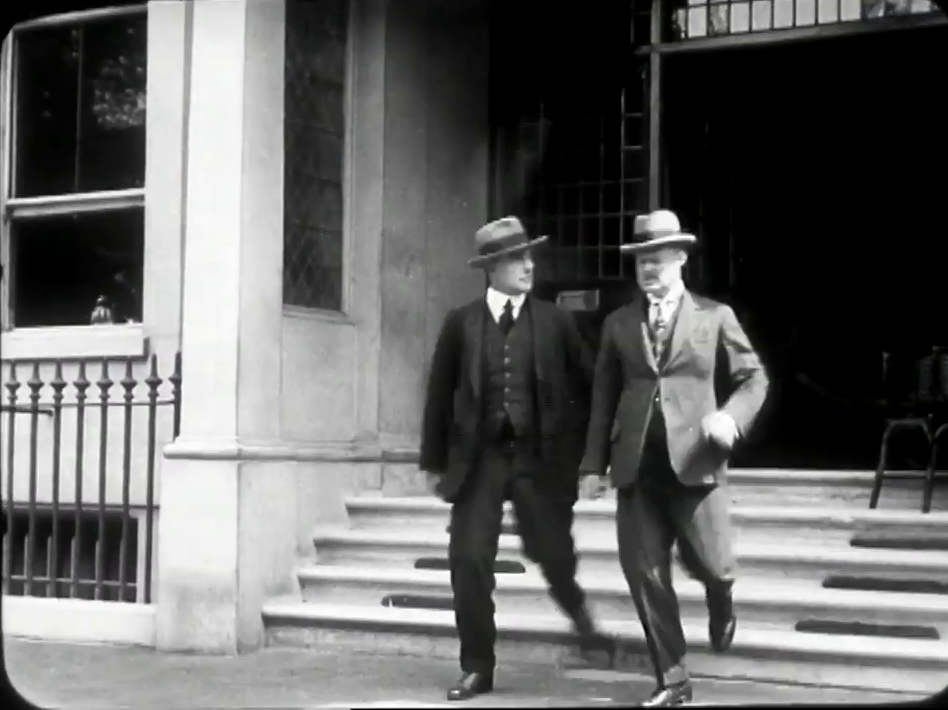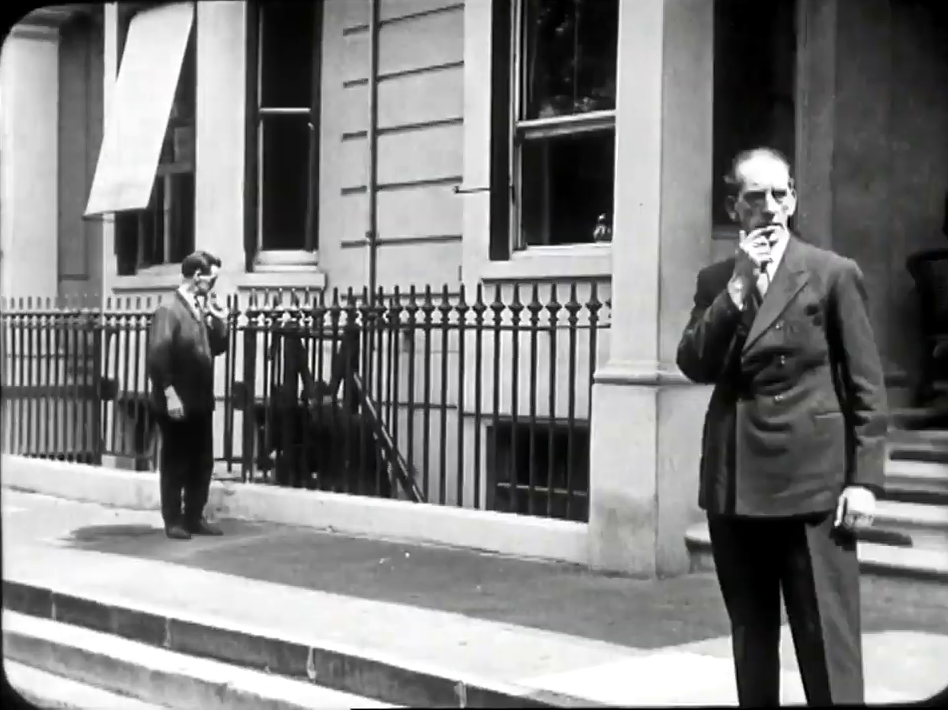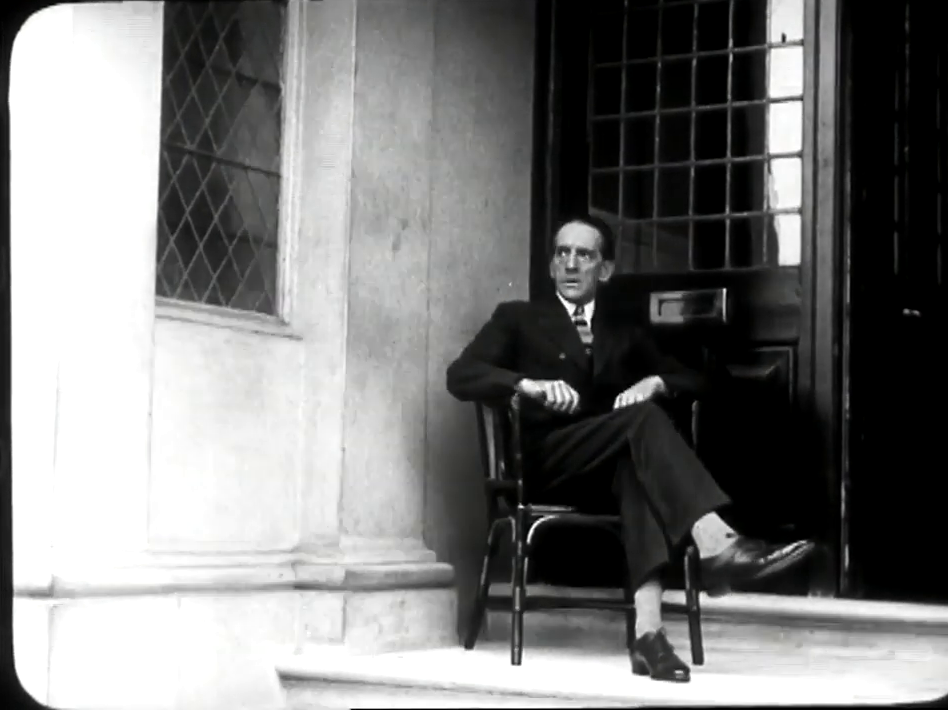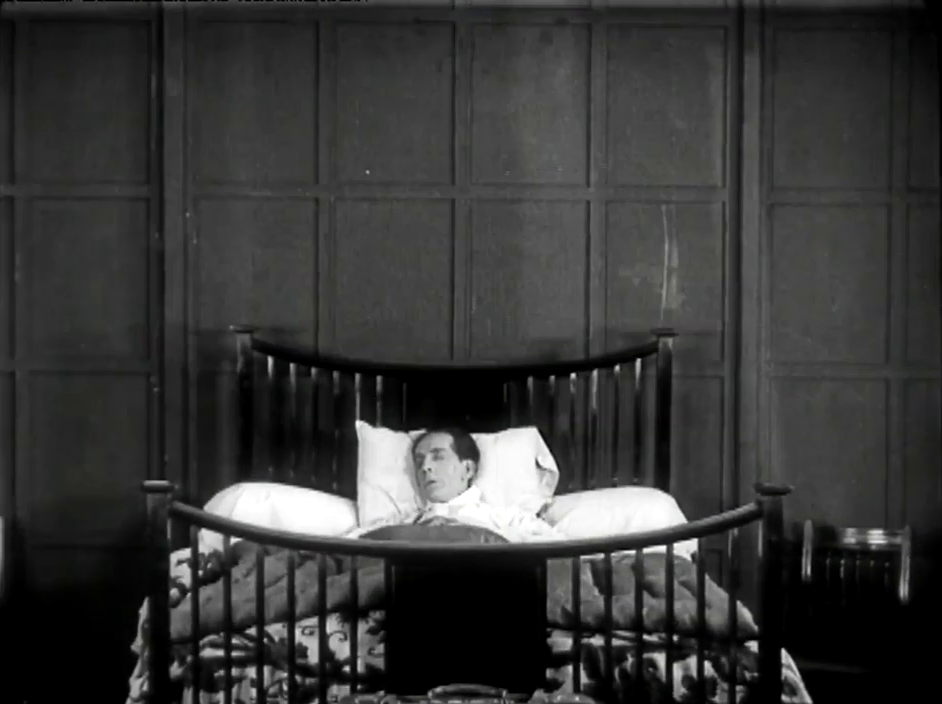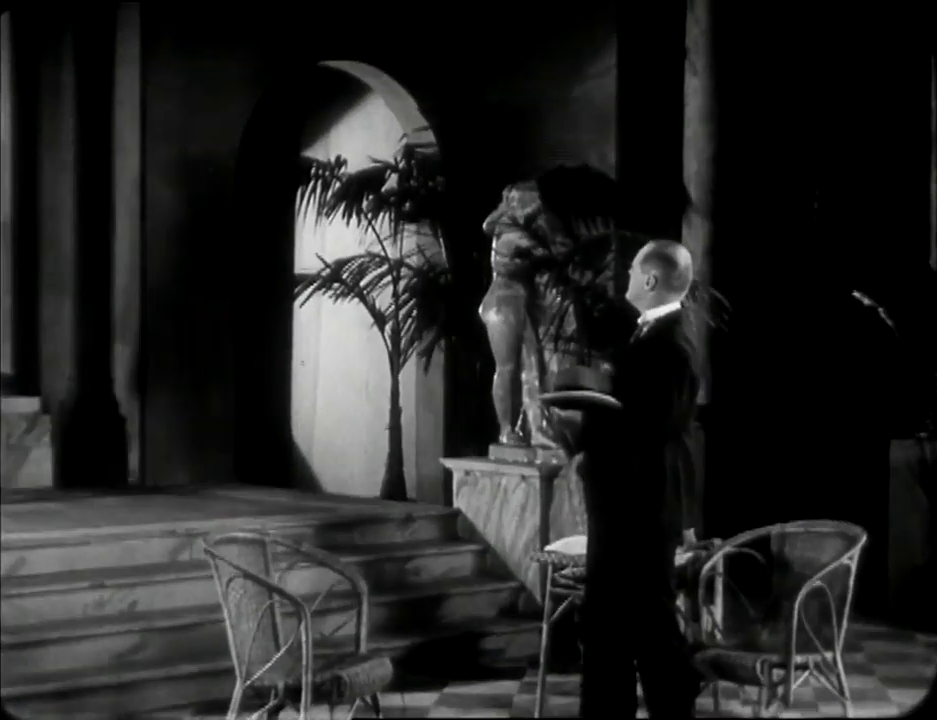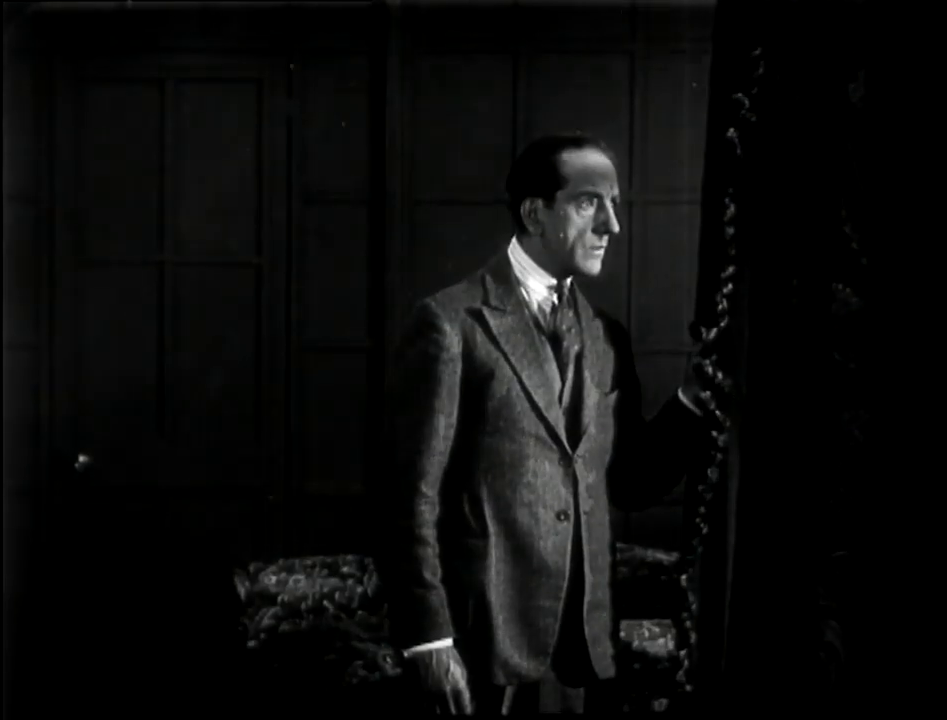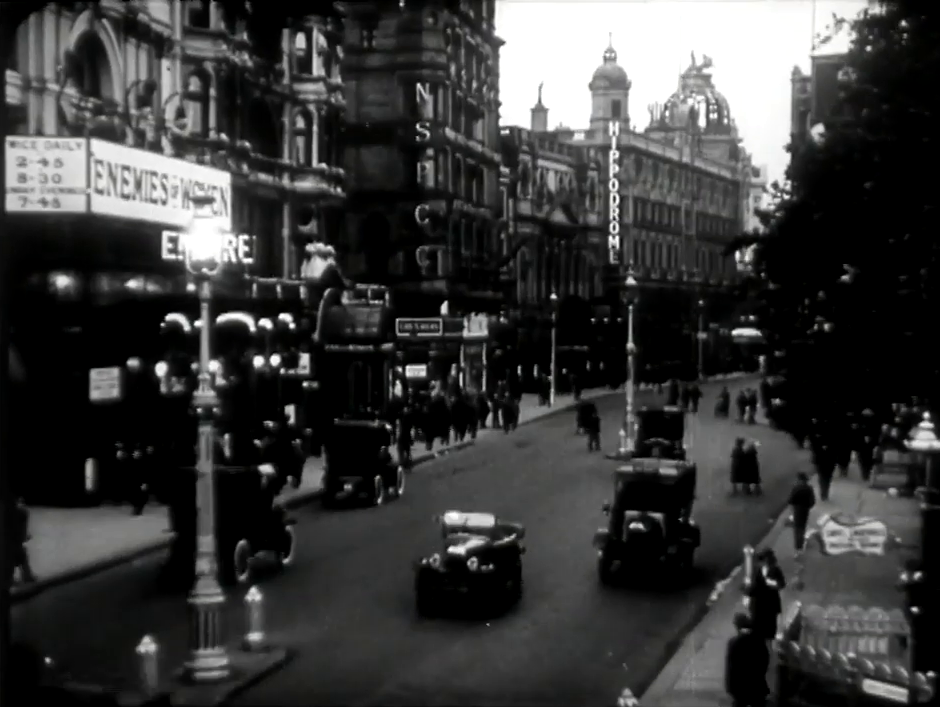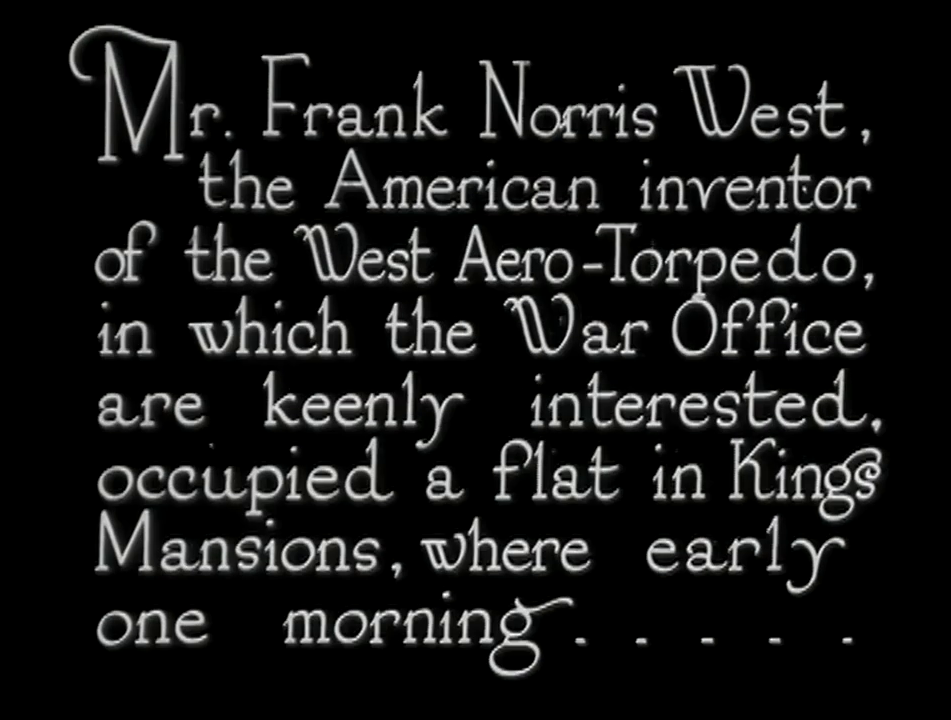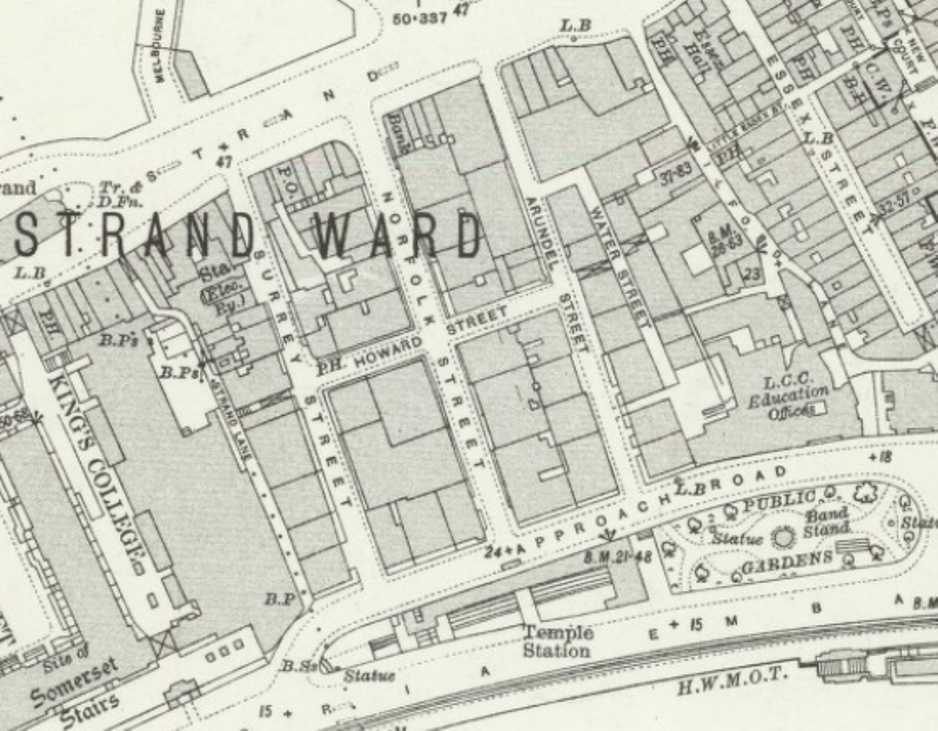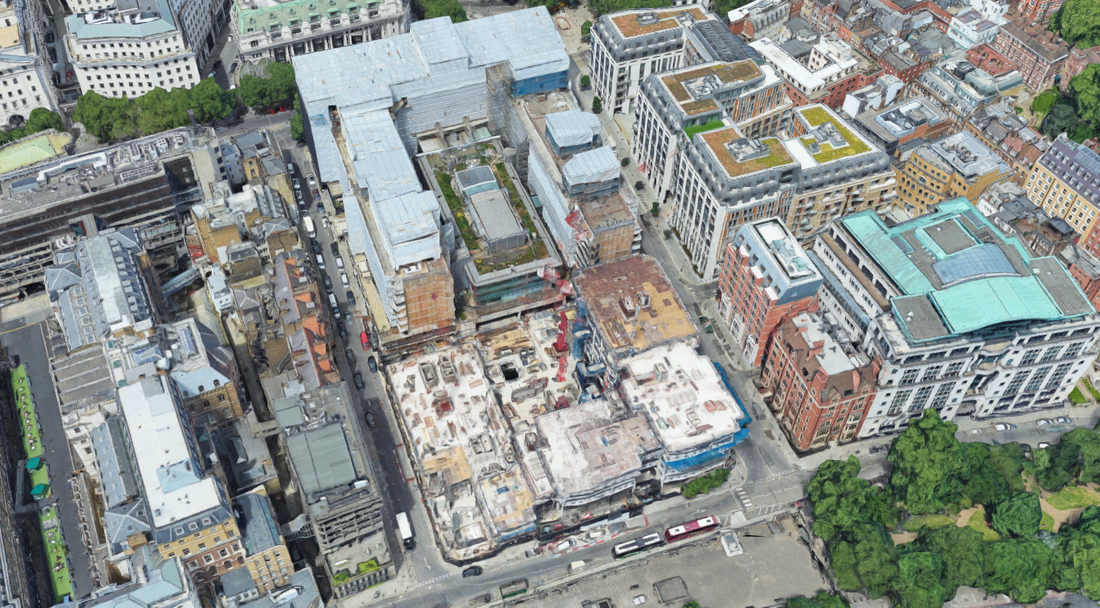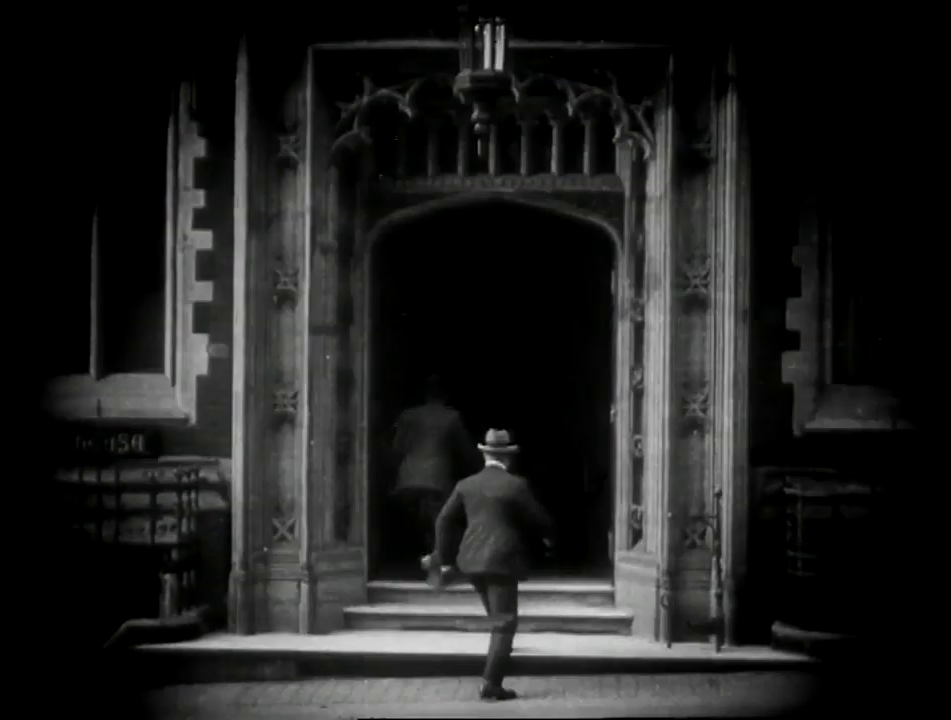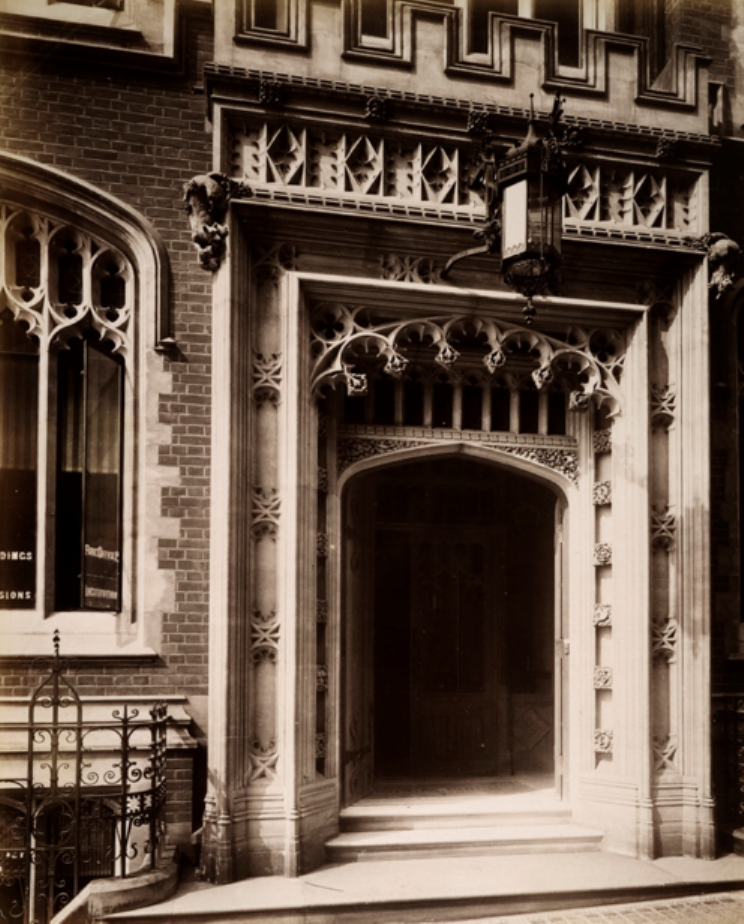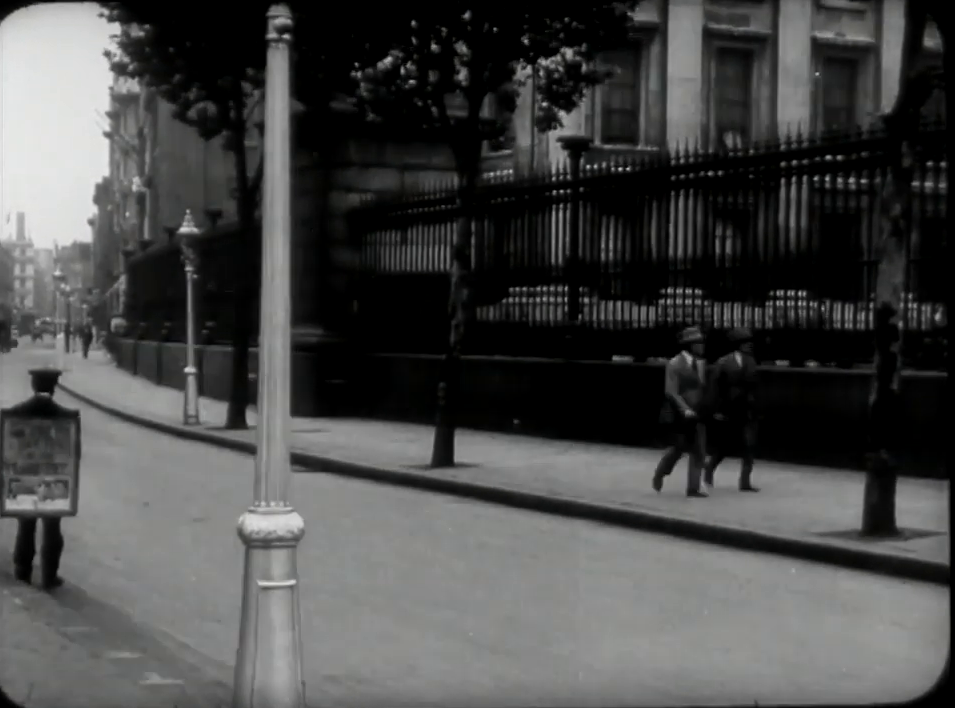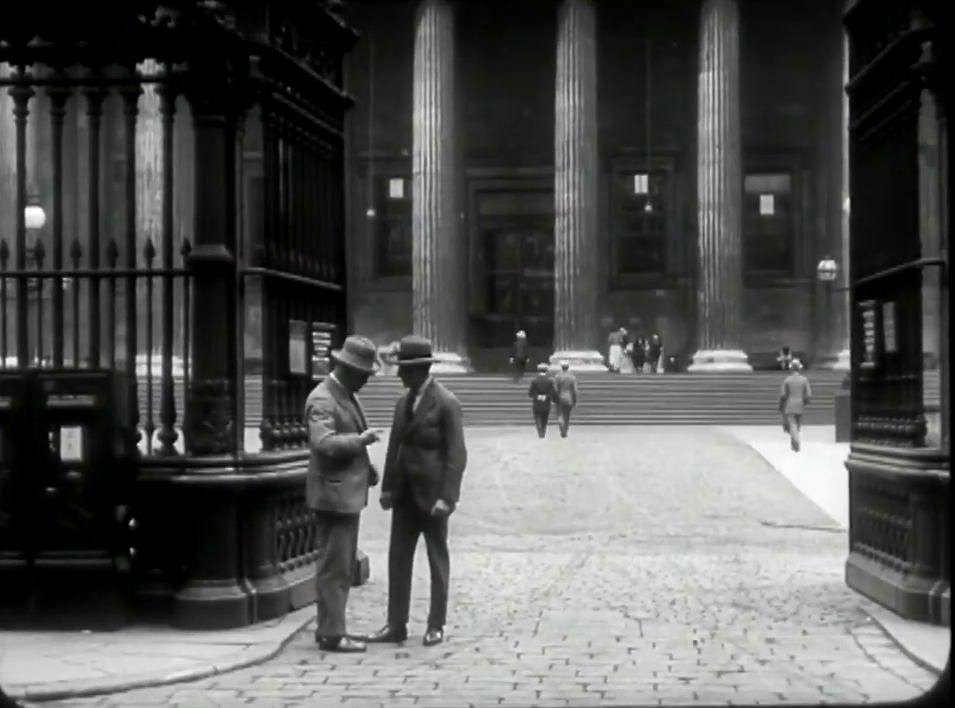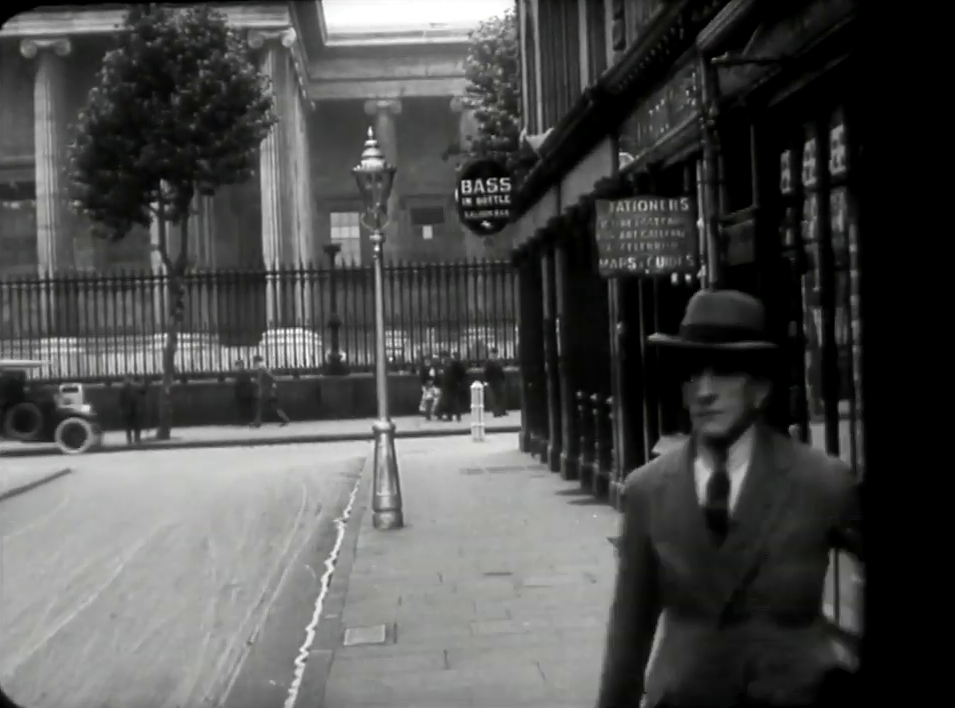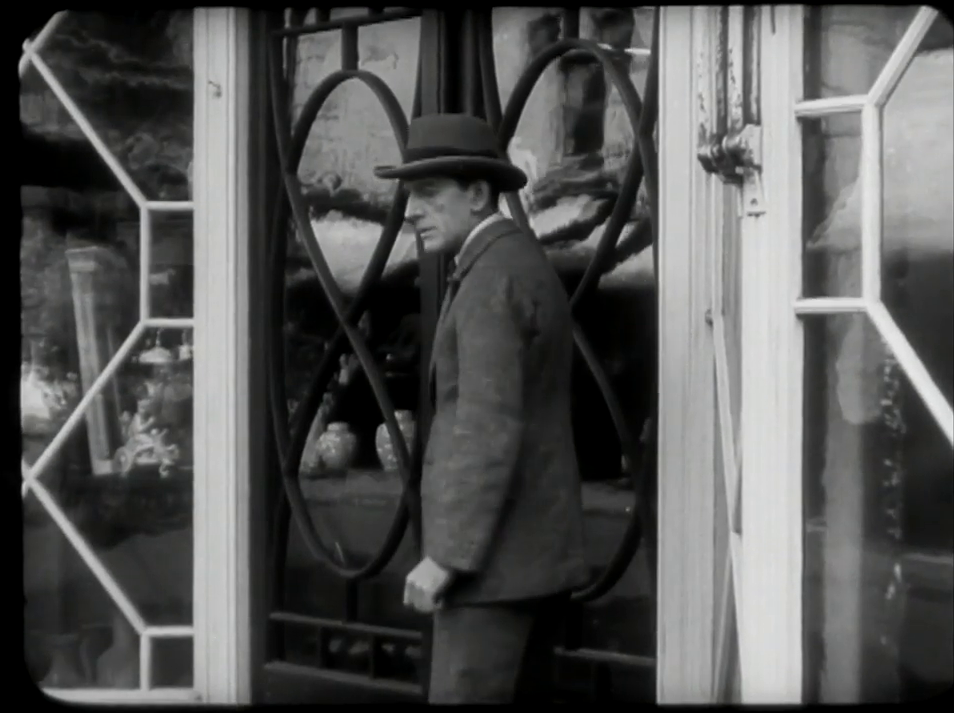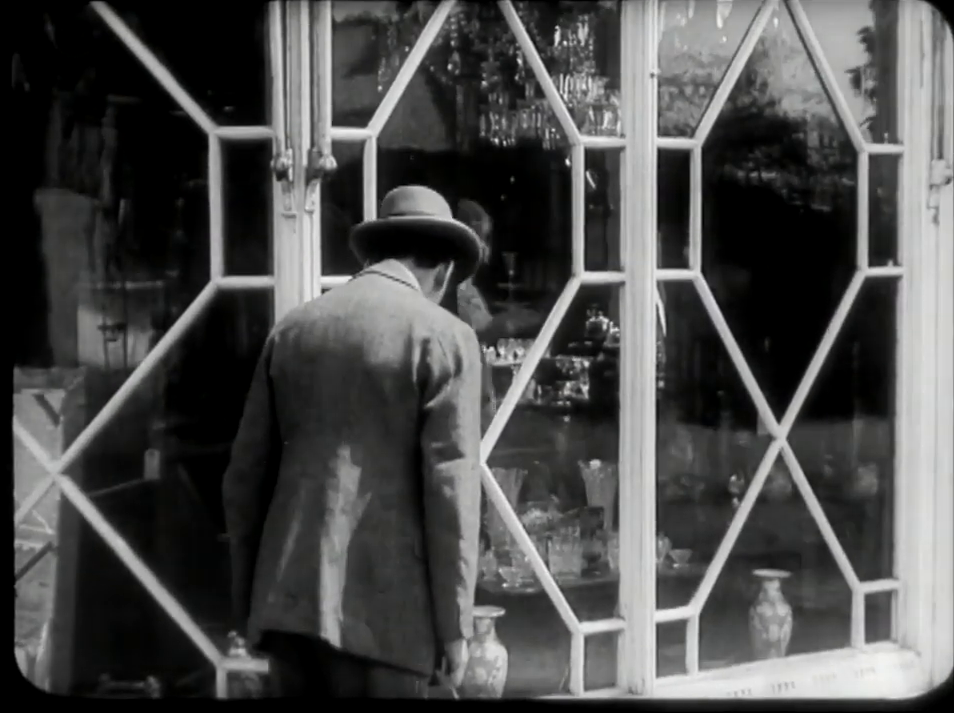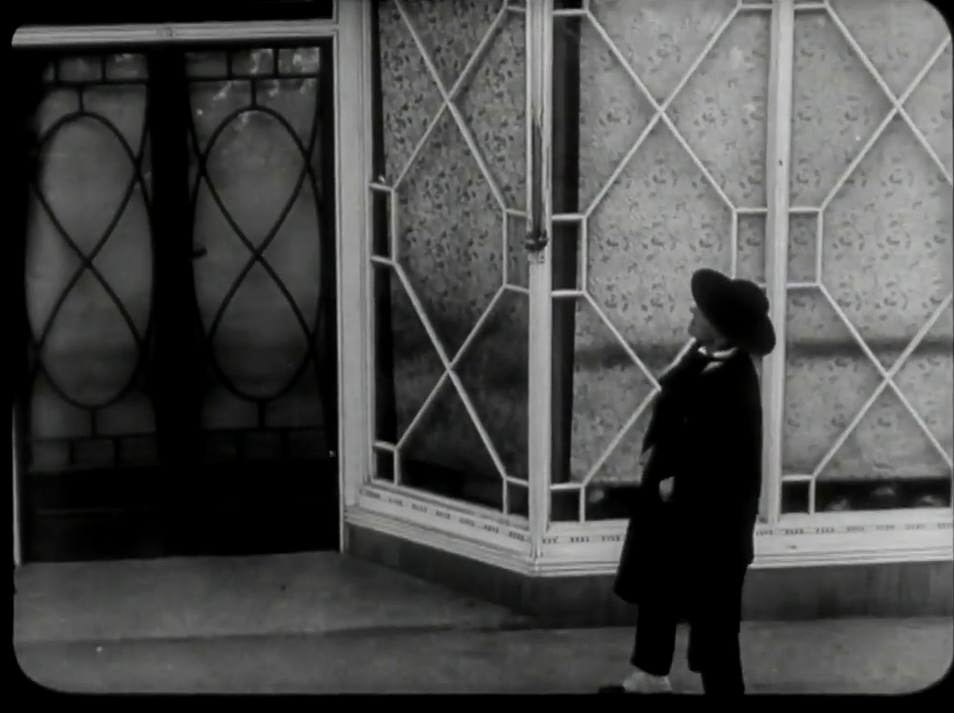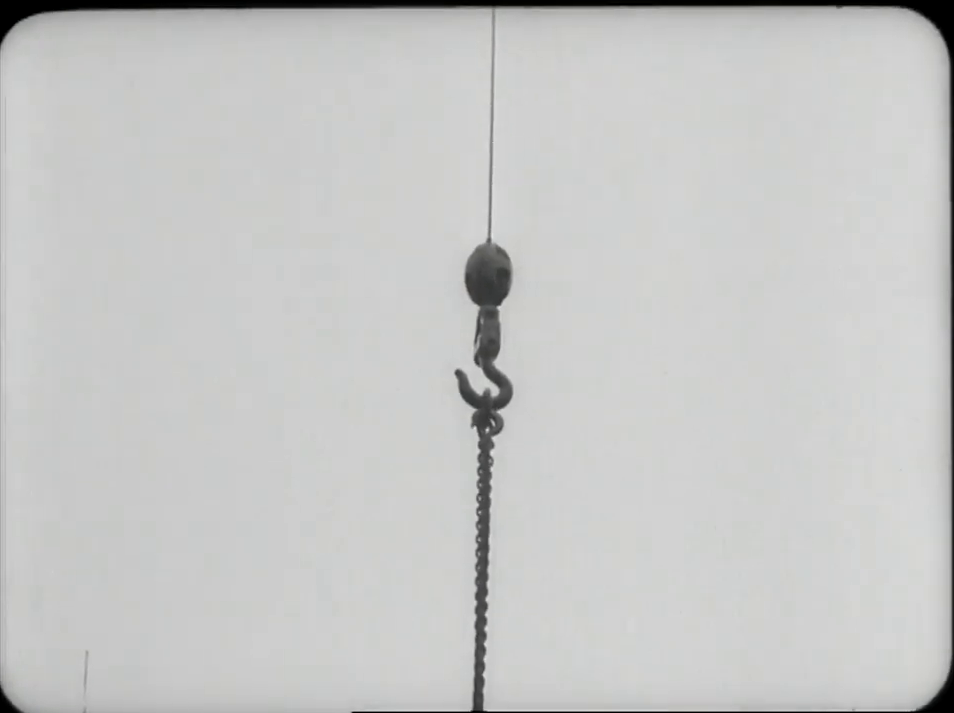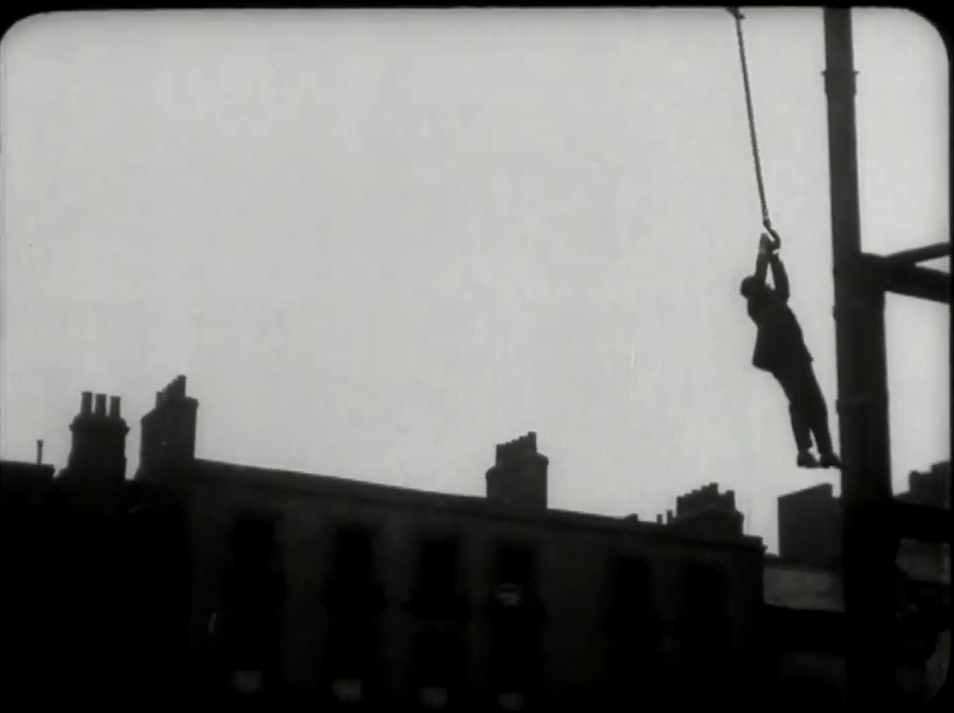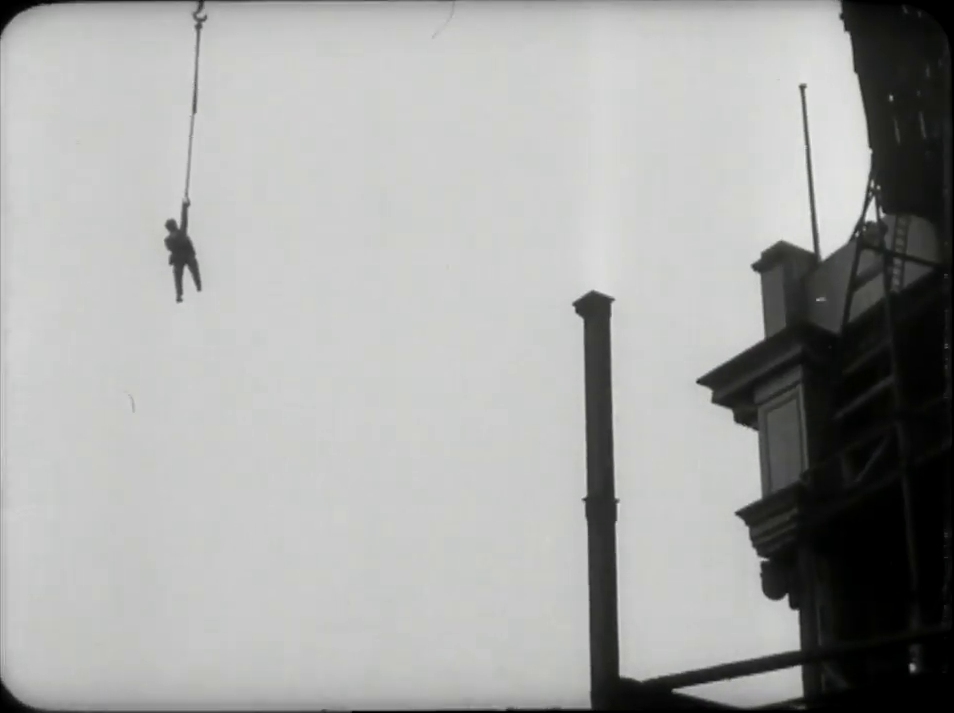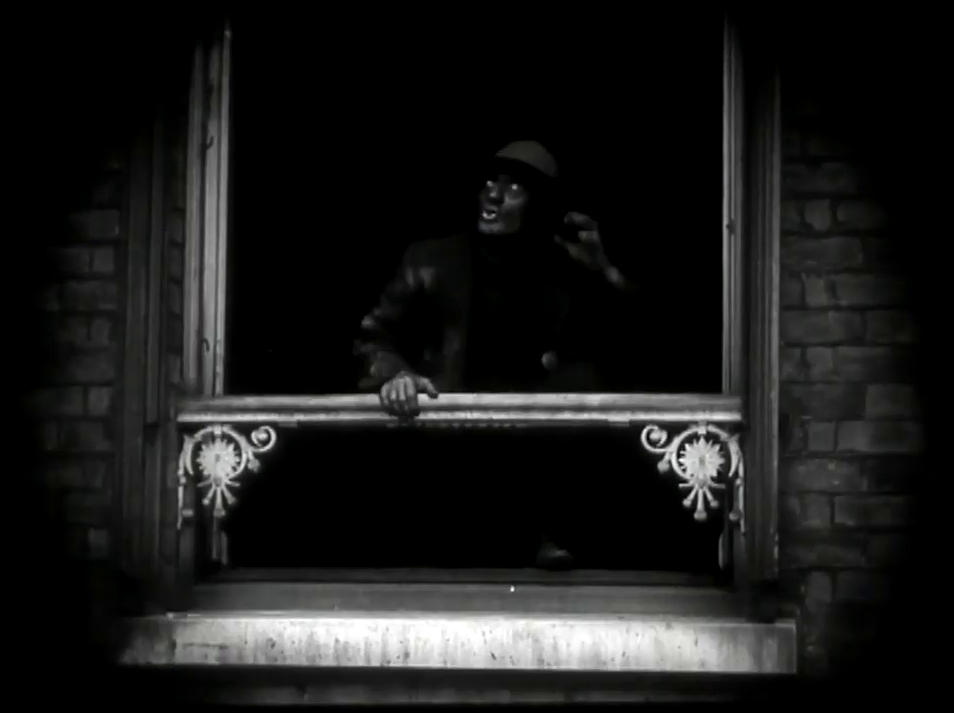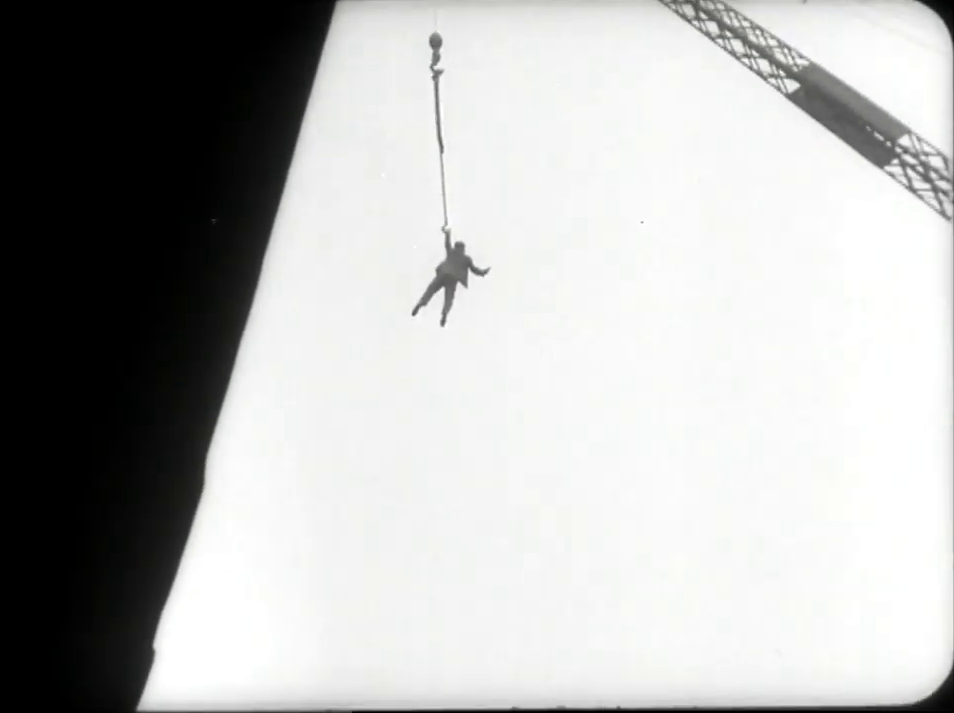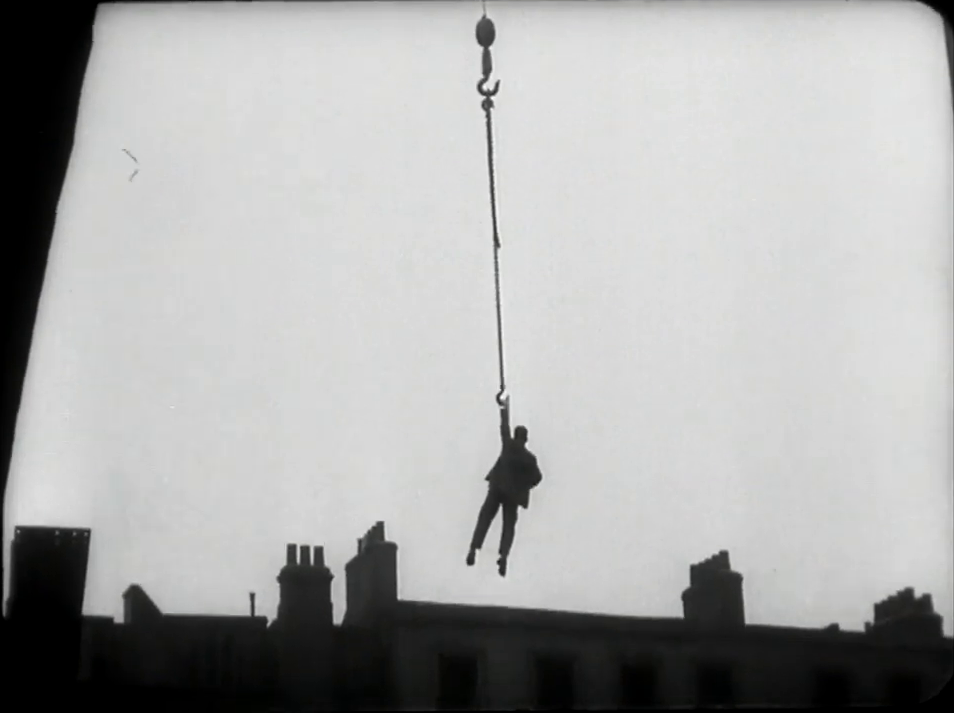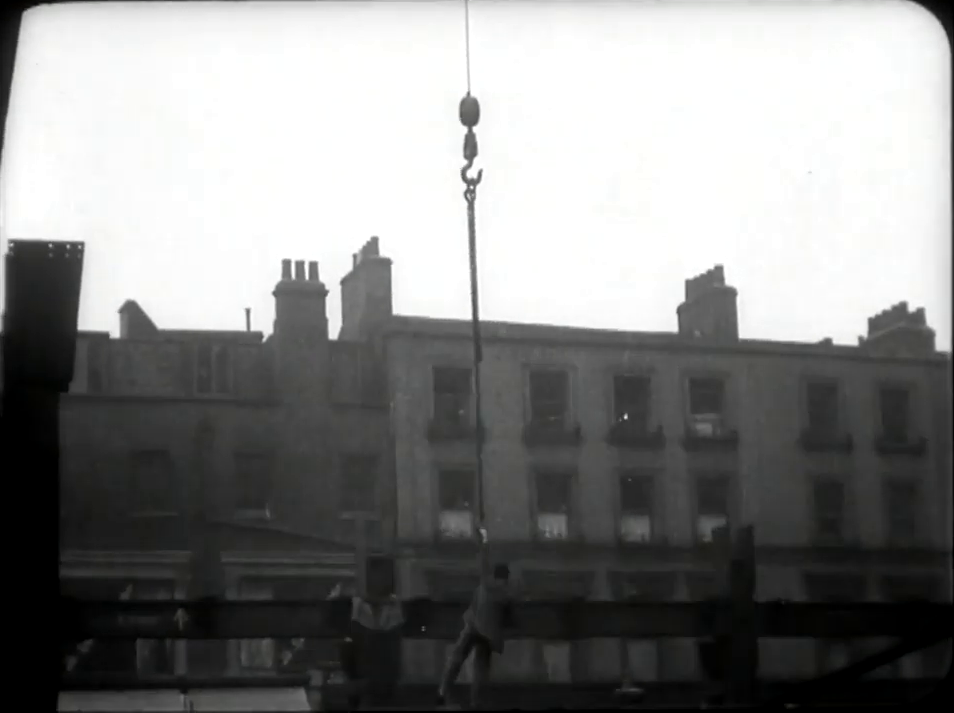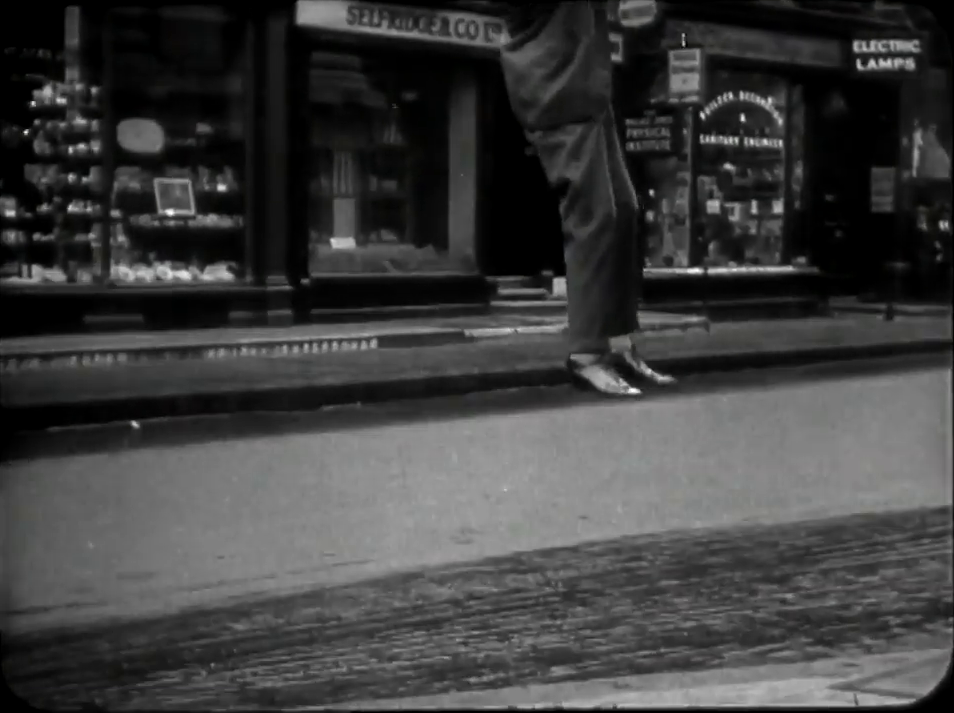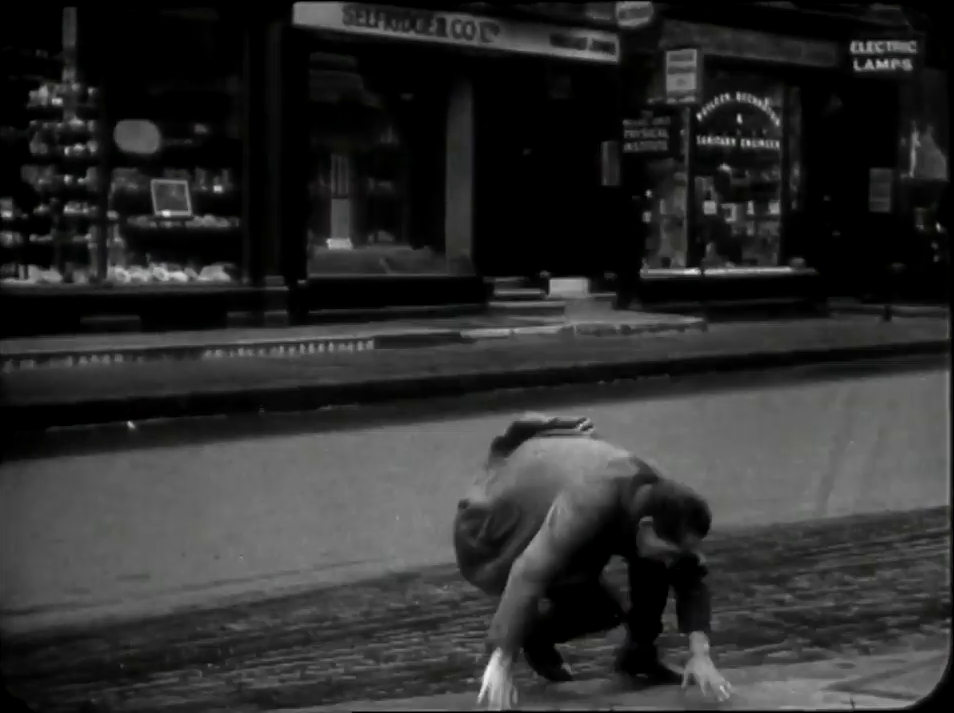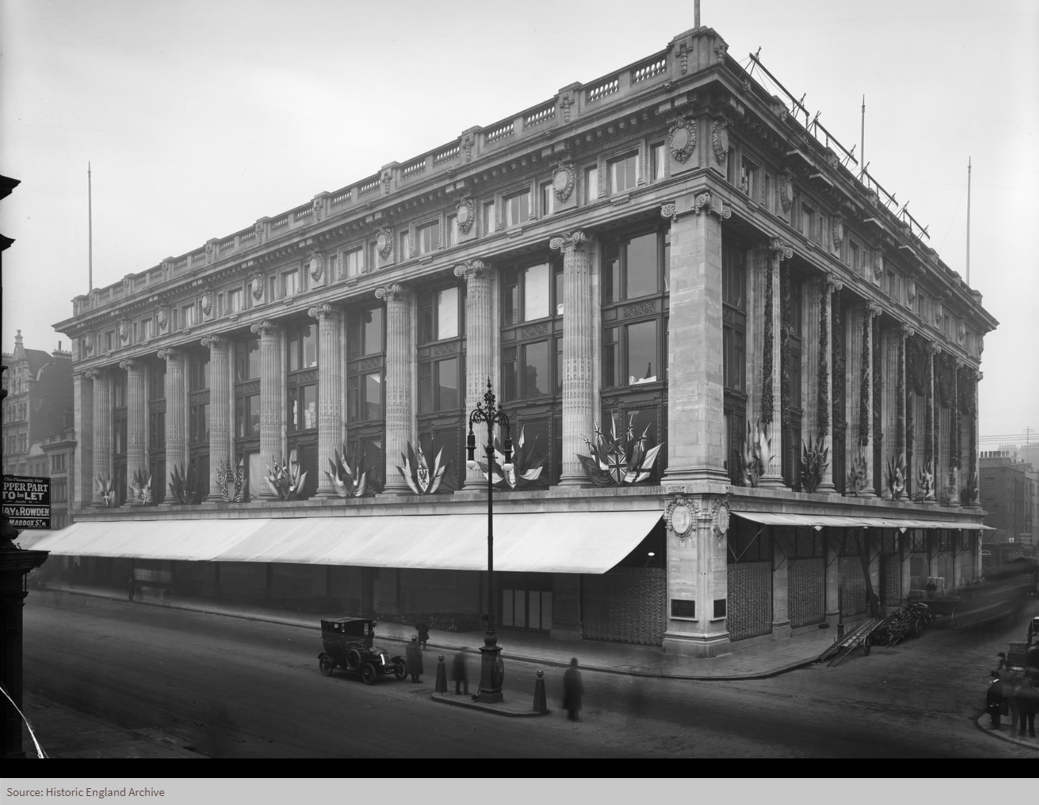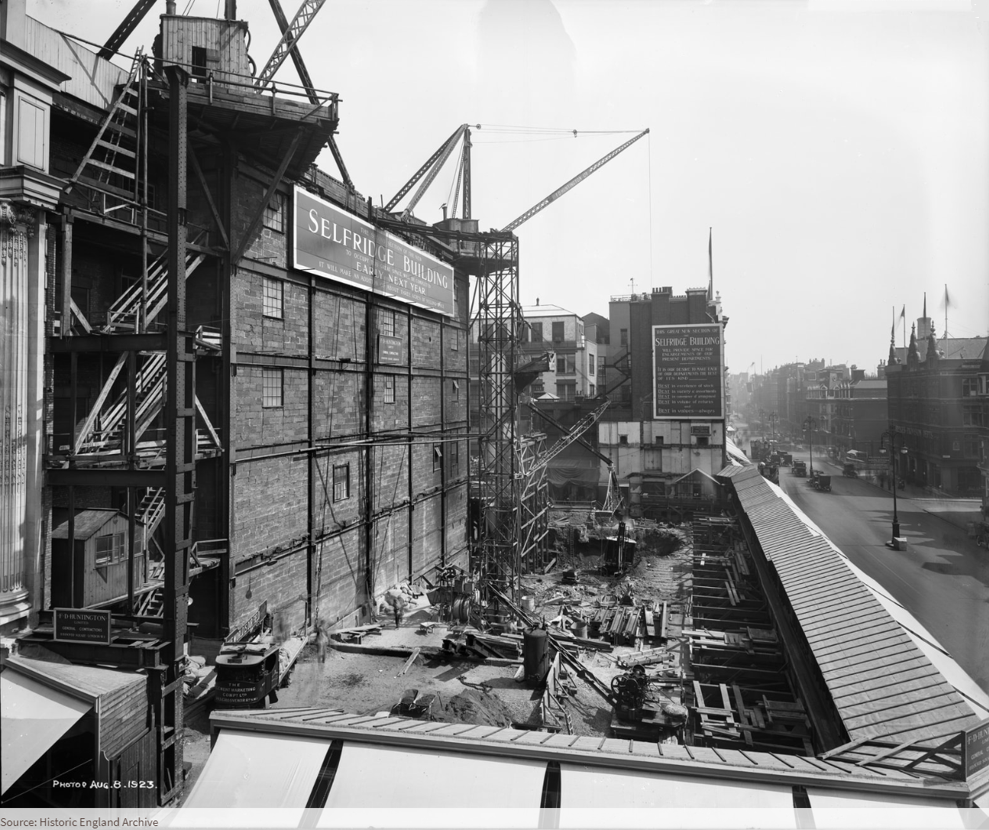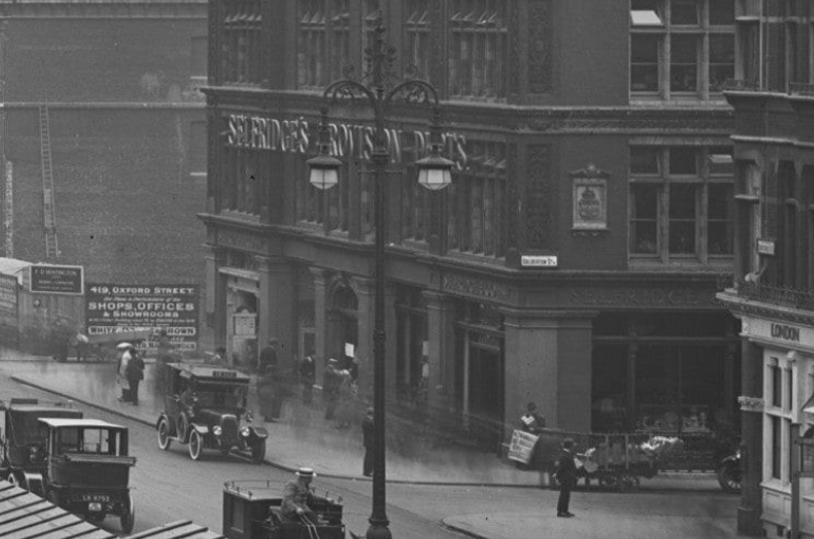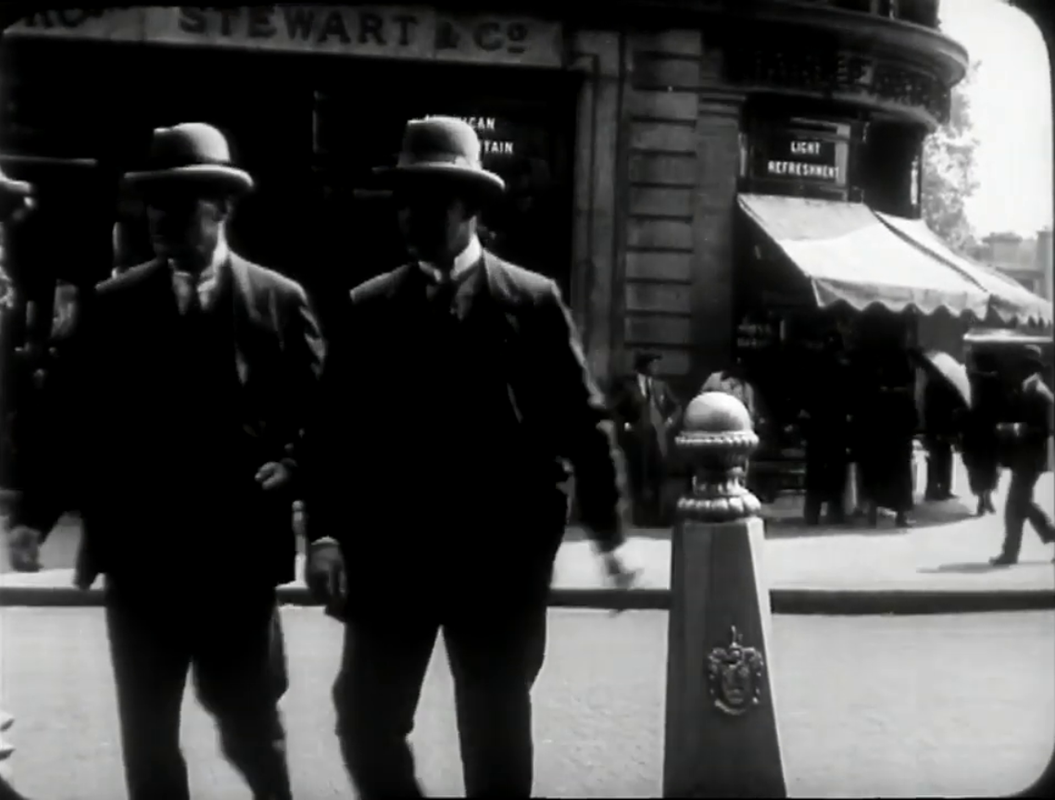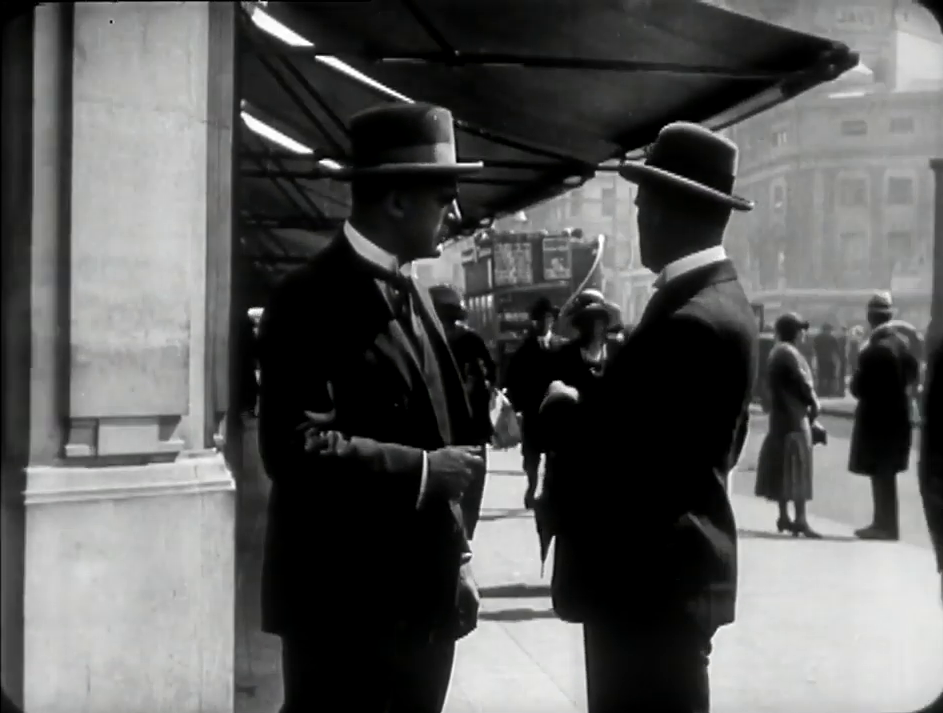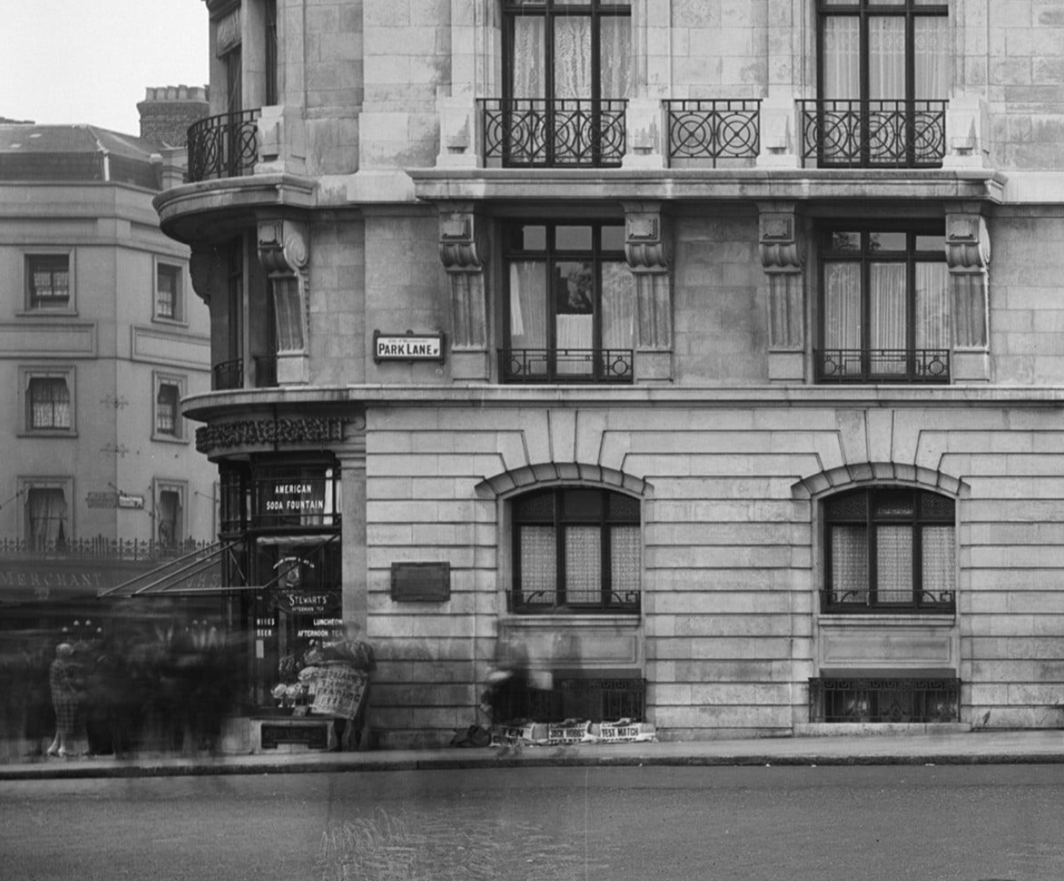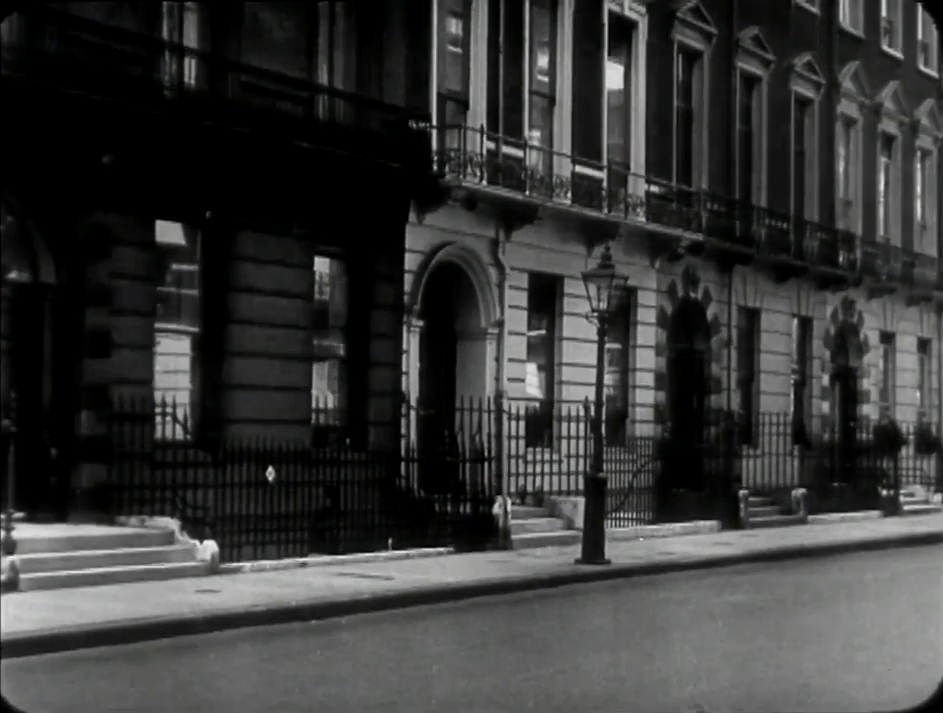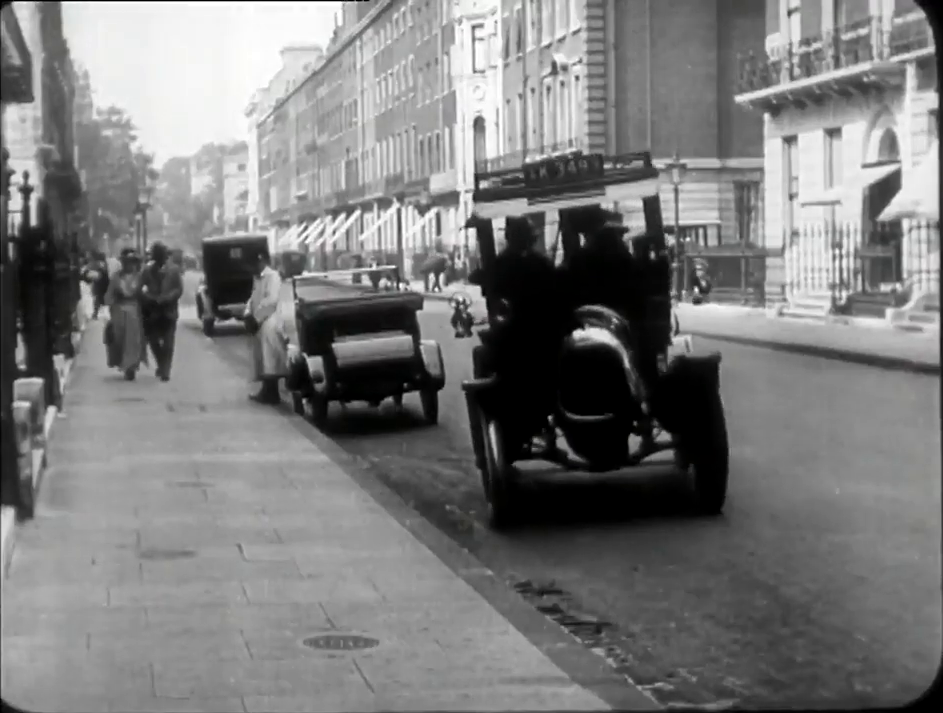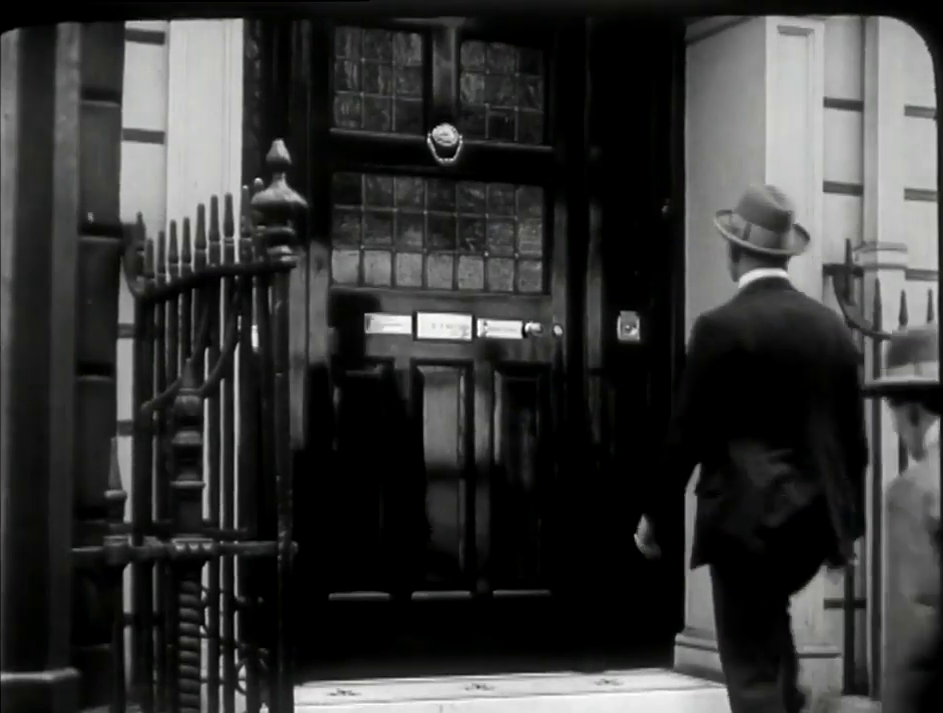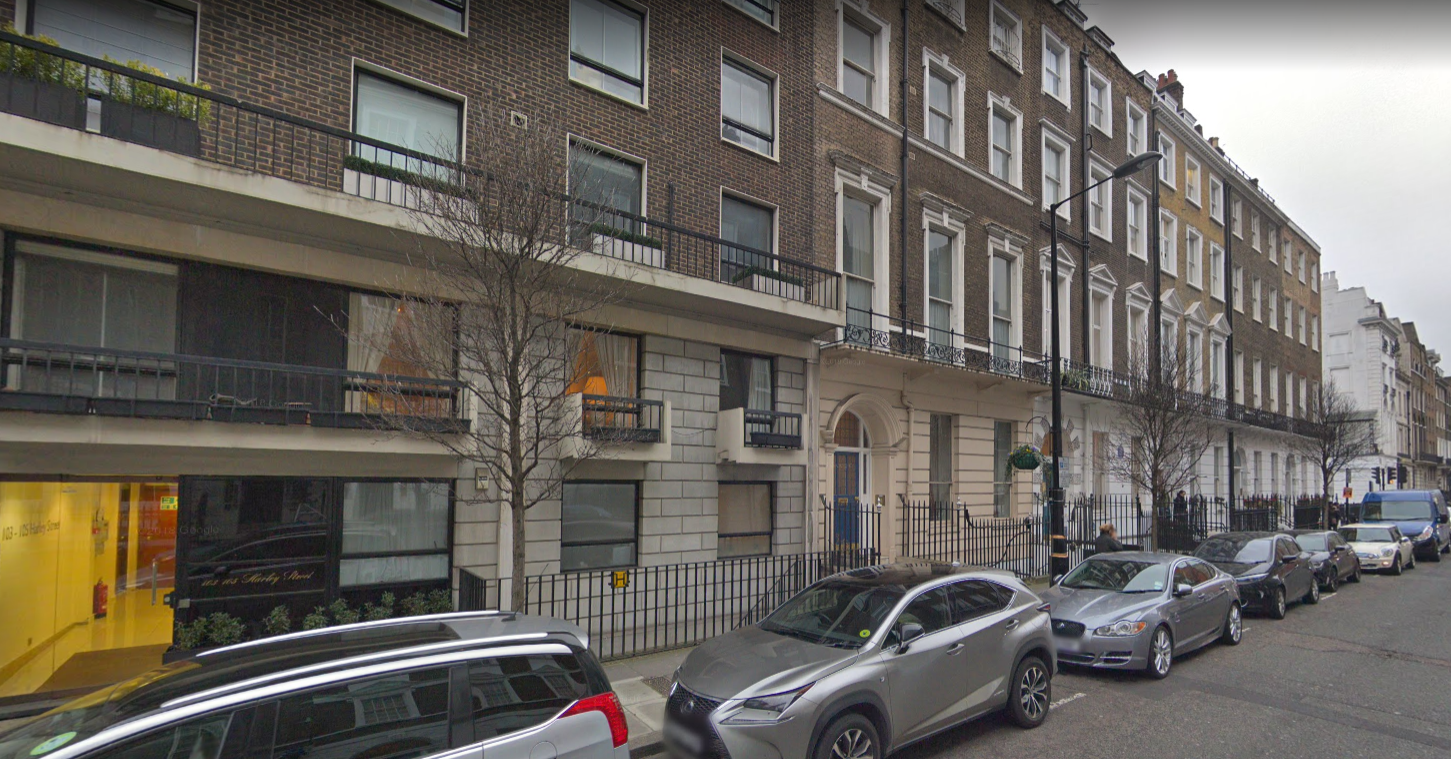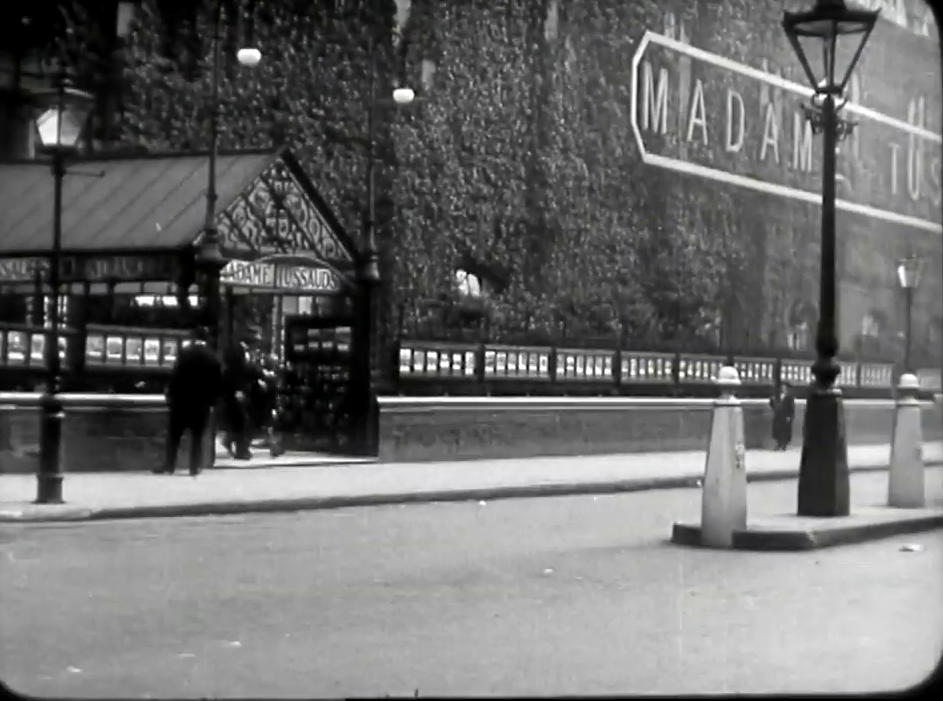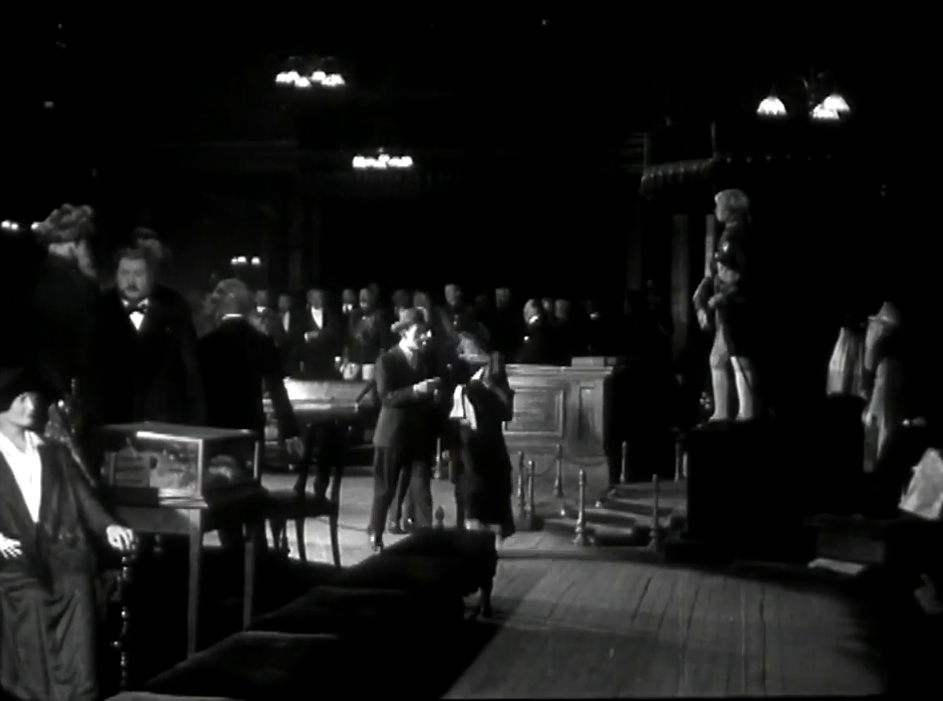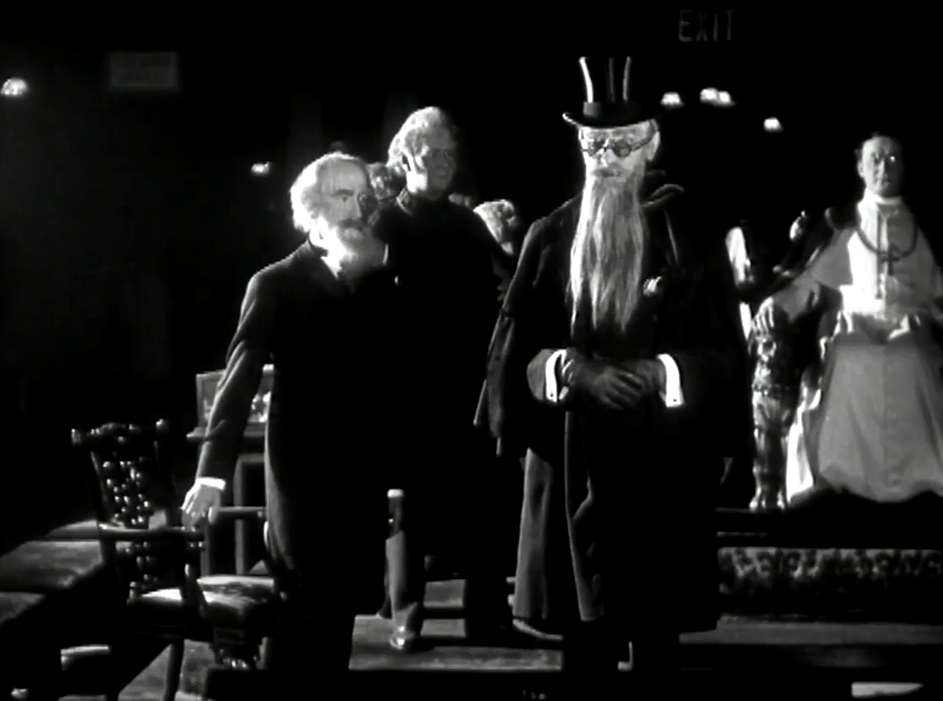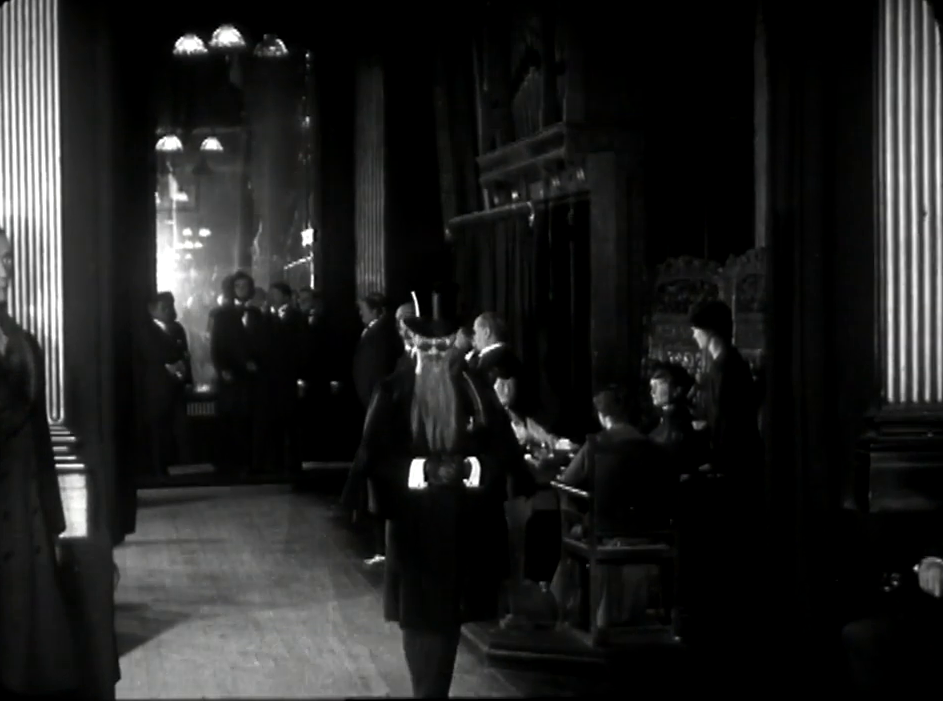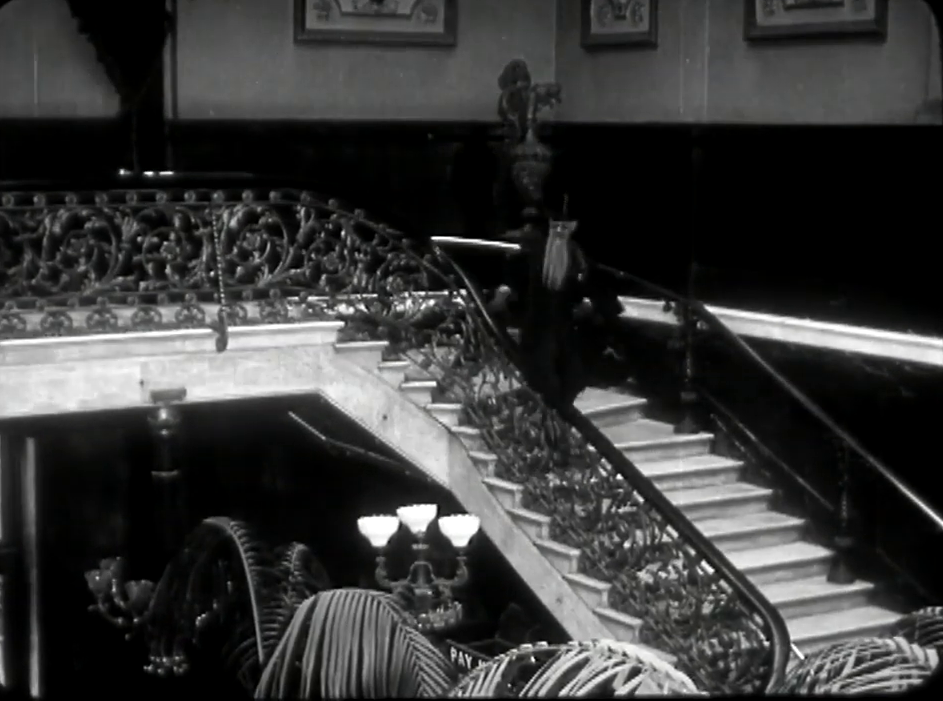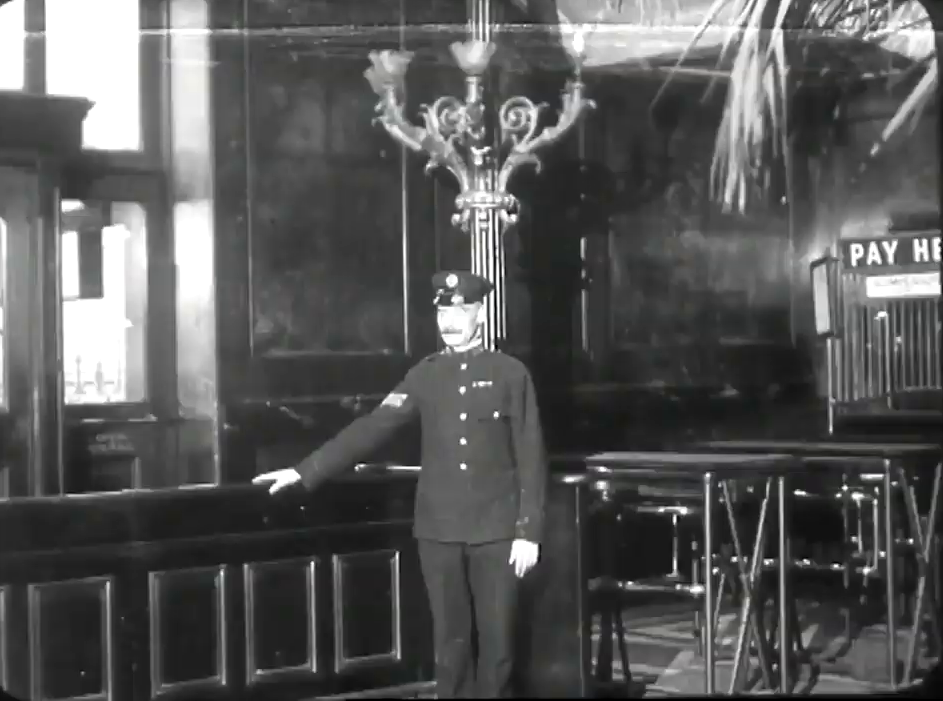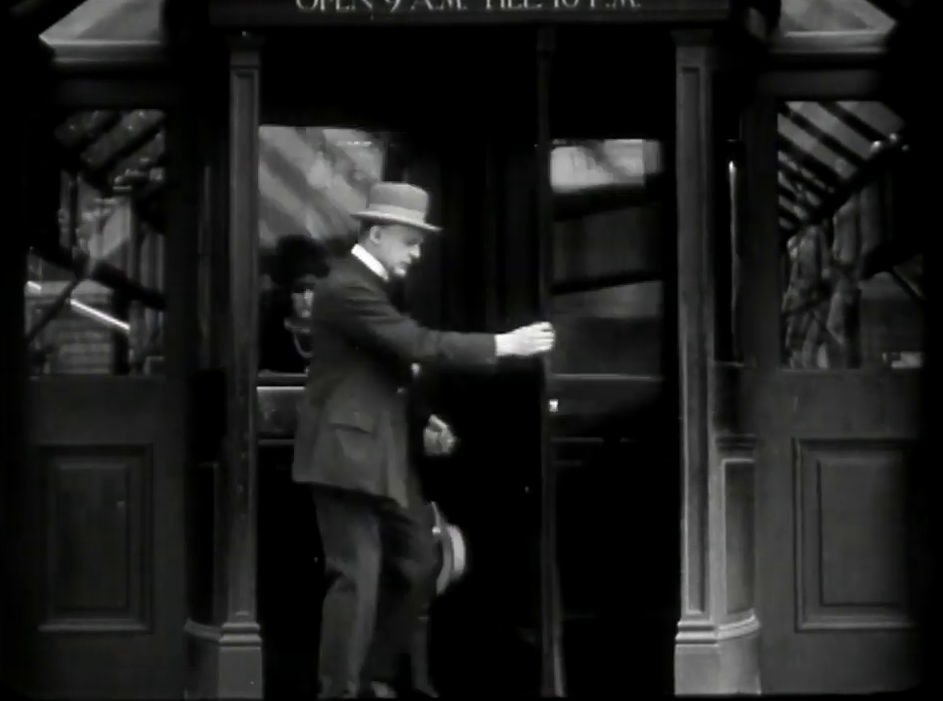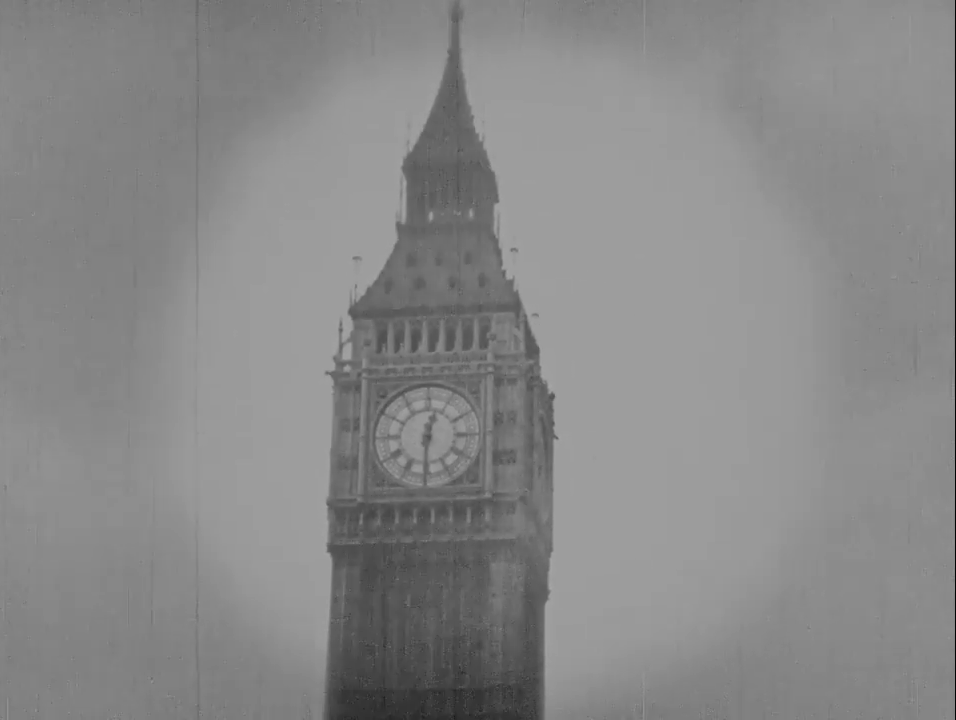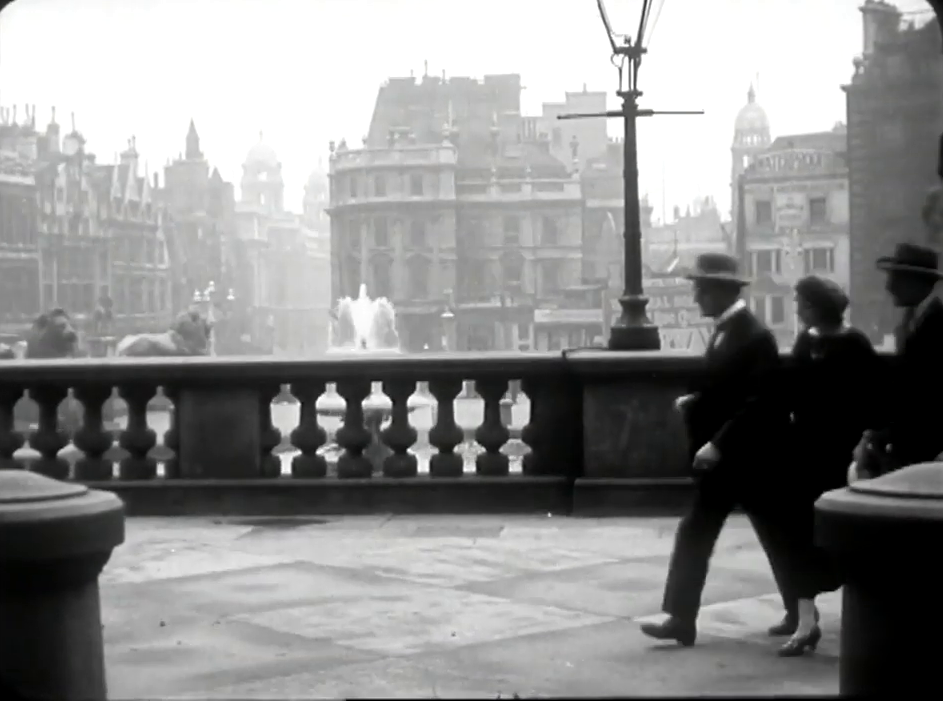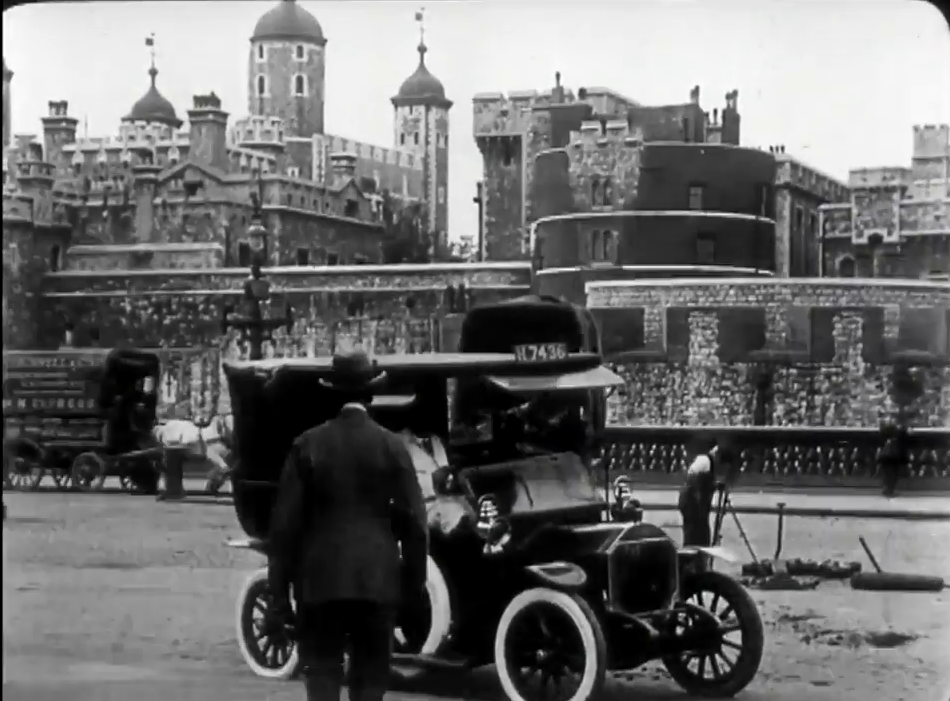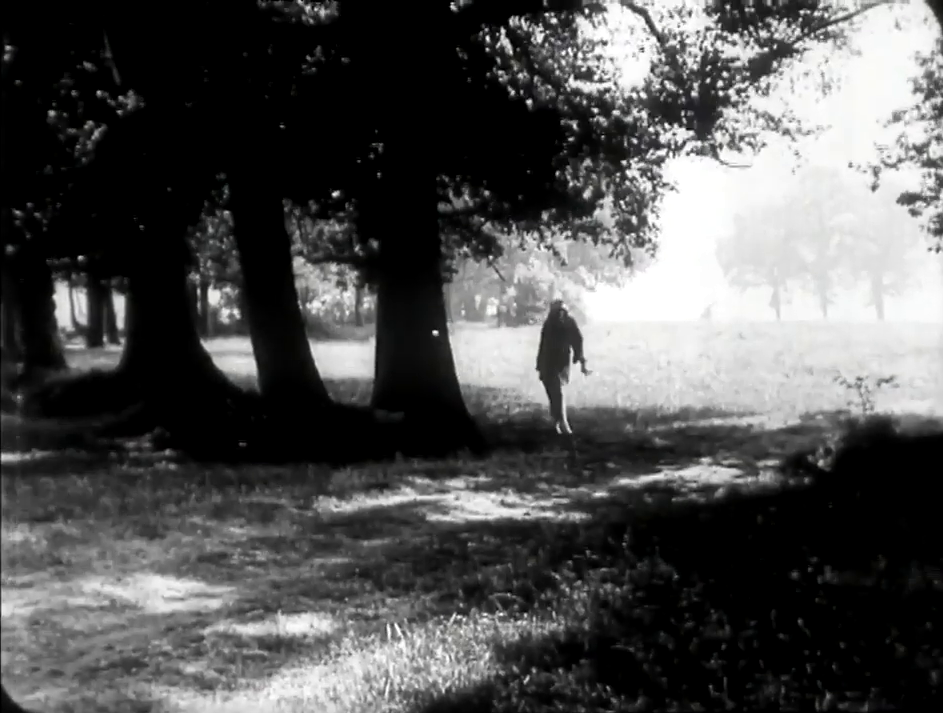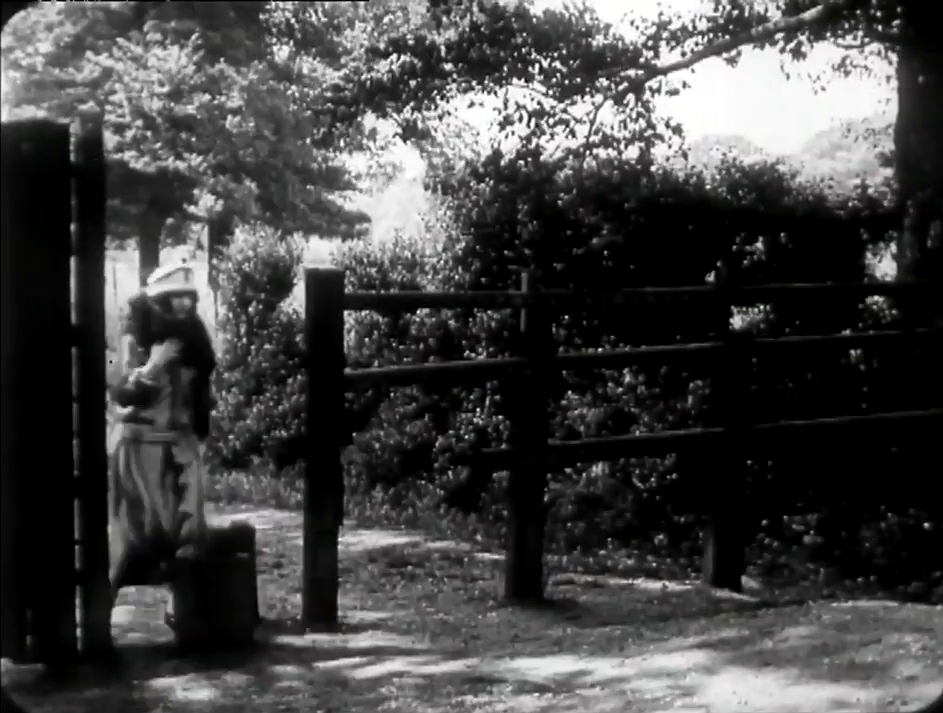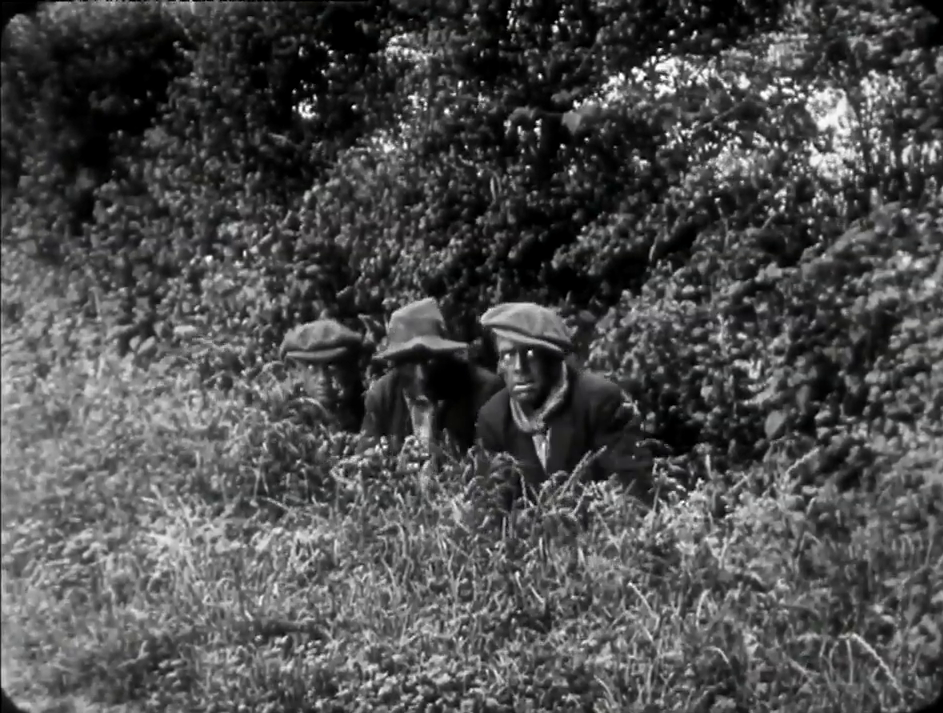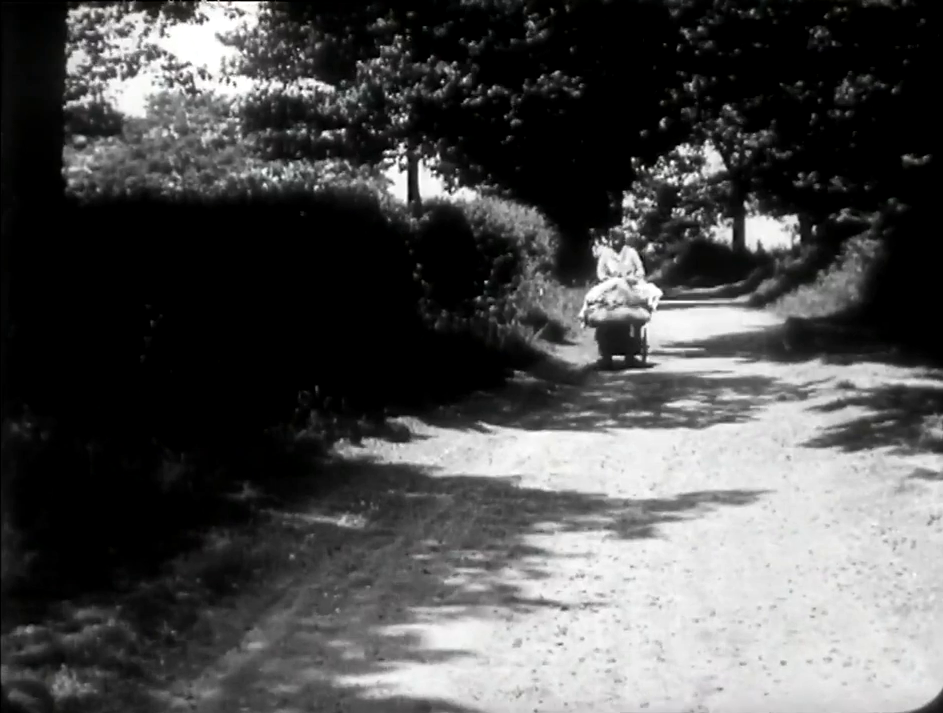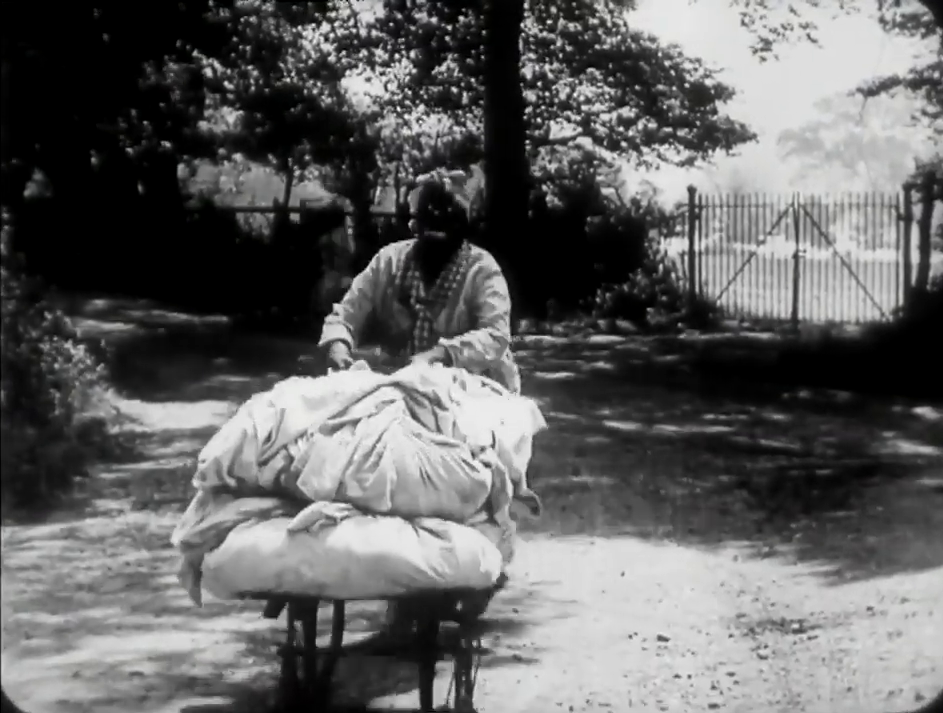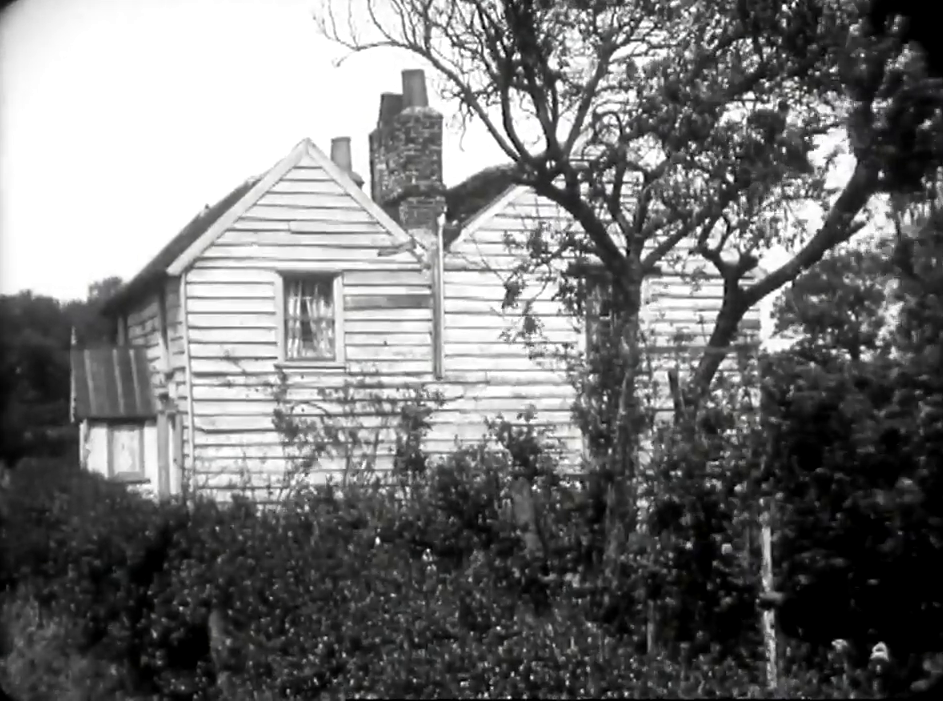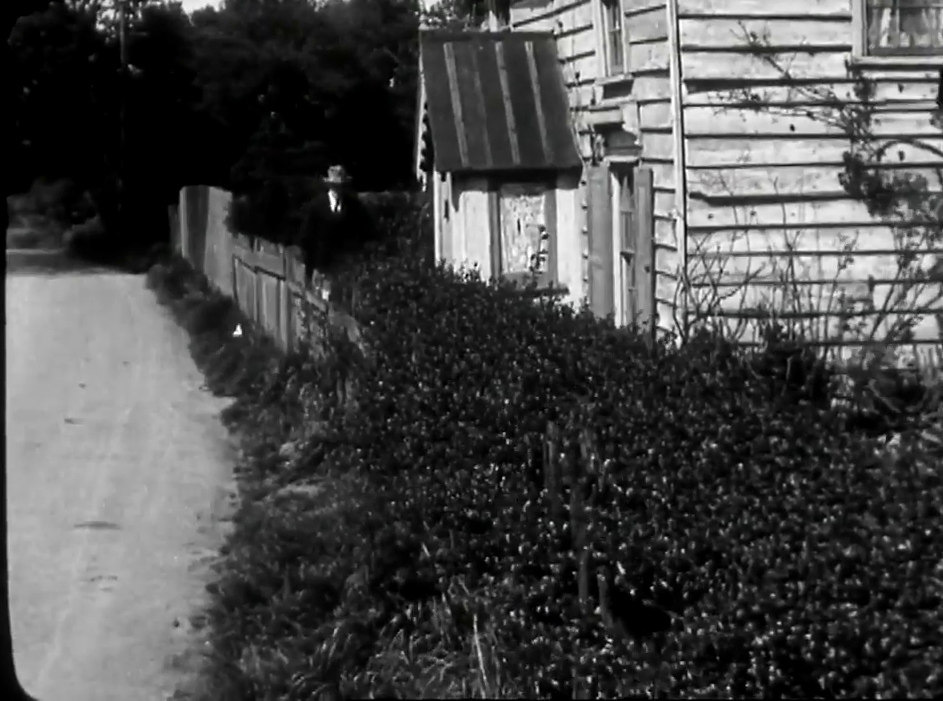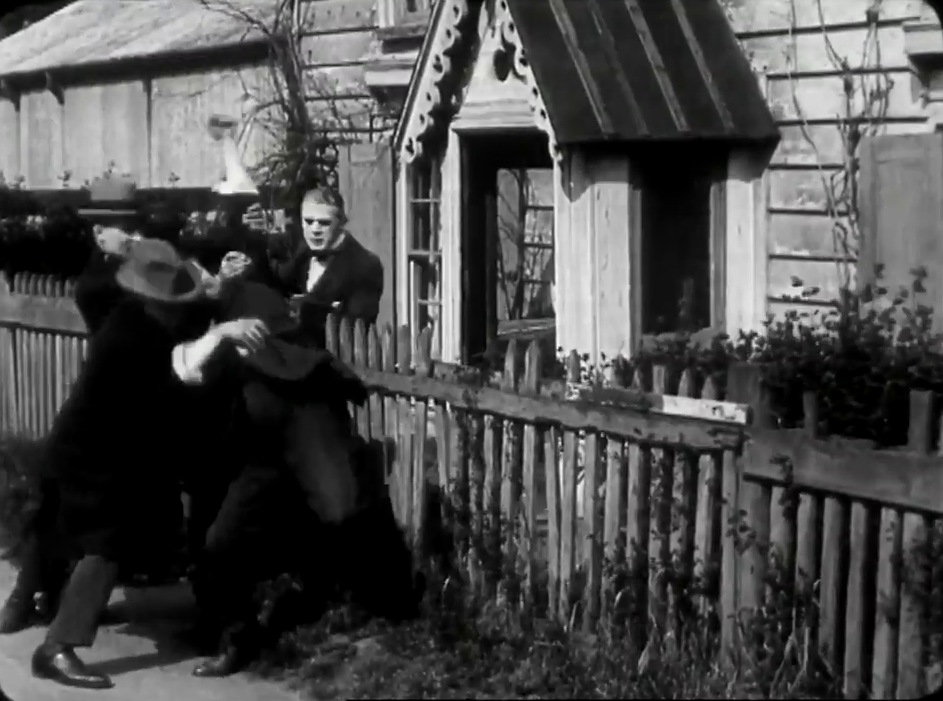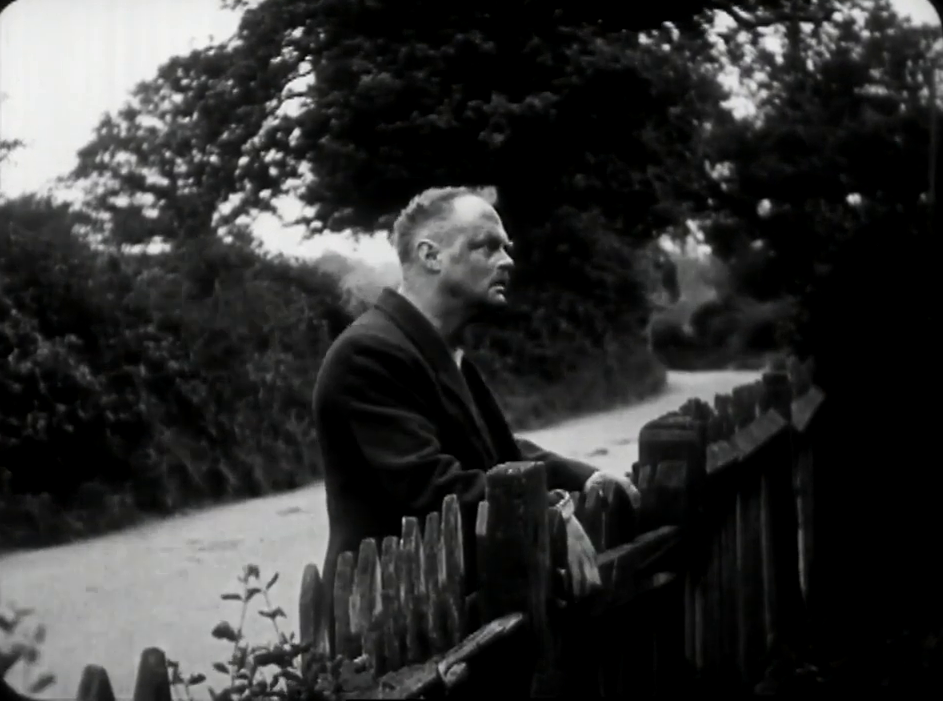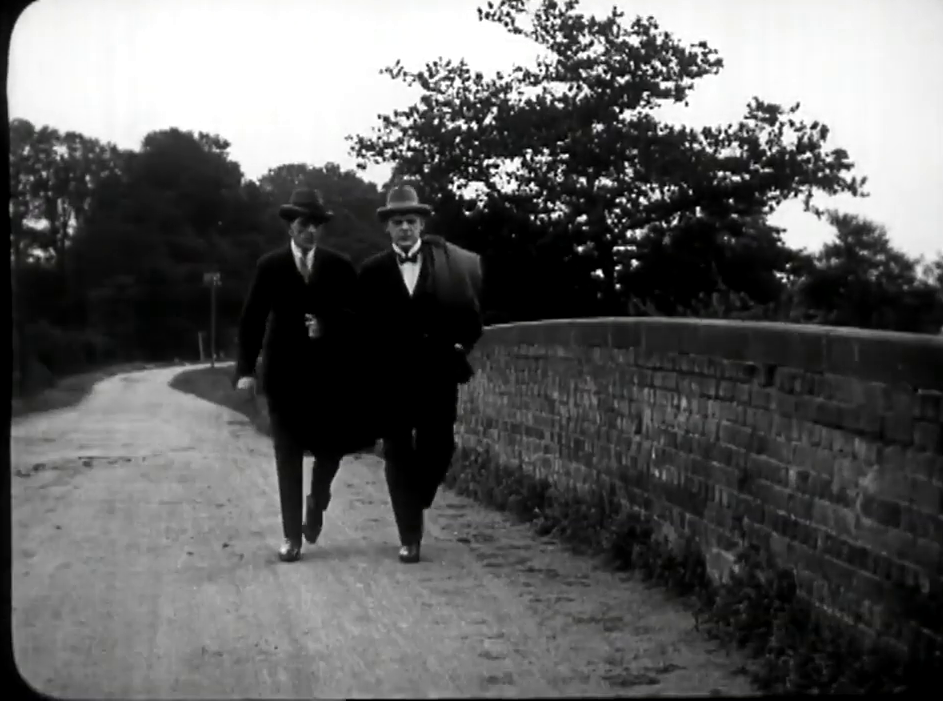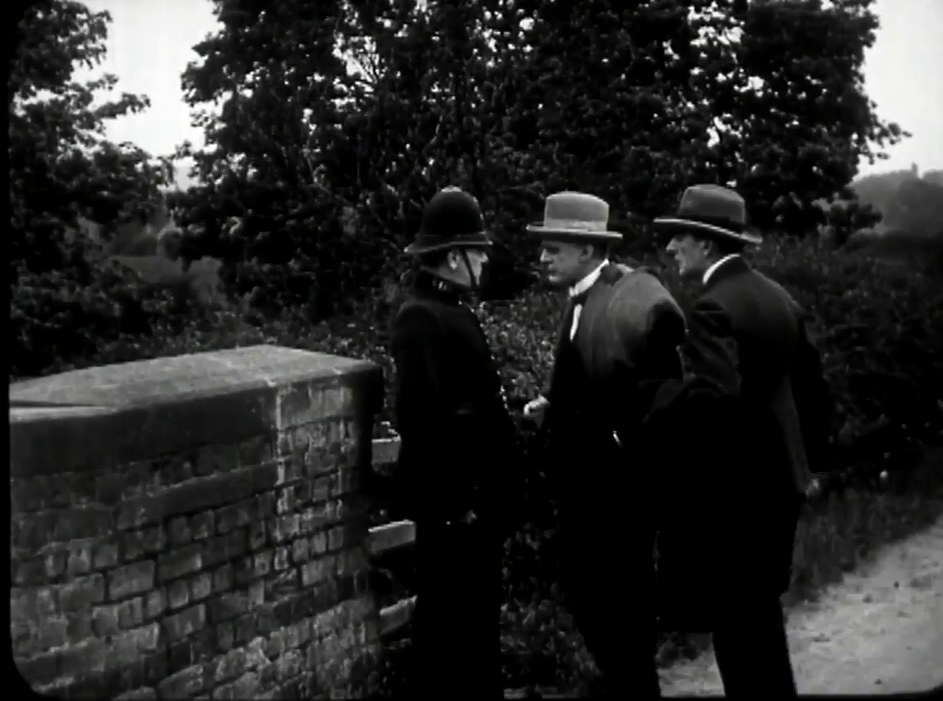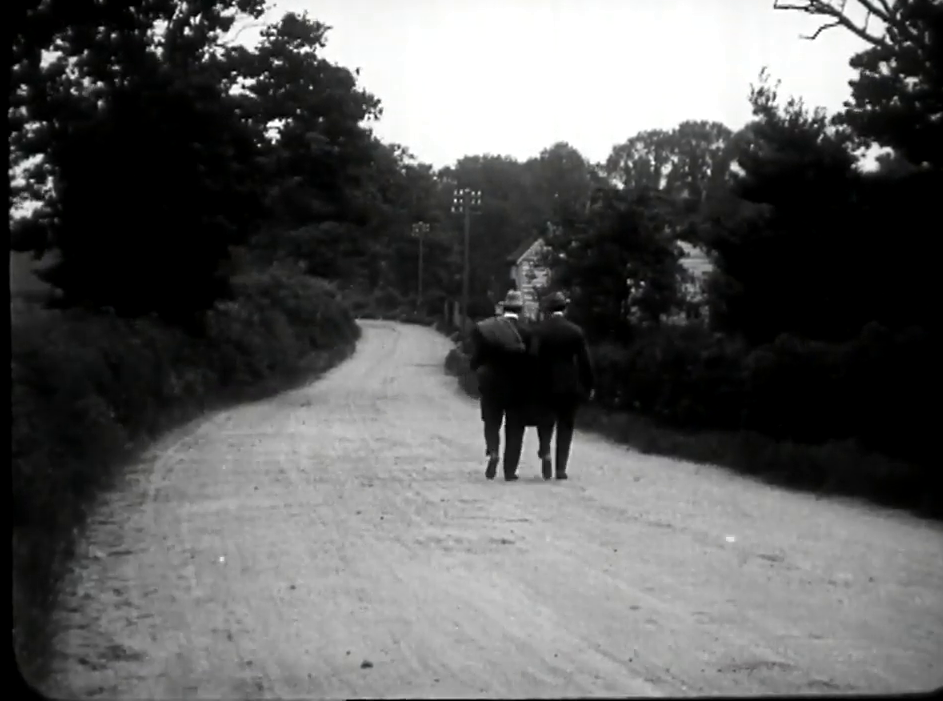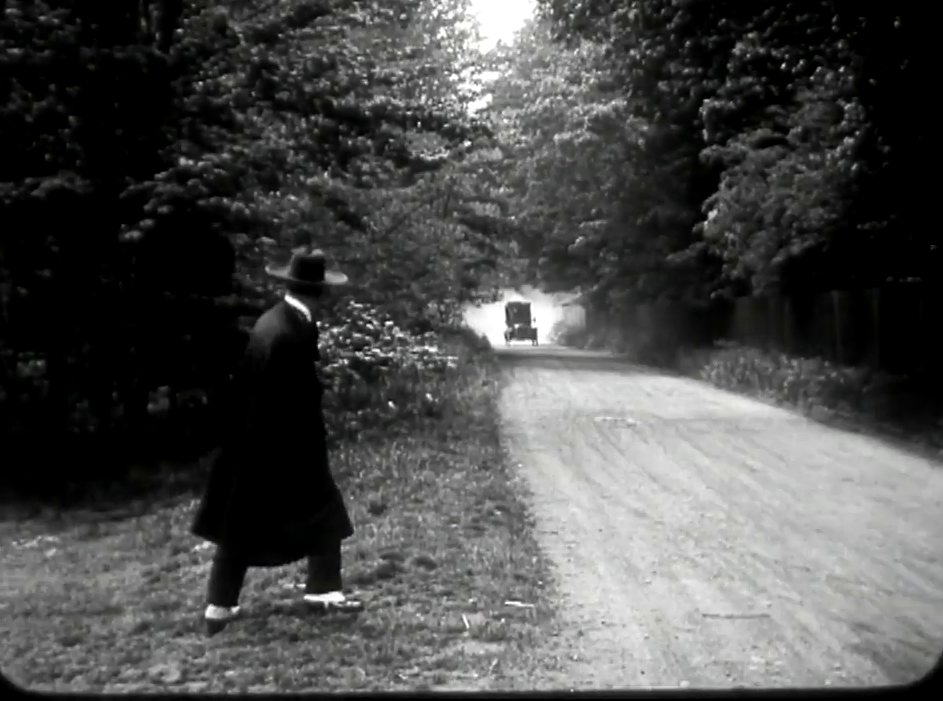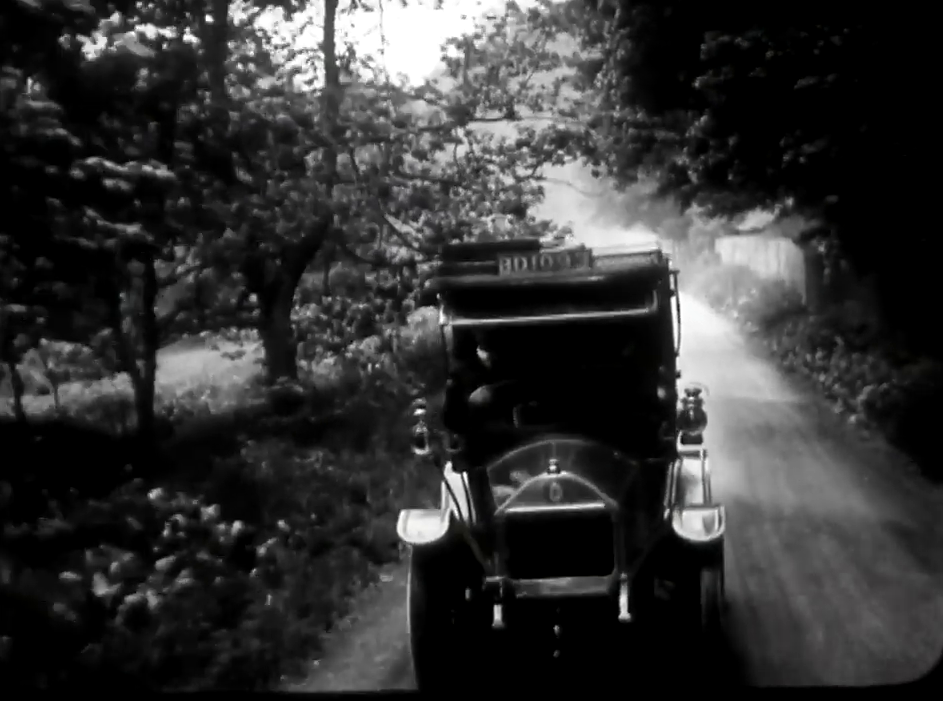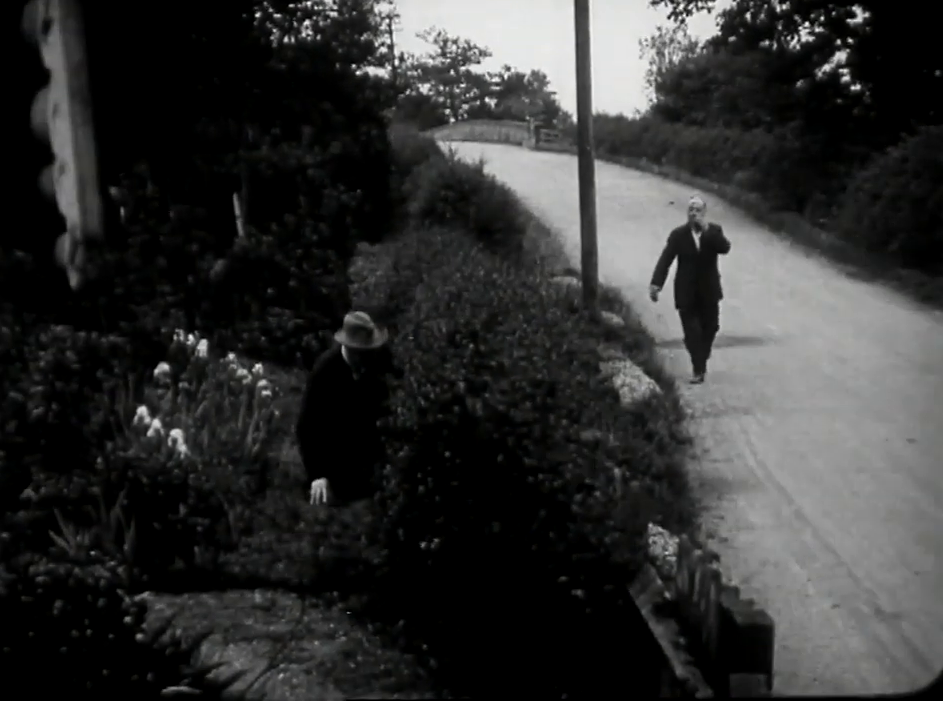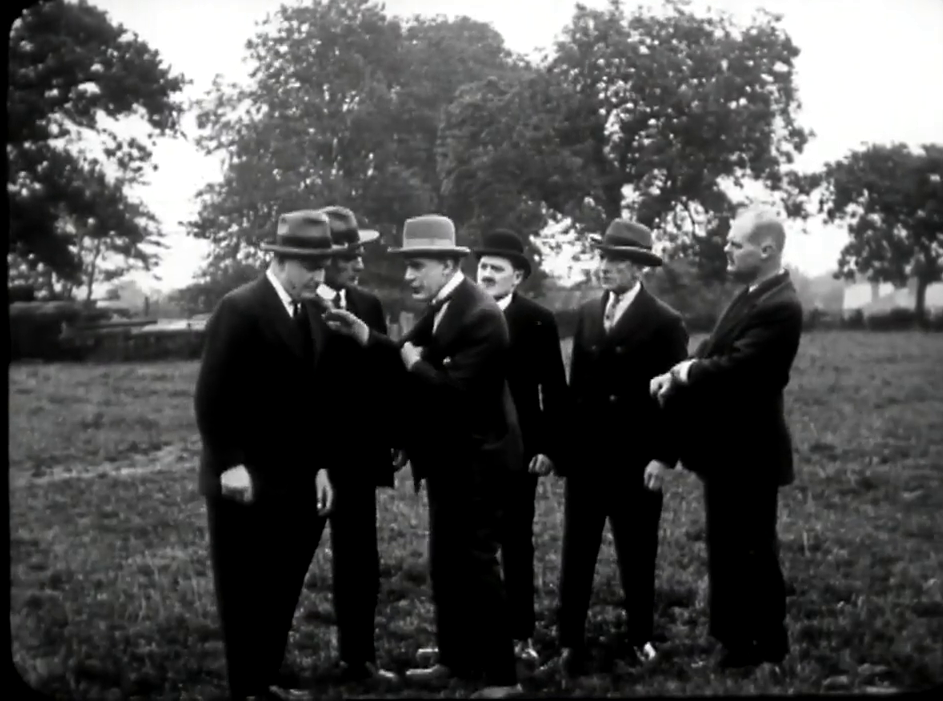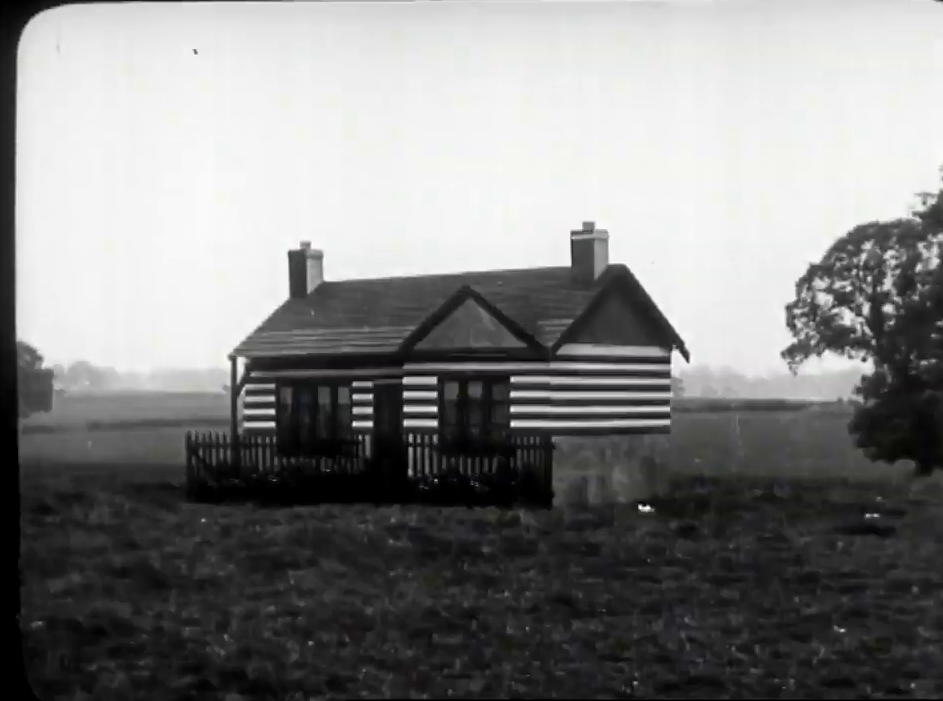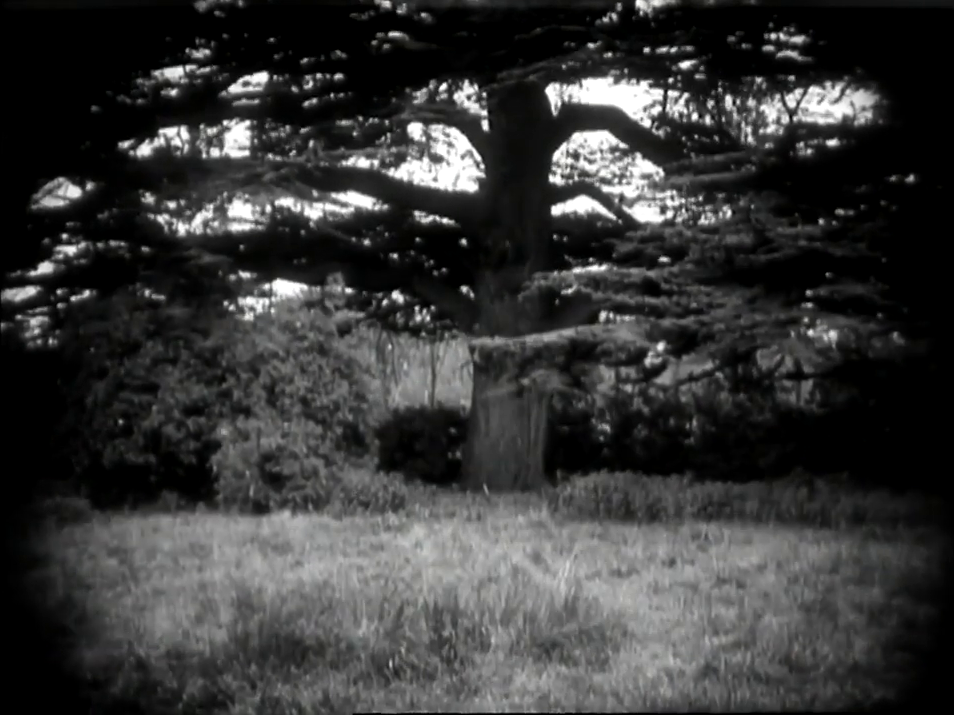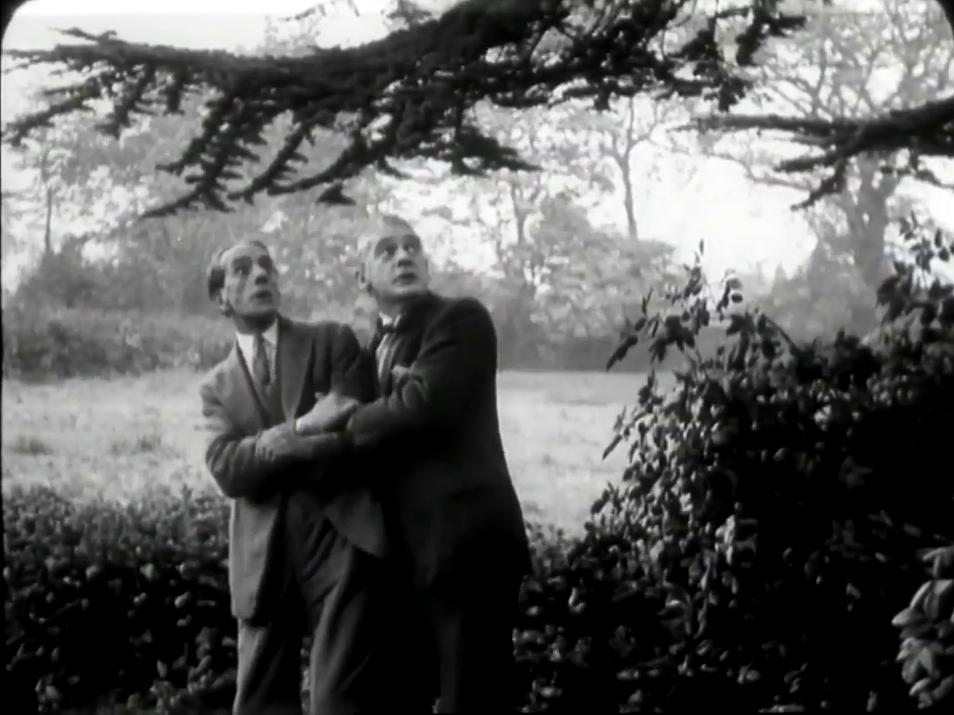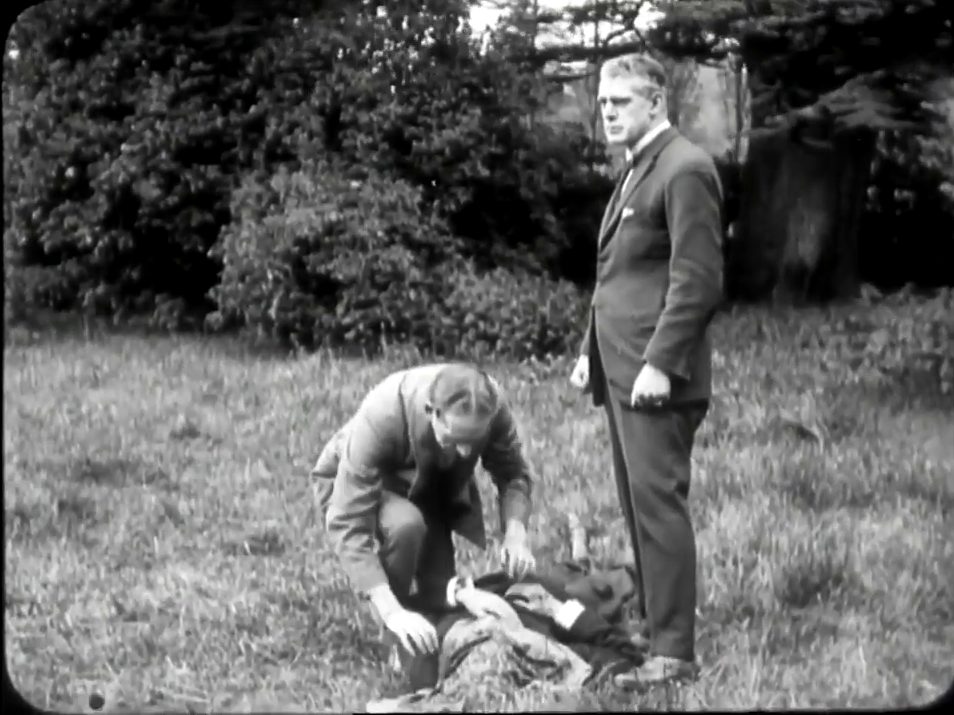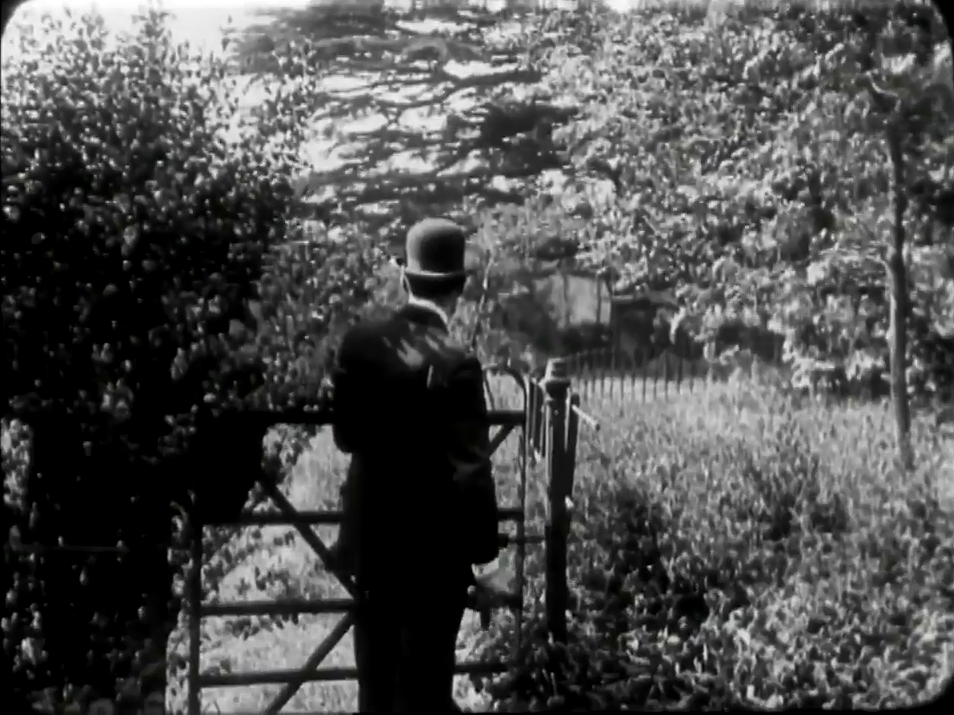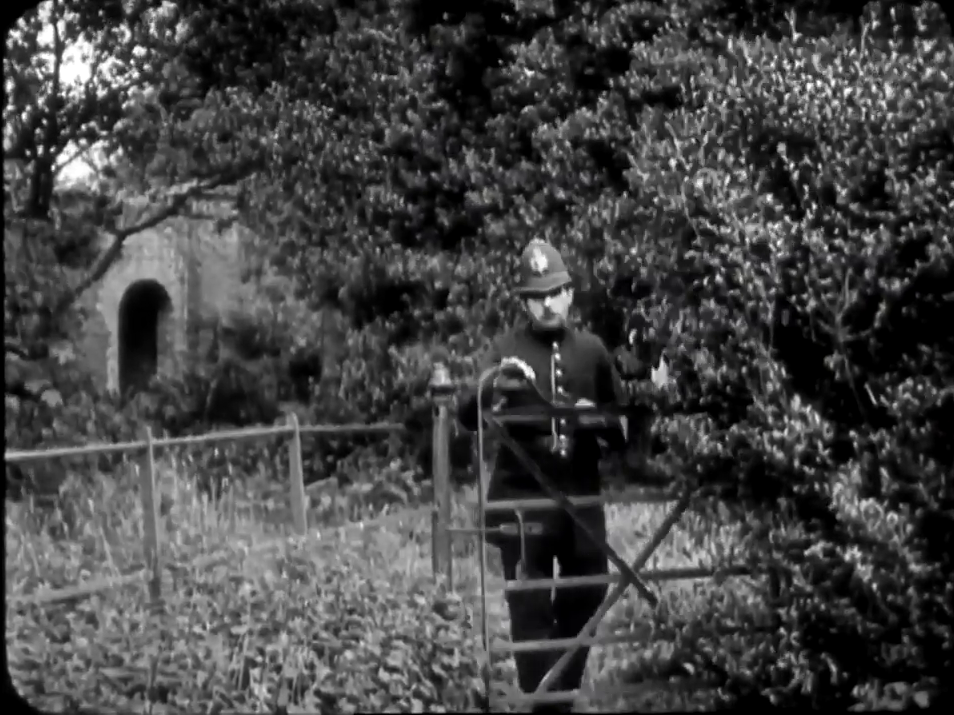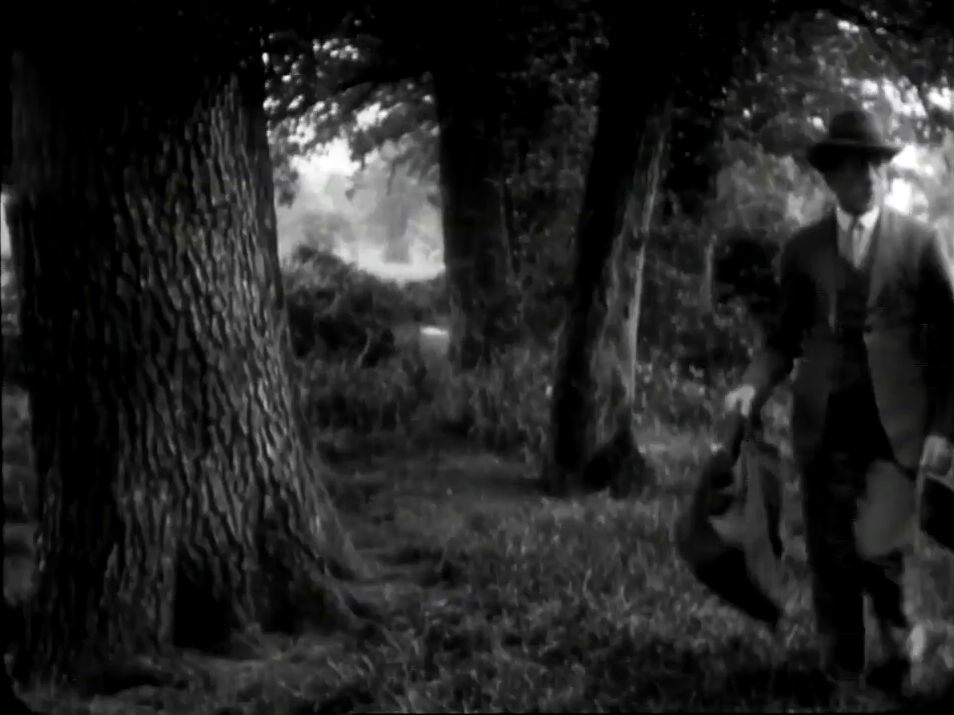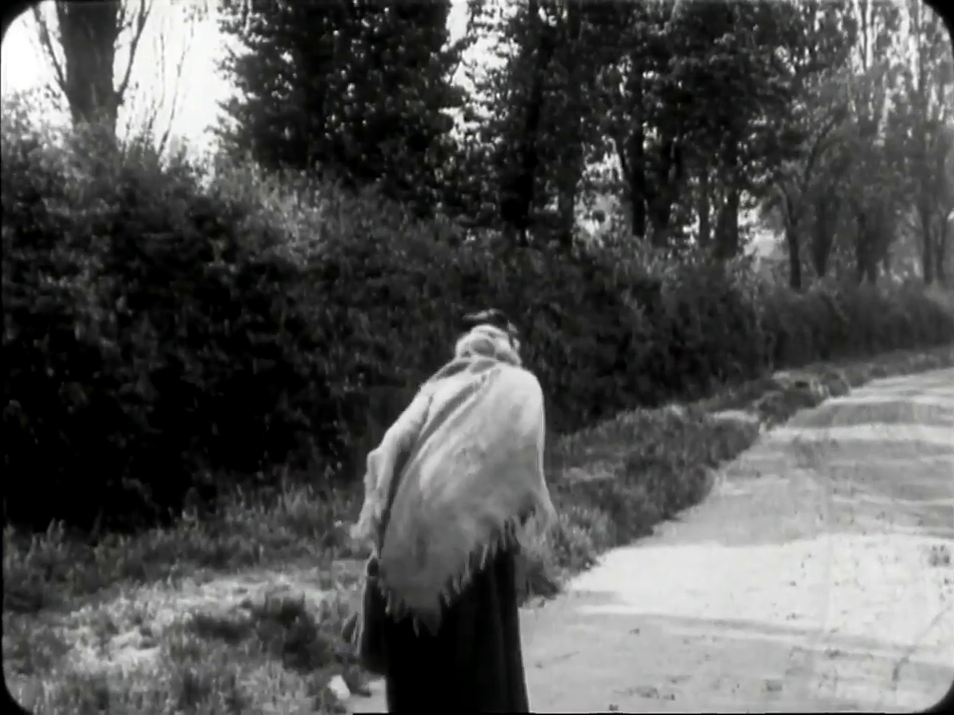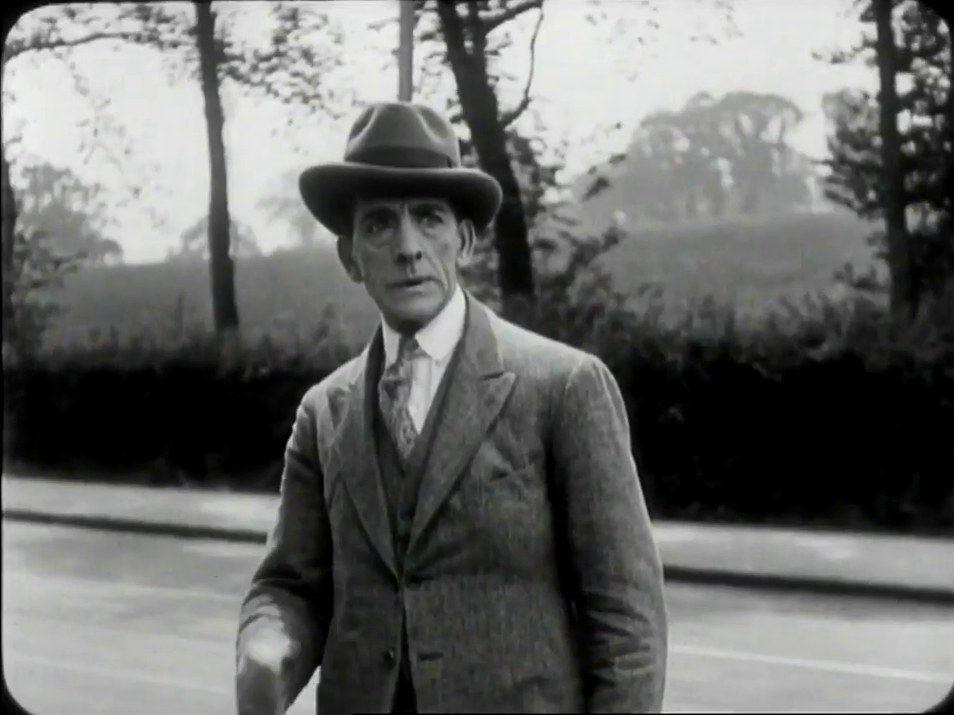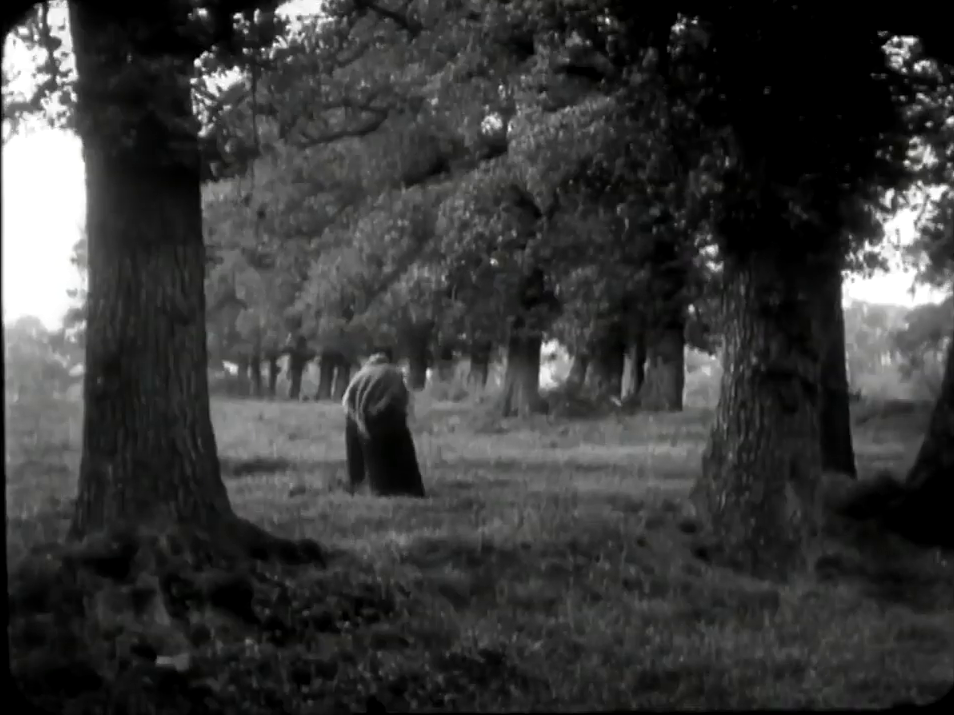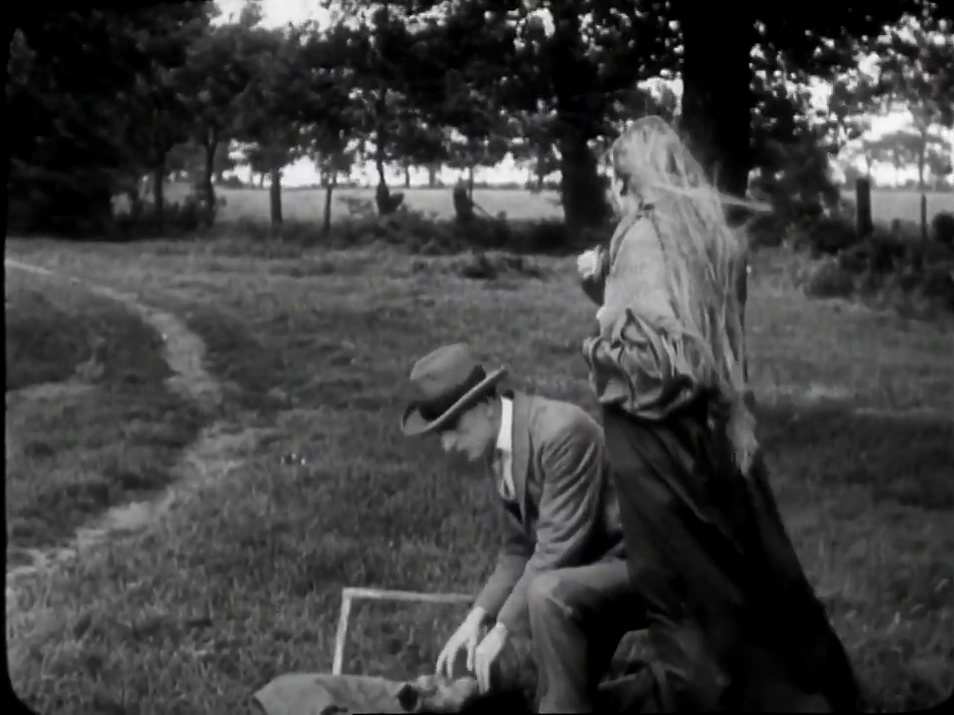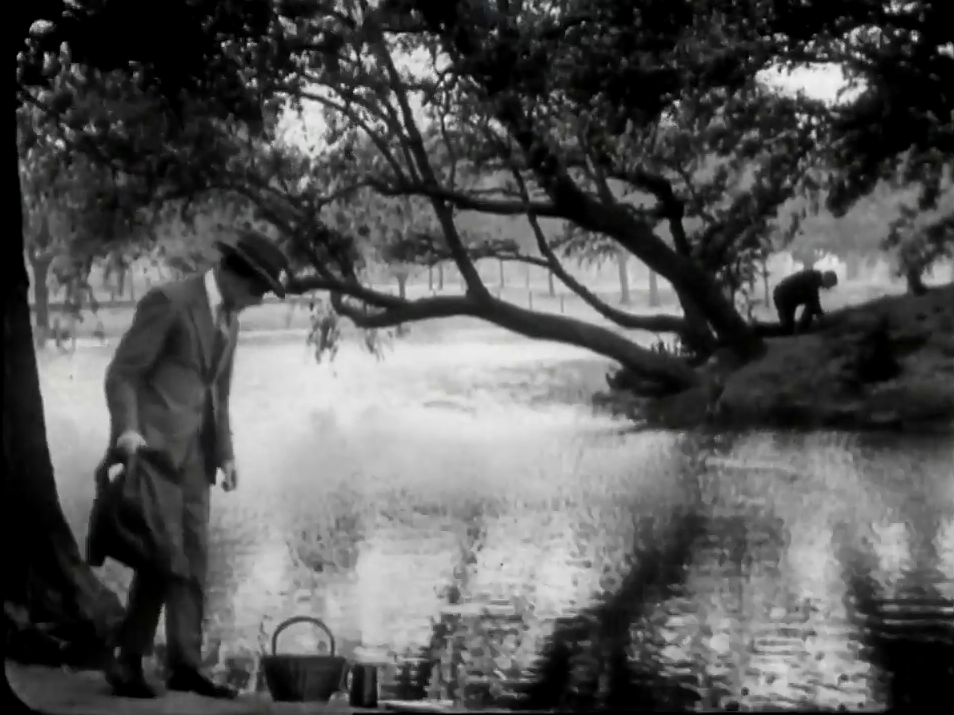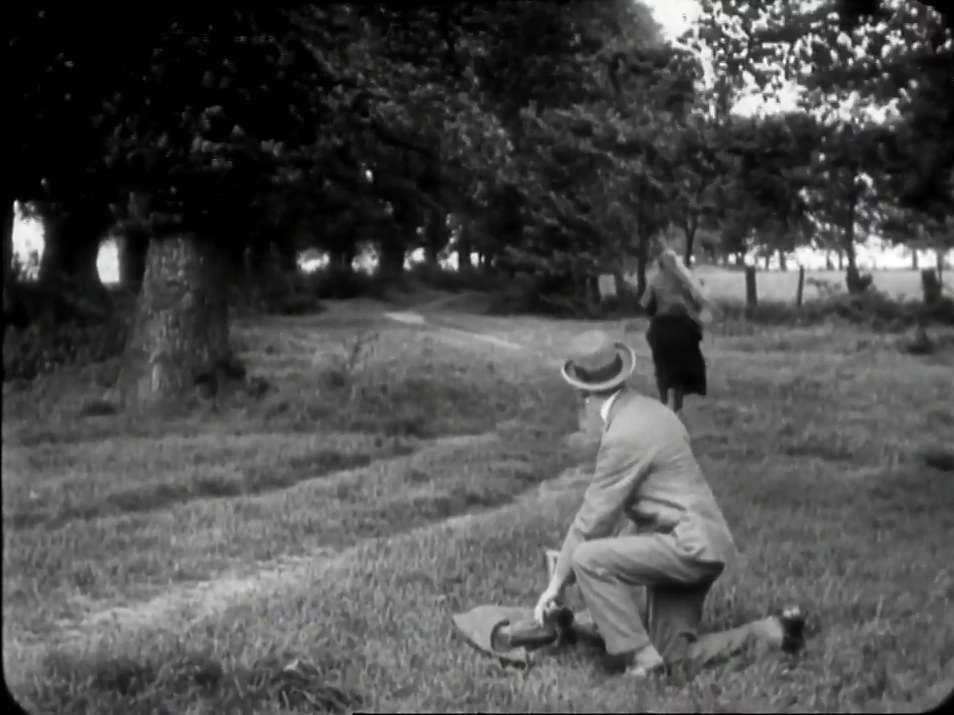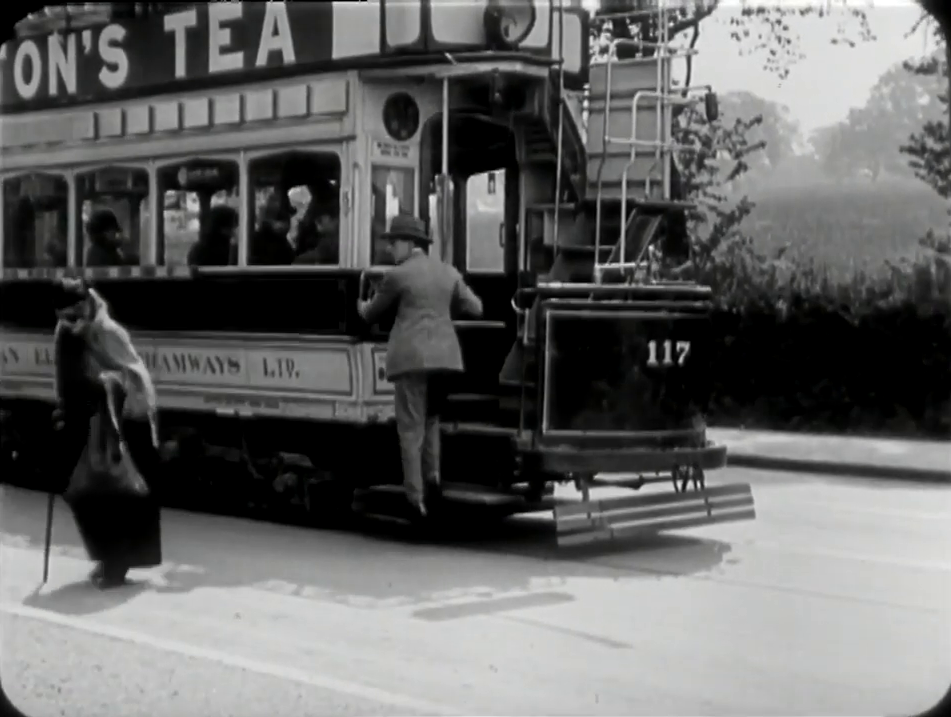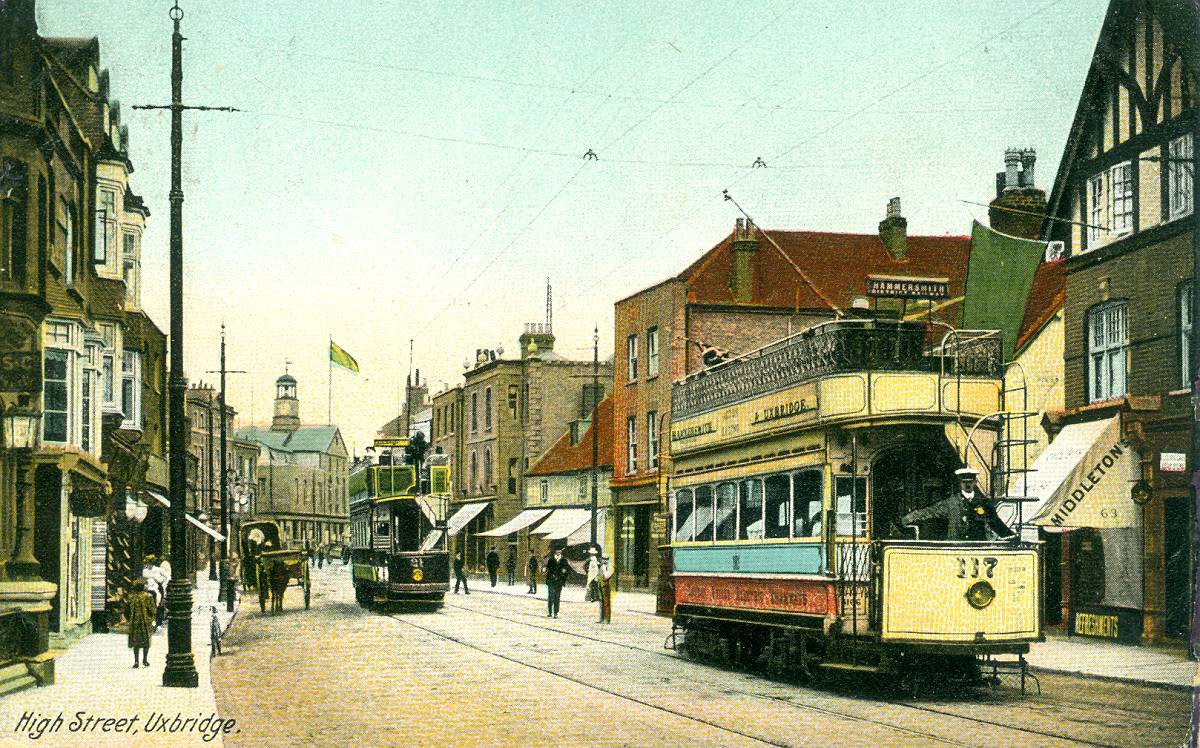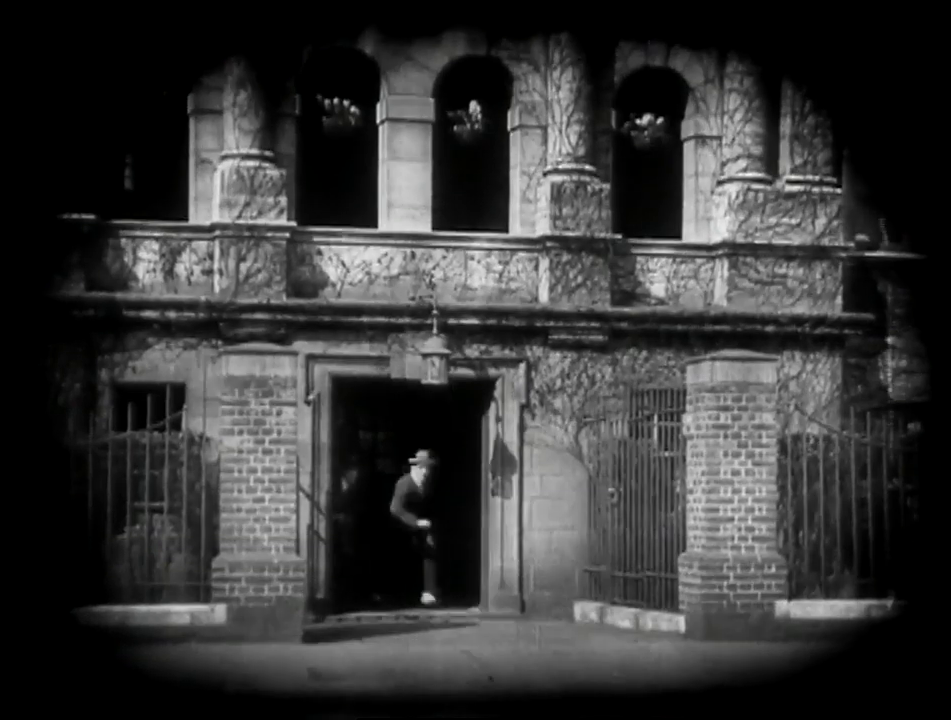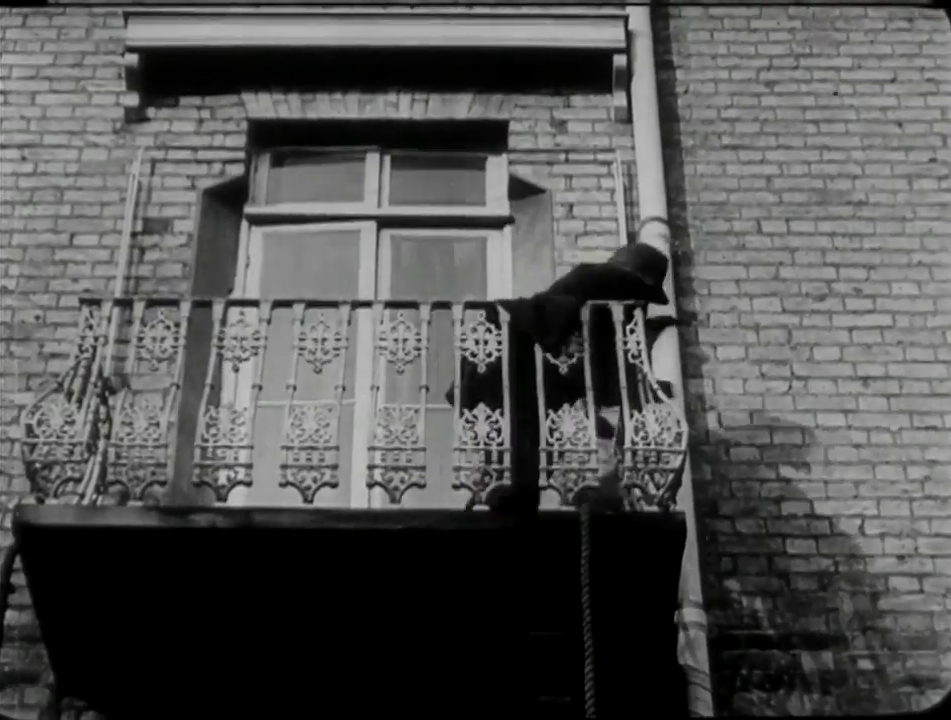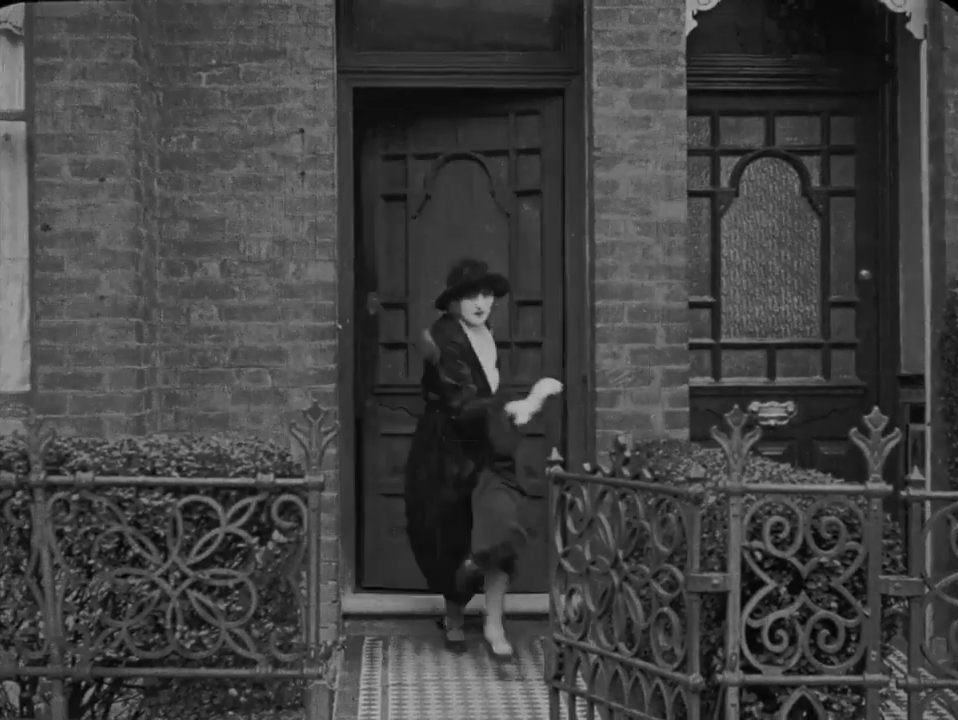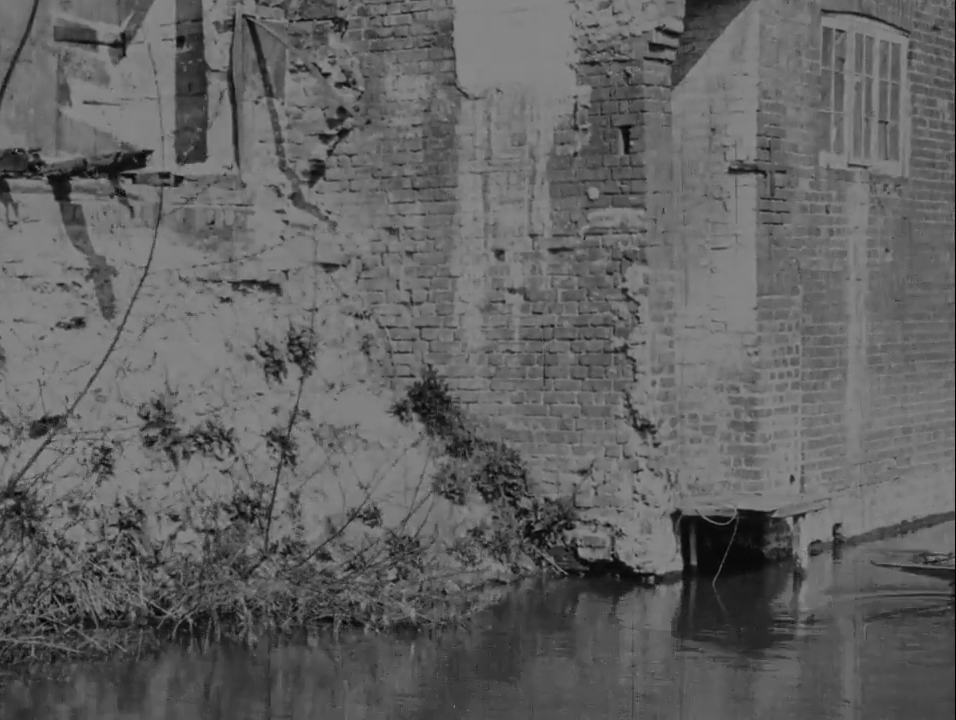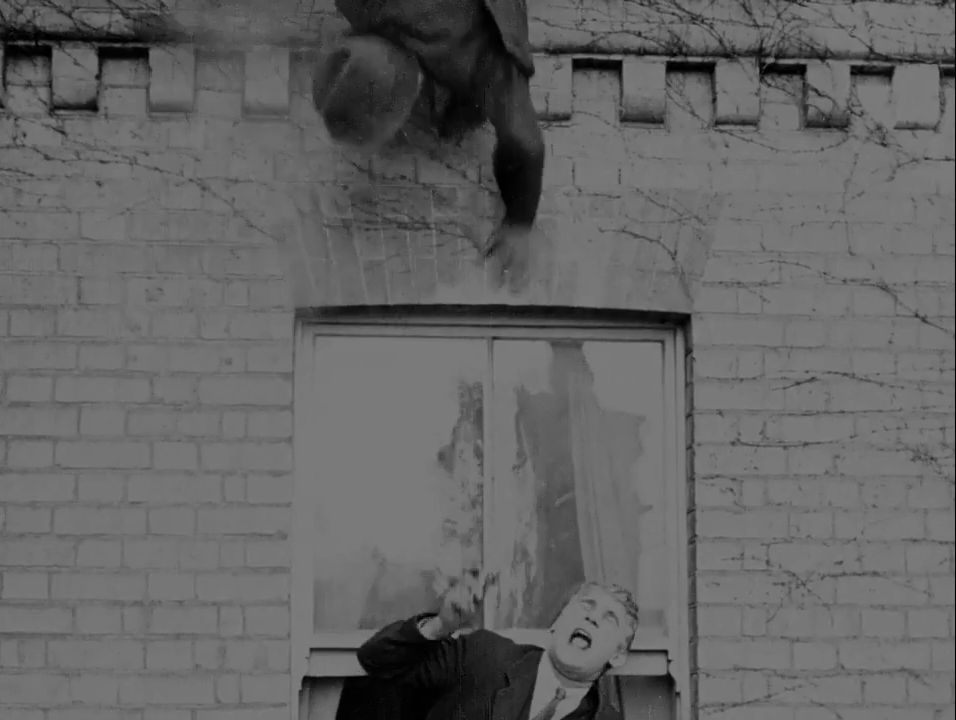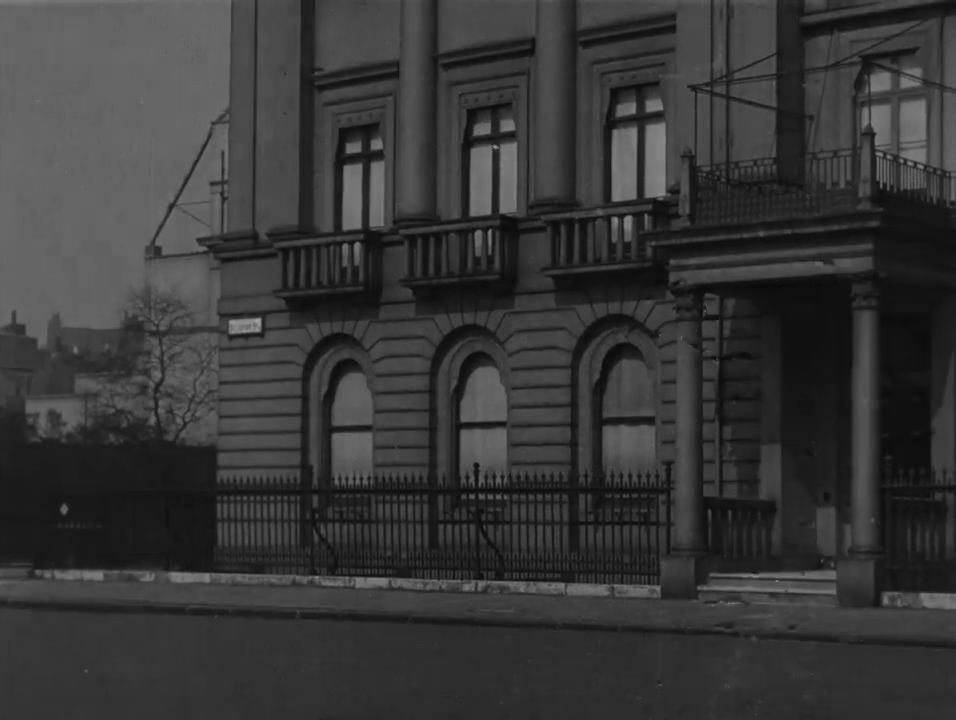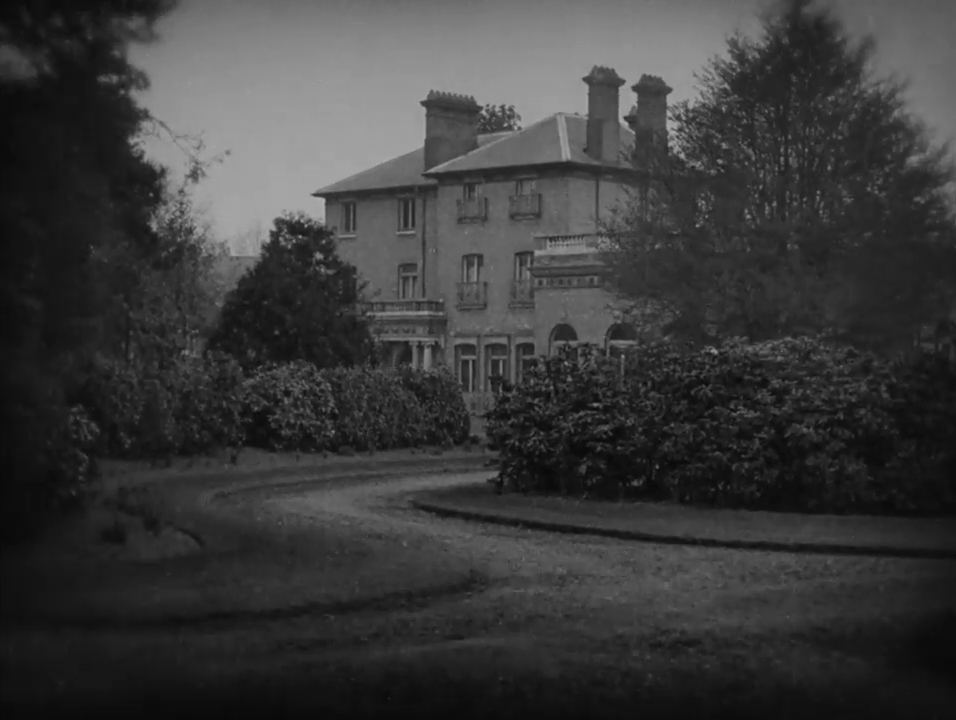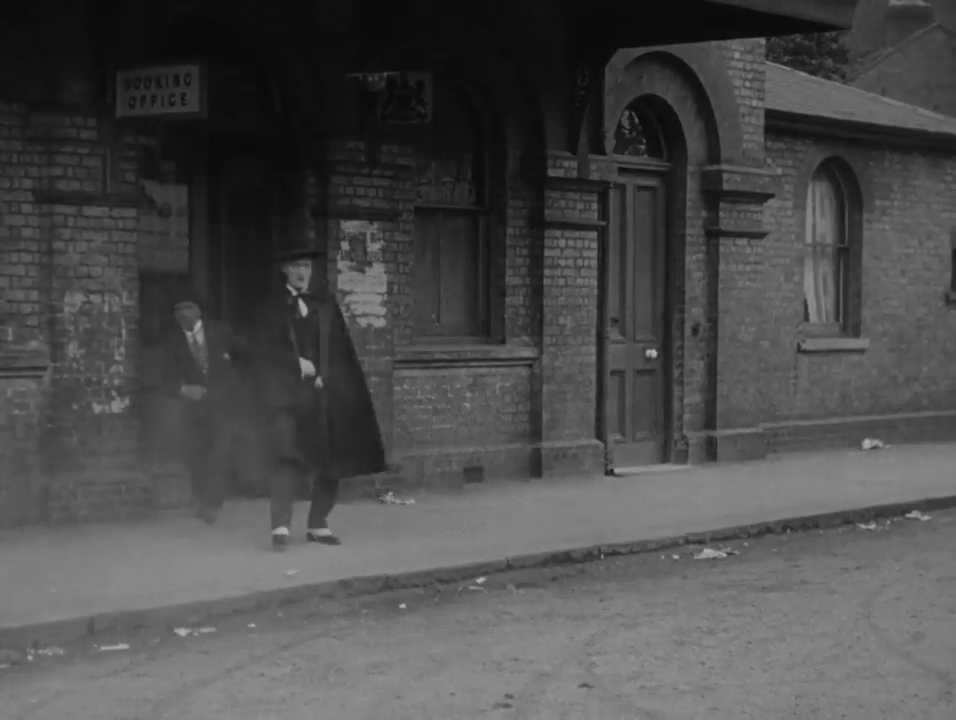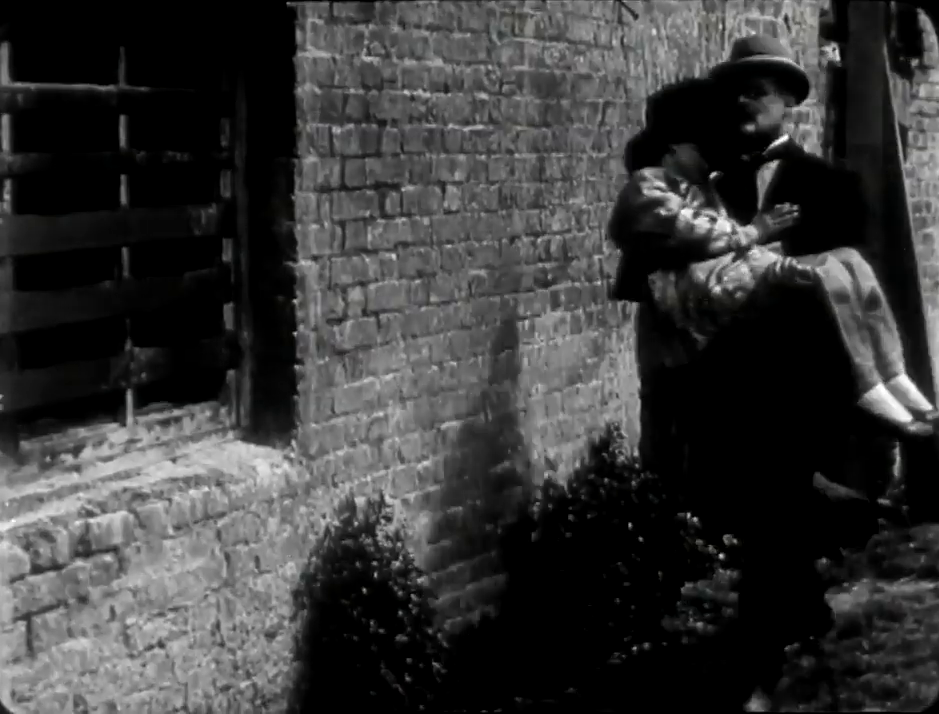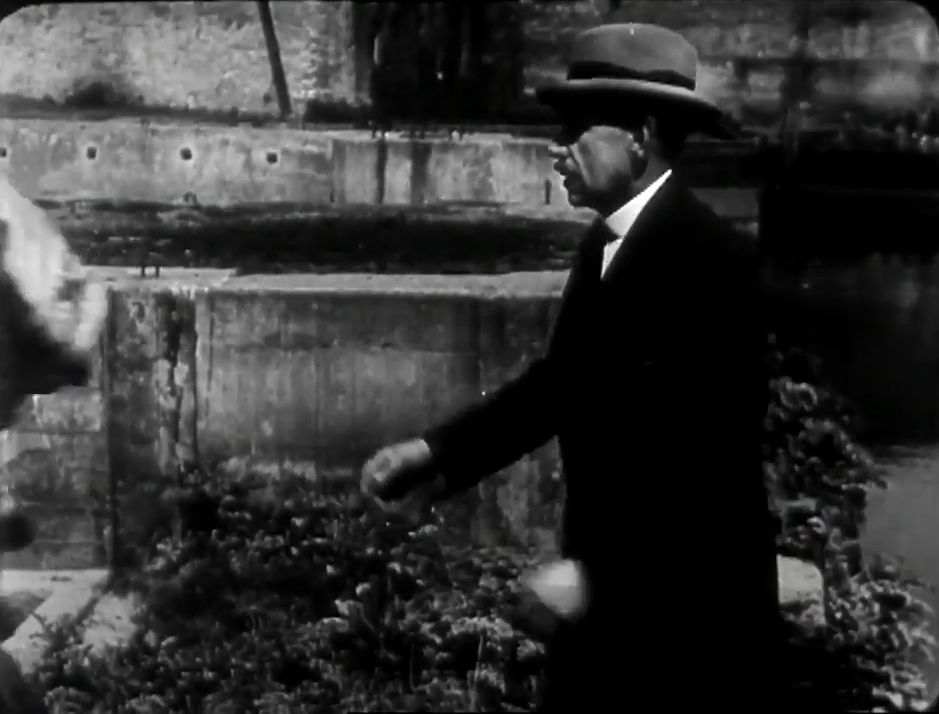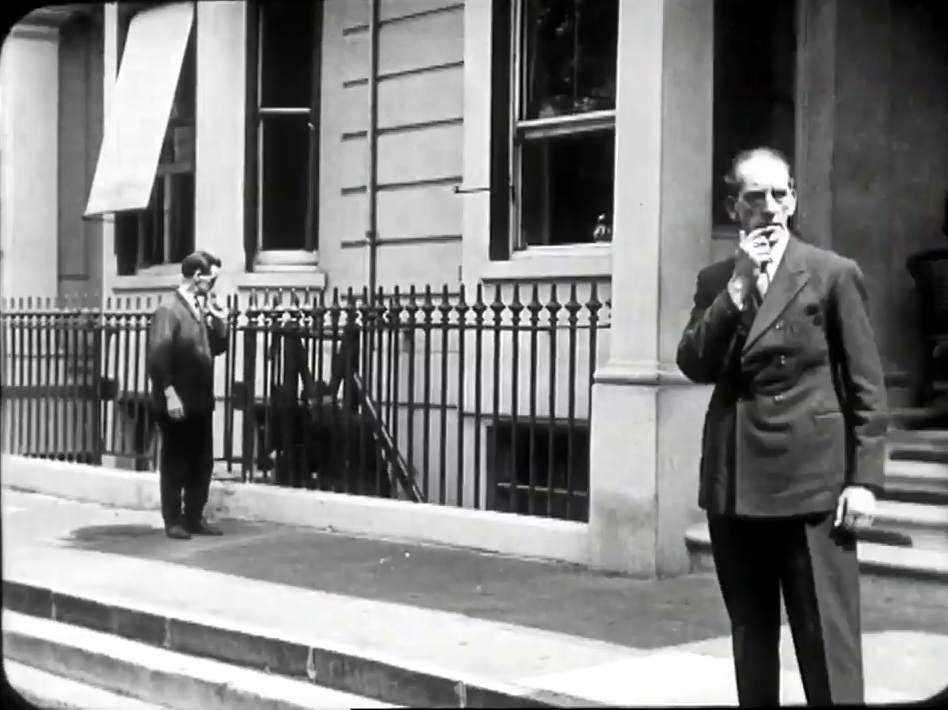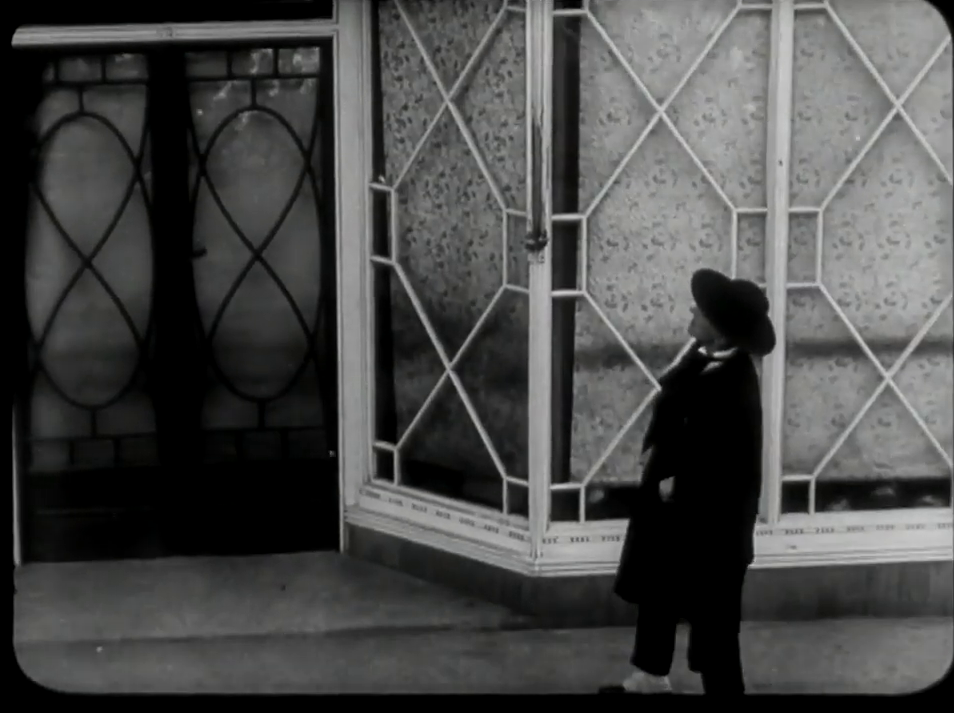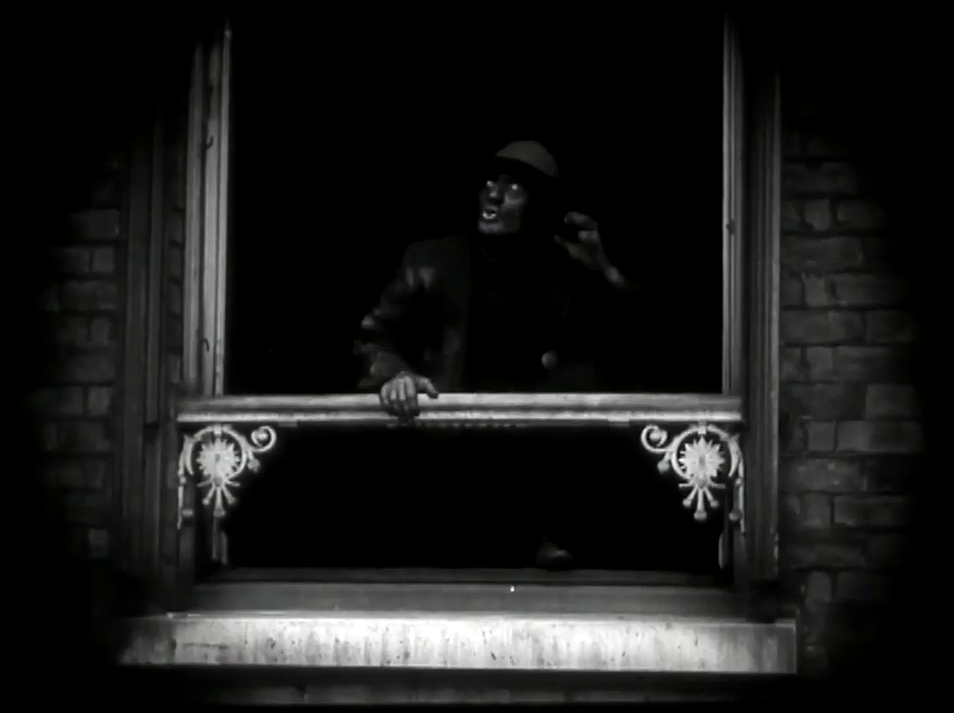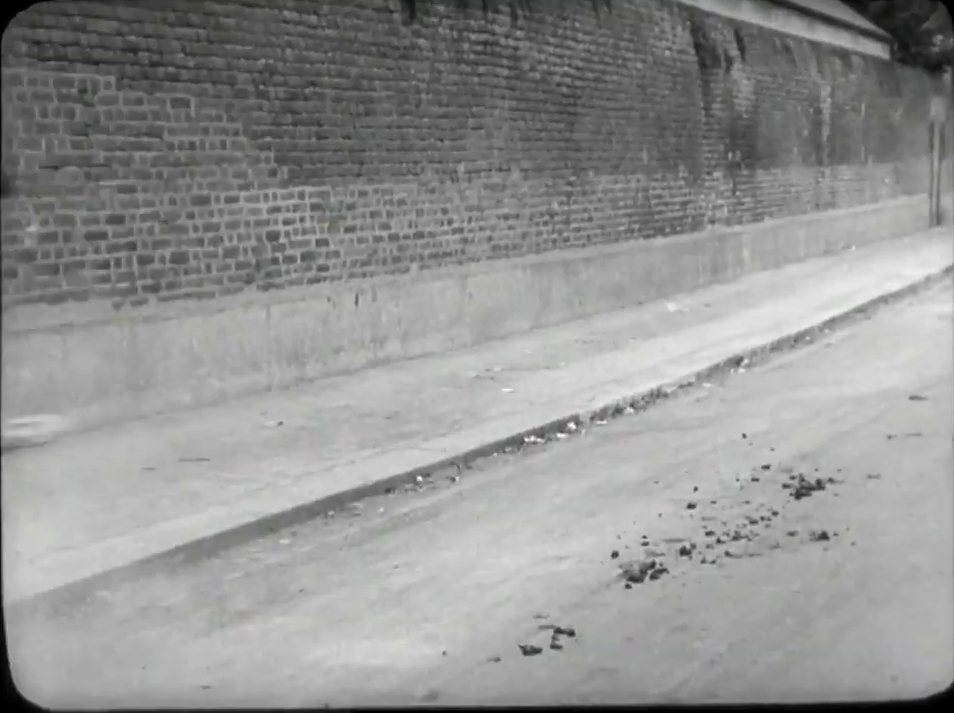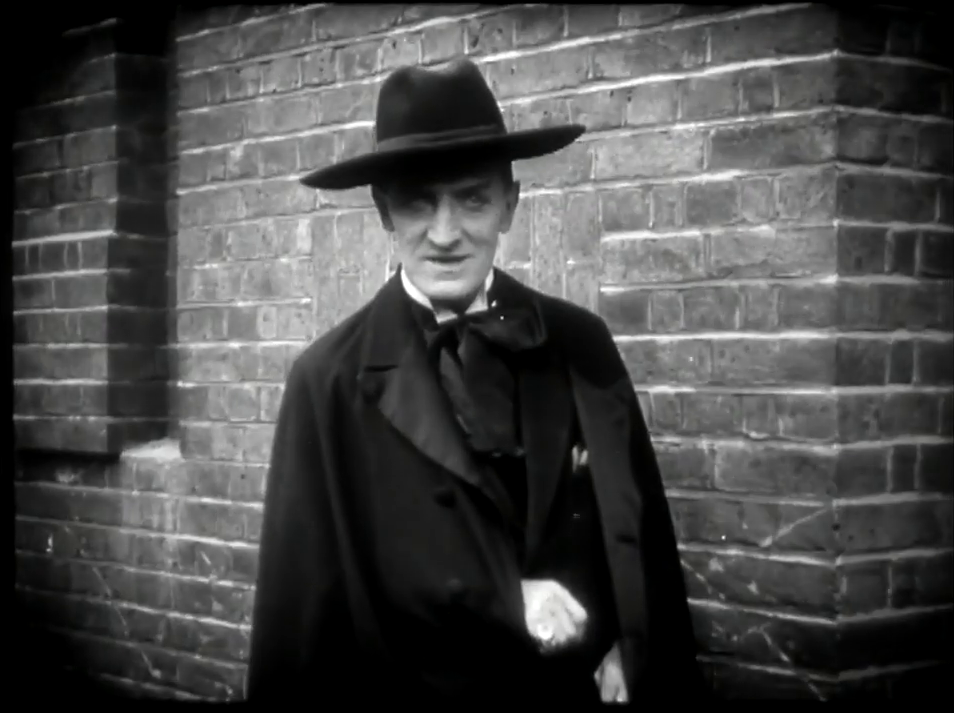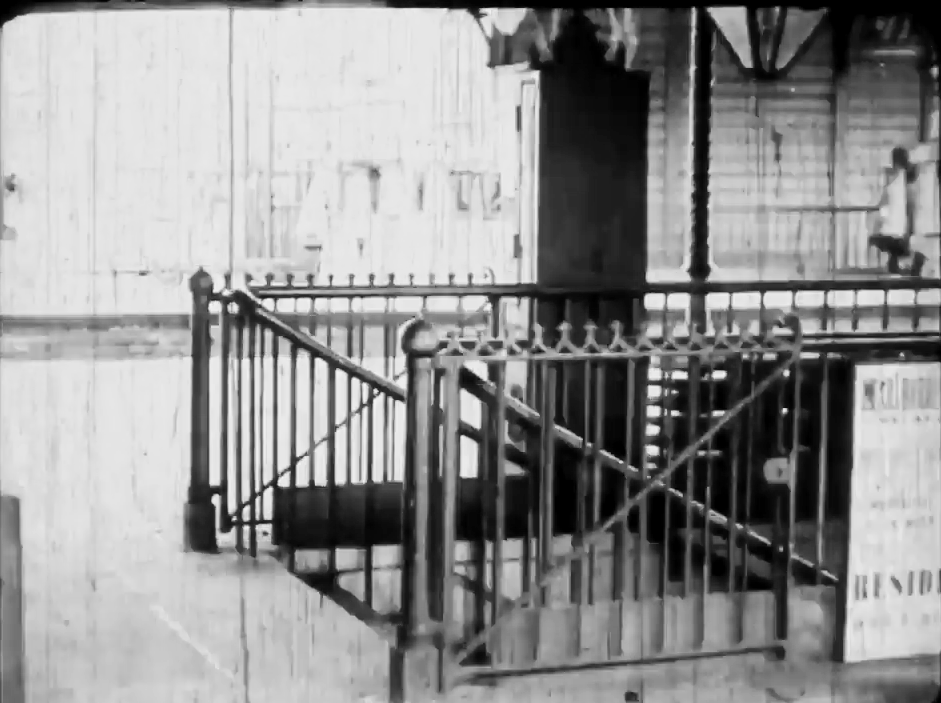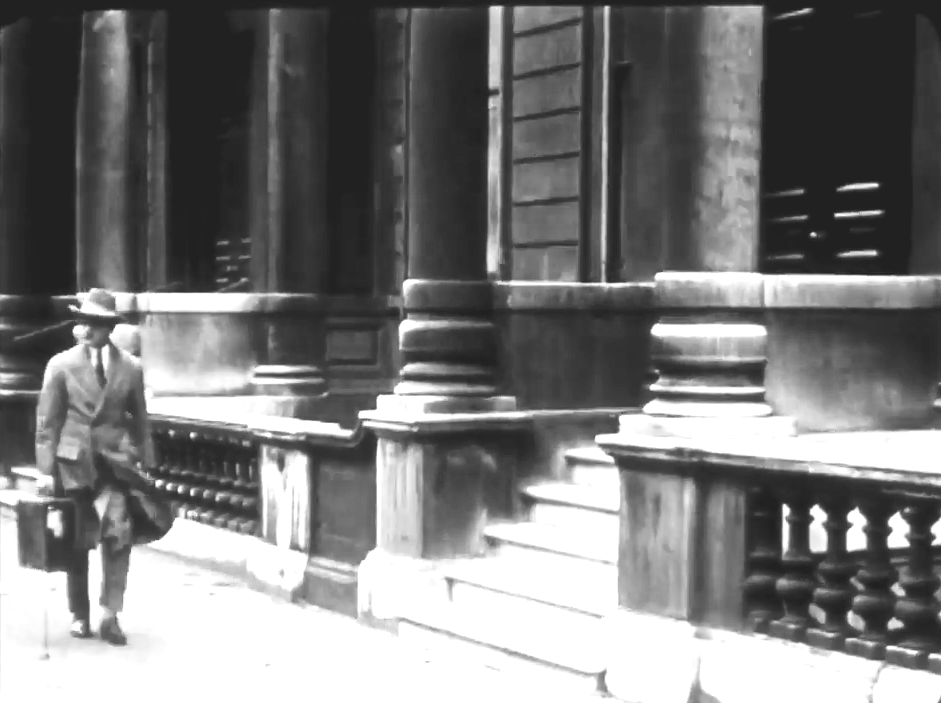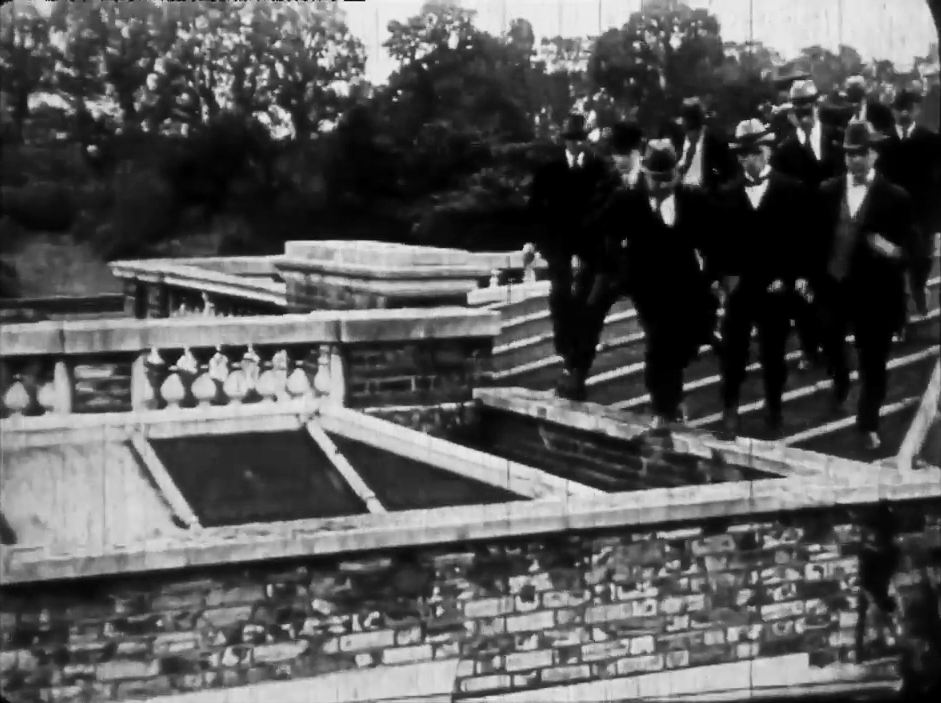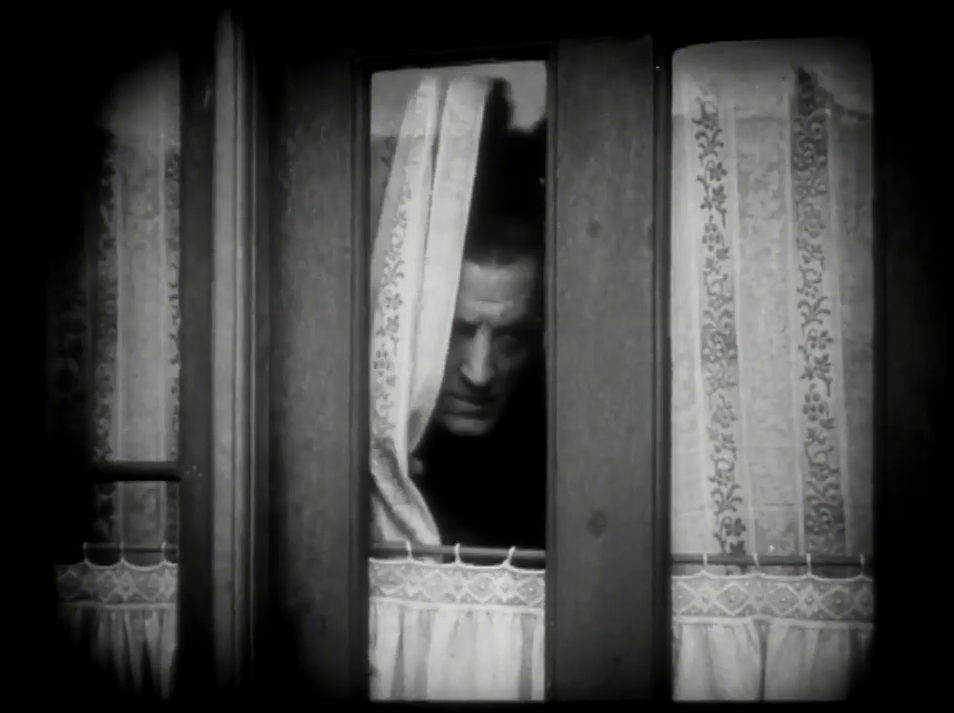the Mystery of Dr Fu Manchu's locations
This is mainly a set of notes on the locations of the surviving thirteen parts of the Stoll production The Mystery of Dr Fu Manchu, directed by A.E. Coleby between April and September 1923.
The series can be watched on the BFI Player. Episode 2, 'The West Case', is wrongly identified as episode 9, 'Aaron's Rod', which is not on the BFI Player. According to John T. Soister (Up From the Vault, 2010) the BFI does have half of the 'Aaron's Rod' episode, so perhaps at least that will eventually be put online.
N.W.2 - Cricklewood, home of Stoll Studios
Dr Petrie lives on Melrose Avenue, N.W.2, a location that recurs in episodes 3, 5, 7, 8 and 10 of the series:
A clue to the location was happily provided by a close-up showing the number on the door:
Melrose Avenue is a few streets away from the Stoll studios on Temple Road:
It is unsurprising to find locations in the vicinity of the studio. The home of Cadby in 'The Clue of the Pigtail' (ep.3), is similar to many houses in the streets around the studio, and though I cannot make a definite identification I think this is a house on Ivy Road, N.W.2, one of numbers 71, 75 or 79:
The countershot purporting to show the other side of the street to Cadby's house doesn't match the other side of this part of Ivy Road, but the scene could easily be a confection of two locations. These houses look like they are around here somewhere, but I haven't yet found an exact match:
In 'The Call of Siva' (ep.4), Smith and Petrie are rushing back to London by a train that gets in at 11.58pm. It is implied that the clock we see is at Waterloo Station, though actually it is much nearer home, on the corner of Cricklewood Broadway and Anson Road:
(The clock is no longer there.)
The series returns to Cricklewood Broadway in 'The Queen of Hearts' (ep.12). Petrie leaves his hotel overlooking Leicester Square and is seen shortly after walking past a post office. He recognises Zarmi, an associate of Fu Manchu, as she comes out of a furrier's shop and gets into a taxi:
The series returns to Cricklewood Broadway in 'The Queen of Hearts' (ep.12). Petrie leaves his hotel overlooking Leicester Square and is seen shortly after walking past a post office. He recognises Zarmi, an associate of Fu Manchu, as she comes out of a furrier's shop and gets into a taxi:
Petrie follows her in another taxi, and there is a point-of view shot of him in pursuit that looks like they are on the continuation of Cricklewood Broadway, toward's Shooters Hill, but I haven't been able to confirm this:
The taxis stop on a busy road next to train lines, and the pursuit continues into the countryside. There are railway lines and rural spaces in the Cricklewood area, so they needn't have gone very far:
On two occasions, in 'The Silver Buddha' (ep.13) and 'The Shrine of the Seven Lamps' (ep.15), police raids are prepared in what are understood to be the precincts of Scotland Yard:
In fact this is a yard behind the Cricklewood Hotel (now the Shisha Garden Grill) on the corner of Mora Road and Cricklewood Broadway, N.W.2, a few yards from the Stoll Studios on Temple Road:
Scotland Yard
Inspector Weymouth is based at Scotland Yard, and though what we mostly see of it are studio-made interiors, there is a brief view of the Victoria Embankment entrance in 'The West Case' (ep.2) and, below, a longer view in 'The Cry of the Nighthawk' (ep.8):
Another Isleworth location appears in 'The Man With the Limp' (ep.11). The sequence is supposed to represent a raid on a Joy Shop in Shadwell, i.e. 'a resort of shady characters, mostly Asiatics. [...] It's a gambling house, an unlicensed drinking-shop, and even worse', according to Sax Rohmer's original novel.
These views from the river show All Saints church in Isleworth and the Richmond Lock Bridge:
These views from the river show All Saints church in Isleworth and the Richmond Lock Bridge:
|
In the background of this view (right) is the silo of Manor Mill at Isleworth. The photograph, dated 1919, is from the Mills Archive, a wonderfully rich source of information and images.
The action takes place on the Thames by Isleworth Ait, here in photographs from 1928 and 1935, at Britain from Above, another wonderful resource: |
Episode 6, 'The Fungi Cellars', also has a riverside setting, understood to be in the East End of London. The buildings are similar to those used at Isleworth:
But the views of the river are clearly not Isleworth. These could be anywhere from Woolwich down towards the sea at Tilbury and Gravesend:
In 'The Call of Siva' (ep.4), Smith and Petrie are kidnapped by Fu Manchu's men and taken to his hideout. No location is specified but when they escape, with Karamaneh's help, it is by rowing boat from a riverside building similar to those in 'The Man With the Limp' and 'The Fungi Cellars':
Karamaneh has blindfolded them so that they can't know where the hideout is, and she rows them to a place up the river where she deposits them on the shore, still blindfolded. That place must be a considerable distance away from London, since when they remove their blindfolds at 10.30p.m. they have to rush to catch the last train to Waterloo, which gets them there at two minutes before midnight.
Kanameneh has in fact rowed them from Fu Manchu's hideout somewhere in the East of London, all the way to Eton, opposite Windsor:
Kanameneh has in fact rowed them from Fu Manchu's hideout somewhere in the East of London, all the way to Eton, opposite Windsor:
There is one other Thames-side scene, when in 'The West Case' (ep.2) Smith and Petrie rush to Tilbury to catch someone aboard the Lady Wimborne, a ship about to sail:
The Lady Wimborne was a coastal passenger steamer of the British and Irish Steam Packet Company, going from London to Dublin via Southampton, Torquay and Falmouth. I haven't found out yet where exactly was the ship's departure point, so I don't know if this is actually Tilbury.
the real East End
In 'The Miracle' (ep.5), a title announces 'A squalid by-way in the East End of London':
A taxi deposits Petrie and Karamaneh at Southwark Bridge, south side, near an entrance to Grey and Marten's City Lead Works. Southwark is not technically the East End.
The second time the series goes to the River Police station ('The Sacred Order', ep.14), the story takes Dr Petrie straightway to where he suspects he will find Fu Manchu. This is definitely an authentic East End location:
The cab deposits him on Three Mills Bridge, E.3, and he goes on to explore the mills at Bromley-by-Bow. These are still extant, are as the gasometers beyond:
For more images of the Three Mills at Bromley-by-Bow, see the Mills Archive.
These views, from 'The West Case' (ep.2) and 'The Sacred Order' (ep.14), look to me like studio-confected representations of the East End:
country houses
'The Gables' ('The Fiery Hand', ep.10) is a supposedly haunted house, 'somewhere in London', suspected of being Fu Manchu's hideout:
This is a Thames-side country house known as Sunbury Park, built in the 1850s and demolished in the 1950s:
This was not the first time Sunbury Park was used as a film location. Sunbury is across the river from Walton-on-Thames and in 1911 we see the house in the Hepworth company's Tilly in a Boarding House:
In 'The Miracle' (ep.5), Smith and Petrie go to Stradwick Hall, Lord Southery's country seat. I haven't found where is or was this house:
railways and railway stations
The train journey to Stradwick Hall in 'The Miracle' (ep.5) is represented by a speeding locomotive, the inside of a real railway carriage and an arrival at a real railway station:
None of these tells me what the actual destination is. The railway lines and the locomotive, as well as the station, would probably be recognised by rail enthusiasts, and I hope to consult an expert shortly.
There are two other rail journeys in the series. In 'The Call of Siva' (ep.4) Smith and Petrie rush back to London via an unspecified station that narrative logic says is Windsor and Eton Riverside:
They arrive at an immediately recognisable Waterloo Station:
The last train journey is in the fifteenth and last episode, 'The Shrine of the Seven Lamps'. Petrie is summoned back to London from an unspecified location:
The print of this last episode is not in good condition and it has been heavily tinted (I have taken off the livid green shade), so that any details to help identification are harder to decipher. On the station platform is a poster with a word beginning 'Marlbor...' at the top, and a word beginning 'Resid...' near the bottom, and in the middle a reference to a 'Mr Willia...'. I have made nothing of these clues so far. The antimacassar behind Petrie's head bears the letters 'LNWR', for the London and North Western Railway, which makes sense given that the train arrives at Euston, the company's terminus:
hotels
Various hotels serve as locations in the series, not all of them easy to identify.
The easiest, from 'The Knocking On the Door' (ep.7), is the National Hotel, Bedford Way, W.C.1:
The easiest, from 'The Knocking On the Door' (ep.7), is the National Hotel, Bedford Way, W.C.1:
In 'The Sacred Order' (ep.14), Petrie emerges from a hotel on Arundel Street, W.C.2:
Here is the same location from the 'London Off the Track' episode of the 1924 series Wonderful London, by Harry B. Parkinson and Frank Miller:
|
It looks like 'The Call of Siva' is trying to establish topographical coherence, since Essex Street could well be on the way to the Hotel Cecil, depending on where the restaurant is that they have come from (right).
However, before they met the boy they were at the top of those stairs, and from there the only way to get to the Hotel Cecil would be down the stairs, along Milford Lane to Temple Place and then to the hotel via the Victoria Embankment, so they were going that way anyway, and didn't need tricking into going down the stairs. |
After they escape they rush to the Hotel Cecil to prevent Guthrie being killed at half-past-midnight. Most of the action is in studio-made interiors, until a villain on the hotel roof is shot and falls to the ground, all the while observed by Fu Manchu who is standing next to Cleopatra's Needle:
That Fu Manchu is on the Victoria Embankment opposite the Hotel Cecil establishes enough topographical coherence for us to ignore the unlikelihood that the window from which Smith shoots the henchman is actually a window of the hotel it is supposed to be. The building from which he falls is substantial enough to pass for the Hotel Cecil, but is clearly some other building, as yet unidentified.
(For the history of the Hotel Cecil see Dave Hill's excellent Stories of London, here.)
In 'The Man With the Limp' (ep.11), Nayland Smith is staying at the 'New Louvre Hotel', a fictional name from Sax Rohmer's novel. Nothing in the film indicates what building is shown here:
In 'The Queen of Hearts' (ep.12), Petrie is staying at an unspecified hotel, of which we see only his room and the foyer. The foyer looks like it might be a real place, not a studio construction. From his room he looks out of the window and his view is of Leicester Square, looking east past the Empire Theatre and towards the Hippodrome:
If we count the two views of Scotland Yard's entrance, the Essex Street stairs, Cleopatra's Needle and the views of Arundel Street and Norfolk Street, this series uses the Victoria Embankment area at least six times. It's almost as if someone involved with the production was based in the area.
Museum Street, W.C.1
In 'The Silver Buddha' (ep.13), Smith and Petrie turn into Great Russell Street from Bloomsbury and part ways in front of the British Museum. Petrie continues on down Museum Street, where his attention is drawn by a shop selling antiques and curiosities:
This wonderfully distinctive shopfront was not on Museum Street, but I doubt I'll discover where it was.
Oxford Street, W.1
That shop is a front for Fu Manchu's lair. Petrie is captured but manages to escape by jumping from a window and catching hold of a chain swinging from a crane. In what is a spectacular stunt, he (not the actor Humberston Wright, surely, but a stuntman) exchanges gunfire with his captors while holding on to the chain with one hand, and is eventually deposited by the crane in front of a modest-looking shop called 'Selfridge & Co. Ltd':
|
For quite a while I was perplexed by this last view. The Selfridges that opened at 400 Oxford Street in 1909 (see right) did not look a bit like the above, and as far as I could see there were in 1923 no branches elsewhere in London. The answer came when I saw on the Historic England site this photograph, from May 1923: |
|
It documents the construction work on the extension of Selfridges and shows cranes in use exactly like the one by which Petrie escapes, so it is clear that the sequence was filmed on Oxford Street while the work was in progress. Across the street, at no. 421, are the 'Selfridges Provision Depts', and though this isn't the building in front of which Petrie is deposited, it does tell me that the department store wasn't confined to its initial terrain on the north side of Oxford Street. Perhaps what we see in the film are premises taken on temporarily during the disruption cause by the building works.
|
In 'The Queen of Hearts' (ep.12) Smith and Weymouth walk past Stewart's restaurant, at the corner of Oxford Street and Park Lane, and later in the same episode they are on the corner of Regent Street and Great Castle Street (next to Topshop), with Oxford Circus in the background:
Harley Street, W.1
The building at 105 Harley Street visited in 'The Queen of Hearts' (ep.12) has been replaced:
Madame Tussaud's, Marylebone Road, N.W.1
'The Knocking On the Door' (ep.7). The interior scenes look like they were filmed in the actual waxwork exhibition:
tourist sites
As well as Mme Tussaud's and Cleopatra's Needle (in 'The Call of Siva', ep.4) and the British Museum in 'The Silver Buddha' (ep.13), there are brief views of three other famous London landmarks:
the countryside
I have little hope of identifying the locations of the series' four rural excursions. The country house in 'The Miracle', already discussed, may turn up, but these views, from 'The Queen of Hearts' (ep.12), 'The Knocking On the Door' (ep.7) and 'The Cry of the Nighthawk' (ep.8), respectively, are beyond me:
Although, as I suggested earlier, I do suspect that these bits of countryside are all somewhere near Cricklewood. The countryside in 'The Cry of the Nighthawk' is supposed to be immediately behind Petrie's house in Melrose Avenue, N.W.2. A clue to where these views were actually filmed comes in the form of a tram that Petrie is about to board after leaving his house:
At first I thought following the route of the no.117 tram should lead me to the location. According to the Tramway Information site, where I found the postcard below, the 117 ran from Shepherd's Bush to Uxbridge: 'West of Southall, large sections of the route were originally of a rural nature.'
So I got ready to start looking between Southall and Uxbridge. I was troubled, however, that the tram in the postcard belonged to the London United Tramways Company, but the name on the side of the tram in 'The Cry of the Nighthawk' reads Metropolitan Electric Tramways. Eventually I learnt that the number 117 is not that of a route but that of a specific tram, and concluded that tram 117 had passed from one company to the other. In this I was mistaken. Clarification came from the all-knowing John Prentice at Tramway Information: the two companies, the LUT and the MET, were both owned by the Underground Group, and each company had its own car numbered 117, both of the same type and almost identical save for the different livery. MET 117 would have been based at Finchley in 1923. MET routes went to Cricklewood, so I am back with the idea that the countryside near the tram in the film is probably in that vicinity, somewhere near the studio.
some places still to be identified
websites consulted
- BFI Screenonline
- Britain from Above
- Delcampe.net
- Disused Stations: Closed Railway Stations in the UK
- Geograph
- the Historic England Archive
- the London Picture Archive
- Lost Heritage: England's Lost Country Houses
- the Mills Archive
- the National Library of Scotland: Ordnance Survey maps
- Stories of London - the Embankment
- Tramway Information
- The Victorian Society
